

Is Croatia Expensive? Croatia Trip Cost Guide in 2024
Last Updated on December 11, 2023
by Maggie Turansky
Disclaimer: This article contains affiliate links. That means if you click a link and make a purchase, we may make a small commission. As an Amazon Associate we earn from qualifying purchases. For more information, see our privacy policy.

Croatia has become one of the most sought-after destinations in all of Europe, receiving countless tourists each year. But is Croatia expensive to visit? What would an average Croatia trip cost be?
Drawn by photos of picturesque seaside towns with crystal clear Adriatic waters, stunning natural scenery including lakes and waterfalls, or the desire to see the real-life King’s Landing, these are common questions many would-be visitors find themselves asking.
On average, you can expect your trip to Croatia to cost €55-275 per day (about $59-296 USD per day) if visiting the country on a budget but are still wanting to enjoy the occasional splurge.
However, this travel budget can vary significantly depending on your spending habits. Keep reading to understand how this average cost breaks down across accommodation, transport, food, entertainment and activities.
So is it expensive to travel to Croatia? If you’re comparing it to the cost of other Balkan countries , then yes. However, it is still possible to travel in Croatia while maintaining a tight budget.
Table of Contents
Croatia Trip Cost Guide
If you’re planning on visiting Croatia on a small budget, it is best to keep in mind that a vast majority of the coastal cities see quite a lot of tourists and it is time to shed the misconception that it will be a cheap, off-the-beaten-path destination.
However, if you are smart about where and how you spend your money, travel outside of the peak months of July and August, and try to head to smaller cities and towns rather than the popular tourist destinations in Croatia such as Dubrovnik and Split , then you don’t have to spend a lot to greatly enjoy your time in this beautiful country.
As of 1 January 2023, the currency in Croatia is the Euro, in which all prices here are listed. To see the current exchange rates to your home currency, look at xe.com
Accommodation Prices
The first aspect of your budget that needs to be considered are accommodation costs as this is likely to take up the largest percentage of your overall Croatia trip cost.
Because the country is so popular among tourists, there are numerous accommodation options in virtually every Croatian town and city. These range from high-end resorts to quaint country B&Bs to a dorm bed in a backpacker hostel and all come with a different price tag.
Generally, we recommend against staying in all-inclusive resorts as, while they might seem like a good value for money, they offer very little exposure to the culture, cuisine, and people of the country you are visiting and Croatia is no different.

Therefore, if it is a hotel you are after, we recommend finding a small, locally run hotel to rest your head instead.
Not only will they invariably be cheaper and allow more room in your Croatia travel budget for other activities, but you also get the added benefit of supporting a small local business and have a better chance of experiencing a different culture.
A room in a budget to mid-range hotel will probably set you back an average of €60 – 90 per night, depending on the city you are visiting.
If you’re looking for a luxury option during your time in Croatia, then plan to pay €150-300 per night depending on the season and where the hotel is located.
Another fantastic option if you want to save money while travelling in Croatia without forgoing privacy is to get a private room through Airbnb. Again, Croatia prices vary depending on which city you are visiting, however, you can expect to pay roughly €40-50 per night, which can save you a lot of money, particularly if you’re splitting the costs between two people.
A one-bedroom apartment on Airbnb or Booking.com will land closer to €60-100 per night, again, depending on the season and location of the property. In general, expect prices to increase in the high season, especially during the months of July and August.
If you’re on a tight budget and want to pinch pennies wherever you can, then you will be happy to know that there is a large array of hostels to choose from. There is usually at least one hostel in every major city with numerous options in tourist hotspots like Dubrovnik or Split and the bustling and edgy capital of Zagreb .
Again, depending on the city you are visiting ( Dubrovnik tends to be significantly more expensive than other cities in the country and can skew price averages), a dorm bed at a Croatian hostel will cost about €20-30 depending on how many beds are in the room and where it is located.

Transportation Prices
The second biggest aspect of your total Croatia travel budget you need to consider is the cost of transportation. It is unlikely that you will only visit one destination while in Croatia (though Zagreb makes a fantastic city break destination!) and, unless you plan on hitchhiking everywhere, you’re going to have to pay to get there.
Luckily, public transport prices in Croatia still remain relatively affordable. It is worth knowing that there isn’t a large train network in Croatia and therefore the most efficient inter-city transport (and often the only) that exists is the bus. Buses in Croatia are generally nice and comfortable and if they do not have toilets in them, they do make stops on longer journeys.
The cost of travelling between cities can vary depending upon the length of the journey, but it is safe to assume to spend about €15 – 20 per journey. If you have luggage that needs to go in the hold, be aware that there is usually a charge to do this — normally €1 – 2 paid directly to the driver.
It can sometimes be cheaper to book your bus tickets online in advance, but this varies depending on the city and region. If you’re curious, a quick Google search can answer most questions.
If you’re visiting any of the islands, then ferry tickets are also something to keep in mind in regards to costs in Croatia. Prices can vary drastically depending on the distance you are travelling, the type of boat you are taking and whether or not you’re including a car.

Another popular option for getting around Croatia is to rent a car. While this isn’t entirely necessary, having your own vehicle can give you the flexibility to visit more off-the-beaten-path areas of the country that might have fewer bus connections.
It also is a bit easier to have a car if you’re interested in taking some day trips without having to be at the mercy of erratic bus timetables and aren’t keen to join an organised tour.
As with virtually everywhere in Europe, it is significantly cheaper to hire a manual transmission rather than an automatic. Car hire prices can differ depending on the company you’re renting from (we recommend checking out Rentalcars.com to compare prices!), but you can expect them to start at about €25 – 30 per day and increase from there.
If there are some areas you want to visit that would be easier to get to with a car but you still want to save some money, it is worth considering just renting a car for a day or two. That will help you cut down on your total Croatia tourism cost.

Food Prices
Croatian food doesn’t get the international recognition it so badly deserves but you’re definitely going to want to sample some of it while visiting this beautiful country. But what is the cost of eating out in Croatia?
In general, the cost of food and drink is one area that increased the most since the Croatia currency changed to the Euro at the beginning of 2023, however, it doesn’t have to be overly expensive.
While it is totally possible to eat on the cheap in Croatia, it is also equally possible to splash out the cash on a high-end dining experience. With both ends of the dining spectrum available for tourists in Croatia, it can be difficult to figure out how much to budget for food while visiting.
If you want to save money but still want a good, authentic restaurant meal from time to time, eating out can be affordable in Croatia. The biggest thing you can do for your budget (and your taste buds, honestly) when dining out in Croatia is to avoid tourist-centric restaurants like the plague.
This means avoiding eating in the old towns of the cities where you are staying or walking at least a kilometre away from the main attractions in order to find a decent place to eat. You will be surprised at how much prices can change when the menu isn’t catered toward tourists.
If you follow this advice, it is likely that the cost of a main meal in Croatia won’t be more than €15-20 per person. If you want to cut costs even more, try to stay at a place that has access to a kitchen and cook yourself your own meals and only occasionally go out to eat.
If you like eating dinner out most nights, you can also save yourself some money by making breakfast and lunch for yourself — or choose to stay at a place that provides breakfast in the nightly rate!

Activity Prices
Now that we’ve covered the costs for the three main aspects of your Croatia that you are definitely going to need to spend money one, let’s cover the cost of the activities you are actually going to do there.
You don’t have to spend a lot of money on day-to-day activities in Croatia — for instance, exploring an Old Town or spending the day swimming at the beach are all completely free activities.
However, if you want to go on a boat trip or visit a museum or historical site here and there, you’re going to have to fork over some of your hard-earned cash.

Museum entry varies from place to place, but you can expect to pay about €5 to enter most museums. If you are a student, senior, or under the age of 26, make sure to see if there is a discount available because, more often than not, there is and it can save you a lot of money.
If you want to go on a day tour or boat trip somewhere, as is popular in Croatia, these aren’t always cheap experiences. If you’re keen to go on a full- or half-day cruise for some swimming and snorkelling , expect to pay roughly €50-100 per person for this depending on what is offered. Often the full-day cruises do include lunch which is an added bonus.
Day tours to places like Krka National Park from Split may cost a little less, while if you’re going further to places like Plitvice Lakes National Park expect to pay more.
If you plan to do one or two of these tours while on your trip, your daily activity cost need not be more than about €20 per person per day, but your costs will obviously add up when you plan to do more tours such as these.
If you want to visit places such as wineries or olive oil manufacturers, it will be significantly cheaper for you to do this independently rather than going on an organised tour. Oftentimes, wineries will even give you a free tasting provided you buy some wine from them and the same goes for olive oil.

Entertainment Prices
The last thing you need to consider when calculating your total trip cost is the price of entertainment. There are certain places in Croatia (Split, Zagreb, and Hvar spring to mind) that are famous for their nightlife and it would be a shame not to go and experience it for yourself, wouldn’t it?
Even if going out and clubbing isn’t really your cup of tea and you would prefer to sit at a seaside bar while sipping a delicious Istrian wine, these things are still going to cost you. The good news, however, is that it doesn’t have to be much.

Booze prices in Croatia aren’t actually that expensive and you are more likely paying more for the location you are drinking in rather than for the drink itself.
For instance, the same glass of wine at a bar directly on the water in Rovinj will cost you almost 15-20% than it would even a few hundred metres away from the sea. If you are on a tight budget but still want to enjoy the occasional pre-dinner cocktail, then this is something to keep in mind.
It is also always cheaper to drink local rather than imported. A glass of Croatian wine (which is fantastic, by the way) will set you back an average of about €2.50-5 whereas an imported wine can be more than double that. The same pricing scale applies for local vs imported beer.
If you are after a cocktail, that is going to get a little bit more expensive and some places you will pay prices akin to what you might pay in Northern Europe. On average, a basic cocktail such as an Aperol spritz at a bar will set you about €7-10 depending on where you’re drinking.

Is Croatia Expensive? Average Croatia Travel Cost
Croatia is definitely more expensive than some of its neighbouring countries, however, it doesn’t have to be a place that will make you file for bankruptcy just for visiting.
If you’re smart about where you spend your money, avoid tourist traps, and only travel between cities every 3-4 days or so, you can easily manage to visit Croatia on a budget.
To help you better plan, here is an average of what you should expect to spend in Croatia per person per day, assuming costs like accommodation are split between two people.
Accommodation: €20-150 / day
Transportation: €5-30 / day
Food: €20-50 / day
Activities: €5-25 / day
Entertainment: €5-20 / day
All in all, you can easily visit Croatia with a budget of about €55-275 per day if you find some ways to cut costs on some days.
Make sure you also factor in the cost of a travel insurance policy from a provider like Heymondo which offers flexible insurance policies.

Croatia isn’t the super budget destination it once was, however, that doesn’t mean a trip to this beautiful country has to be overly expensive. Your total Croatia trip cost really depends on where and how you choose to spend your money, but it is a destination that is still accessible for both budget and luxury travellers alike.
Are you planning to travel to Croatia? Have any questions about the prices? Let us know in the comments!

Related Posts:
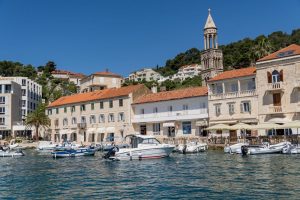
The Perfect Hvar Day Trip from Split

Zadar or Split: Which Croatian City to Visit?

10 Tips for Planning a Trip to Croatia

About Maggie Turansky
Maggie is a co-founder and writer for The World Was Here First. Originally from the US, she has lived in five different countries and has travelled to dozens more, both solo and with her partner, Michael. She particularly loves exploring Spain and spending time in the Caucasus and the Baltics. Read more about Maggie
Maggie I’m trying to surprise my wife and plan a trip to Croatia and want to do on budget. I love outdoors and want to visit national parks, seashore and small villages. several questions: 1. should I rent car for travel, 2 do national parks have accommodations to rent. 3. any suggestions on small quaint villages. 4. are hostels good option. 5. can you get around well using bus system. 6. what about camping?
I’m coming for 10-14 days. any suggestions would be greatly appreciated.
Hi Matt – you may find our Croatia itinerary helpful when planning your trip: https://www.theworldwasherefirst.com/perfect-croatia-itinerary/
Super helpful article, thank you. I’m trying to work out costs for a party of three adults (two parents and an 18-y-old son), and am working on your daily cost range. That wouldn’t necessarily triple for three people, would it? For example, with accommodation, do you pay per head or per room?
Happy you found the article helpful. The prices listed above are assuming costs are split between two people, so if calculating a per-person cost and you have 3 people, they will likely be lower (especially when factoring in accommodation or transportation). Hotels are typically charged per room but it’s always a good idea to verify that with the specific place you’re booking 🙂
What is the best currency to take to Croatia
Hi Sue – Croatia uses the Croatian Kuna as of right now, but it is set to adopt the Euro in 2023. ATMs are also prevalent so it is probably best to plan to withdraw local currency while there rather than relying on exchange offices and travelling with lots of cash.
Just returned from Cavtat. Great fresh seafood, clean air, and water, healing environment Highly recommended,
I agree the local white wines were incredible. We even visited the winery north of Split where Anthony Bourdain over sampled and fell off his chair! Only glitch was on arrival at Split harbor the bus driver pointed us to the car ferry and we had to sprint almost a mile to the passenger catamaran to the islands- even owned by the same company it took awhile to find te correct departure.
Sounds like you had a great trip, Greg! Thanks for your comment 🙂
What a fabulous article, thank you! I’m feeling much more prepared for our vacation now. Can you please let us know what type of shops we go to, to purchase bottles/boxes of wine and bottles of scotch? We live in Canada, and can only purchase from government regulated liquor shops. Thank you so much!
Hi Elizabeth, if you want to get the best prices on something like scotch in Croatia, I would honestly recommend browsing the duty free shops at the airport before you fly back to Canada. That’s where you will get the best deals.
Aside this – Unlike in Canada or Northern Europe every supermarket (Plodine, Konzum, Spar…) has a big alcohol selection here.
Hello Maggie. I will be traveling on april to europe and i want to go to croatia. But i just gonna have like 4 days or 3 to go. It´s worth it? Because i want to go to some other place like budapest. What do you recommend to me?
Hi Nayoli, if you just choose one city in Croatia and then explore a bit from there, I think that only 3 or 4 days should be fine so long as you don’t try to pack too much in!
Great pre travel information. I am planning to visit Croatia and am feeling more comfortable with the information provided.
Glad we could help, Dushyant! Hope you have a great trip to Croatia 🙂
Are you able to draw a plan for our first visit in Croatia.
Hi Sarah, we’ve written a detailed Croatia itinerary with a number of different routes to choose from here: https://www.theworldwasherefirst.com/perfect-croatia-itinerary/
I just came from Croatia. I spent most of my time in the coastal region. This article is pretty accurate on pricing. But what a gorgeous place. Well worth to travel there. Capital Zagreb is amazing. Too many things to see.
Thanks for your comment, Brian! Glad you had a great time in Croatia 🙂
Leave a Comment Cancel reply
- Travel Planning Guide
Croatia Travel Budget - Visit Croatia on a Budget or Travel in Style
- Croatia Costs

- Is Croatia Expensive?
- How much does a trip to Croatia cost?
- Croatia Travel Tips: What to know before visiting Croatia
- Plitvice Lakes National Park
- Croatia Hotel Prices
- Croatia Cities: Hotel Prices by City
- Best Party Hotels in Croatia
- Best Hotels for One Week in Croatia
- Best Adults Only Hotels in Croatia
- Best Family-Friendly Hotels in Croatia
- Best Business Hotels in Croatia
- Best Hotels for a Weekend Getaway in Croatia
- Best Romantic Hotels for Couples in Croatia
- Best Hotels for First Time Visitors in Croatia
- Best Hotels for One Night in Croatia
- Best Pet-Friendly Hotels in Croatia
- Best Hotels for Scuba Diving in Croatia
- Best Hotels for Skiing in Croatia
- Best Beach Hotels in Croatia
- Best Cheap Hotels in Croatia
- Best Luxury Hotels in Croatia
- Hostel Prices & Reviews
- Croatia Tour Prices
- The Best Family-Friendly Tours to Croatia
- The Best Historical Tours in Croatia
- The Best 10-Day Tours in Croatia
- The Best One Week (7-Day) Tours in Croatia
- The Best Bicycle Tours in Croatia
- The Best Christmas & New Years Tours in Croatia
- The Best Coach Bus Tours in Croatia
- The Best Adventure Tours to Croatia
- The Best Eco Tours in Croatia
- The Best Sightseeing Tours in Croatia
- The Best Cultural Tours in Croatia
- The Best Romantic Tours for Couples in Croatia
- The Best Self Drive Tours in Croatia
- The Best Honeymoon Tours in Croatia
- The Best Tours Under $1000 in Croatia
- The Best Luxury Tours to Croatia
- The Best Budget Tours to Croatia
- The Best Tours for Seniors to Croatia
- The Best G Adventures Tours to Croatia
- How much does it cost to travel to Croatia? (Average Daily Cost)
- Croatia trip costs: one week, two weeks, one month
How much do package tours cost in Croatia?
Is croatia expensive to visit.
- How much do I need for a trip to Croatia?
- Accommodation, Food, Entertainment, and Transportation Costs
- Travel Guide
How much does it cost to travel to Croatia?
You should plan to spend around $104 (€96) per day on your vacation in Croatia. This is the average daily price based on the expenses of other visitors.
Past travelers have spent, on average for one day:
- $32 (€29) on meals
- $13 (€12) on local transportation
- $107 (€98) on hotels
A one week trip to Croatia for two people costs, on average, $1,463 (€1,340) . This includes accommodation, food, local transportation, and sightseeing.
All of these average travel prices have been collected from other travelers to help you plan your own travel budget.
- Travel Style: All Budget (Cheap) Mid-Range Luxury (High-End)
- Average Daily Cost Per person, per day $ 104 € 96
- One Week Per person $ 731 € 670
- 2 Weeks Per person $ 1,463 € 1,340
- One Month Per person $ 3,134 € 2,872
- One Week For a couple $ 1,463 € 1,340
- 2 Weeks For a couple $ 2,925 € 2,680
- One Month For a couple $ 6,268 € 5,743
How much does a one week, two week, or one month trip to Croatia cost?
A one week trip to Croatia usually costs around $731 (€670) for one person and $1,463 (€1,340) for two people. This includes accommodation, food, local transportation, and sightseeing.
A two week trip to Croatia on average costs around $1,463 (€1,340) for one person and $2,925 (€2,680) for two people. This cost includes accommodation, food, local transportation, and sightseeing.
Please note, prices can vary based on your travel style, speed, and other variables. If you're traveling as a family of three or four people, the price per person often goes down because kid's tickets are cheaper and hotel rooms can be shared. If you travel slower over a longer period of time then your daily budget will also go down. Two people traveling together for one month in Croatia will often have a lower daily budget per person than one person traveling alone for one week.
A one month trip to Croatia on average costs around $3,134 (€2,872) for one person and $6,268 (€5,743) for two people. The more places you visit, the higher the daily price will become due to increased transportation costs.
Organized tours are usually more expensive than independent travel, but offer convenience and peace of mind that your trip has been planned by a travel expert.
The average price for an organized tour package in Croatia is $234 per day. While every tour varies by total price, length, number of destinations, and quality, this is the daily average price based on our analysis of available guided tours.
- Bike Cruise Split South Premium 8 Days - 14 Destinations $ 794
- A Taste of Croatia with Coastal Cruise 14 Days - 13 Destinations $ 5,249
Independent Travel
Traveling Independently has many benefits including affordabilty, freedom, flexibility, and the opportunity to control your own experiences.
All of the travel costs below are based on the experiences of other independent travelers.
Croatia is a moderately priced destination to visit. It's about average with most other countries for travel costs. The prices for food, accommodation, and transportation are all fairly reasonable.
Within Europe, which is known to be an expensive region, Croatia is reasonably affordable compared to the other countries. It is in the top 25% of countries in Europe for its affordability . You can find more affordable countries such as Ukraine, but there are also more expensive countries, such as Svalbard and Jan Mayen Islands.
For more details, see Is Croatia Expensive?
How much money do I need for a trip to Croatia?
The average Croatia trip cost is broken down by category here for independent travelers. All of these Croatia travel prices are calculated from the budgets of real travelers.
Accommodation Budget in Croatia
Average daily costs.
Calculated from travelers like you
The average price paid for one person for accommodation in Croatia is $53 (€49). For two people sharing a typical double-occupancy hotel room, the average price paid for a hotel room in Croatia is $107 (€98). This cost is from the reported spending of actual travelers.
- Accommodation 1 Hotel or hostel for one person $ 53 € 49
- Accommodation 1 Typical double-occupancy room $ 107 € 98
Hotel Prices in Croatia
Looking for a hotel in Croatia? Prices vary by location, date, season, and the level of luxury. See below for options.
Find the best hotel for your travel style.
Actual Hotel Prices The average hotel room price in Croatia based on data provided by Kayak for actual hotel rooms is $80. (Prices in U.S. Dollars, before taxes & fees.)
Kayak helps you find the best prices for hotels, flights, and rental cars for destinations around the world.
Recommended Properties
- Eko house Lidija Budget Hotel - Kayak $ 132
- Hotel Mozart Opatija Luxury Hotel - Kayak $ 100
Local Transportation Budget in Croatia
The cost of a taxi ride in Croatia is significantly more than public transportation. On average, past travelers have spent $13 (€12) per person, per day, on local transportation in Croatia.
- Local Transportation 1 Taxis, local buses, subway, etc. $ 13 € 12
Recommended Services
- Porter Service, Baggage Transfer, Baggage pick up & delivery. Viator $ 17
- **Private Door to Door Airport Split Transfer up to 15 People** Viator $ 73
What did other people spend on Local Transportation?
Typical prices for Local Transportation in Croatia are listed below. These actual costs are from real travelers and can give you an idea of the Local Transportation prices in Croatia, but your costs will vary based on your travel style and the place where the purchase was made.
- Bus Around Town € 1.43
Food Budget in Croatia
While meal prices in Croatia can vary, the average cost of food in Croatia is $32 (€29) per day. Based on the spending habits of previous travelers, when dining out an average meal in Croatia should cost around $13 (€12) per person. Breakfast prices are usually a little cheaper than lunch or dinner. The price of food in sit-down restaurants in Croatia is often higher than fast food prices or street food prices.
- Food 2 Meals for one day $ 32 € 29
Recommended
- Culinary Experience – Cooking Class & Walking Tour Split Viator $ 259
- Zagreb Walking Food Tour - Sightseeing - Dolac market visit Viator $ 140
What did other people spend on Food?
Typical prices for Food in Croatia are listed below. These actual costs are from real travelers and can give you an idea of the Food prices in Croatia, but your costs will vary based on your travel style and the place where the purchase was made.
- Seafood Dinner (for 2) € 29
Entertainment Budget in Croatia
Entertainment and activities in Croatia typically cost an average of $14 (€13) per person, per day based on the spending of previous travelers. This includes fees paid for admission tickets to museums and attractions, day tours, and other sightseeing expenses.
- Entertainment 1 Entrance tickets, shows, etc. $ 14 € 13
Recommended Activities
- Split Walking Tour with Professor of History Viator $ 17
- Private Walks & Storytelling - the best small group tour in Split Viator $ 174
What did other people spend on Entertainment?
Typical prices for Entertainment in Croatia are listed below. These actual costs are from real travelers and can give you an idea of the Entertainment prices in Croatia, but your costs will vary based on your travel style and the place where the purchase was made.
- Dubrovnik Cable Car (for 2) € 45
- Dubrovnik City Wall Tour (for 2) € 53
- Boat to Lokrum Island (for 2) € 13
Tips and Handouts Budget in Croatia
The average cost for Tips and Handouts in Croatia is $0.74 (€0.68) per day. The usual amount for a tip in Croatia is 5% - 15% .
- Tips and Handouts 1 For guides or service providers $ 0.74 € 0.68
Alcohol Budget in Croatia
The average person spends about $12 (€11) on alcoholic beverages in Croatia per day. The more you spend on alcohol, the more fun you might be having despite your higher budget.
- Alcohol 2 Drinks for one day $ 12 € 11
- Sunset and Wine / Dubrovnik Sunset Tour and Premium Wine Tasting Viator $ 50
- Korcula Bike & Wine Tour Viator $ 115
Water Budget in Croatia
On average, people spend $1.92 (€1.76) on bottled water in Croatia per day. The public water in Croatia is considered safe to drink.
- Water 2 Bottled water for one day $ 1.92 € 1.76
Related Articles
Croatia on a budget.
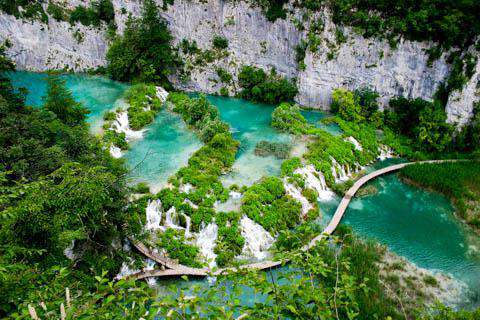
At A Glance
- If you're traveling to Croatia from elsewhere in Europe, you'll find some great discount flight options into cities like Dubrovnik. Check regional airlines to make sure you're getting the best deal. If you're traveling from a nearby country and are coming by land, then there's a great bus network that will take you to almost any city within the country. This is easily the cheapest way to travel and is generally smooth and reliable.
- If you're hoping to do a little island hoping while you're in the area, then ferries are usually the cheapest and most convenient way to get around. They can move a little slow at times, but they offer excellent views of the coast line and can make for an enjoyable trip. Jadrolinija is the largest ferry company with the greatest number of connections, but there are also international routes that are available through Blue Line International.
- Internet access is widely available throughout the country. In the larger cities there are plenty of internet cafes that offer cheap access to high speed internet. Many hotels also offer wireless internet access to their guests, sometimes for an additional fee. Inquire before you make a reservation or at the time of check in if this is something you're interested in.
- Many people choose to spend all of their time in Croatia along the coast. It's easy to see why many people are drawn to these areas, but if you're hoping to experience more of the country then head inland to see some of the more diverse natural beauty that the country has to offer. Towns and cities that are not on the coast are often cheaper as well, so you'll find you can stretch your money a little farther if you decide to diversify.
- Many people do a highlights tour of the country and visit little more than Dubrovnik and Split. If time allows, try to explore some of the less popular areas so you can get a true feel for what the country has to offer.
Top Tourist Attractions
Popular foods, more related articles.
We've been gathering travel costs from tens of thousands of actual travelers since 2010, and we use the data to calculate average daily travel costs for destinations around the world. We also systematically analyze the prices of hotels, hostels, and tours from travel providers such as Kayak, HostelWorld, TourRadar, Viator, and others. This combination of expenses from actual travelers, combined with pricing data from major travel companies, gives us a uniqe insight into the overall cost of travel for thousands of cities in countries around the world. You can see more here: How it Works .
Subscribe to our Newsletter
By signing up for our email newsletter, you will receive occasional updates from us with sales and discounts from major travel companies , plus tips and advice from experienced budget travelers!

Search for Travel Costs
Some of the links on this website are sponsored or affiliate links which help to financially support this site. By clicking the link and making a purchase, we may receive a small commission, but this does not affect the price of your purchase.
Travel Cost Data
You are welcome to reference or display our travel costs on your website as long as you provide a link back to this page .
A Simple Link
For a basic link, you can copy and paste the HTML link code or this page's address.
Travel Cost Widget
To display all of the data, copy and paste the code below to display our travel cost widget . Make sure that you keep the link back to our website intact.
- Privacy / Terms of Use
- Activities, Day Trips, Things To Do, and Excursions

T his post may contain affiliate links, which means I may receive a commission, at no extra cost to you, if you make a purchase through a link. Please see my full disclosure for further information.
Is Croatia Expensive to Visit in 2024? (Local’s Guide)
Wondering is Croatia expensive to visit? You’ve just landed on the ultimate guide to Croatia travel costs.
I’ve been living in Croatia full time since 2014 , traveling up and down the country extensively and have gotten to know the prices in each region pretty well.
Plus, having welcomed friends and family from all corners of the globe, I’ve seen firsthand how different people perceive the cost of travel in Croatia . They bring a fresh perspective to my home country, showing me what might catch visitors off guard or put a smile on their faces when it comes to expenses.
In this guide, I’ll provide you with my honest and up-to-date opinion on whether or not Croatia is expensive for travelers . We’ll cover everything from the current prices of accommodation, transportation, dining, activities, and entertainment.
When I’m not exploring Croatia, I’m a world traveler at heart, always on the hunt for flight deals, comparing hotel rates, and evaluating the general costs of adventuring in different places.
So I’ll also share s ome of my best tips on how you can save money and stretch your Croatia travel budget even further. Now let’s get into the details of how much it costs to visit Croatia.

Table of Contents 👇
Is Croatia Cheap or is it Expensive?
Asking how expensive is Croatia is kind of like asking how long is a piece of string ?
There are too many variables to be able to give an exact answer to this question. Everyone has their own travel style, travel budget, and personal preferences when it comes to the type of vacation they want.
To set the record straight , Croatia is no longer the under-the-radar travel destination it once was. The beautiful country’s stunning islands, crystal-clear waters, and medieval towns are becoming more and more popular with travelers from all over the world. As a result, prices have increased over the years.
Croatia is not a budget destination .
But prices in Croatia aren’t one-size-fits-all either. Prices vary widely depending on several factors, such as your location within the country, the time of year, and your transportation choices.
In popular tourist destinations like Hvar and Dubrovnik, you might find that costs are on par with other well-known Mediterranean destinations like Greece and Italy .
That said, the aim of this post is to offer a clear picture of what you can expect cost-wise when traveling in Croatia. I’ll share my personal insights to help you determine whether or not Croatia aligns with your budget.
Additionally, I’ll include some practical tips so that you can make the most of their trip without overspending.

Money in Croatia
Before we get into the details of Croatia prices, you should know that Croatia joined the Euro on January 1, 2023. This means that the official currency of Croatia is the Euro .
Croatia has long been a cash based society, but since I moved here in 2014, the country has made great progress toward accepting cards at many locations. Most restaurants and stores will accept cards, while the majority of cafes, bakeries, ice cream shops and markets are cash-only.
I recommend having at least some cash (in smaller bills) on you at all times for situations where you can’t use your credit or debit card.
When traveling to Croatia, make sure you have a credit card with no foreign transaction fees . I have a favorite travel credit card that has been in my wallet for 4 years and has never let me down in any country. Plus, by using it, you get points back which you can later redeem for free travel like airfare and hotel stays.
You’ll also want to have a reliable travel debit card. I use Revolut , a prepaid debit card that allows you to withdraw cash abroad without incurring excessive transaction fees. With Revolut, you can also manage and hold up to 29 different currencies .
When withdrawing cash in Croatia, only use ATM machines that are from legitimate banks. Erste, PBZ, Zagrebačka Banka, OTP, Raiffeisen, and Addiko Bank are all reliable and have offices in Croatia. Avoid using no-name ATMs or ones that say “Euronet” on them as they charge high fees.
Croatia Trip Cost Guide
Accommodation prices in croatia.
Figuring out your accommodation costs is a major part of your travel budget when visiting Croatia. Hotels in Croatia are slightly cheaper (if at all) than other major destinations in Western Europe.
Seasonality plays a big role in pricing. In general, accommodation prices tend to be higher along the coast during peak season from June to August and lower in the off-season months (November to March).
Split and Dubrovnik are the two most expensive coastal cities, while towns that are inland tend to be more affordable year-round. The most affordable major city in Croatia is Zagreb, with plenty of awesome places to stay .
There are numerous accommodation options in all areas of Croatia, ranging from budget-friendly hostels to quaint B&Bs to luxury boutique properties and even some larger hotel chains.

Luxury Hotel Prices in Croatia If you’re looking to splurge, prices start around €150 per night and can go up substantially from there. Luxury hotels often come with a range of amenities like spas, gourmet dining, and spectacular views, making the higher price tag worth it for those looking to indulge. To get an idea of what these might cost you, check out these gorgeous beach hotels in Split or these amazing hotels in Dubrovnik with pools .
Budget to Mid-Range Hotel Prices in Croatia If you’re looking to stay at a budget to mid-range hotel, expect prices to be between €60 and €90 per night depending on the city you’re visiting. These hotels often provide a simple, yet comfortable, stay and are a solid choice for travelers who are looking for a good value.
Booking is the best site to use. It is the most popular accommodation booking platform in Croatia and has the most options.
Hostel Prices in Croatia Almost every major tourist destination in Croatia will have a selection of hostels. For instance, a bed in a 12-bed mixed dorm in Dubrovnik will set you back around €35 per night if you’re planning to visit in September. This can be a great way to save money and meet other travelers.
Many hostels also have private rooms available (some even with their own private bathrooms), so if the the thought of staying with many other travelers isn’t your style, you still have the option to rent a comfortable room without having to stay in an expensive hotel.
HostelWorld is the best place to look for hostels in Croatia as they tend to have the most listings and the lowest prices.
Airbnb Prices in Croatia Airbnbs are a good option to experience local life, and there are some really unique Airbnbs in Croatia . However, they tend to be around the same price as the majority of private apartments and hotels listed on Booking.
Over 500 locations at your fingertips
Get access to my 🇭🇷 Croatia Google Map for FREE, including my top recommendations for restaurants, bars, beaches, must-visit attractions and more. Drop your email below and I’ll send it to you so that you can travel Croatia like a local ! 🇭🇷
Transportation Prices in Croatia
Bus prices in croatia.
If you’re planning to hop between multiple destinations on your Croatian journey—which, let’s be honest, you probably are—then a reliable mode of transportation is a must.
In major cities like Zagreb, Split, and Dubrovnik, public transportation is relatively affordable. For instance, the price for a 30-minute ride on a public bus or tram in Zagreb will only set you back €0.53.
When it comes to connecting different cities, the train network in Croatia is limited, so buses are often your best bet. Croatian coach buses are usually well-maintained, comfortable, and come equipped with air conditioning to keep you cool on those hot summer days.
Some companies like FlixBus even offer wifi on board.
If you’re embarking on longer journeys between cities, there’s an added convenience: by law, buses are required to stop every 2 to 2.5 hours. This gives you a welcome opportunity to stretch your legs, make use of restroom facilities, and grab some snacks.
I recommend purchasing tickets online, especially if you are traveling during peak season, as certain routes can sell out quickly. FlixBus is my go-to option as they have newer buses and their journeys tend to be the fastest.
Car Rental Prices in Croatia
If it’s in your budget, I’d wholeheartedly recommend renting a car while you’re in Croatia. Trust me, having your own set of wheels will take your experience to a whole new level. Not only does it give you the freedom to explore more off the beaten path locations in Croatia that public transport can’t easily reach, but it also makes planning day trips a breeze.
You’re not tied to bus schedules or an organized tour, which means you can come and go as you please, even making impromptu detours to charming villages or secluded beaches you just learned about. In short, renting a car makes travel through Croatia much more spontaneous and exciting! I recommend using Discover Cars for the best rental car prices as they check both local and international providers to ensure you get the best rate.

Ferry Prices in Croatia
Plan to do some island hopping in Croatia? You’ll need to take a ferry (or two). Most major islands like Hvar , Korcula, and Brac can be reached by ferries departing from Split or Dubrovnik.
There are a number of different companies offering ferry services, and the price will vary depending on your route, destination, and time of year. Foot passenger ferries, also called catamarans, offer fast and affordable service to the islands starting from around €10 per person for a one way ticket.
If you plan to take a car to the islands, you will need to take a car ferry, which will add to the price of your ticket. The price of a car ferry from Split to Hvar starts at around €45 per journey for a vehicle up to 5 meters in length. Of course, the larger the vehicle and the longer the journey, the more expensive the ticket will be.
I like to use Ferryhopper to book my tickets in advance to ensure I have a spot on the ferry. Their site makes it easy to compare prices between different ferry routes and companies, so you know you’re getting the best deal.

Visiting Croatia’s islands? D ownload the Croatia Island Hopping Guidebook !
Food Prices in Croatia
Now that we’ve covered accommodation and transportation, the next thing you’re probably wondering is how much is food in Croatia?
When it comes to the average cost of eating out in Croatia , you’ll be happy to know that there is a good mix of dining options available, from simple fast-food spots to upscale restaurants.
If you’re into fine dining, you’ll find Michelin-starred restaurants in Zagreb , Dubrovnik, and Rovinj. These places are perfect for those special nights when you want to treat yourself.
So is Croatia expensive to eat out? Yes and no. While there are plenty of expensive restaurants, you can certainly eat well in Croatia without spending a lot (and you don’t have to compromise on quality or authenticity).
The golden rule here is to steer clear of tourist traps. That restaurant right on the water or next to the main square? They might offer pretty views, but often at a price that’s several times higher than it needs to be.
Venture just a little outside the immediate city center, away from the tourist hustle, and you’ll discover family-run restaurants offering tasty local dishes at budget-friendly prices. Follow this strategy, and you can comfortably keep your main meal budget between €15 and €20.
If you’re looking to stretch your Euros even further, you might want to consider renting an apartment with a kitchen.
Cooking your own meals can significantly cut down on expenses, and instead, you can use that extra money for activities and souvenirs. Alternatively, you can choose a place to stay that has breakfast included in the room rate. That way, you’ve got at least one meal covered for the day.

Activity Prices in Croatia
Croatia has a lot to offer when it comes to activities, and the good news is you don’t have to spend a fortune to have a good time.
You can easily enjoy free activities like swimming at the beach, wandering through the Old Town, or hiking. Some cities like Zagreb even offer free walking tours (do keep in mind that you are expected to leave a tip at the end of these tours though).
However, if you’re interested in tours or specific attractions, you’ll have to budget for those.
Museum tickets are usually pretty affordable, sometimes as low as €5.
But if you want to walk the walls of Dubrovnik , know that it’s a bit pricier at €35 per person. While it’s not cheap, the fee helps preserve the city walls, and honestly, the experience is worth every penny if you’re visiting Dubrovnik.
Boat trips from Split and other coastal destinations are another popular activity, especially if you want to explore Croatia’s islands and snorkeling spots. These excursions aren’t budget-friendly, though, starting at around €50 per person and can climb to €100 or more, depending on the specifics of the trip.
Croatia’s national parks are also major draws, but tickets for national parks like Krka or Plitvice Lakes can be pricey. For example, entry to Plitvice Lakes National Park during the high season will cost about €40 per person. If you’re thinking of taking a guided tour from Split to Plitvice, expect to shell out around €70.
Let’s not forget about Croatia’s wineries , many of which offer free tastings. You can take a tour to visit these, but if you have a rental car, it’s totally possible to do it on your own. Just remember, it’s generally expected that you’ll buy a bottle to thank them for their hospitality.
It’s worth noting that some attractions offer discounts for students or seniors, so if you fall into either of those categories, make sure to ask and present a valid ID to score those savings!

Entertainment Prices in Croatia
When calculating the overall cost of your trip to Croatia, don’t forget to account for entertainment.
If your plans include drinking in Croatia and experiencing the world-famous nightlife scene in places like Hvar or Dubrovnik, be prepared to spend a bit. Many clubs have an entrance fee, and drinks are an additional cost once you’re inside.
If you want to go on a booze cruise in Split , for example, those tours typically include a free drink or two in the price of the ticket so you could save some money there.
But if clubbing isn’t really your thing, there are more laid-back options that won’t break the bank.
Enjoying a glass of wine or a cold beer at a cozy seaside bar can be pretty affordable. Alcohol prices in Croatia vary depending on your location. For instance, a specialty cocktail at a fancy bar in Hvar Town might set you back between €10 and €15, but a basic drink at a regular cafe bar is more like €5 to €7.
And if you’re a fan of local brews or wines, you’re in luck. A glass of Croatian house wine generally costs around €4 or €5 at a bar, while the price of a beer in Croatia is around €3 for a local brew like Ožujsko or Karlovačko.

Traveling Croatia on a Budget: How to Save Money
Just like anywhere else in the world, if you’re smart about your spending and do a bit of extra legwork, it is totally possible to travel to Croatia and have an amazing time without draining your bank account. Here are some of my best money-saving tips for traveling to Croatia.
How to Save Money on Flights to and From Croatia
Skyscanner is my go-to when it comes to finding the best flight deals because they show prices for both regular airlines and low-cost carriers (which may be an option for you depending on where you’re flying in from). You can also search the entire month to find the cheapest dates to fly.
How to Save Money on Accommodation in Croatia
Hostelworld : Like I mentioned earlier in this post, most major cities in Croatia have hostels that you can stay in. Hostelworld is the best platform to find budget-friendly dorm rooms and even private rooms. Plus, they’re a great place to meet other travelers and make friends while visiting Croatia.
Couchsurfing : For the truly adventurous traveler, Couchsurfing offers free stays with locals. Now, I have not personally used this, but my cousin swears by it and she’s Couchsurfed all over Europe! It’s worth looking into if you’re on a shoestring budget.
TrustedHousesitters : This is one I actually recently signed up for thanks to a recommendation from a friend, and I’m really excited to try it! Basically, this service allows you to stay in someone’s home while they’re away, in exchange for taking care of their pets. I think this will be a great option if you’re looking to stay in a place longer and really get a feel for what it’s like to live there.
How to Save Money on Transportation in Croatia
Blabla car : Blabla car is a ride-sharing platform that is actually quite popular among locals in Croatia. The way it works is you just download the app, put in your location and the destination you’re going to, and if someone is driving that route, they pick you up and you travel together (sharing the cost of the journey).
Travel by bus : If you don’t want to share a ride, FlixBus is the next best way to travel cheaply in Croatia. They have an excellent selection of routes and frequent departures so you can easily get anywhere you want to go at an affordable price.
How to Save Money on Roaming Fees
Airalo : This is a must if you want to stay connected without racking up a huge roaming bill while traveling. Airalo offers eSIM cards that you can use to access affordable mobile data in Croatia (plus over 200 other countries).
I’ve used it in Croatia, Turkey, Thailand, Malaysia, Vietnam, Singapore, and the USA, and I can vouch for its reliability when making international calls and affordability. I recommend downloading it and setting up your plan while still in your home country so that you can have data as soon as you touch down in Croatia.

How Much Money to Take to Croatia
How much money to take to Croatia for 7 days?
It really depends on your travel preferences and spending habits. Generally speaking, a moderate budget could be around €1000 to €1500 for a week . This would include accommodation, meals, some activities, and a bit of entertainment.
If you’re looking to save, you could potentially manage to get by on €500 for the week, but you would need to stay in hostels, eat cheaply, forgo any day trips, and be very mindful of your budget.
A Real-World Example For some perspective, I recently visited Mljet Island in August of 2023 and spent €700 for a 4-day trip for two people.
This included our transportation costs, staying at a mid-range Airbnb (you can check out where we stayed here ), dining at moderate restaurants (we also cooked a few meals at our accommodation), and entrance fees for the national park.
This is a very realistic average budget if you’re looking to enjoy Croatia without going to extremes, either by pinching pennies or by overspending.
Croatia Vacation Budget Calculator
Why is croatia so expensive.
Croatia has gained popularity as a tourist destination thanks to the filming of movies and shows (like Game of Thrones). This has contributed to the increase in prices, especially in hotspots like Dubrovnik and Hvar.
Is Croatia cheaper than Italy?
Generally, yes. Meals, accommodations, and attractions tend to be more affordable in Croatia than in Italy, although the gap is closing. See more comparisons between the two in this post about Italy vs Croatia .
Is Croatia cheaper than Greece?
It’s a bit of a toss-up. In popular areas like Dubrovnik and Hvar, prices can rival those in Greece. But overall, you might find Croatia slightly cheaper, depending on where you go and what you do. See more comparisons between the two in this post about Greece vs Croatia .
Is Croatia affordable to travel to?
Affordability can be subjective, but generally speaking, Croatia can be affordable if you plan wisely. Budget options exist alongside more luxurious ones.
How much does a meal cost in Croatia?
A meal at a mid-range restaurant in Croatia can cost between 15 and 20 euros. If you’re trying to save money, stay away from touristy spots and do some extra research to find more affordable options.
Is Croatia expensive to eat and drink?
It can be if you dine in touristy areas. However, affordable options exist, especially if you venture away from the hotspots. A quick search on Google or short walk away from the center of town will likely lead you to a spot that serves tasty Croatian food at reasonable prices.
How much money do you need in Croatia for a week?
It depends on your travel style and spending habits, but a moderate budget could range from €1000 to €1500 for a week for accommodation, meals, entertainment, and some activities. If you’re on a backpacker budget, it’s possible to visit the country for about €500 a week.
Is 500 enough for a week in Croatia?
It’s possible, but tight. You would have to stay in hostels, eat cheaply, and limit paid activities in order to travel Croatia on €500 a week.
How much will I need per day in Croatia?
A moderate, realistic budget for two people in Croatia is around €175 to €200 per day. This includes good, mid-range accommodation, meals, transportation, and a few activities or sightseeing tickets.
The Verdict: Is Croatia Expensive to Visit?
So, after all is said and done, how does the cost of a trip to Croatia measure up? The answer really is subjective.
Like in many travel scenarios, your Croatia trip cost will depend on what time of year you decide to visit, what locations you base yourself in, what type of accommodation you choose to stay in, where you eat, and how much you want to indulge in activities and entertainment.
It’s true that prices in Croatia after Euro have gone up, and costs can fluctuate in more popular destinations during the high season. Yet, with a bit of planning, you even cross destinations like Dubrovnik and the Pakleni Islands off your bucket list without breaking the bank.
With that said, I hope that this post, along with my real-life examples, were able to give you a general idea of what you might spend in various categories when visiting Croatia. Remember though, these estimates don’t include any extra costs like international flights, travel insurance, or souvenirs.
Whether you’re looking to backpack across the country, splurge on a luxury yacht trip, or find a happy medium, you can absolutely make Croatia work for your budget.
Before you go , make sure you pack all of the right things for your Croatia trip !
You Might Also Like
- Cost of Living in Croatia (Local’s Guide)
- Is Dubrovnik Expensive? (Complete Guide to Prices in Dubrovnik)
- 31 Croatia Hidden Gems + Secret Spots (Local’s Guide)
- 500 FREE Croatia Google Map Pins
Do They Speak English in Croatia?
- How to Say Hello in Croatian
- Is Zagreb Worth Visiting?
- Best Airport to Fly Into Croatia
- The Best 10 Day Croatia Itinerary By a Local
- Is Dubrovnik Worth Visiting? 15 Reasons You Need to Go
Croatia Travel Planning Guide
💸 What is the currency in Croatia? As of January 1st, 2023, the official currency of Croatia is the Euro and NOT the Kuna (which is also the name of the national animal of Croatia ). 🇭🇷 What language do they speak in Croatia? Croatian is the official language of Croatia . Learn some phrases in Croatian before your trip with the Ling app ! 🚑 Should I buy Croatia travel insurance? 10000% YES – Seriously, don’t leave home without it . You never know what can happen on the road. I like SafetyWing because they provide excellent coverage for as little as $1.50 a day. 📱 Will my phone work in Croatia? Maybe – check with your provider to see if you’ll have service while traveling Croatia. If you don’t have service (or it’s too expensive) I recommend getting an eSIM like Airalo . Airalo allows you to have data while traveling without the high costs of roaming. They have super affordable plans available for 190+ countries, including Croatia. Download the app and get your plan before you leave home so that you have data as soon as you touch down in Croatia! 🏨 What’s the best way to book my Croatia accommodations? For Croatia hotels, Booking is by far the best site. 🛫 What’s the best site to buy Croatia flights? I always use Skyscanner to find the cheapest flights. 🚗 Is it safe to rent a Car in Croatia? Yes! – In fact, renting a car in Croatia is one of the best ways to see the country! I recommend Discover Cars because they check both local and international rental companies to ensure you get the best deal. (Get your Croatia road trip itinerary here ) 💦 Is it safe to drink the water in Croatia? Tap water in Croatia is completely safe to drink , so bring your reusable water bottle and fill up! 🪪 Do I need a visa for Croatia? Depending on where you are coming from you may or may not need a visa to enter Croatia. Check the official Republic of Croatia Ministry of Foreign Affairs website for more information on who should apply for a visa.
Fueled by her passion for travel and her Croatian heritage, Olivia left the USA in 2014 to study abroad in Croatia where she has been living ever since. She founded Inspired by Croatia to share travel tips, destination guides, and exclusive local insights about the country she now calls home.
Similar Posts

Get prepared for your trip! Find out do they speak English in Croatia and how widely spoken it is to make your trip smoother and more enjoyable.

What is the National Animal of Croatia?
Learn more about the national animal of Croatia, where you can spot it, and why this symbol of Croatia is so important to the history of the country.

How to Say Hello in Croatian (With Audio Examples)
Learn how to say hello in Croatian with these tips from a local! Plus, practice how to pronounce hello in Croatian with audio examples.

15 Best Books About Croatia
Tales about life in Croatia, fictional novels set in Croatia, and the best travel books about Croatia – you’ll find them all here.

How to Get Croatian Citizenship
The easiest and most straightforward way to acquiring Croatian citizenship. Find out how to get Croatian citizenship with the help of CitizenHR.

Exactly How to Call Croatia from US in 2024
Exactly how to call Croatia from US on a mobile phone or landline, including country codes, dialing format, and time zone tips.
Cost of a Trip to Croatia & the Cheapest Time to Visit Croatia
The average price of a 7-day trip to Croatia is $1,602 for a solo traveler, $2,737 for a couple, and $1,564 for a family of 4 . Croatia hotels range from $44 to $199 per night with an average of $78, while most vacation rentals will cost $160 to $390 per night for the entire home. Average worldwide flight costs to Croatia (from all airports) are between $972 and $1,414 per person for economy flights and $3,052 to $4,440 for first class. Depending on activities, we recommend budgeting $35 to $71 per person per day for transportation and enjoying local restaurants.
See below for average , budget , and luxury trip costs. You can also look up flight costs from your airport for more tailored flight pricing.
The Cheapest Times to Visit Croatia
On average, these will be the cheapest dates to fly to Croatia and stay in a Croatia hotel:
- January 1st to April 1st
- May 7th to May 20th
- October 1st to December 9th
The absolute cheapest time to take a vacation in Croatia is usually late March .
Average Croatia Trip Costs
Average solo traveler.
The average cost for one person to visit Croatia for a week is $1,073-$2,278 ($153-$325 per day)
Food, Travel, and Sightseeing : $35 to $71 per day for one person’s daily expenses
Flights : $498 to $1,277 for economy
Lodging : $55 to $72 per night for one 2 or 3-star hotel room
or $69 to $84 per night for a 1-bed vacation rental
Average Couple’s Trip
The average cost for a couple to visit Croatia for a week is $1,816-$4,044 ($259-$578 per day)
Food, Travel, and Sightseeing : $70 to $141 per day for two people’s daily expenses
Flights : $996 to $2,553 for economy
Average Family Vacation
The average cost for 4 people to visit Croatia for a week is $3,589-$7,938 ($513-$1,134 per day)
Food, Travel, and Sightseeing : $139 to $282 per day for four people’s daily expenses
Flights : $1,992 to $5,106 for economy
Lodging : $111 to $143 per night for two 2 or 3-star hotel rooms
or $104 to $126 per night for a 2-bed vacation rental
Traveling Cheap to Croatia
How cheap can you make a vacation to Croatia? The cheapest trip to Croatia is about $121 per person per day for travelers willing to take standby flights, deal with inconvenience, and otherwise limit travel expenses. About 1% of rentals are available in the $0 to $100 range for an entire place, and vacation rentals can be booked for as low as $16 per night. These inexpensive rentals must be booked as early as possible and may not be in the most desirable areas. 1-star hotels are more likely to be available, with rooms starting at around $38.
Even cheaper trips are possible depending on where you live and whether you can drive. Check the cheapest times to fly for more saving ideas.
Budget Solo Traveler
The lowest cost for one person to visit Croatia for a week is $845-$1,924 ($121-$275 per day)
Food, Travel, and Sightseeing : $17 to $35 per day for one person’s daily expenses
Lodging : $38 to $44 per night for one 1-star hotel room
or $38 to $67 per night for a 1-bed vacation rental
Budget Couple’s Trip
The lowest cost for a couple to visit Croatia for a week is $1,469-$3,438 ($210-$491 per day)
Food, Travel, and Sightseeing : $35 to $69 per day for two people’s daily expenses
Budget Family Vacation
The lowest cost for 4 people to visit Croatia for a week is $2,817-$6,678 ($402-$954 per day)
Food, Travel, and Sightseeing : $69 to $138 per day for four people’s daily expenses
Lodging : $75 to $89 per night for two 1-star hotel rooms
or $57 to $101 per night for a 2-bed vacation rental
Overall it is very possible to travel to Croatia cheaply.
The Cost of a Luxury Croatia Trip
There is no true ceiling on the cost of a luxury trip, so our estimates are based on what most people do in Croatia.
Luxury Solo Traveler
The high-end price for one person to visit Croatia for a week is $2,321-$8,801 ($332-$1,257 per day)
Food, Travel, and Sightseeing : $69 to $141 per day for one person’s daily expenses
Flights : $1,244 to $3,188 for first class
Lodging : $99 to $199 per night for one 4 or 5-star hotel room
or $389 to $771 per night for a preferred vacation rental
Luxury Couple’s Trip
The high-end price for a couple to visit Croatia for a week is $4,049-$12,976 ($578-$1,854 per day)
Food, Travel, and Sightseeing : $138 to $282 per day for two people’s daily expenses
Flights : $2,489 to $6,376 for first class
Luxury Family Vacation
The high-end price for 4 people to visit Croatia for a week is $8,096-$23,642 ($1,157-$3,377 per day)
Food, Travel, and Sightseeing : $275 to $564 per day for four people’s daily expenses
Flights : $4,977 to $12,752 for first class
Lodging : $199 to $399 per night for two 4 or 5-star hotel rooms
or $584 to $1,157 per night for a preferred vacation rental
Croatia Hotel Prices
The cost of staying in Croatia is slightly lower than the average city. On average hotels are less expensive than vacation rentals. Luxury vacation rentals are more expensive in Croatia due to very high property costs. The graphs below show how much cost can vary depending on the type of experience you’re looking for.
Croatia Lodging Cost by Star Status
The average price for the class of hotel is on the (y) axis. The hotel class (out of 5 stars) is on the (x) axis.
Prices are based on Croatia hotel averages and may not reflect current prices. In some cases, we extrapolate prices to estimate costs, and hotels with your desired star rating may not be available.
Vacation Rental Prices
The percent of vacation rentals in the price range is on the left (y) axis. Price range is on the bottom (x) axis.
There are a healthy amount of vacation rentals serving all budgets in Croatia.
Flight Costs to Croatia
Averaging flights around the world, prices go from a high of $1,414 average in mid December to a low of $972 in late March. Median flight price is $1,135. These prices are based on millions of flights. For Croatia our data includes thousands of originating airports, and hundreds of airlines. The area has average variance in price compared with other locations.
Average Flight Cost by Season
Average flight cost by day of week.
The cheapest day to fly in is typically Tuesday, and the cheapest day to fly back is usually Tuesday. Click here to see data for the cost of flights from your airport. In Croatia, the difference between the cheapest and the most expensive week is about $442, so you can easily save about 45% simply by using our free flight guides and booking in advance.
Daily Expenses Budget
Daily vacation expenses vary more based on what you’re interested in doing. A fine dining restaurant with drinks around Croatia can easily cost $260 per person or more, while a standard nice meal might be about $17 per person. Private tours can cost $519 per day, but self-guided tours to see the outdoor sights can be free. Costs vary wildly, so recommendations are made based on the cost of living and averages we see for this type of vacation.
Other Croatia Guides
Travel costs nearby.
- Skradin, Croatia
- Starigrad, Croatia
- Pirovac, Croatia
- Biograd na Moru, Croatia
- Adelaide, SA, AU
- North Adelaide, SA, AU
- Footscray, VC, AU
- Port Pirie, SA, AU
- Zemunik Donji, Croatia
- Braybrook, VC, AU
Travel Costs in Popular Places
- Malacca, Malaysia
- Chiang Rai, Thailand
- Moscow, Russia
- Destinations
- Travel Guides

How much does a trip to Croatia cost?

Faraway Worlds
- Croatia travel costs
Croatia, with its stunning Adriatic coastline , historic cities, and diverse natural beauty, has increasingly captured the hearts of travellers worldwide over the last decade. Since joining the EU, this enchanting country has firmly established itself on the global tourist map. If you're contemplating a journey to Croatia, one of the key questions on your mind is likely about budgeting for your trip.
Given its growing popularity, the cost of travel in Croatia can vary, largely depending on your travel style and season of visit. Despite its increasing appeal, Croatia still manages to maintain a spectrum of affordability that caters to both luxury and budget travellers.
To help you plan your journey, below is a detailed breakdown of the potential costs for a week-long visit for two in Croatia during the shoulder season. In this budget, we'll cover accommodation, food and drinks, activities, and transportation costs, providing an estimated total for your Croatian adventure.
As always, these are general estimates and actual costs may vary depending on your personal preferences, travel season, and any unexpected circumstances. This budget does not include other potential expenses such as international flights, travel insurance or souvenirs.
)
Total cost for a week in Croatia
Overall, we suggest budgeting around €1500 for a week-long trip for two in Croatia . This includes:
Accommodation: €630
Food and drinks: €600
Transportation: €100
Activities: €160
The above cost is based on staying in good, mid-range accommodation and eating out most of the time. It makes allowances for sightseeing activities and day trips, but doesn’t take into account expensive activities like adventure sports or private tours.
Generally speaking, the longer you travel, the cheaper it costs per day, while fly-in, fly-out trips can be more expensive.
Below is a breakdown of these costs, so you can update your own budget accordingly.
)
Accommodation costs in Croatia
Croatia's accommodation options run the gamut from luxury resorts to cozy bed-and-breakfasts, suiting a wide range of preferences and budgets. For a comfortable double room in a hotel, which generally includes a private bathroom and other basic amenities, you can expect to pay an average of €90 per night . This totals to around €630 for a week-long stay.
However, costs can vary significantly depending on your destination and choice of accommodation. Notably, popular tourist cities, such as Dubrovnik, tend to command higher prices, especially during the summer months. Staying in smaller towns on the mainland or lesser-visited islands like Korcula typically costs a bit less.
For travellers on a tighter budget, consider staying in hostels. Hostels in Croatia are often well-maintained and centrally located, offering dormitory-style rooms for a fraction of the price of hotels. They're also a fantastic way to meet fellow travellers.
Remember that venturing off the beaten path can often lead to not only quieter, more unique experiences but also more affordable accommodation options. Planning ahead and booking in advance, particularly for popular areas during peak season, can also help secure the best deals.
)
Costs for food and drinks in Croatia
While you’re in Croatia, you’re going to want to try the local food, so this budget assumes you’ll be eating out most of the time (or at least twice a day). There are options at a range of price points in Croatia and we’ve budgeted to eat at a couple of nice restaurants as well as having cheaper lunches on a couple of days.
This is an easy place to cut costs if you're travelling on a budget - just plan on eating cheap meals or cooking for yourself.
Budget meals: If you’re on a budget, you can find a basic lunch for around €7 each. Don't miss out on trying burek , a popular and delicious pastry filled with cheese or meat, often enjoyed as a quick, affordable snack.
Mid-range meals: Expect to pay around €11 each for lunch. If you’re after local dishes, you can try peka , a traditional slow-cooked dish with meat or seafood and vegetables, or pljeskavica , a local version of a hamburger often found in street stalls and casual eateries.
Restaurants: Expect to pay around €50 for a nice dinner with drinks. Meals in fine-dining restaurants will be more expensive.
If you’re planning on drinking alcohol or coffee during your visit, you can expect to pay around €8 for a cocktail, €3 for beers, and €7 for a bottle of wine. Cappuccinos are around €2 each. This budget includes room for daily coffees and a couple of alcoholic drinks, so expect to spend less on food if you don’t drink.
Keep in mind that dining costs can escalate in heavily touristed areas and during peak summer months. To try more authentic and often less expensive food, consider dining out of the major tourist centres.
)
Transportation costs in Croatia
Navigating Croatia is relatively straightforward with its efficient public transportation. Plan to budget around €100 for the week for transport , which includes travelling between towns and taking a couple of day trips.
Popular destinations and routes may command higher fares, particularly during the summer months.
Intercity travel: For travel between cities, you could use Croatia's reliable and extensive bus network. However, for a more scenic experience, consider travelling by ferry along the beautiful Adriatic coast or by train through the picturesque interior. The average cost for a one-way intercity bus or train ticket is around €15.
Day trips: Expect to pay around €40 per person for a round-trip ticket.
Local transportation: Croatia’s cities and towns are generally very walkable, otherwise public transportation such as trams and buses are an economical choice, with a one-way ticket typically costing around €1.50. Alternatively, taxis and ride-sharing services are widely available and offer a convenient but slightly more expensive mode of transport.
)
Activity costs in Croatia
While you’re in Croatia, you’ll want to experience some of its beauty, whether it’s a day trip to see the cascading lakes and waterfalls at Plitvice Lakes National Park (€64) or a Game of Thrones tour in Dubrovnik (€25).
Activities vary in cost, depending on whether you’re just paying an admission fee (often around €10-15) or want to take an organised trip that includes transport to a nearby island (€60). If you are still planning the specific things you’d like to do in Croatia, we recommend budgeting an average of €40 each per activity .
If you’re on a budget, many of the activities are free or cost very little to enter. Wander around a lesser-visited town, go for a hike, or visit one of the historic sites in the country (entry usually around €10). Many attractions also offer reduced prices for students, seniors, and children, so don't forget to bring any relevant identification to take advantage of these discounts.
A few things to note
These estimates don't include extras like international flights, travel insurance, or personal expenditures for souvenirs or additional entertainment. Please note that costs can vary, and prices in tourist-heavy cities or during peak seasons may be higher. Nevertheless, with thoughtful planning, Croatia can be an affordable and unforgettable destination that offers value for every travel budget.
Share this article
Last Updated 12 February 2024

- Meet the Team
- Our Manifesto
- Work with Us
- Budget Travel
- Personal Development
- Work & Travel
- United Kingdom
- More of Europe
- Philippines
- More of Southeast Asia
- More of South America
- More of Central America
- South Korea
- More of Asia
- More of North America
- New Zealand
- Pacific Islands
- More of Oceania
- South Africa
- More of Africa
- More of the Middle East
- Travel Essentials
- Travel Gear
Home » Europe » Travel Expensive
Is Croatia Expensive? (Budget Tips • 2024)
If your preconceived notion of Croatia is that it’s a cold, rainy Eastern European country, forget everything you think you know about it.
Nearly 15 million tourists flock to the sandy beaches and beautiful national parks every year. There are also lots of monuments and buildings worth discovering – like the Museum of Broken Relationships (no breakup needed).
The idyllic nature of the smaller villages draws in people from all over the world, as well as the chance to experience a stay in a traditional Croatian stone cottage. Croatia’s reputation as a prime holiday spot makes the answer to the question “ Is Croatia expensive ” seem like a solid yes, especially during peak times. This is because prices for accommodation shoot up and sometimes even double in high season.
But, fear not. You don’t necessarily have to end up with empty pockets after your trip, especially once you’re armed with a few of our tips and tricks.
So without further ado, let’s dive into everything you need to know about saving money when you visit Croatia!
Croatia Trip Cost Guide
Cost of flights to croatia, price of accommodation in croatia, cost of transport in croatia, cost of food in croatia, price of alcohol in croatia, cost of attractions in croatia, additional costs of travel in croatia, some final tips for saving money in croatia, so, is croatia expensive.
How expensive is travel in Croatia ? Let’s break it down. We’ll look at all the major cost factors of a typical trip to this amazing country, which include:
- Accommodation options
- Food and drink
- Transport around the country
- Other costs you may want to take into account
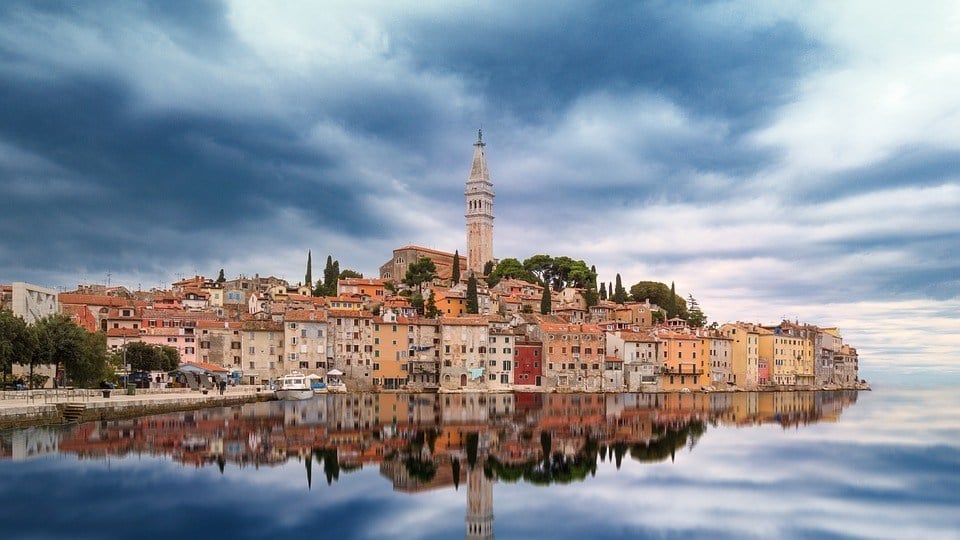
The Broke Backpacker is supported by you . Clicking through our links may earn us a small affiliate commission, and that's what allows us to keep producing free content 🙂 Learn more .
In 2023, Croatia dropped the Kuna and has since then been using the Euro . Find out how much your money is worth today by using the up-to-date converter below.
For this article, we’ll estimate all the costs mentioned in US dollars (USD).
Is Croatia Expensive? 2 Weeks in Croatia Travel Costs
See what you can expect to be your total Croatia trip cost :
ESTIMATED EXPENSE: $600-$2000 USD
Let’s talk about flights. Traveling to Croatia is probably the biggest single expense and the most difficult to accurately estimate, mainly because flights fluctuate in price throughout the year.
Croatia has nine international airports you can possibly fly into. The main airport in terms of arrivals is Zagreb. In fact, only Zagreb, Split and Dubrovnik will receive international flights all year round.
Is Croatia cheap to get to, though? Many cities tend to have a “cheap time” to fly.
We’ve compiled a list of round-trip tickets to Croatia from some major cities:
- New York to Zagreb: 700 – 1000 USD
- London to Zagreb: 300- 600 GBP
- Sydney to Zagreb: 2000 – 3000 AUD
- Vancouver to Zagreb: 1200 – 1300 CAD
Remember that these fares are subject to change with time. You can sometimes score additional discounts by looking for special deals or error fares. Make sure to check flight to the different airports in Croatia to find the lowest cost possible.
Want to save money on accommodation?

We got you. For reals.
ESTIMATED EXPENSE: $10-$350 USD per day
As we mentioned, Croatia travel is becoming very popular amongst travelers. As a result, prices are rising slightly every year. Fortunately, it’s still quite affordable, compared to popular destinations in Western Europe.
There are many different kinds of accommodations in Croatia. As the hotels become more crowded over tourist season, prices inevitably rise. Airbnbs and Hostels are also a great option, especially for travelers on a budget and backpackers.
Make sure you know where you want to stay in Croatia before you look deeper into possible accommodations. Once that’s clear, check out the best ones below, so you can find the right one for you.
Hostels in Croatia
Staying in hostels is the best way to lower your accommodation costs low. Choosing a dorm instead of a private room will save you even more money.
They are also good social spaces for those who don’t mind meeting other travelers and being surrounded by like-minded bunkbed buddies. And trust us, there are numerous amazing hostels in Croatia ! Another advantage of staying in a hostel is the great advice you can get from staff and other guests.
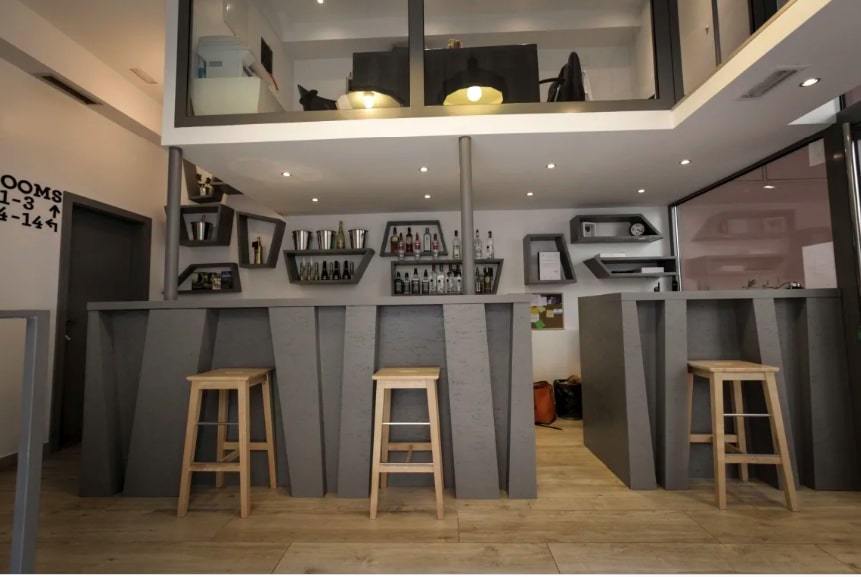
The prices of hostels vary quite a lot in Croatia – anywhere from $10 USD to $55 USD per night. But a fair price to look at for a standard hostel option is between $15-$25 USD per night.
You’ll want to be close to whatever you plan on seeing. So in a major city, it may be close to the city center. On the islands, it’ll probably be near the beach. Here are a few of the best ones we found:
- Chillout Hostel , Zagreb – An expertly-designed hostel with incredible common rooms, a 24-hour bar, a rooftop lounge, all in downtown Zagreb!
- Hostel Elena, Zadar – 20 Yards from the boardwalk, with access to the island ferries, and the party atmosphere of the beachfront nightlife.
- Split Guesthouse & Hostel, Split – They’ll make you feel like you’ve arrived at a friend’s house, complete with a free cup of coffee on arrival. Rated best hostel in Split for several years running, it’s definitely worth the stay.
Airbnbs in Croatia
There’s a quite big range of options on Airbnb when it comes to prices in Croatia. The cost mostly depends on where you’re looking to stay, and especially what part of the year. Island accommodation also tends to be slightly more expensive, so keep that in mind during your planning.
While you might be able to score an impressive $28 USD per night (lucky you), expect to pay a more typical $35 – $55 USD a night for a decent apartment.
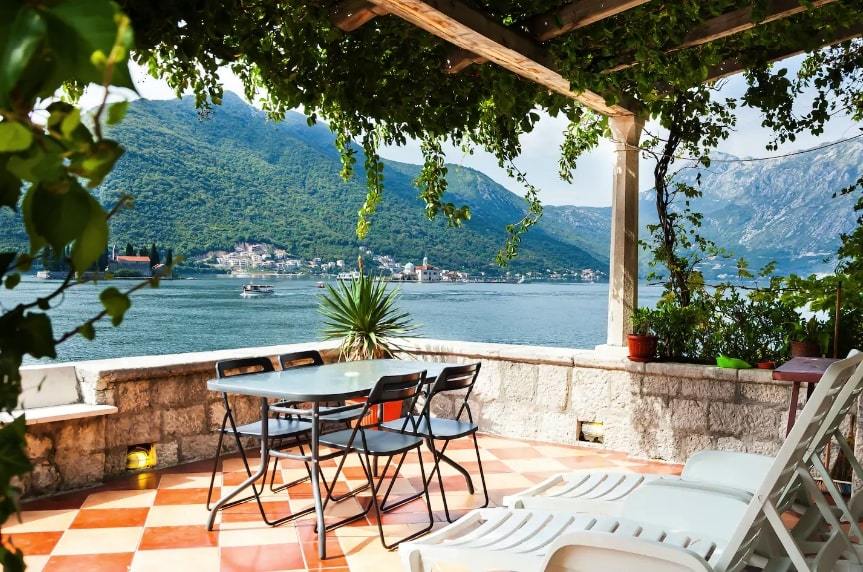
On the upside, you’ll have the apartment to yourself, with the option to self-cater in a kitchen of your own. You can’t beat the feeling of having a home away from home. If you value privacy and independence, staying in an Airbnb is the right choice for you.
Here are a few gems we found that you may consider:
- Waterfront with an extraordinary view – In the old town of Dubrovnik, a studio with a truly extraordinary view of the bay.
- Cozy & Romantic Apartment with a Stunning View – Right by the seaside, and close to the romantic part of Sukošan old town.
- The best position in Hvar! – Sitting on top of a hill, overlooking the town and sea, this is a view that’s absolutely breathtaking.
Hotels in Croatia
While hotel accommodation is definitely the most expensive of all the options, it comes with certain advantages and luxuries. Hotels probably offer the best on-call services, like room service, attached restaurants, laundry, gym, concierge, and even more.
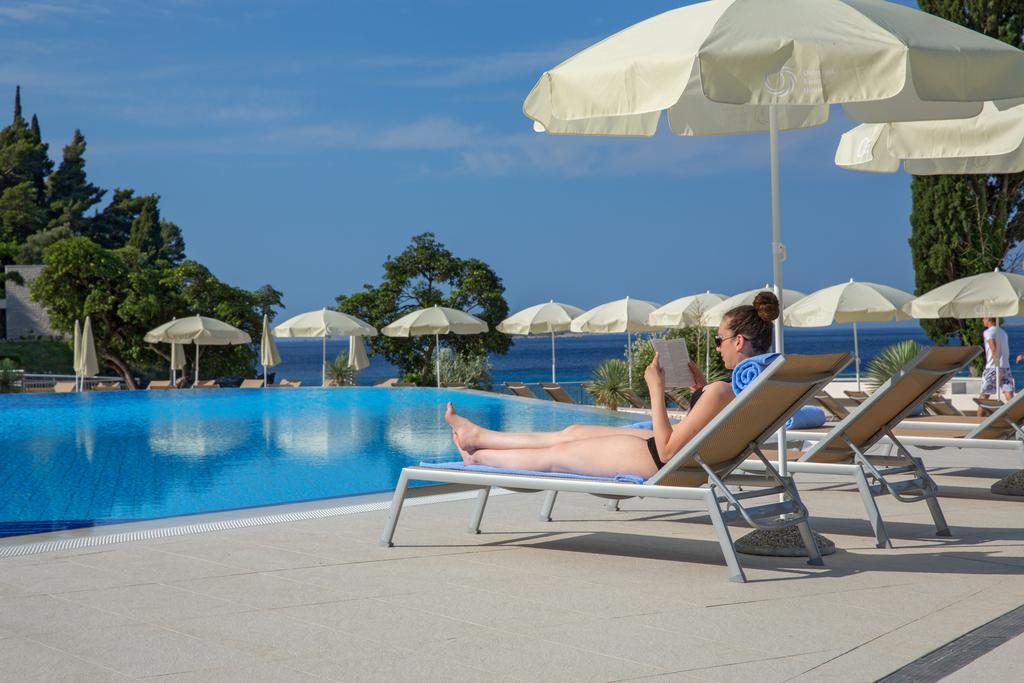
The price range is incredibly big for hotels. You can find places for up to $350 USD per night, but you can also do some hunting and find great value rooms at around $80 USD. Hotels should only be considered if your travel budget allows it and if you don’t want your trip to end after a couple of days.
Here are some of the best hotel options in Croatia:
- Hotel Mlini – A picturesque view from a balcony can offer a great start to a day in Dubrovnik.
- Hotel Esplanade – Just twenty yards from the beach in Crikvenica, and often features live music on its terrace for some entertainment.
- Falkensteiner Hotel & Spa Iadera – Superb value at this Petrcane coast gem. Enjoy the bars the huge wellness area, and of course, the beach.
ESTIMATED EXPENSE: $5-$50 USD per day
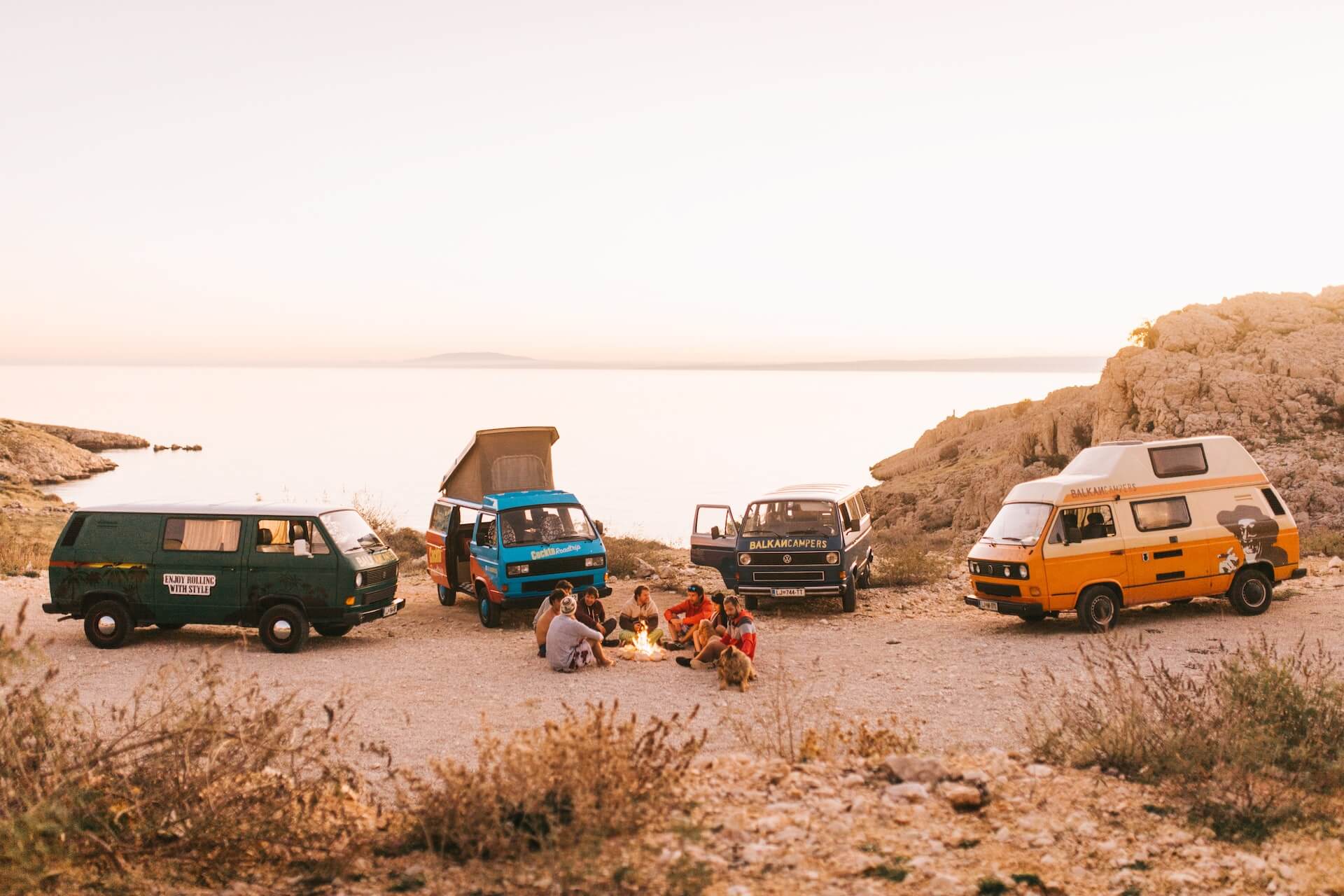
In Croatia, the main form of public transport used in most cities is the bus. Zagreb and Osijek also have tram systems. The train system in Croatia is a little less reliable than other systems, due to by regular stoppages and delays.
Within the cities, a bus single ride costs $1.50-$2 USD on average (you can purchase a one-hour pass for this). For the most part, buses tend to run fairly regularly and efficiently and are the best way to save on transport costs.
If you’re bouncing around the islands, you’ll have to use boat services. Car Ferries or Catamarans (these ones are only for passengers) are the most popular and cost-effective ways to get to the islands.
You have the option of renting a car if you plan to travel around the country. The roads in Croatia are really good, but you may want to use the public transport options available when you’re in a city itself.
You can also choose to walk around – this is especially pleasant during the summer months.
Train Travel in Croatia
Trains only travel between certain cities in Croatia, and it must be noted that the network is limited and doesn’t go to every single town. You can get between a few main cities like Zagreb and Split, for example. To get to smaller towns or even villages, you have to switch it up to either busses or, in the worst case, taxis.
Bus Travel in Croatia
The bus system in Croatia is very extensive. You’ll be able to choose from many services and operators, depending on where you are in the country. There is no single national operator that works all routes. In most cities, the numerous central bus stations are very easy to find and get to.
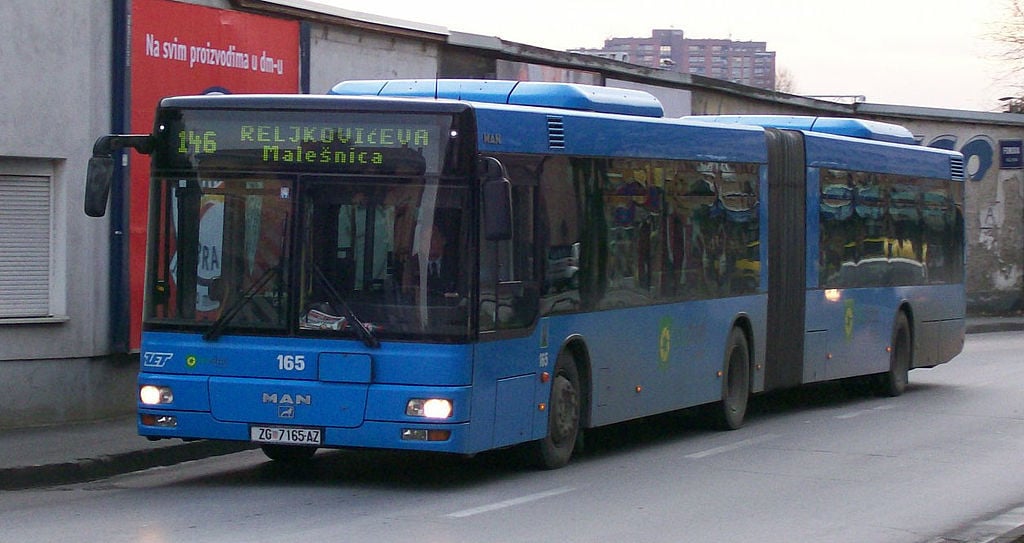
Croatian bus prices aren’t the cheapest in Europe, but it remains the cheapest option, in general, to get around within a city, and between cities.
Within cities, various bus services run a number of routes, usually based on a single ticket system. For example, in Dubrovnik, you can get a ticket for about $2 USD, which is valid for 60 minutes of unlimited travel. You can also buy 24-hour ticket passes for just under $5 USD.
Choosing the bus as your transport option will definitely work out the cheapest. With its quite affordable tickets and reliability, it’s perfect for backpackers and travelers on a budget that want to see as much of Croatia as possible.
Getting Around in the Cities
Many of the cities in Croatia, especially the main ones, are completely walkable. And you’ll love getting around on foot wherever you are because it allows you to take in every detail of the charming city without rushing. That being said, there are few alternatives.
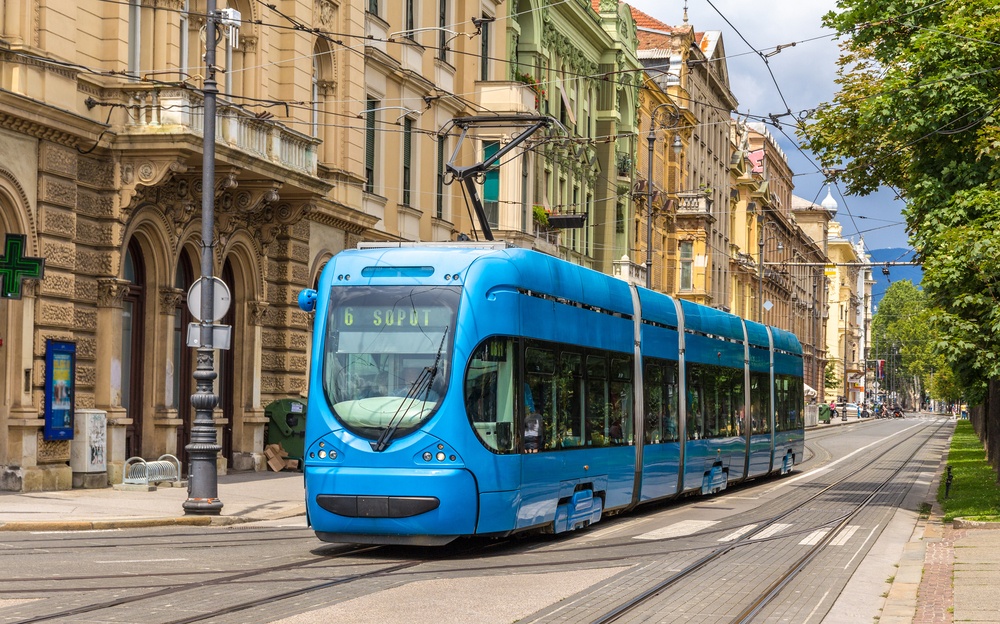
- Metros and trams – There are a few trams in Zagreb and Osijek – a 90-minute ticket costs about $1.50. They do not run 24 hours, but do a fair job of moving around the city every day between 4 am and midnight.
- Bus – Many locals and travelers prefer to use the bus to get from A to B, even if it does take slightly longer. A single ticket, valid for one hour, will cost around $2 USD. Day passes ($5 USD) are also an option. Bus tickets are separate to train, tram and metro tickets.
- Bicycles – You can find bikes rentals fairly easily in the major cities. You can also try a service like BimBim Bikes, which is a sort of aggregator for a number of service providers. Usually, around $14-16 USD per day is a fair price for standard bicycle rental.
- Taxi – Taxis will be an expensive option in Croatia. As an example, a taxi between the airport and Old Town Dubrovnik costs around $30 USD. If you plan to use a taxi to travel around, you’ll be making a serious dent in your budget, as a standard taxi rate is around $1 USD per km.
Renting a Car in Croatia
If you prefer the freedom of exploring the country at your own pace, you could also rent a car. This is only an option if you’re over 22 years old. The coastal roads in Croatia are exceptionally beautiful, great for photos.

To get the best rental car prices in Croatia, make sure to book your car well ahead .
Due to high demand, there’s a good chance you’ll find yourself stranded without a car if you just show up at the rental. And even if you do manage to get your hands on one, you’re going to pay a pretty big rate.
The best services for rentals are Sixt and Rentalcars.com. They both offer the option to pick up in one place and drop off in another, but this is usually more expensive. Expect to pay around $60-120 USD for a four-day rental, excluding gas and insurances.
When taking the rental car on the ferry, you’ll need to pay extra insurance for this – about $20 USD. Be sure to let your rental company know whether you will be going to the islands with your car.
Want to save some cash and explore Croatia by rental car? Use rentalcar.com to find the best deal possible. There are some great prices on the site and they aren’t difficult to find.
ESTIMATED EXPENSE: $20-$100 USD per day
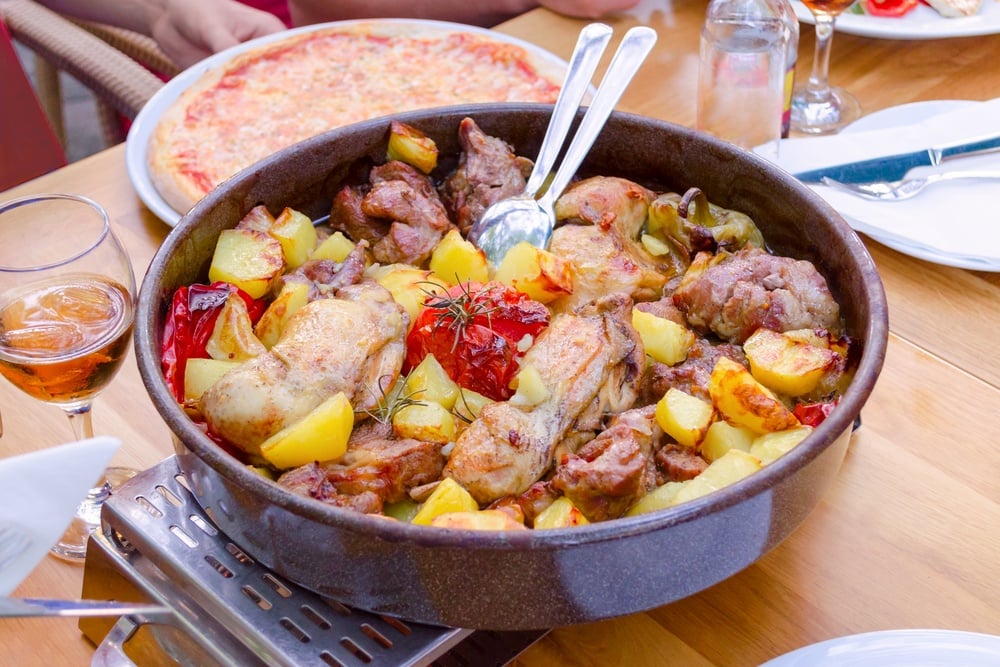
Food isn’t particularly expensive in Croatia, especially when compared to its neighbors. But like pretty much everywhere in the world, eat and drink in restaurants and hotel bars every night, and you’ll end up spending lots. Fortunately, there are ways to keep money in your pockets.
The easiest way to save money on food is to cook for yourself. Staying at an Airbnb or a hotel, you normally have a little kitchen with basic equipment, which allows you to prepare meals at home.
Take a look at these average Croatia prices for typical everyday food items compared to restaurant eating.
- 1 liter milk: $1 USD
- 12 eggs: $2.75- $3 US
- 2 lbs apples: $1.50 USD
- 2 lbs potatoes: $1 USD
Restaurants and bars :
- McDonald’s Medium meal: $6 USD
- Beer (17 fl.oz): $2.50-2.80 USD
- Standard cola (can): $2.10 USD
- Mid range restaurant meal: $20 per person
If you have to eat out, time it for happy hour specials, or keep your eyes open for discounts or 2-for-1 days. This will work out a lot cheaper than regularly getting normal meals.
ESTIMATED EXPENSE : $10-$80 per day
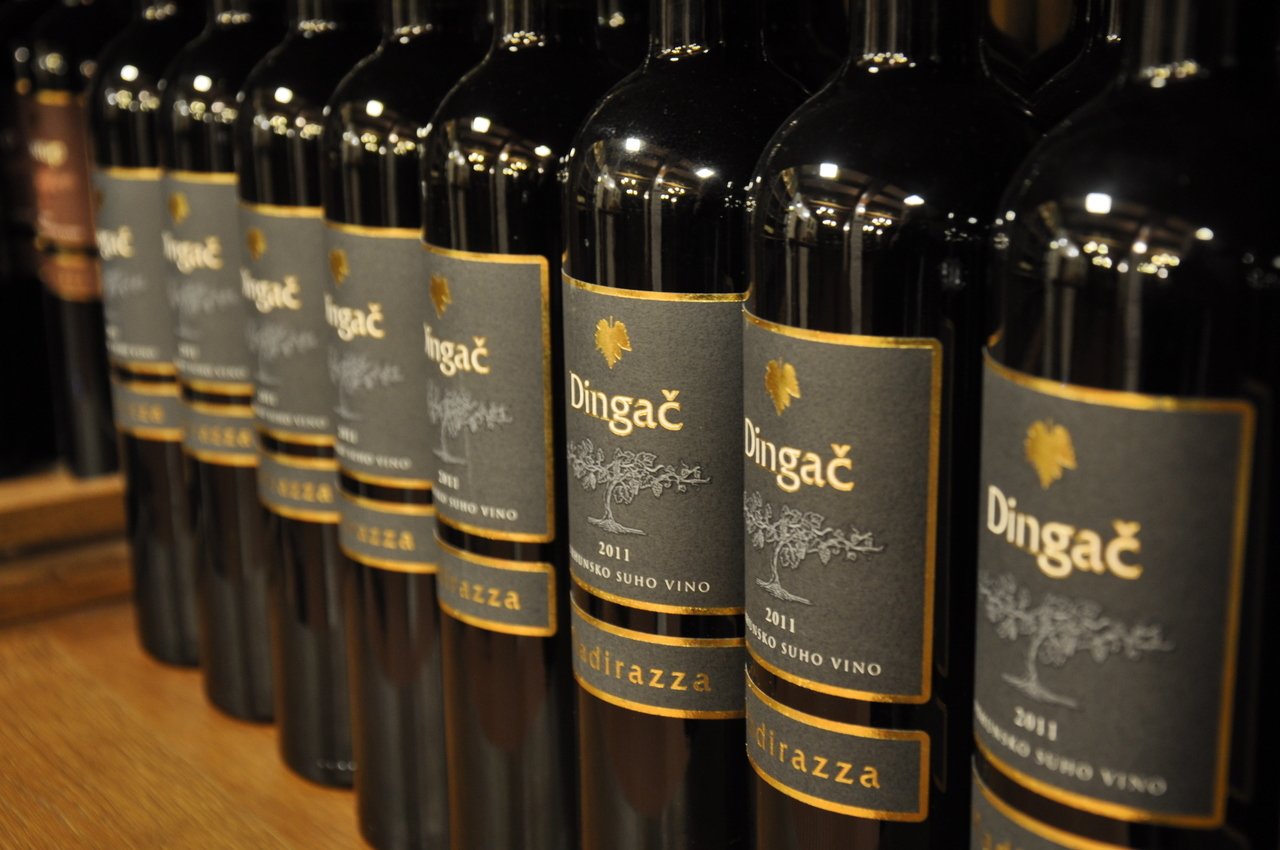
As with most places catering to the tourist market, the alcohol prices in Croatia can vary from bar to bar, depending on where in Croatia you’re stepping out. How much you should expect to spend on drinks is completely dependent on your consumption and preference.
Beer is by far the cheapest option, and local beer tends to be cheaper than imported brands. You can usually find a pint of beer for around $2 USD at a local bar. Expect to pay slightly more for a brand name import.
A bottle of standard house wine at a restaurant or bar can cost around $10 USD, and a shot of vodka around $2 USD as well. Of course, you can buy the same alcohol for as little as half of these prices at a local store or market.
Our advice is to pick up a fair supply from a market and enjoy a few early drinks at home. If you’re still up to hit the town after that, check out the happy hours in the area.
ESTIMATED EXPENSE: $3-$200 USD
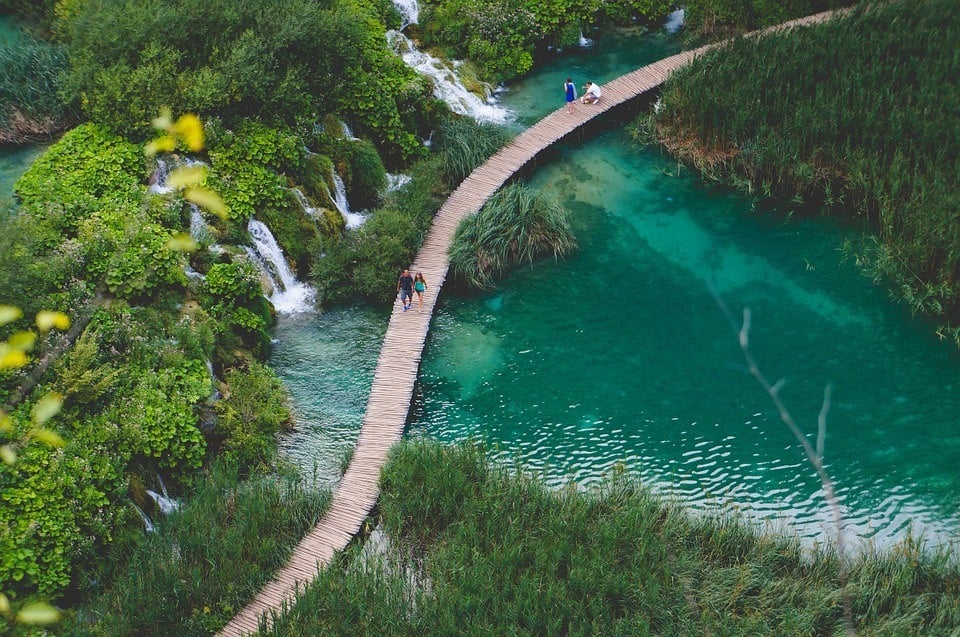
Croatia is full of the most wonderful attractions including the most incredible national parks . Many can be visited as part of a tour or on your own. Hotspots are ranging in pricing from absolutely free to quite expensive. Popular tourist destinations like Plitvice Lakes National Park are a bit pricy in summer–the park (famous for its incredible waterfalls) will set you back $45 USD per person from June-September.
Some of the cheapest include parks like Paklenica National Park for about $3. Other excursions, like boat rides to the blue caves, can cost as much as $130-150 USD or more.
Using the city of Dubrovnik as an example: a tour of the city walls will cost around $10 USD admission. The museum of the Rector’s Palace is a little less at $6 USD.
As we already mentioned, you don’t have to pay to get in everywhere. Beaches, town squares, many churches, and parks are free to visit.
Here are a few pointers on how to save money on attractions:
- It may sound odd but pay in kuna when given the choice. Paying in Euros means giving a sneaky little extra, which can be avoided by just sticking to the local currency.
- Do some research on everything that’s free in your area. Stick to the free attractions and keep the money in your bank account.
- Look at official websites for a discount or free days. Some museums, for example, have free days on certain days of the month.

A new country, a new contract, a new piece of plastic – booooring. Instead, buy an eSIM!
An eSIM works just like an app: you buy it, you download it, and BOOM! You’re connected the minute you land. It’s that easy.
Is your phone eSIM ready? Read about how e-Sims work or click below to see one of the top eSIM providers on the market and ditch the plastic .
Unexpected expenses can come up at any time, unfortunately, so being prepared is important when setting up your travel budget. Nobody likes to think abo0ut an emergency, but it’s better to be safe than sorry.
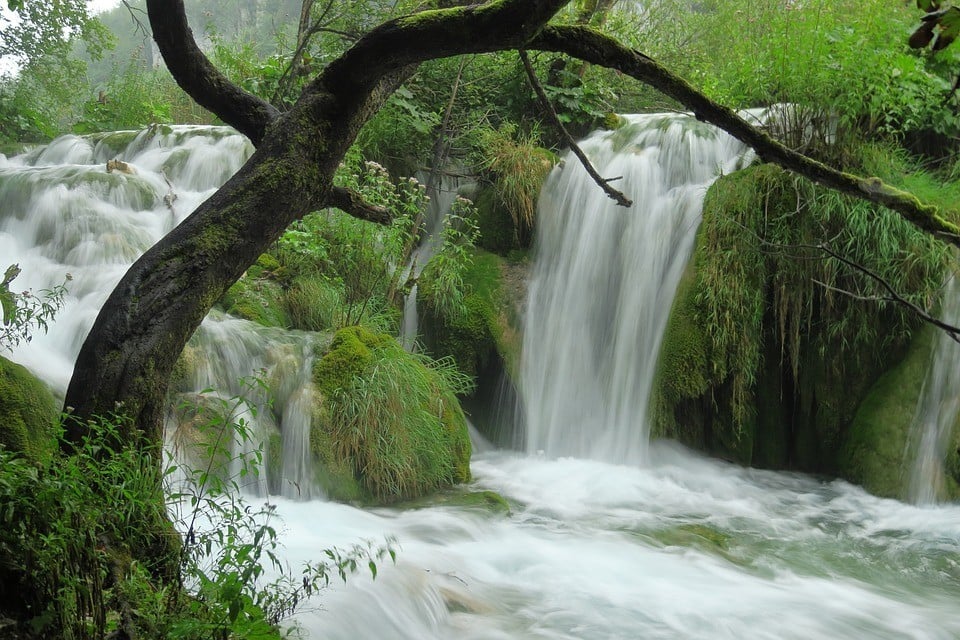
Set aside a portion of your budget to plan for “surprises”. A worst-case scenario would be a medical emergency – paying for a trip to the hospital shouldn’t cause a panic over how to afford dinner later, or even worse, how to get back home.
There’s also the unexpected must-have gift that you really need to bring back to your aunt. Doesn’t matter what comes up, better to have some funds in reserve – just in case.
Tipping in Croatia
As a rule of thumb, a decent restaurant service deserves a 10% tip. It’s pretty much the standard across Croatia. You can push that up to 15% if you’re really impressed with the service. Rounding up to the bill won’t hurt your wallet, but it’ll surely put a smile on someones face.
A $1-$2 USD tip is appreciated by a porter at your hotel. Carrying your bags can be a bit of work. Other than that, you can round up to tell a street vendor to “keep the change”, if you like, though it’s not expected.
As far as taxis go, no more than a rounded-up amount is expected, unless you’ve taken a long intercity ride. Then it’s ok to leave a normal tip.
Get Travel Insurance for Croatia
ALWAYS sort out your backpacker insurance before your trip. There’s plenty to choose from in that department, but a good place to start is Safety Wing .
They offer month-to-month payments, no lock-in contracts, and require absolutely no itineraries: that’s the exact kind of insurance long-term travellers and digital nomads need.

SafetyWing is cheap, easy, and admin-free: just sign up lickety-split so you can get back to it!
Click the button below to learn more about SafetyWing’s setup or read our insider review for the full tasty scoop.
Still not quite sure how to backpack through Croatia on a budget? Here are a couple of things to try:
- Walk when you can : Chances are you’ll be in a city or town that is wonderful to walk around. Go on and get some fresh air!
- Book ahead : Sometimes you can save a pretty penny by booking ahead. Tickets to theaters, museums, and other attractions do offer rewards for booking in advance.
- Happy hours and 2-for-1 : Almost every bar or restaurant has a time of the day or week for a particular special. Ask your local desk or consult the local web guide for advice.
- Carry a water bottle : Don’t waste money on plastic, or bottled waters carry your own and refill it in the fountains and the tap. If you’re worried about potable water, get a filtered bottle, like the GRAYL , which filters out 99% of viruses and bacteria.
- Earn money while you travel : Teaching English while traveling is a great way to make ends meet! If you find a sweet gig, you may even end up living in Croatia.
- Become a volunteer with Worldpackers : Give back to the local community and, in exchange, you’re room and board will often be covered. It’s not always free, but it’s still a cheap way to travel in Croatia.
Here’s a general observation: In Croatia, the cost of travel tends to be more expensive in the high tourist season (summer) than in the off-seasons. Depending on where you’re flying from, flight costs may differ quite a lot.
If you’re able to visit in the low season, you’ll find Croatia travel costs affordable in terms of accommodation, food, and entertainment. Balance your budget with smart decisions like shopping for food at a market, or eating street food rather than at an expensive restaurant on the main street.
Use the bus – it’s a lot cheaper than taxis or car rentals. And enjoy the walkable towns and cities on foot whenever you can.
It may be overly optimistic to call Croatia a cheap vacation, but it’s not the most expensive, either. With that in mind, you should be able to visit with a reasonably-sized wallet and see quite a bit of the country. Croatia on a budget is totally possible.
What we think an average Croatia travel budget should be: $50-$100 USD per day .
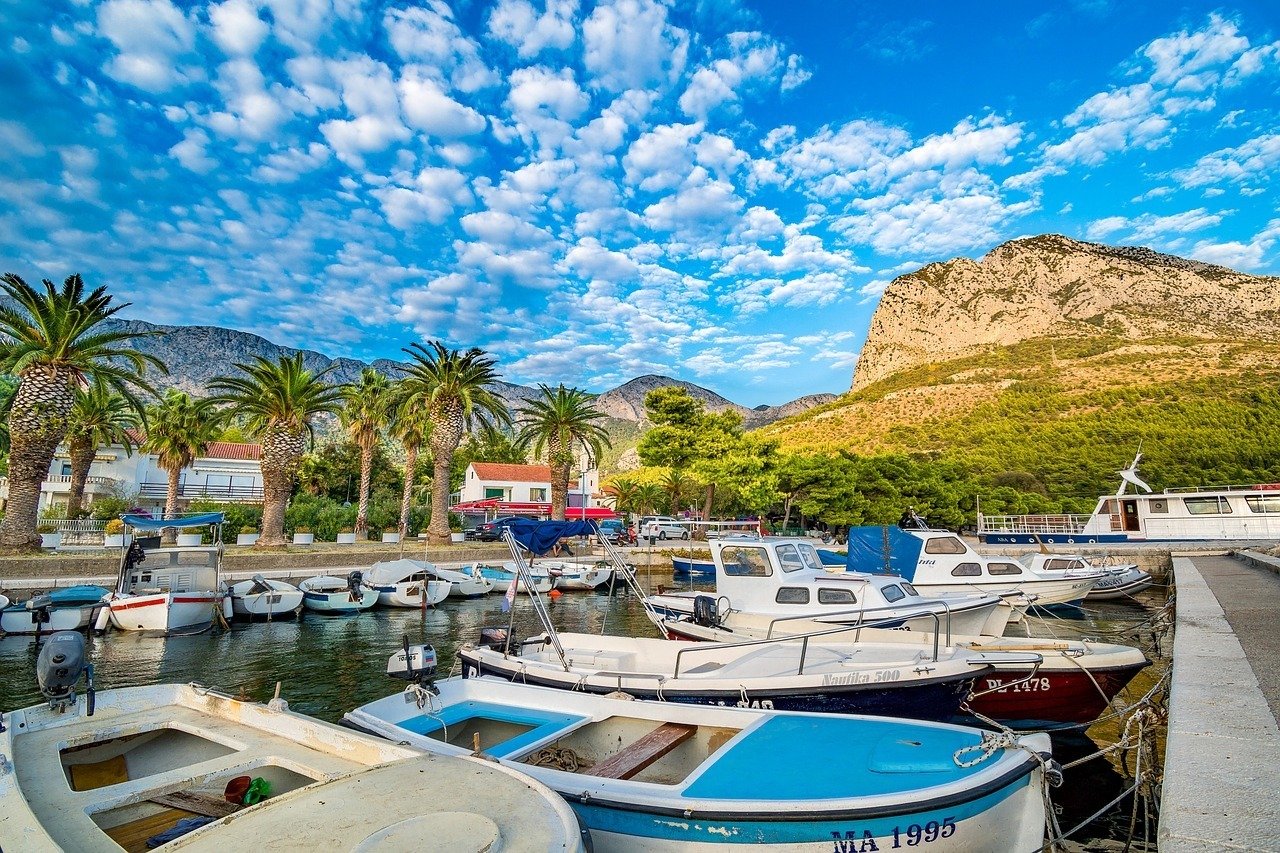
Updated February 2023
Made it this far? You get 15% OFF to book a place to stay ! Offer valid exclusively for Broke Backpackers 😉

Agness and Cez
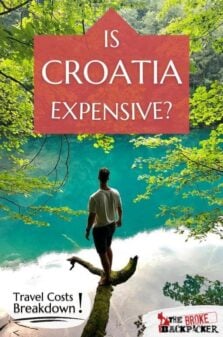
Share or save this post

Being in Croatia right now, I can tell you, that the prices you mentioned are pretty different now. A coke at a restaurant is 3,5 euros (about 4 USD). A pizza is about 12 USD. Car rental is about 45 USD a day + insurance and gas. Meat, cold cuts and vegetables at the supermarket is cheap though, and you can get a good homemade meal for a fraction of the cost at a restaurant. Meat is about 5 usd a pound. Vegetables are about 1 usd a pound. Cold cuts vary, but a cheese, sausages and dried ham is between 6-12 usd a pound. A big bottle of coke (2 liters) is 3 usd. And a 2 liter (cheap beer) is 5 usd. Buying at the supermarket is by far the cheapest solution. Marketplaces will rip you of. If you’re not planning to do your own cooking, expect to use as much as you would in the world’s most expensive countries… And I know what I’m talking about, as I’m danish. Prices are literally the same as in Denmark, if you don’t cook yourself.
Leave a Reply Cancel reply
Your email address will not be published. Required fields are marked *
Save my name, email, and website in this browser for the next time I comment.
Notify me of followup comments via e-mail.

Croatia Travel Guide
Last Updated: August 8, 2024
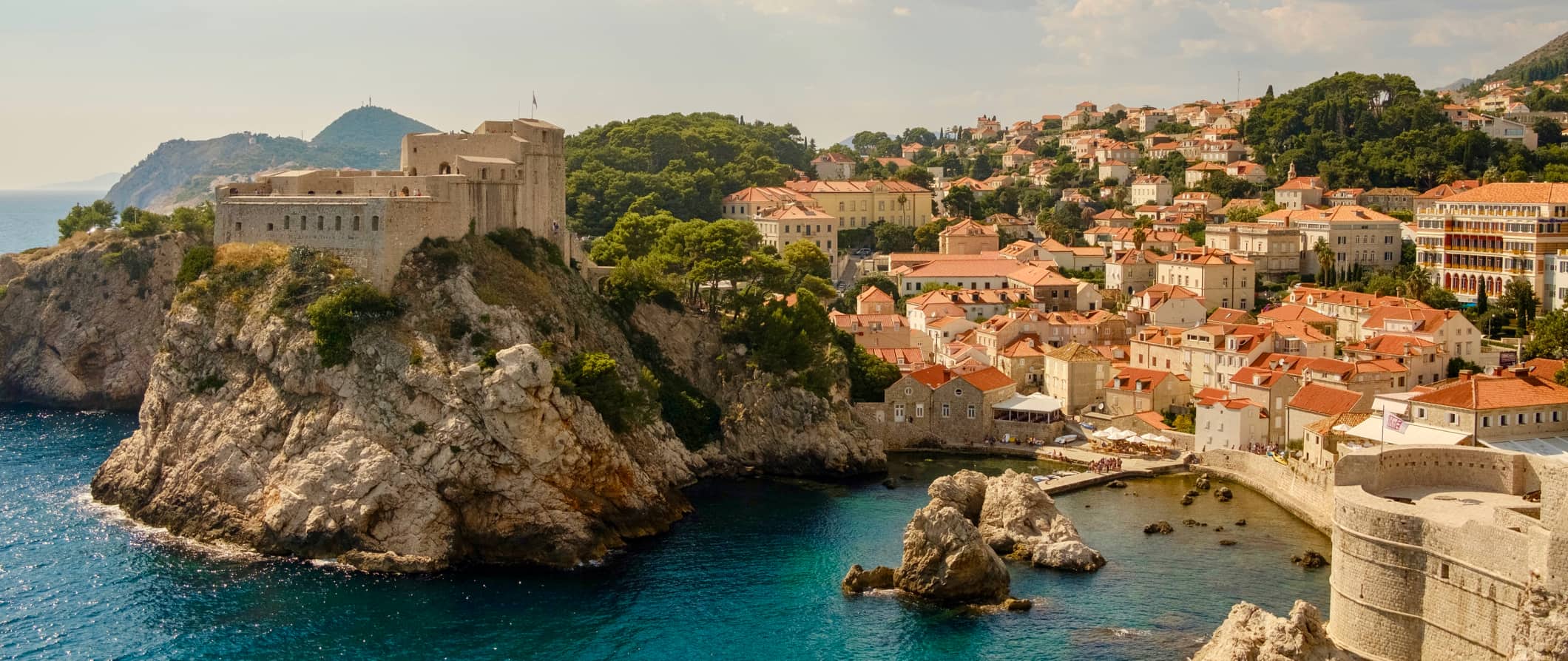
Croatia is one of the most popular destinations in Europe . It’s the go-to spot for stunning beaches, rugged islands, historic architecture, and all the sailing you could ask for.
I think the country is vastly underappreciated.
The tourism focus in the country is usually Hvar, Split, Dubrovnik, Istria, or the famed Plitvice Lakes. Too much of the rest of the country is largely ignored. I saw so few tourists in Karlovac, Rastoke, or Slunj. Zagreb didn’t have a lot either, despite it being the capital city. Slavonia? Barely a soul goes there.
Once you get off the main stretch of the coast, it feels like you have the country to yourself. Croatia is a country with over a thousand islands, a long coastline dotted with sun-bleached medieval towns, a cosmopolitan capital city, an underappreciated wine region, and an untrammeled inland landscape that sees a fraction of the tourists that the Dalmatian Coast brings in.
Spend longer than you plan and get off the beaten path to really see the magic of the country.
This travel guide to Croatia can give you the tips and tricks you need so you can plan the ultimate adventure there.
Table of Contents
- Things to See and Do
- Typical Costs
- Suggested Budget
- Money-Saving Tips
- Where to Stay
- How to Get Around
- How to Stay Safe
- Best Places to Book Your Trip
- Related Blogs on Croatia
Click Here for City Guides
Top 5 things to see and do in croatia.

1. Visit Dubrovnik
Dubrovnik is a stunning city best known for its historic Old Town (which was a Game of Thrones filming location). Wander around its limestone streets, admire the baroque buildings, and take in the views of the Adriatic Sea. A walk along the medieval city walls is a wonderful way to spend an afternoon (bring sunscreen as there is very little shade). There are a lot of interesting museums worth visiting, like the Cultural History Museum, the Red History Museum, and the Maritime History Museum. Don’t miss St. Blaise Church and Sponza Palace either. The city also makes for an excellent base for day trips, including jaunts into nearby Bosnia and Herzegovina and Montenegro . There are lots of wineries nearby too.
2. See Split
Split has some of the best beaches in the country, like Kašjuni Beach. It’s also home to Roman Emperor Diocletian’s 4th-century palace, which is a UNESCO World Heritage Site. There are plenty of museums to keep you entertained. I particularly enjoyed the Split City Museum, the Meštrovic Gallery, and Ethnographic Museum. Split also has a lively nightlife, several nearby hikes, historic ruins, cobblestone streets, and incredible seafood. It’s a more upscale (and party-focused) Dubrovnik. Be sure to spend a day in nearby Trogir, the most beautiful town you’ve probably never heard of.
3. Admire Plitvice Lakes National Park
Tucked between Zagreb and the Dalmatian Coast, Plitvice Lakes National Park is a UNESCO World Heritage Site. It’s composed of 16 interconnected lakes and over 90 waterfalls. There are opportunities for hiking, kayaking, and even winter activities. There are many miles worth of hiking trails, each offering a unique view of the waterfalls and surrounding forest. It’s beautiful but super popular so arrive early (it gets packed in the summer). Admission is 10-40 EUR depending on the month (prices rise in the summer) and time of day you visit.
4. Visit Rijeka
Rijeka is Croatia’s largest port and home to the medieval 13-century Trsat Castle as well as City Tower, a medieval defensive tower. The pedestrian street of Korzo is a wonderful place to enjoy the bustling city, both during the day and at night. The city has a lot of cool street art mixed in with cafes and even ancient ruins too. There’s also some amazing diving nearby with lots of underwater cliffs to explore. Don’t miss the nearby historic town of Kastav. It’s an Insta-worthy walled town surrounded by parks.
5. Explore Lokrum
The island of Lokrum is a nature reserve just off the coast of Dubrovnik. It makes a wonderful day trip (you’re not allowed to sleep here overnight) for swimming and sunbathing. There are also plenty of hiking trails, a botanical garden, and even a fortress built by soldiers during the Napoleonic era. For a unique experience, go floating in the salt water lake that’s often called a mini “Dead Sea” because of the high salt content. There are no cars here and, in addition to the beach, there is a former Benedictine monastery to explore. Ferry rides are only fifteen minutes and cost 14 EUR for a round trip and include admission to the island.
Other Things to See and Do in Croatia
1. visit pula.
Pula is a seaside city and home to an impressive 1st-century Roman amphitheater that overlooks the harbor that is used to hold concerts, film festivals, and even a summer festival dedicated to all things Roman. The festival, Spectacular Antiqva, is held at least once per week during the summer. Admission is 20 EUR. While you’re in Pula, be sure to visit the Archeology Museum and spend some time exploring Brijuni National Park (which is made up of a group of scenic islands). There’s also a 14th-century monastery here you can visit as well.
2. Go Island Hopping
With over 1,000 islands, it would be silly to travel to Croatia and not go island hopping. Plan to stay at least a couple of days on one of the islands to step back in time and get the full Croatian experience. The most popular islands to visit are Brac, Hvar, Krk, Cres, and Lošinj. However, don’t be afraid to get off the beaten path and explore some of the lesser-known islands such as Silba, Vis, and Lastovo. Some of the islands have ferries that start at 2.50 EUR each way. There are many ferry companies operating in Croatia leaving from the main ports of Pula, Porec, Rovinj, Split, Dubrovnik, Zadar, Mali Losinj, Umag, and Novalja.
3. See St. James’ Cathedral
Located in Sibenik (which is on the coast between Zadar and Split), St. James is believed to be the world’s largest church built entirely of stone (there are no wooden or brick supports). It’s an architectural masterpiece that was started in 1431 and wasn’t completed until 1536. It’s massive and spacious with a rather dark and grim stone interior that feels very medieval. Some of the cathedral’s highlights are its frieze of 71 heads on the exterior walls, the tomb of Bishop Sizigori, and a 15th-century Gothic crucifix. Admission is 3 EUR.
4. Visit Krka Monastery
This Serbian Orthodox monastery is dedicated to the Archangel Michael and is one of the most important religious sites in Croatia. Founded in 1345, it’s located beside a small and peaceful lake forty-five minutes from Sibenik. Built in the Romanesque style, it boasts a unique mix of Byzantine and Mediterranean architecture. Underneath the building is a natural cave system (known locally as the ‘secret church’) where they have found Christian symbols dating back to the 1st century. The library also has books dating back to the 16th century. Admission is free.
5. Go diving
Thanks to Croatia’s seafaring history, the whole of the coastline is littered with shipwrecks. Two of the most popular are Baron Gautsch (off the coast of Rovinj), and Taranto (off the coast of Dubrovnik). Expect to pay 38 EUR for a single-tank dive in the area but the shipwrecks start at around 64 EUR. Open water certification costs around 315 EUR. The best diving conditions are between May and November (September and October will be warm and less busy).
6. Visit the Museum of Broken Relationships
Located in Zagreb, this museum is full of mementos from failed relationships between family members, friends, and lovers. Items on display include clothing, jewelry, handwritten letters, photos, and more quirky items like belly button lint and old chocolate bars. Each item has a story attached to it, some funny, some gut-wrenching. The museum offers an honest, unpretentious look at humanity through its failed relationships. Admission is 7 EUR.
7. Explore the Vucedol Culture Museum
This riverside location is home to an archeological dig site where remains from over 8,000 years ago were found. The museum, built on top of the site, is a state-of-the-art representation of the original settlement complete with replica houses. It showcases the culture that was here, which was one of the first in Europe to create calendars and brew beer. It’s super informative. Guided tours cost 150 HRK and are available in English. Admission is 6 EUR.
8. Go hiking
From coastal walks to mountain climbing to hiking the inland canyons, hills, and forests, Croatia has a lot to offer. The most popular coastal hiking spot is Mljet National Park, on the island of Mljet. Inland, the most popular hiking spot is Medvednica Mountain near Zagreb or in Risnjak National Park. Other spots worth visiting are Brijuni National Park (which is home to 14 different islands), Krka National Park (which has beautiful waterfalls), and Paklenica (which has some rugged canyon trails).
9. Visit the Blue Cave of Bisevo
The Blue Cave (or Blue Grotto) is a natural sea cave accessible only by boat via a narrow passageway. Inside, the water almost glows and has a bright otherworldly color to it. Access to the cave is restricted to one boat at a time. The cave itself is located at Balun Cove on the eastern side of Komiza. The best time to visit is between 11am-12pm as this is when the light is at its most beautiful. Prices in the off-season are 9.50 EUR and while it’s 13.50 EUR in the high season. Expect to pay around 75 EUR for a full-day tour (and expect crowds).
10. Listen to the Sea Organ
The Sea Organ is tucked away beneath a set of steps that lead down to the water in the seaside town of Zadar. The organ consists of 35 tubes that stretch along 70 meters (230 feet) and are played by the wind and the sea. Designed by architect Nikola Basic, the music sounds similar to whale calls. It opened in 2002 and is now one of the most popular attractions in Zadar. Because the sea is constantly changing, the music sounds different every day. Come here at sunset to soak in the picturesque views and listen to the captivating sounds of the sea.
11. Go sailing
Croatia is one of the world’s best sailing destinations. With calm winds, short distances, and a coastline dotted by islands and historical sites, it really does make for a inspiring place to explore by sea. During the high season, prices rise dramatically, but if you time your visit right and visit during the shoulder season you can find some good deals. If you don’t want to join a tour you can charter a boat. Charters can get pricey though, as a 7-day trip starts at 1,700-2,000 EUR. If you’re in the mood for partying, Busabout has hop-on-hop-off boat tours. I did one a few years ago ( you can read about it here ). For a 7- or 8-day trip, expect to pay around 1,000 EUR.
12. Tour Zagreb
Zagreb has a charming Old Town reminiscent of cities like Prague and Budapest. There is lots of green space, a couple of nearby lakes, and tons of historic architecture. Be sure to visit the massive Neo-Gothic cathedral and the medieval Old Town Gate where you can find an 18th-century painting of the Virgin Mary thought to be miraculous as it survived the city’s Great Fire of 1731. There are also tons of museums (don’t miss the Mimara Museum) as well as the Medvedgrad fortress that overlooks the city. To see the highlights on a budget, take a free walking tour with Free Tour Zagreb . Their tours last two hours and cover all the main sites so you can learn more about this underrated city.
13. Experience The Yacht Week
If you want to splash out and spend a week partying on a yacht, check out The Yacht Week . They host week-long parties and festivals with DJs and events throughout the summer. You can book a full boat to share with friends or just a cabin on one if you’re traveling solo. They have destinations all around the world, including routes in Croatia. “Yacht Weeks” occur from May-August. Prices start at 685 EUR per person. It’s one of the biggest things of the summer and it’s a wild, wild, WILD party.
14. Visit Hvar
Hvar is a picturesque island off the coast of Split that’s known for its lively nightlife. It’s popular with younger travelers looking to dance and drink the night away. However, there are also lots of scenic coves, lavender fields, vineyards, and secluded beaches you can enjoy if you visit during the day. While a lot of people come here as part of their sailing trips (or as a day trip from Split), I recommend spending a couple of nights here. It’s one of the best places in the country. It’s also the sunniest, with over 274 days of sunshine each year.
15. Explore Slavonia
Few tourists make it to Slavonia, a rural region in eastern Croatia famous for its wine production. Head to the wine-country town of Zmajevac (pronounced “zma-ye-vatz”), which is just a few miles from the border with Hungary and Serbia. Be sure to sample the local wines and try fish paprikash, a paprika-laden fish stew slow-cooked over an open flame for hours that’s a specialty of the region. Additionally, don’t miss Osijek, the main town of Slavonia. It has a large historic center filled with Gothic buildings and cobblestone streets.
16. Eat oysters in Mali Ston
If you love oysters like I do, head an hour’s drive up the coast from Dubrovnik to Mali Ston. Founded in the 14th century, the region was originally home to a defensive fortification. Today, it’s famous for the oysters that are farmed in Mali Ston Bay. These oysters are so unique that they’ve been given a Protected Designation of Origin status. They say it’s the unique mix of salt and fresh water in the bay that give these shellfish their quality flavor. Visit nearby farms to learn about the oyster industry and try some samples. Expect to pay at least 40 EUR per person for a guided oyster tour (with samples).
17. Relax in karlovac
Home to around 55,000 people, Karlovac is an off-the-radar city just one hour from Zagreb. It was originally built by the Austrians in the 16th century, though not much remains from that period. The city’s “castle” is really just a small fort that’s been rebuilt — but it’s worth a quick look as you meander around town. The main draw here is the brewery, Karlovacko. It makes one of the most popular beers in Croatia. Spend a night here and take in the local pace of life. There’s also some hiking and nearby waterfalls if you want to get out and stretch your legs.
18. Road trip around Istria
Istria is a peninsula home to delicious wines and sumptuous white truffles. It’s a foodie paradise that sees few tourists, perfect for road-tripping travelers. Rovinj is the best-preserved and most popular city on the peninsula. It has a stunning Old Town, plentiful beaches, and numerous ruins. Visit the Heritage Museum to learn about the region’s history and then enjoy the exquisite beaches (Monte, Lone Bay, and Amarin) that are perfect for swimming and lounging. Pula, mentioned above, can also be found here.
19. Go truffle hunting
Istria is a major truffle producer and you can go on a truffle tour while you’re here. The Motovun Forest is one of the most well-known areas for truffles in the world. Guides use expertly trained truffle-hunting dogs to find these rare fungi that grow underground. Prodan Tartufi, a family-run truffle-hunting business near the medieval hill town of Buzet, runs a popular (but pricey) excursion. Tarandek Truffle Hunting organizes more affordable, small-group truffle experiences for around 50 EUR per person (they get less expensive the more people are in the group).
For information on specific cities in Croatia, check out these city guides:
- Dubrovnik Travel Guide
- Split Travel Guide
- Zagreb Travel Guide
Croatia Travel Costs
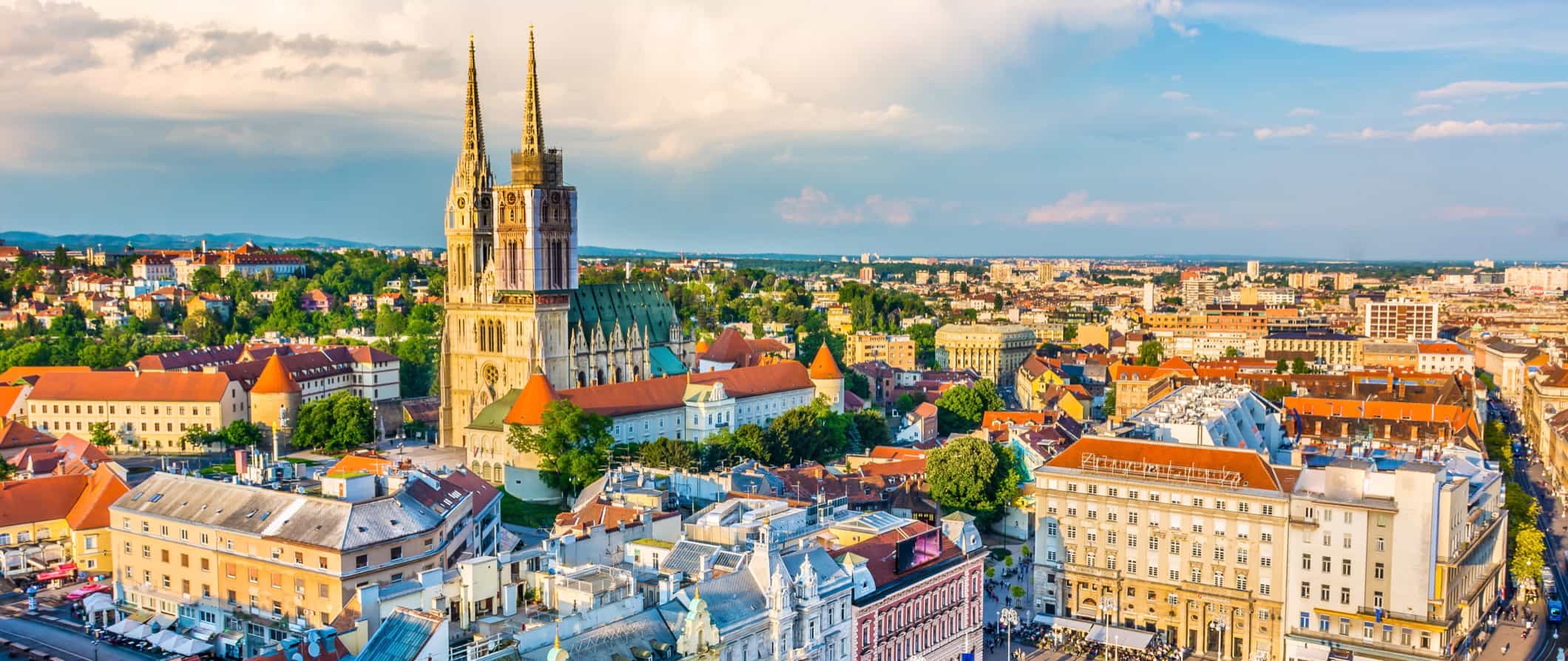
Accommodation – Hostels start at 20 EUR per night for a 6-8-bed dorm. For a private room, prices start at 37-80 EUR. Free Wi-Fi is standard and most hostels have self-catering facilities. Only a few hostels include free breakfast.
Budget two-star hotels start around 45 EUR per night. Most include breakfast and have standard amenities like TV, AC, and a coffee/tea maker. In the more popular destinations, expect them to start around 75 EUR per night.
Airbnb is available around the country with private rooms starting at 40-50 EUR per night. For an entire home or apartment, expect to pay at least 50 EUR per night though prices can double (or triple) in the summer.
For anyone traveling with a tent, there are lots of campsites in Croatia (most of which are scattered down the coast). For a complete list of campsites in Croatia check out Camping Hr . Prices vary depending on how close to the sea you are as well as what season it is. During peak season, expect to pay 25-35 EUR for a two-person plot with electricity and water. During the low season, prices drop to 15 EUR.
If you’re coming during the summer or are sticking to the Dalmatian coast, expect prices to be about 30% higher.
Food – Croatian cuisine has influences from Central Europe, the Mediterranean, and the Balkans. Seafood is a prominent staple along the coast. Sausage and schnitzel can be found at most traditional restaurants as well, as can a variety of pasta dishes and stews, especially goulash. In Istria, you’ll find a heavy Italian influence.
Food is relatively inexpensive except on the Dalmatian coast. Everything there costs double. For example, take-out sandwiches from the bakery chain Milner in Dubrovnik cost 3-5 EUR while they are just 2-4 EUR once you leave the Dalmatian Coast. Same sandwich, same place, vastly different price.
An inexpensive meal of traditional cuisine or a burger costs around 10 EUR (13-20 EUR in Dubrovnik). Fast food (think McDonald’s) is closer to 7-10 EUR while Thai or Chinese food costs around 7-10 EUR. Pizza is available pretty much everywhere with a medium pizza costing around 10-15 EUR.
If you want to splash out, a higher-end lunch (like a fresh fish fillet) with wine costs around 20-35 EUR. And if you really want to splurge, you can get a delicious sushi dinner with drinks and appetizers for 65-100 EUR.
Expect to pay 3-5 EUR for a beer and 2-4 EUR for a latte/cappuccino. Bottled water is 2 EUR while wine is 3-6 EUR per glass.
If you are planning to cook your own food, a week’s worth of groceries costs around 30-45 EUR for staples like milk, cheese, rice, seasonal vegetables, and some chicken.
Some of my favorite places to eat were Pupitres Wine & Coffe Bar, Heritage, Curry Bowl, and La Štruk in Zagreb; Cevabdžinica Behar in Karlovac; Tunaholic Fish Bar in Rovinj; and Oyster & Sushi Bar Bota in Dubrovnik.
Backpacking Croatia Suggested Budgets
If you are backpacking Croatia, my suggested budget is 50 EUR per day. This assumes you’re staying in a hostel dorm, cooking all of your meals, limiting your drinking, doing free activities like hiking and free walking tours, and using local transportation to get around. You’ll need to budget more if you’re visiting in the summer or if you plan on drinking.
On a mid-range budget of 120 EUR per day, you can stay in a private Airbnb or private hostel room, eat out for all your meals, have a few drinks, take some guided tours, take the occasional taxi to get around, and visit more museums and attractions
On a “luxury” budget of 220 EUR per day, you can stay in a hotel, rent a car to get around, do private guided tours, eat and drink as much as you’d like, and visit as many museums and attractions as you want. This is just the ground floor for luxury though. The sky is the limit!
Croatia Travel Guide: Money-Saving Tips
Expenses in Croatia can add up quickly, especially if you take a lot of tours, boat trips, or just be on the Dalmatian coast where everything is about 30-50% more expensive than other parts of the country. Here are my tips on saving money when you visit Croatia:
- Visit during the shoulder season (or low season) – Prices in Croatia can double during July and August. If you want to make sure your money goes further here, visit during the low or shoulder seasons.
- Take a free walking tour – Both Dubrovnik and Split have free walking tours. They’re the best way to get familiar with the cities and their culture. Just be sure to tip your guide! Check out Dubrovnik Secrets for more information.
- Travel with Flixbus – Flixbus is a budget-friendly way to get around the country (and region). They have Wi-Fi, electrical outlets, and decent enough seats for long-haul journeys.
- Cook your own meals – Many hostels here have kitchens. While buying your own groceries may not be as glamorous as going out to eat, it will definitely save you money!
- Stay with a local – Staying with a local via Couchsurfing is a unique way to save money and meet a knowledgeable local who can help you better understand the country and its people.
- Get the Croatia Pass – If you’re visiting between June-September and plan on seeing a lot of attractions, consider the CroatiaPass. It offers discounts on tons of attractions and will save you some money if you’re doing a lot of sightseeing. There are passes for several cities/regions including Zagreb, Split, and Dubrovnik (as well as passes that cover multiple regions). Prices vary per region (and for how many attractions you want to be included) but most will save you at least 30 EUR.
- Bring a reusable water bottle – The tap water here is safe to drink so bring a reusable water bottle to save money and reduce your reliance on single-use plastic. LifeStraw makes a portable filter that will keep your water clean and safe.
- Use points – Accommodation is expensive along the Dalmatian Coast, so use your points and miles on hotels to save money. It’s the best way to stay in nicer accommodation without breaking the bank.
- Get sandwiches at Milnar – For cheap eats, pick up sandwiches from Milnar, a chain bakery with stores around the country. You can find sandwiches for just 2-4 EUR (double that price in Dubrovnik, however).
- Get a city tourism card – The Zagreb Card offers free public transportation as well as admission to four museums and the zoo (as well as discounts at restaurants). If you plan on museum hopping, this card can save you over 25 EUR (it costs 20 EUR). The Dubrovnik Card has similar discounts as well as free entry to 9 attractions and free public transportation. It’s 35 EUR for the 24-hour pass. (Split has a free tourism card that offers 10% off of several activities, restaurants, and attractions).
Where to Stay in Croatia
During the high season, hostels book up fast so be sure to book in advance, especially on the coast so be sure to book in advance if you’re coming during peak season. Here are some of my favorite places to stay in Croatia:
- Hostel Dubrovnik Marine (Dubrovnik)
- Falling Lakes Hostel (Plitvice Lakes)
- Crazy House Hostel Pula (Pula)
- Kamena Lodge (Split)
- Boutique Hostel Forum (Zadar)
- The Dot’s Hostel (Zagreb)
How to Get Around Croatia
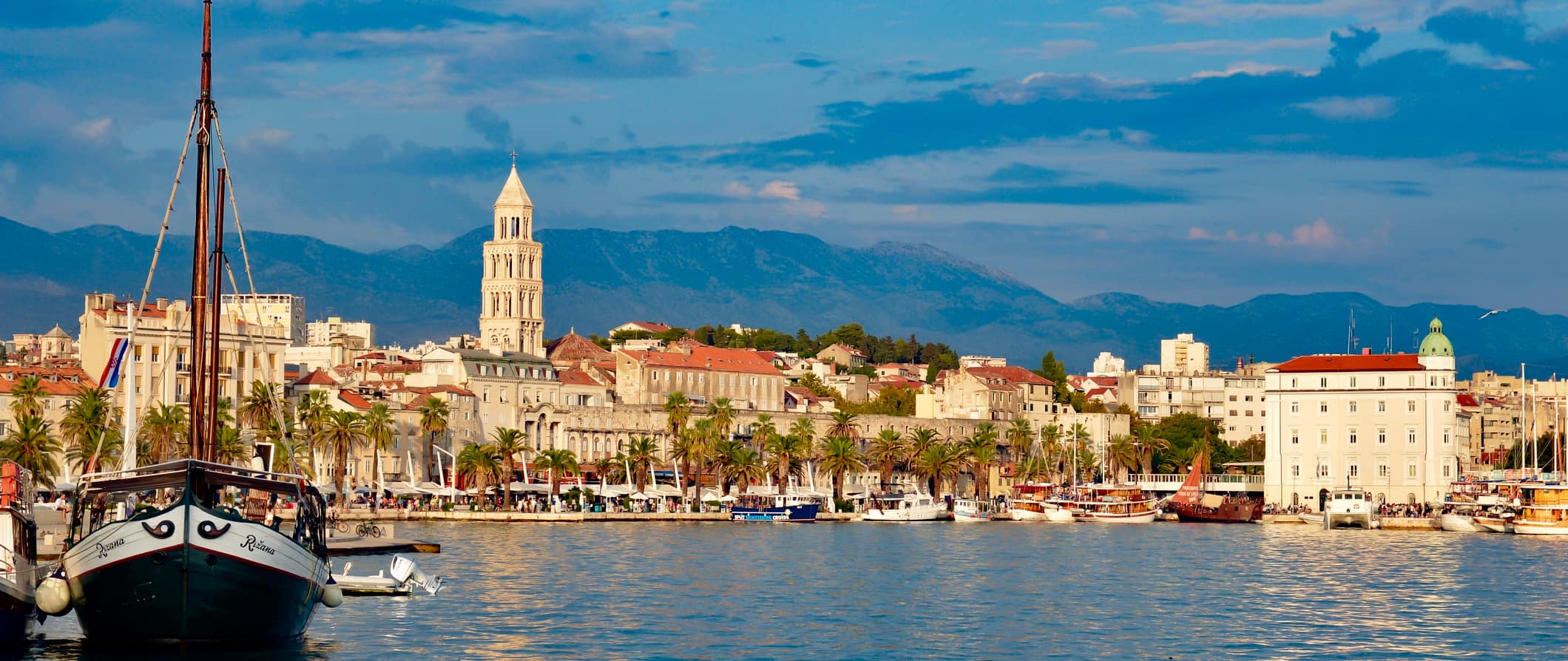
Public transportation – Public transportation is fairly inexpensive in Croatia, with most tickets costing between 0.53-2.50 EUR, depending on the distance you go. Both Dubrovnik and Split have day passes that cost around 4-5 EUR for a 24-hour pass and 10-12 EUR for a 72-hour pass. Buses and trams are the main ways to get around Croatia’s cities.
Bus – To get around the country, Flixbus or Arriva is the most budget-friendly option. Croatia has invested heavily in improving its roads in recent years and traveling by bus is fast, cheap, and comfortable. Most buses have free Wi-Fi, reclining seats, sockets, and AC. You can use Get By Bus for routes and pricing information.
The cross-country 4.5-hour trip from Dubrovnik to Split starts at 15 EUR on Flixbus in the low season and 20 EUR on Arriva. The 2.5-hour trip from Split to Zadar starts at 11 EUR in the low season. Split to Zagreb takes around 5 hours and costs 20-25 EUR. Rovinj to Pula takes just under an hour and costs 5 EUR, while Pula to Zagreb costs around 20 EUR and takes 4.5-5 hours.
Note that buses have a 1-2 EUR fee for checked bags.
To find bus routes and prices, use BusBud .
Train – The train lines in Croatia have been neglected in favor of improving the roads. Therefore, trains are slow and infrequent. They also don’t run along the Dalmatian coast, making them more or less useless for most travelers. I wouldn’t recommend the train here.
Ferry – Ferries in Croatia are efficient and affordable. Most ferries in Croatia are owned by the national carrier Jadrolinija and are large car ferries (so you can bring a vehicle). There is also a network of catamarans that link many of the smaller islands. Most smaller ferries start at 5 EUR during the low season and 10 EUR during the high season. Use Croatia Ferries for routes and prices.
For the 4.5-hour ferry between Dubrovnik and Split, expect to pay at least 38-50 EUR.
Flying – Croatia Airlines is the domestic carrier and offers flights between Zagreb and other airports within the country, including Dubrovnik, Split, Pula, and Zadar. Prices are relatively comparable between all the destinations, with one-way tickets starting at around 50 EUR.
Car rental – Car rentals start around 15 EUR per day. An International Driving Permit (IDP) is required before you can rent a car (it’s usually not enforced, but it’s better to be safe than sorry). For the best rental car prices, use Discover Cars .
When to Go to Croatia
The best time to visit Croatia is during the shoulder season between May-June or September-October. During these months, you can expect lovely weather and fewer crowds. This is also the perfect time for outdoor activities like hiking, boating, and kayaking. Expect temperatures around 22°C (71°F) on the coast. Further inland, temperatures are a little cooler during these times of year but still pleasant. You’re likely to encounter rain, so packing layers will keep you comfortable in the variable weather.
During the low season (November-April), the country is a lot cheaper, making it an affordable place to visit for anyone on a tight budget. However, many places (including hotels and restaurants) close for the winter due to the lack of tourists so your options are much more limited during this time. The Dalmatian Coast is rainy and inland cities, like Zagreb, even get some snow. Average high temperatures across the country are below 9°C (49°F) so you’ll definitely want to bring lots of warm layers. Daylight hours are short as well, so this isn’t the ideal time for outdoor activities.
During the peak season (July and August), expect to pay double what you would in the low season. Dubrovnik is especially busy (and expensive) during this time. The coastal resorts are packed with families and cruisers. Temperatures hover around 30°C (86°F) though so the weather is at its best. If you choose to visit during the busy summer months, you’ll still want to bring rain gear, especially if you’re visiting inland destinations.
How to Stay Safe in Croatia
Croatia is a safe country to visit. Violent crime against tourists is rare. Pickpocketing and theft can occur in busy areas in Zagreb and Dubrovnik so be sure to keep an eye on your belongings (especially while on crowded public transportation or at a bus station).
Croatia’s bars and nightclubs are known for overcharging so be vigilant and check your bill before paying. It is also important to watch your drink and never leave it unattended. Drink spiking has been known to happen at nightclubs in Zagreb, Zadar, Split, and Dubrovnik. It’s rare, but it never hurts to be extra careful.
Solo female travelers should generally feel safe in Croatia. However, the standard precautions apply (never walk home alone at night intoxicated, don’t accept drinks from strangers, etc.), especially in the party towns. For specific information about a place, read one of the many helpful solo female travel blogs on the web. They can give you tips and advice that I can’t.
While out hiking take care not to wander far off the beaten path as there are still some regions in Croatia with unexploded landmines. If in doubt, ask locals for advice or hire an experienced guide.
Scams here are rare butt you can read about common travel scams to avoid in this blog post.
If you experience an emergency and require assistance, dial 112.
Always trust your gut instinct. Make copies of your personal documents, including your passport and ID.
The most important piece of advice I can offer is to purchase quality travel insurance. Travel insurance will protect you against illness, injury, theft, and cancellations. It’s comprehensive protection in case anything goes wrong. I never go on a trip without it as I’ve had to use it many times in the past. You can use the widget below to find the policy right for you:
Croatia Travel Guide: The Best Booking Resources
These are my favorite companies to use when I travel. They consistently have the best deals, offer world-class customer service and great value, and overall, are better than their competitors. They are the companies I use the most and are always the starting point in my search for travel deals.
- Skyscanner – Skyscanner is my favorite flight search engine. They search small websites and budget airlines that larger search sites tend to miss. They are hands down the number one place to start.
- Hostelworld – This is the best hostel accommodation site out there with the largest inventory, best search interface, and widest availability.
- Booking.com – The best all around booking site that constantly provides the cheapest and lowest rates. They have the widest selection of budget accommodation. In all my tests, they’ve always had the cheapest rates out of all the booking websites.
- HostelPass – This new card gives you up to 20% off hostels throughout Europe. It’s a great way to save money. They’re constantly adding new hostels too. I’ve always wanted something like this and glad it finallt exists.
- Get Your Guide – Get Your Guide is a huge online marketplace for tours and excursions. They have tons of tour options available in cities all around the world, including everything from cooking classes, walking tours, street art lessons, and more!
- The Man in Seat 61 – This website is the ultimate guide to train travel anywhere in the world. They have the most comprehensive information on routes, times, prices, and train conditions. If you are planning a long train journey or some epic train trip, consult this site.
- Rome2Rio – This website allows you to see how to get from point A to point B the best and cheapest way possible. It will give you all the bus, train, plane, or boat routes that can get you there as well as how much they cost.
- FlixBus – Flixbus has routes between 20 European countries with prices starting as low 5 EUR! Their buses include WiFi, electrical outlets, a free checked bag.
- SafetyWing – Safety Wing offers convenient and affordable plans tailored to digital nomads and long-term travelers. They have cheap monthly plans, great customer service, and an easy-to-use claims process that makes it perfect for those on the road.
- LifeStraw – My go-to company for reusable water bottles with built-in filters so you can ensure your drinking water is always clean and safe.
- Unbound Merino – They make lightweight, durable, easy-to-clean travel clothing.
- Top Travel Credit Cards – Points are the best way to cut down travel expenses. Here’s my favorite point earning credit cards so you can get free travel!
- BlaBlaCar – BlaBlaCar is a ridesharing website that lets you share rides with vetted local drivers by pitching in for gas. You simply request a seat, they approve, and off you go! It’s a cheaper and more interesting way to travel than by bus or train!
Croatia Travel Guide: Related Articles
Want more info? Check out all the articles I’ve written on backpacking/traveling Europe and continue planning your trip:

The 7 Best Hotels in London

10 Scotland Road Trip Tips You Need to Know Before You Go

The Perfect 7-Day Croatia Itinerary


The 6 Best Hotels in Copenhagen

The 6 Best Hotels in Florence

The 7 Best Hotels in Madrid
Get your free travel starter kit.
Enter your email and get planning cheatsheets including a step by step checklist, packing list, tips cheat sheet, and more so you can plan like a pro!

- Where To Stay
- Transportation
- Booking Resources
- Related Blogs
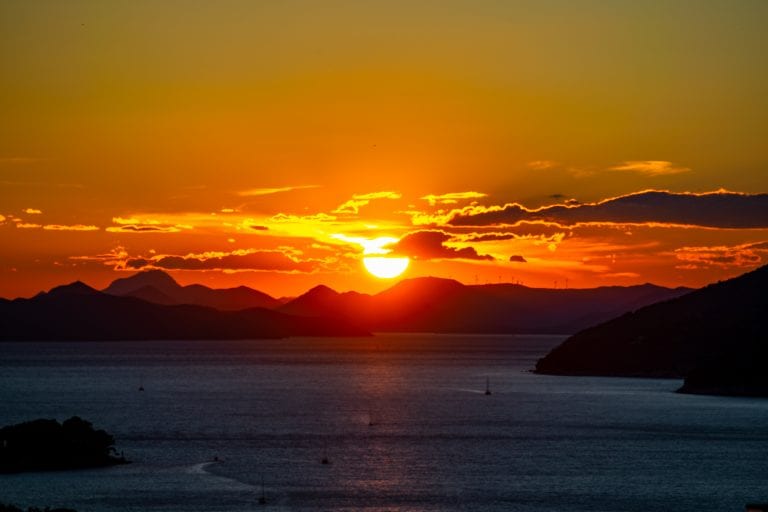
Croatia Travel Budget: Is Croatia Expensive?
Wondering how much a trip to Croatia costs, and if Croatia (or more accurately, Dubrovnik) really is expensive to visit? This Croatia travel budget guide is for you!
The travel budget for Croatia outlined here reflects our exact expenses during a 2 week trip to Croatia in July–in other words, the most expensive time to visit the country.
This trip to Croatia was characterized by expensive days (excursions, lodging that was on the pricier side for us at the time), balanced with very inexpensive days–for one entire week in Jelsa, we paid for almost nothing outside of our lodging and groceries.
The Croatia travel budget outlined here represents our time spent backpacking the country on what we would consider a flashpacker budget. Basically, no to dorm rooms, yes to a/c, and no to major luxuries.
We visited Split , Krka National Park, Hvar , and Dubrovnik during this trip, focusing our time on Croatia’s popular Dalmatian coast.
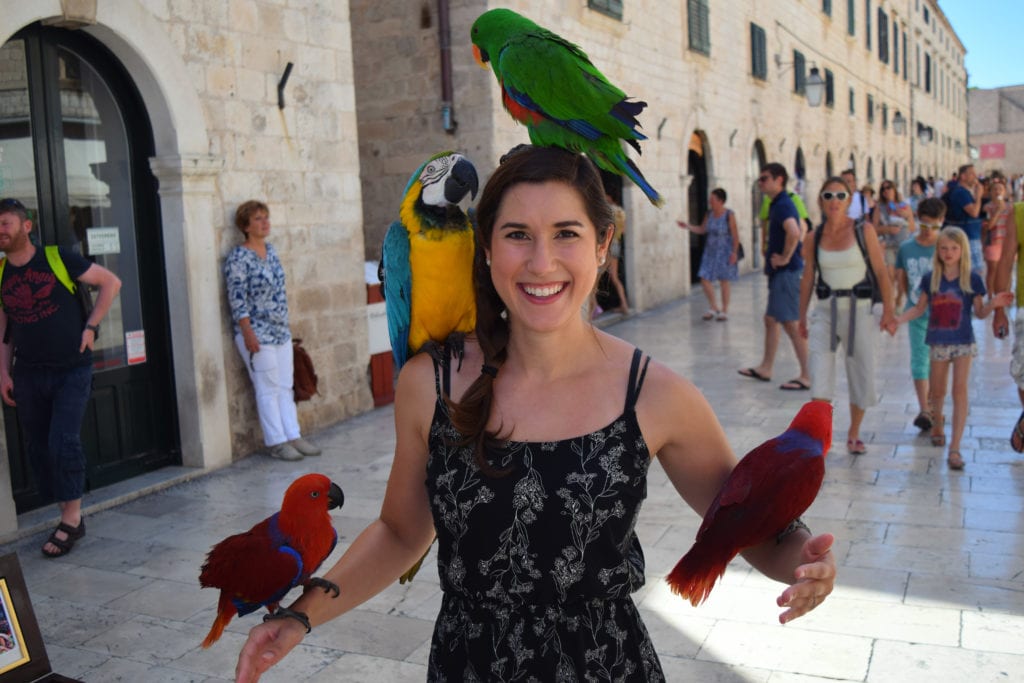
Some links in this post may be affiliate links. If you make a purchase through one of these links, we may earn a small commission at no extra cost to you. Please see our disclosure policy for more detail.
The balance worked out well: our travel budget for Croatia ended up being right on target.
We spent 13 full days in the country, averaging a total Croatia trip cost of $107.12/day, or $53.56 per person, per day. This added up to a total cost of $1392.61.
All expenses are listed in USD unless otherwise noted, and, as usual for our travel budget roundups, we don’t include the costs of entering or leaving the country here, as those expenses can vary so dramatically depending on your starting point (in our case, this visit to Croatia was part of our planned 6 month round the world trip ).
Before getting into our detailed breakdown, it’s also worth noting that we have visited Croatia several more times since this trip (it’s one of our favorite countries in the world!), and though we don’t tend to travel on as tight of a budget anymore, a trip of this nature is still feasible on a similar budget.
However, prices for certain popular tourism activities–such as walking the walls in Dubrovnik or visiting Plitvice Lakes National Park –have risen dramatically. To capture these overall trip costs now, we’d recommend visiting outside of the absolute peak of July and August if at all possible!
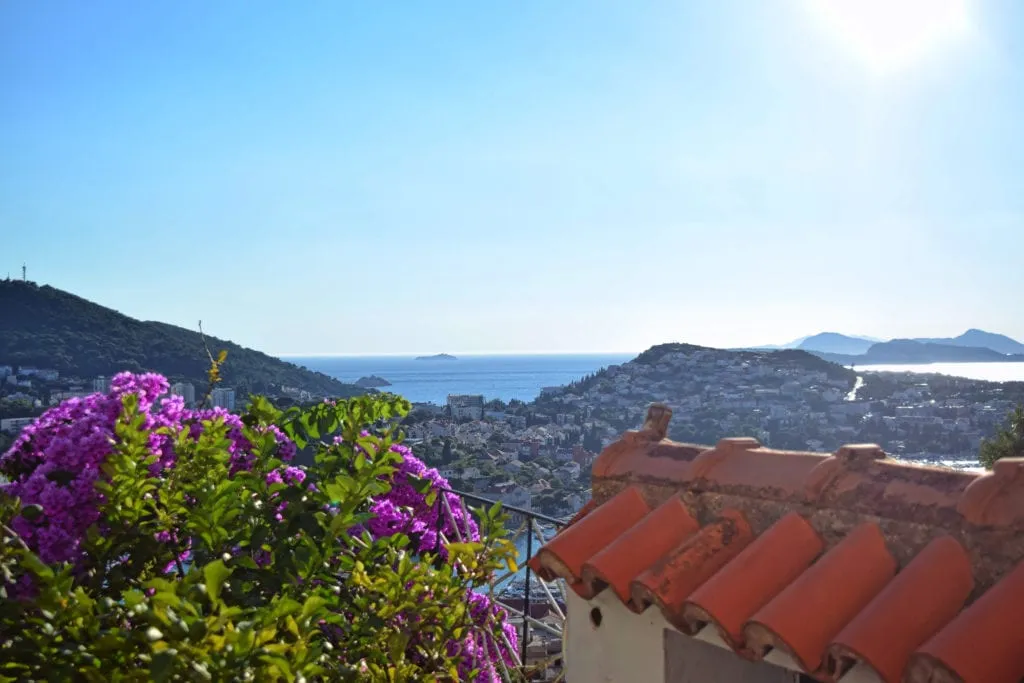
Our Lodging Costs in Croatia
Total: $799.81 for 14 nights.
At an average of $57.13/night, lodging ate up a bigger chunk of our travel budget for Croatia than in our previous stop of Slovenia .
Split, the island of Hvar , and Dubrovnik are all tourist hot spots that we were visiting during the high season, but compromising a bit on location for our lodging helped keep costs reasonable, even if it did keep us away from the city centers.
Our Transportation Budget in Croatia
Total: $102.29.
Considering that we had 3 base destinations during our time in Croatia, and lodging in both Split and Dubrovnik that required public transportation to reach their city centers, transportation costs ended up being fairly reasonable.
The ferry between Hvar and Split cost less than $10/person each way, and the bus from Split to Dubrovnik cost less than $20/person.
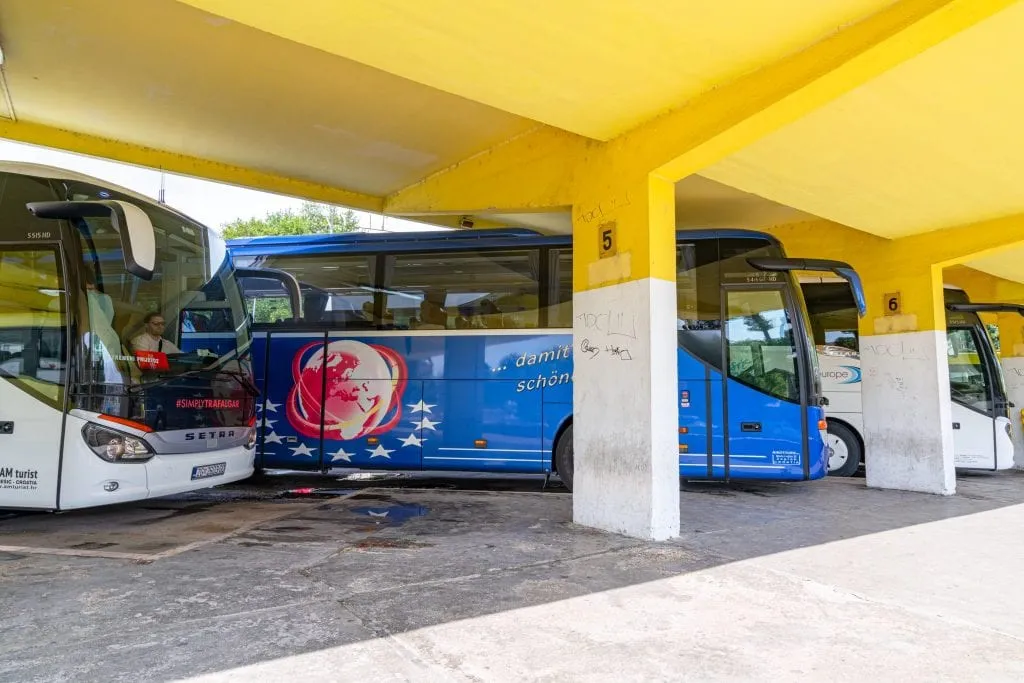
Our Restaurant Expenses in Croatia
Total: $105.82.
With no kitchen access in Split and limited kitchen access in Dubrovnik, we had more restaurant meals in Croatia than in many of our European destinations.
We compensated with several rounds of street food that generally ran between $3-4 per person–the prices felt quite budget-friendly for Croatia, but feel laughably expensive to type out while sitting here in Thailand.
Our Grocery Expenses in Croatia
Total: $103.83.
Groceries were very reasonable in Croatia, even in tourist destinations–$103.83 fed us every meal during our week in Jelsa (excluding the fresh garden produce that our Airbnb host was very generous with), about half our meals in Dubrovnik, and a couple of meals in Split.
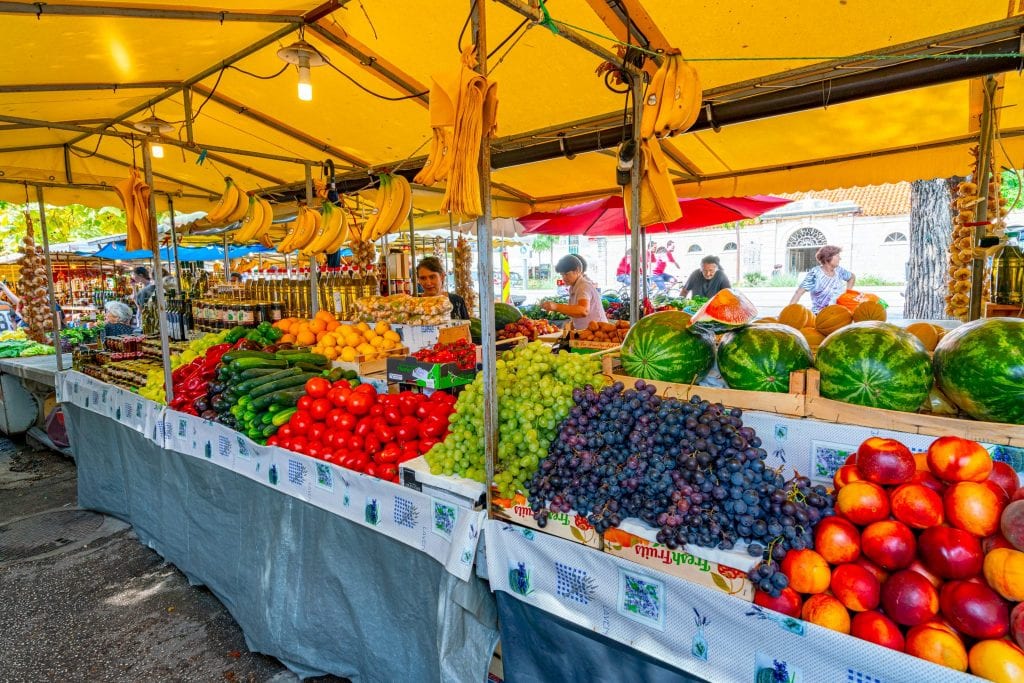
Our Tour + Excursion Travel Budget for Croatia
Total: $238.89.
Our Croatia travel budget was definitely impacted by our liberal use of excursions, but we don’t regret it–there was just so much to do!
The bulk of our expenses in this category was eaten up by a day trip to Krka National Park from Split (just over $50/person), a one day Dubrovnik Card (about $25/person), and our kayaking excursion in Dubrovnik (about $33/person).
The kayaking tour was not only a bargain, it was our favorite excursion of the entire European leg of our trip.
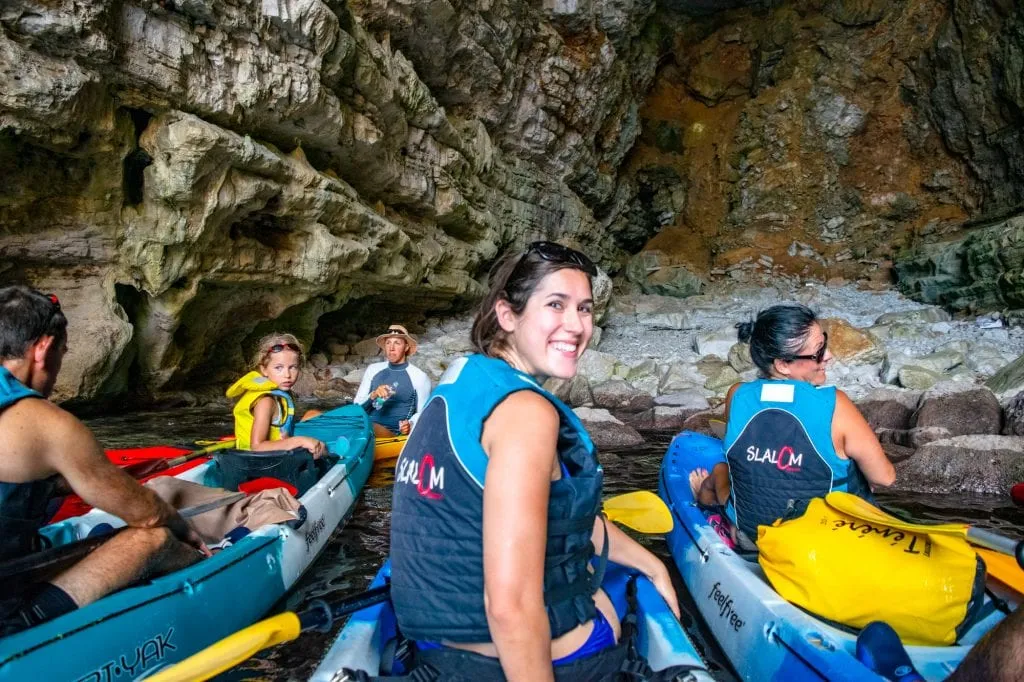
Miscellaneous Trip to Croatia Costs
Total: $41.97.
Several bathroom visits and forgettable odds and ends ended up in this category, but the most notable expense was our decision to spend about $20 and get a couple of simple pairs of swimming goggles in Jelsa.
They greatly improved our time in the Adriatic Sea while on Hvar, and I wish we had packed them to begin with. Now we have these we take with us.
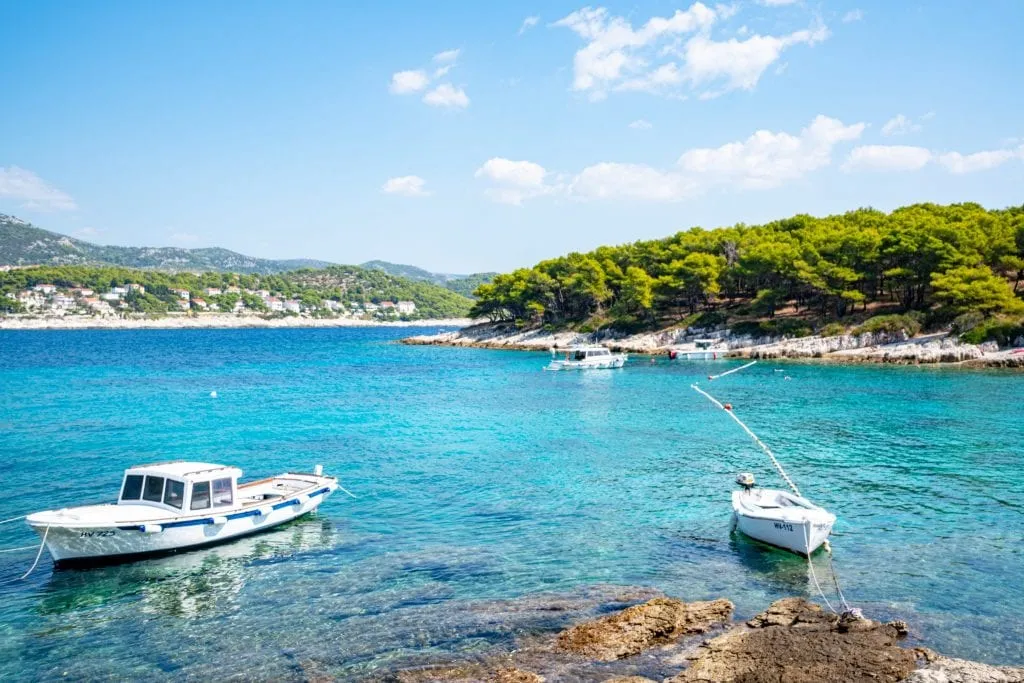
We were very satisfied with our travel budget for Croatia, though it’s debatable whether or not the trade-off for lodging that was further away from attractions in exchange for cheaper prices was worth it.
So, is Croatia expensive? Compared to nearby destinations like Piran , Sarajevo , and Kotor , absolutely–especially in the high season, and especially in ever-popular Dubrovnik.
However, it’s worth it: years after this trip (and with several more trips to Croatia under our belts), Croatia remains one of our favorite places in the world.
Visiting during the shoulder or off-season is a great way to limit your Croatia travel budget (we loved visiting Dubrovnik in February, and Plitvice and Hvar in September!).
Mixing in less-iconic destinations like those on the Istrian peninsula or even the capital city of Zagreb is also fantastic for lowering your overall trip to Croatia cost.
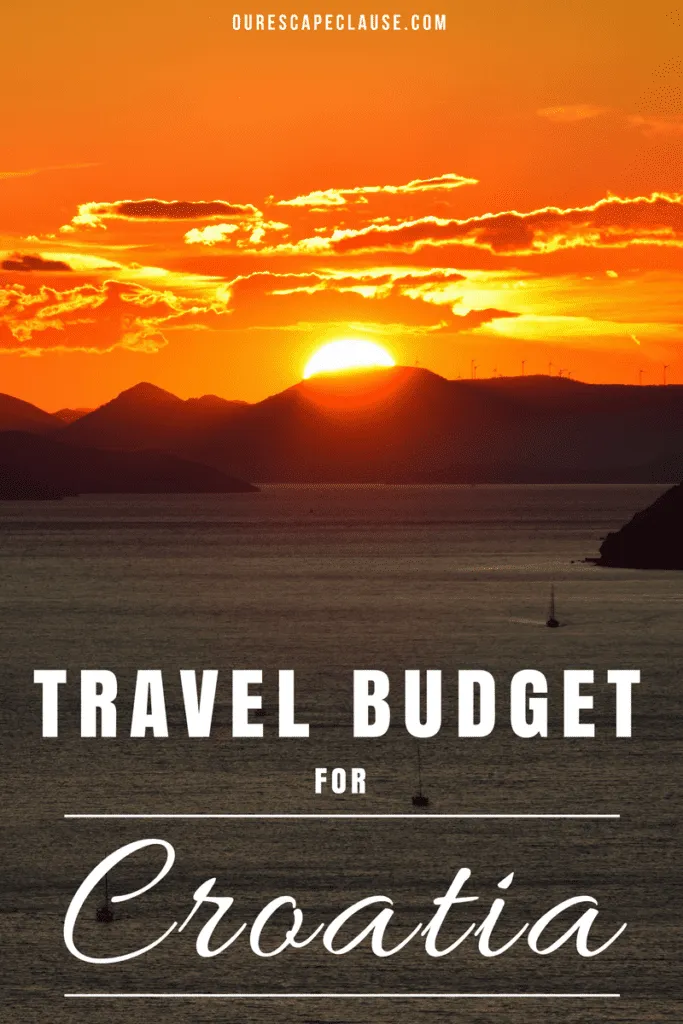
About Kate Storm

In May 2016, I left my suburban life in the USA and became a full-time traveler. Since then, I have visited 50+ countries on 5 continents and lived in Portugal, developing a special love of traveling in Europe (especially Italy) along the way. Today, along with my husband Jeremy and dog Ranger, I’m working toward my eventual goal of splitting my life between Europe and the USA.
6 thoughts on “Croatia Travel Budget: Is Croatia Expensive?”
Hi, Jeremy and Kate@ I was happy to found Croatia on your must see list. It is in my mind for s long timec to visit, and now, because of you, I can read your review for my next holiday in Croatia. I wondered, if, except your blog, you have also a vlog on You Tube. I hope you are ok, during your holiday in USA. Have a great time. Keep in touch, Cris
Hi Cris! Croatia is truly magnificent, hope you have a wonderful trip there!
We don’t do any vlogging or Youtubing right now, and don’t have plans to change that, but you never know what the future holds!
I’m traveling to Dubrovnik next week and was hoping to do a kayak trip. Just wondering which one you did- where did you go from, how long was it, where did it take you etc Thenks!
We took our tour back in 2016 and just booked it in person from a saleswoman in town, so I don’t know the exact name. It took us around Lokrum Island, briefly into some caves, and into a cove to swim and cliff jump. I believe it was a 2-3 hour tour, give or take. The one I linked here appears to follow the same itinerary–it’s a pretty popular one! Be prepared for aching shoulders, but it’s worth doing in my opinion.
Hi Laura: Thanks for your blog and great tips. We are a Canadian couple in our youthful 60’s. My husband is very active, skis, bikes, hikes. I now have a 1 knee issue and I am awaiting more knee surgery. I use a cane, wear a brace. I have booked a month in Aug. – Sept. 2022 trip to Croatia for us. We will have a car to drive. I have booked hotels, apts. in many cities. Excluding Dubrovnik as we were there before. We need input on Brac, Hvar and Korcula islands. To get to by ferry car on Brac, Hvar and walk on in Korcula. We are driving to Pula and throughout to Split and many areas between. Any suggested places, seeing heritage sites and your thoughts would be appreciated. Thank you. Regards Nancy Bradbury
Hi Nancy! Sadly, we haven’t been to Brac or Korcula yet ourselves–hopefully before too long!
We do have a whole post on Hvar, though! We’ve been twice and love it: https://www.ourescapeclause.com/best-things-to-do-in-hvar-croatia/
Leave a Comment Cancel reply

Prices in Croatia: Is Croatia Expensive?
January 31, 2024 | Posted in: Croatia
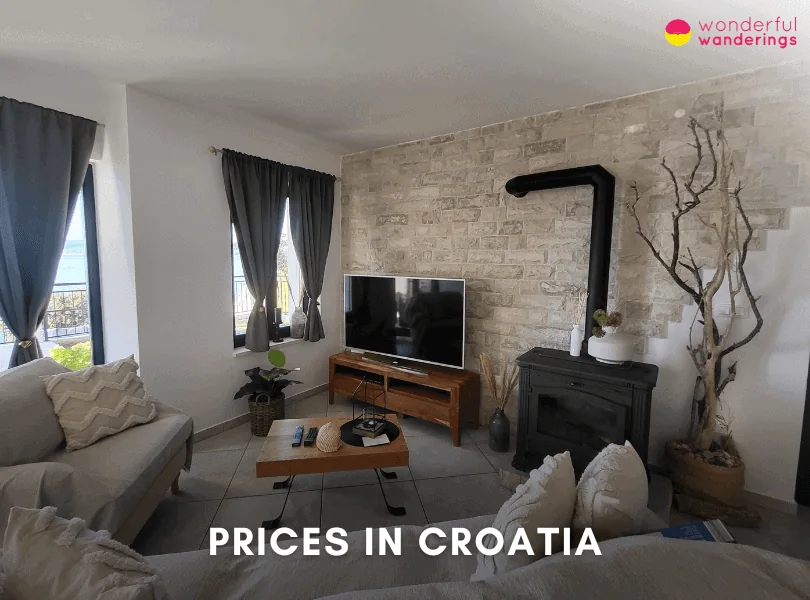
Croatia is an expensive destination due to surging popularity in coastal cities like Dubrovnik and Split, increasing prices for lodging, dining, attractions and goods. Prices also reflect higher tourism incomes and taxes, such as 25% VAT, concentrated in these areas. Travelers can use affordable transportation like discounted rail passes and stay in hostels, private rooms or local guesthouses. Shop at markets, cook meals and avoid touristy restaurants to lower dining expenses. Limit visits to 2-3 bases to minimize transport costs. Experience Croatia's nature and culture through free activities like hiking national parks, wandering historic towns and relaxing on beaches.
Some of Croatia’s best commodities are boutique coastal hotels and upscale restaurants blending Mediterranean cuisine with quality regional ingredients. Top things to do in Croatia include Diocletian’s Palace, Zagreb’s upper town and funicular, the Museum of Broken Relationships, Dubrovnik’s Game of Thrones sites and Rovinj’s Golden Cape Park. Visiting during shoulder or low season means fewer crowds and lower prices. Accommodation prices with pleasant weather can be 50% less outside July/August. The low season also enables the experience of more local culture through seasonal events and traditions, providing an authentic look into the locals' daily lives.
How Much is the Fare of Traveling by Train to Croatia?
How is traveling by train compared to plane when visiting croatia, how much does a plane ticket cost for croatia, how much does the average taxi fare cost, how much does the average bus fare cost, how much is the average car rental cost in croatia, how much would you be paying for the fuel of the rental car, are fuel prices expensive in croatia, are basic food products expensive in croatia, what is the cost for a dinner for two in a restaurant in croatia, what is the average cost of a hotel room in croatia, is public transport expensive in croatia, is petrol expensive in croatia, what is the cost of a bus or metro ticket in croatia, are taxis expensive in croatia, what is the average salary per month in croatia, what are the best accommodations you can find in croatia, what is the price of basic food in croatia, what is the price of tobacco in croatia, what is the price of alcohol in croatia, where would you eat in croatia if you wanted to save money, where to have cheap drinks in croatia but still enjoy them, what are the best bars in croatia, how can you lower your expenses in croatia, why book your ticket ahead when planning to visit croatia, is croatia expensive, is croatia worth the visit, what is the most expensive city to live in croatia, why is croatia expensive.
Croatia is considered expensive compared to neighboring countries for a few reasons. Firstly, Croatia has become an increasingly popular tourist destination, especially along the Adriatic coastline and islands. Places like Dubrovnik, Split and Hvar attract millions of yearly visitors. Secondly, the high demand drives increasing prices for accommodations, food, attractions and other commodities. Croatia adopted the euro currency in January 2023 and the changeover has contributed to general price inflation across different sectors. Thirdly, Croatia heavily relies on imported goods like fuel, cars, electronics, clothing and other products. This means fluctuations in currency markets and global commodity prices impact and import costs get passed through to consumers. Fourthly, there is a divide between the more affluent cities on the coast that cater heavily to tourists and rural inland, less economically developed regions. Prices reflect higher incomes and tourism revenue concentrated in certain areas. Lastly, Croatia has a 25% value-added tax (VAT) for many goods and services. There are also special taxes on alcohol, tobacco and coffee. These taxes contribute to higher-end consumer prices.
Traveling by train is an affordable way to get around Croatia. The national rail operator is Croatian Railways (HŽ). A second-class one-way ticket from Zagreb to Split costs €18 ($20, £15). Zagreb to Rijeka costs €11 ($13, £9) and Zagreb to Zadar is at €13 ($15, £11). Some shorter distance fares include Split to Zadar, costing €8 ($9, £6) per trip. Travelers can purchase tickets onboard trains for single routes. It is recommended to book in advance online via the Croatian Railways website or mobile app to reserve seats and get timetables. Advance booking also provides a 5% discount on fares. Trains are a convenient and scenic way to travel between cities and enjoy views of Croatia's countryside and inland regions, with fares being cheaper than buses on many routes.
Traveling by train compared to plane in Croatia has key differences. Trains are generally cheaper than planes for transportation within Croatia . A train from Zagreb to Split costs €10 ($11, £8) and a flight costs over €91 ($100, £78). Flights are faster for long distances, with a flight from Zagreb to Dubrovnik taking 1 hour compared to 6+ hours by train. Trains can be more convenient for shorter distances when factoring in airport transportation and check-in times. Croatia's train network connects major cities like Zagreb, Rijeka and Split but has limited routes to smaller towns and islands compared to the more extensive bus network. Flights serve major coastal cities and airports. Traveling by train allows one to see more of the Croatian countryside and inland regions than flying, but some popular tourist destinations like the islands are inaccessible by train. The best option depends on the traveler's budget, time constraints and destinations.
Traveling to Croatia by plane can be affordable if booked in advance. Flights from major European hubs like London, Paris and Berlin start from €91 ($100, £78) roundtrip during off-peak seasons like spring and fall. Costs can rise significantly during the busy summer months of June through August. A roundtrip flight from London to Zagreb or Dubrovnik could cost €228 ($250, £196) to €365 ($400, £314) and above during peak season. If flying from further afield, like in North America, travelers can expect higher costs. A roundtrip flight from New York to Zagreb averages €730 ($800, £629) to €912 ($1000, £787). Routing through a European hub decreases the cost to €472 ($600, £548) or below. Booking at least 2-3 months in advance yields the best fares. Being flexible with travel dates also helps find cheaper tickets. It is recommended to avoid school holidays and weekends when flight demand increases. Flying to Croatia is doable on most budgets if planned wisely.
What should you Consider when Going Around Croatia?
Listed below are what a traveler should consider when going around Croatia.
- Transportation. Buses offer an extensive network connecting most destinations in Croatia for budget travelers, with one-way fares starting from €4 ($5, £3). Consider bus passes like the Croatia Bus Pass by Eurolines for unlimited travel. Trains link Zagreb with major coastal cities but have limited schedules. Rent cars from local companies for better deals and opt for fuel-efficient compact cars as gas prices are high.
- Accommodation. Hostels provide cheap dorm beds from €10 ($11, £8) per night, while private rooms with shared baths average €27 ($30, £23) per night. Guesthouses operated by locals offer a cozy environment at lower costs than hotels. Seek hotels, apartments and rooms to rent in smaller towns over big tourist hubs. Check with tourist offices for homestay and farm stay programs for a local experience. Couchsurfing or house-sitting could lower costs, but availability may be limited.
- Food. Look for bakeries selling burek pastries for under €1.82 ($2, £1.57) per piece. Farmers' markets have seasonal produce at lower costs than supermarkets. Grocery store Konzum has locations nationwide for self-catering supplies. Avoid sit-down meals in old-town tourist areas and seek out family-run taverns called konobas. Pick up store wine for under €4 ($5, £3), cheaper than in bars and restaurants.
- Costs. Avoid eating at restaurants directly on town squares; instead, go 1-2 blocks over for lower prices. Self-catering by shopping at local markets and preparing meals saves substantially. Opt for private rooms in hostels with access to a kitchen over hotels. Consider renting an apartment via Airbnb with friends to lower accommodation costs.
- Itineraries. Limit to 2 or 3 bases to minimize transport time and costs. For island hopping, cluster islands in geographic proximity like Hvar, Korčula and Brač. Account for travel time between islands, as ferry schedules can be limited.
- Activities. Hike in national and nature parks for beautiful scenery without an entrance fee. Wander through historic old towns and opt for free walking tours over paid tours. Relax on quieter beaches away from crowded resort areas. Check with local tourist offices and accommodation for free festivals and events.
- Guidebooks. Guidebooks suggest budget restaurants located away from tourist areas. They provide historical context to enhance free self-guided wandering. Local markets and budget supermarkets are often listed. Sample itineraries make planning easier for those with limited time.
- Cash. Have some local currency on arrival for immediate expenses like food before exchanging more. ATMs have good coverage in cities and towns but can be limited to islands. Inform the bank when traveling internationally to avoid issues using cards. Exchange offices and banks allow exchanging foreign cash, though they have higher fees than ATM withdrawals.
- Travel Insurance. Comprehensive insurance covers emergency medical treatment, prescriptions, trip cancellations or interruptions, lost baggage and flight delays. Read policy documents closely and ensure COVID-19-related incidents are included. Purchase insurance immediately after booking flights and accommodation. Opt for higher coverage limits if participating in adventure sports or extensive water activities.
Croatia's average taxi fare cost depends significantly on the city and distance traveled. Zagreb’s base fare starts at €1.30 ($1.43, £1.12) for the first 4 kilometers (2.4 miles). Every subsequent kilometer is charged at €0.014 ($0.87, £0.012) per kilometer up to 6 kilometers (3 miles). A 10 kilometers (6 miles) taxi ride in Zagreb would cost €8 ($9, £6). In tourist hotspots like Dubrovnik and Split, the base fare can be €1.82 ($2, £1.57) with a per kilometers rate of €1.30 ($1.43, £1.12) due to higher demand. The farther the distance, the more economical taxis become over other transport options. Additional fees apply for luggage, booking in advance, night travel and other factors. Tips are customary at 5-10% of the metered fare. Taxis in Croatia's top destinations are moderately priced and offer competitive pricing compared to other European countries. For travelers looking to get around congested historic city centers easily, taxis can be easier to use than crowded buses or traversing unfamiliar streets. It is more costly than public transit and taxi transfers in Croatia offer a comfortable and hassle-free way for foreign tourists to reach key sights, hotels, restaurants and more.
Croatia's average bus fare cost varies depending on the route, distance traveled and booking in advance or purchase onboard. For shorter journeys of 50 kilometers (31 miles) within a city or region, expect to pay between €1.30 ($1.43, £1.12) to €3 ($4, £3). Some examples of typical bus fares in Croatia are Zagreb to Rijeka at 120 kilometers (74 miles) costs €7 ($8, £6), Split to Zadar at 230 kilometers (142 miles) costing €13 ($14, £11) and Dubrovnik to Zagreb at 550 kilometers (341 miles) costing €33 ($36, £28). Long-distance express buses traveling between Croatia's major cities like Zagreb, Split and Dubrovnik typically cost €13 ($14, £11) to €40 ($43, £34) for a one-way ticket. Prices increase during the peak summer months. Travelers can purchase tickets in advance on the bus company website or at the station to secure a seat. Buying at the last minute onboard may mean standing until a seat becomes available. Discounts are sometimes offered for return tickets or advanced reservations.
Is Traveling with Bus Around Croatia Worth It?
Yes, traveling by bus around Croatia is worth it for budget travelers and those who want an efficient way to get around the country. Buses connect virtually all destinations in Croatia, including smaller towns and national parks. The extensive network makes buses convenient for both short and long-distance trips. Travelers can take a bus from Dubrovnik to Split along the coastline for under €15 ($16, £13) or hop buses to traverse the country between Zagreb and Dubrovnik for €30 ($32, £28). Buses offer a comfortable way to travel, with amenities like reclining seats, air conditioning and Wi-Fi access and are the most preferred mode of transportation in Croatia. Bus travel may not be as fast as driving oneself, it avoids the hassle of navigating unfamiliar roads and finding parking. Night buses operating between major cities can save travelers money on a night's hotel accommodation. Given that bus fares are lower than domestic flights or trains, they provide good value, allowing visitors to allocate more of their budget towards activities exploring Croatia's islands, nature and historic towns.
The average cost of rental cars in Croatia ranges from €27 ($30, £23) to €64 ($70, £55) per day depending on the type of vehicle, rental company, season and rental duration. Compact cars like the Volkswagen Polo or similar models start at €27 ($30, £23) daily during the off-season. Mid-size sedan models like the VW Golf cost approximately €41 ($45, £35) per day, while standard SUVs €64 ($70, £55) and above. Expect car rental prices to increase by 20-30% in the peak summer months of July and August. Additional charges may apply for extras like GPS rental, additional drivers, one-way rentals, young driver fees, etc. Leading car rental companies operating in Croatia include international brands like Hertz, Avis and Europcar and local companies like Oryx Rentals and Avant Car. When renting for longer durations of 5+ days, weekly rates offer the best value. It is also advisable to book at least 2-4 weeks in advance for the best rates. The key considerations include vehicle size, transmission type (manual vs automatic), mileage limits and insurance options.
Fueling a rental car in Croatia will cost travelers €1.34 ($1.47, £1.16) to €1.46 ($1.60, £1.26) per liter and prices vary for diesel or Eurosuper 95 gasoline. For a compact rental like a Volkswagen Polo with a 45-liter tank, travelers can expect to pay roughly €60 ($65, £51) to fill up from empty. Prices can fluctuate, but these rates provide an accurate estimate for tourists.
Travelers should factor in fuel costs based on the rental car's tank size and expected mileage. For smaller vehicles that average 5-7 liters per 100 kilometers (62 miles), refueling may be needed every 300 kilometers (186 miles) to 400 kilometers (248 miles). It is advisable to refill often and avoid running low on long stretches of road. Fuel-efficient vehicle classes and taking advantage of supermarket fuel stations where prices run cheaper than highway rest stops or gas stations in the city center allow travelers to keep fuel costs in check.
Yes, fuel prices in Croatia are on the higher side compared to some other European countries. The average price for a liter of gasoline as of January 2023 is €1.34 ($1.47, £1.16) per liter. Fuel prices in Zagreb match the national average prices across Croatia. Fuel is relatively expensive compared to some neighboring countries. Prices fluctuate but have generally been rising in recent years. Fuel prices fluctuate frequently but have generally risen over the past few years. Driving in Croatia, especially long distances along the coast or to the islands, can be expensive due to the high fuel costs. Prices also increase during the busy summer tourist season. Fuel is still cheaper than in many Western European countries. Budget-conscious travelers may want to consider public transportation options or more fuel-efficient rental car choices.
No, basic food prices in Croatia are affordable and comparable to other European countries. A loaf of bread costs €1.50 ($1.65, £1.29), eggs are approximately €2 ($2.22, £1.72) per dozen, milk is €1.50 ($1.65, £1.29) per liter and chicken breast runs €4 ($4.39, £3.44) per kilogram at local supermarkets. Produce like tomatoes, potatoes, onions and fruits range from €1.50 ($1.65, £1.29) to €3 ($3.29, £2.58) per kilogram on average. Basics like bread, eggs, dairy, meats, fruits and vegetables remain reasonably priced for residents and visitors. Due to Croatia’s extensive coastline and islands, seafood is abundant and relatively affordable. Supermarkets provide the best value for stocking up on staples during a trip. Open-air markets often offer fresh, seasonal produce for lower costs. Travelers on a budget can find plenty of affordable Croatian food options across the country.
The average cost of dinner for two people, including appetizers, main courses and drinks at a mid-range restaurant in Croatia, falls between €20 ($21, £17) and €40 ($43, £34). In the popular coastal tourist cities like Dubrovnik, Split and Hvar, expect to pay at the higher end, averaging €40 ($43, £34) and above for two. In smaller inland towns, a comparable meal may run €15 ($16, £13). Upscale restaurants in hotspots like Dubrovnik run €54 ($60, £47) to €91 ($100, £78) for dinner for two with wine pairings. More budget-friendly options like pizzerias or traditional taverns offer filling meals for two under €27 ($30, £23). Croatia provides plenty of dining options at varying price points. Travelers wanting a nice dinner out can expect to budget €20 ($21, £17) to €40 ($43, £34) per person at an average mid-range restaurant, depending on location.
Hotel room prices across Croatia vary greatly based on location, season, amenities, etc. In popular tourist destinations like Dubrovnik, Hvar and Split in peak summer, luxury waterfront hotels run €249 ($273, £235) per night, while basic hotels cost €91 ($100, £78). In less visited areas of Croatia during the off-season, prices come closer to €45 ($50, £39) to €64 ($70, £55) per night for mid-range hotels. Apartments, private rooms and budget hostels provide cheaper lodging alternatives for €30 ($32, £28) a night. Travelers can find hotel rooms averaging €91 ($100, £78) to €136 ($150, £117) per night across Croatia, depending on the season and region, with lower prices available through vacation rentals or hostels.
No, public transportation in Croatia is generally inexpensive, especially compared to taxi options. Single-ride bus and tram tickets within cities typically cost €1.34 ($1.47, £1.16) to €4 ($4, £3). Intercity buses are also affordable, with trips between major destinations like Zagreb, Split and Dubrovnik averaging €10 ($11, £8) to €27 ($30, £23) one-way. Croatia's public transport network covers most of the country. Public Transportation in Croatia provides a budget-friendly way for visitors to get around. Travelers can save even more money by buying multi-ride tickets or passes, which offer per-ride discounts. Public transportation makes exploring Croatia's top sites fairly easy on a budget, with a mix of buses, ferries and trains.
Yes, petrol prices in Croatia are relatively high compared to other European countries. As of January 2023, on average, petrol costs €1.34 ($1.47, £1.16) per liter, equating to €6.37 ($7, £5.49) per gallon. Prices fluctuate frequently, but fuel costs have been trending upward in recent years. Driving in Croatia can become quite expensive due to the high petrol prices. Fuel costs are even higher on some islands and remote areas. Diesel fuel averages €6.30 ($6.92, £5.43) per gallon. Travelers who plan to drive long distances should budget extra funds for fuel costs. Using more fuel-efficient rental cars, traveling outside peak summer and relying on trains or buses can help save money.
Public transportation like buses and trams within Croatian cities is very affordable. A single-ride ticket costs €1.34 ($1.47, £1.16) to €4 ($4, £3) depending on the city. Multi-ride tickets or day passes provide additional savings for frequent riders, but even one-off tickets are budget-friendly. Intercity bus tickets can cost more but remain inexpensive by European standards. Trips between major destinations like Zagreb and Split average €12 ($13, £10) to €25 ($27, £21) one-way. Some popular intercity bus routes may charge slightly higher fares due to increased demand. An extensive bus network reaches remote villages and islands in Croatia, providing budget-friendly transportation between destinations for visitors looking to explore the country. Travelers can save money by traveling during peak season by booking online in advance and taking overnight buses on longer journeys to save on accommodation.
Yes, taxis are one of Croatia's more expensive transportation options, especially for long-distance travel. Kilometer rates of €1.30 ($1.43, £1.12) lead to rapidly accumulating costs on longer journeys. Tourist hotspots like Dubrovnik have the highest taxi meter rates nationwide. Intercity taxi trips also become costly due to per-kilometer fees, additional highway tolls, luggage surcharges and tipping. Buses, trains or rideshares usually present cheaper intercity options than taxis. Budget travelers must limit taxi usage in Croatia to short in-town trips and rely on public transit or walking to navigate old towns and city centers. Booking a reputable company in advance is recommended when taxi services are required for airport transfers or late-night travel. Locals advise travelers to negotiate fares upfront with taxi drivers rather than using the meter to avoid potential scams with suspiciously inflated final charges. When hailing a taxi in Croatia, having cash on hand, confirming the rate beforehand and asking one's hotel or restaurant to call a trusted driver can ensure the smoothest, fairly-priced ride.
Croatia's average net salary after taxes is €956 ($1,048, £822) monthly. This is the mean monthly wage across all professions and sectors. Salaries vary significantly across industries, with some of the highest average wages in fields like information technology, banking and management consulting. These professions expect to earn an average of €1,500 ($1,644, £1,290) to €2,500 ($2,740, £2,151) per month. Average wages in retail, hospitality and food services tend to fall between €700 ($767, £602) to €1000 ($1,096, £860) per month. New university graduates typically start €800 ($876, £688) to €1000 ($1,096, £860) per month. Croatia's average salary lags behind other European Union members, with wages increasing slower than nations like Slovenia or the Czech Republic. The cost of living in Croatia also remains lower. Consumer prices are below the EU average. The purchasing power of the average Croatian salary remains reasonably decent and consistent with the country's developing economic status.
Listed below are the best accommodations that travelers can find in Croatia.
- Dioklecijan Hotel & Residence. Dioklecijan Hotel & Residence is inside the walls of Diocletian's Palace in the heart of Split's Old Town, less than 1 kilometer (0.6 miles) from the city center. It features spacious, modern rooms with free WiFi, air conditioning, marble bathrooms and an outdoor rooftop pool with panoramic views of Split. The on-site restaurant serves Mediterranean cuisine using local ingredients. This is one of the hotels to stay in Split to experience its history and architecture up close. A stay in this hotel has an average accommodation cost of €123 ($135, £106) per night.
- Hotel Park. Hotel Park is 2 kilometers (1.2 miles) from the city center on Bacvice Beach. This historic luxury hotel from 1921 provides beautifully renovated rooms with plush beds, air conditioning, flat-screen TVs, slippers and marble bathrooms. Amenities include an outdoor pool surrounded by palm trees, a spa and fitness center and the upscale Bonaca restaurant overlooking the sea. It is one of Split's great hotels with an average accommodation cost of €169 ($186, £146), alongside beach access and romantic seaside views.
- Esplanade Zagreb Hotel. Esplanade Zagreb Hotel is a 5-star hotel in the center of Zagreb that offers elegant rooms with marble bathrooms, a spa with an indoor pool and multiple restaurants and bars like the Zinfandel's Restaurant and Le Bistro Esplanade. It is in King Tomislav Square. Esplanade Zagreb Hotel is one of the best hotels in Croatia, within the proximity of less than 1 kilometers (0.6 miles) of Ban Jelačić Square and Zagreb Cathedral. The average accommodation cost at this hotel is €93 ($212, £166) per night.
- Hotel Dubrovnik. Hotel Dubrovnik is a contemporary 4-star boutique hotel on Ban Jelačić Square. It provides modern rooms with free WiFi, a fitness center and the top-floor Restaurant Dubrovnik with scenic views. It is one of the hotels in the city's central location that puts travelers just steps away from all major attractions. It is known as one of the recommended hotels to stay in Zagreb. A stay in Hotel Dubrovnik has an average cost of accommodation at €73 ($80, £62) up to €176 ($193, £151) per night.
- Club Dubrovnik Sunny Hotel by Valamar. Club Dubrovnik Sunny Hotel by Valamar is a family-friendly hotel close to Dubrovnik designed for a fun-filled holiday. It features exciting amenities such as pools and recreational activities suitable for families. It is located near beaches and offers a relaxed atmosphere where families can unwind conveniently near the city. The peaceful seaside location makes it perfect for relaxation and is one of the best hotels in Dubrovnik. The average accommodation cost at Club Dubrovnik Sunny Hotel by Valamar is €116 ($128, £100).
- Hotel Stari Grad. Hotel Stari Grad is in the center of Dubrovnik’s Old Town. Its intimate setting appeals to guests who desire to immerse themselves in the city's rich history. It is an ideal choice for travelers wanting an authentic experience while having easy access to attractions. It is one of the recommended hotels to stay in Dubrovnik. Hotel Stari Grad has an accommodation cost as low as €38 ($42, £33) up to €283 ($311, £244) per night.
- Hotel Monte Mulini. Hotel Monte Mulini has 113 elegant quarters and suites along Rovinj's harborside. It has a private beach and upscale restaurants, making this 5-star hotel featuring contemporary styling influenced by Mediterranean style. It is located near beaches and offers a relaxed atmosphere where families can unwind conveniently near the city. Hotel Monte Mulini has an accommodation cost of €217 ($238, £187) per night for a Premium Double or Twin Room.
- Hotel Lone. Hotel Lone is Rovinj's first design hotel with minimalist guestrooms and architecture within Golden Cape Park's verdant trees near delightful Lone Beach's crystalline waters. The 248 rooms and suites within this architectural marvel balance style and comfort, granting access to wellness amenities. It is an ideal choice for those wanting an authentic experience while having easy access to attractions. It is one of the recommended hotels to stay in Rovinj with an accommodation cost of €179 ($197, £154) per night.
How much do basic commodities cost in Croatia?
Listed below are the prices of basic commodities in Croatia.
- 1 liter of milk. The average price for 1 liter of milk in Croatia is €1.02 ($1.10, £0.87). The country's self-sufficiency in milk production contributes to the stability of milk prices and the cost may vary slightly depending on the region and the type of store.
- 10 eggs. The average price for a pack of 10 eggs in Croatia is €2.65 ($2.86, £2.26). The country's self-sufficiency in egg production helps maintain a consistent supply and the prices are influenced by factors such as production costs, demand and seasonal variations.
- 1 kilogram of bread. The average price for 1 kilogram of bread in Croatia is €1.59 ($1.71, £1.36). Bread is a staple food in Croatia and the cost may vary based on the type of bread, location and the bakery or store from which it is purchased.
- 1 liter bottle of water. The price of a 1 liter bottle of water in Croatia can vary. A 1.0 liter bottle of water in Zagreb costs €0.80 ($0.86, £0.68). The price of a 1 liter bottle of water in Croatia is influenced by factors such as brand, packaging and location and it is advisable to check local stores and supermarkets for the most current prices.
- Coffee. The cost of coffee in Croatia can vary based on various factors such as the type of coffee, the location of the establishment and where it is consumed at a cafe or purchased for home use. Prices for a cup of coffee range from €1.19 ($1.71, £1.36) to €3 ($4, £2.56) depending on the place.
- Pint of beer. The price of a pint of beer in Croatia can vary depending on the location and the type of establishment. The cost ranges from €1.98 ($2.14, £1.69) to €4 ($5, £3), with local variations and potential discounts at certain venues.
- Groceries. The cost of basic groceries in Croatia ranges from €0.76 ($0.82, £0.67) for 1 kilogram of flour to €8.76 ($9.40, £7.72) for 1 kilogram of cheese. Other average prices are €1.02 ($1.09, £0.90) for 1 liter of milk, €1.44 ($1.54, £1.27) per kilogram of bananas, €1.39 ($1.49 or £1.22) per kilogram of apples, €0.80 ($0.86 USD or £0.68) per head of lettuce, €5.57 ($5.97, £4.91) for 0.5 kilograms of boneless, skinless chicken breasts. The price of groceries in Croatia tends to be moderate and comparable to other European countries.
Listed below is the price of basic food in Croatia.
- 1 kilogram of local cheese. The average price for 1 kilogram of cheese in Croatia is €8.76 ($9.45, £7.74). The cheese cost may vary based on the type of cheese, location and the store from which it is purchased.
- 1 kilogram of chicken fillets. The average price for 1 kilogram of chicken fillets in Croatia is €11.67 ($12.59, £9.95). The prices of chicken fillets can be influenced by factors such as production costs, demand and the type of establishment.
- 1 kilogram of beef round (or equivalent back leg red meat). The average price for 1 kilogram of beef round in Croatia is €9.93 ($10.71, £8.47). The cost of beef can vary based on factors such as the cut, quality and the store from which it is purchased.
- 1 kilogram of apples, bananas, oranges and tomatoes. The average prices for these fruits in Croatia are from €1.33 ($1.43, £1.13) to €2.05 ($2.21, £1.75) per kilogram. The prices of fruits and vegetables are influenced by factors such as seasonality, production costs and the type of establishment.
- 1 kilogram of potatoes and onions. The average prices for 1 kilogram of potatoes and onions in Croatia are €0.95 ($1.02, £0.81) and €1 ($1.08, £0.85). The cost of these vegetables may vary based on factors such as the variety, season and the store from which they are purchased.
- 5 kilograms of rice and pasta. The average prices for 0.5 kilograms of rice and pasta in Croatia are €1.15 ($1.24, £0.98) and €0.80 ($0.86, £0.68). The prices of these staple foods can vary based on factors such as variety, packaging and the store from which they are purchased.
Listed below are the prices of tobacco in Croatia.
- Marlboro. Marlboro is one of the most iconic and popular cigarette brands in the world, known for its distinctive red and white pack design. Marlboro has several variants like Reds, Golds and Greens, appealing to flavor preferences. A pack of 20 Marlboro cigarettes in Croatia costs €3.30 ($3.50, £2.87) to €4.62 ($5, £4.01).
- Winston. Winston cigarettes are produced by ITG Brands and are made from a blend of quality flue-cured tobaccos from the United States. Winston cigarette packs feature their distinctive stylized W logo in red and white. A pack of 20 Winston cigarettes in Croatia retails for €3.30 ($3.50, £2.87) to €4.62 ($5, £4.01).
- L&M. L&M is another iconic American cigarette brand, originally launched by Liggett & Myers Tobacco Company in 1953. L&M comes in different colors like the full-flavored Reds and smooth Light Blues. A pack of 20 L&M cigarettes in Croatia costs €2.64 ($2.80, £2.30).
- Davidoff. Davidoff is a premium brand of cigarettes known for excellent quality and luxury packaging. Made in Switzerland, Davidoff uses high-grade tobaccos like golden Virginia and rare oriental varieties. A pack of 20 Davidoff cigarettes ranges from €4.62 ($4.90, £4.01) and above, making it one of Croatia's most expensive cigarette options.
Listed below are the prices of alcohol in Croatia.
- Rakija Brandy. Rakija is a traditional fruit brandy from the Balkans, commonly made from plums, grapes, cherries or other fruits. Croatian rakija often uses a specific type of plum called šljivovica. It has a strong alcohol content around 40-60% and a bold, fruity flavor profile. Good quality rakija costs €6.60 ($7.15, £5.87) to €15.85 ($17, £14.04)
- Vodka. Many vodka brands like Finlandia, Absolut and Smirnoff are popular in Croatia and imported from other countries. Croatian brand Maraska is a domestically-produced potato vodka with a smooth, clean taste. Vodka is commonly mixed into cocktails or drunk neat in Croatia. Prices range from €9.24 ($9.90, £8.12) to €17.16 ($18.40, £15.13).
- Whiskey. Major whiskey brands like Johnnie Walker, Jameson, Jack Daniels and Ballantine's are sold in Croatia at premium prices from €13.20 ($14, £11) to €79.20 ($85, £69.78). Domestic Croatian whiskeys are less common but emerging, produced by boutique craft distilleries. Whiskey is served straight, on the rocks or in cocktails.
- Cognac. Cognac imports from France, like Hennessy or Remy Martin, are status symbols in Croatia with prices between €19.80 ($21.30, £34.67) to €39.60 ($42.45, £34.67). Cognac is known for its complex aromas and long aging process. It is traditionally sipped slowly and savored after dinner.
Several restaurants in Croatia offer great value for food for travelers to save money. Firstly, Vegehop is a small vegetarian restaurant three tram stops east of Zagreb's main square. It became fully vegan in 2020 and is known for its affordable prices, with daily lunch menus costing €8 ($9, £7) to €10 ($12, £9). Vegehop offers soups, pasta, seitan dishes, curries, salads and house-made bread on its daily menus. Reviews praise the quality of the food, considering the low prices and central location. Main dishes at Vegehop tend to cost under €13 ($15, £11), making it a budget-friendly option for vegetarian and vegan fare in downtown Zagreb. Secondly, Gradska Kavana Arsenal is a restaurant overlooking the port in the heart of Dubrovnik's Old Town. It serves reasonably priced Italian and Dalmatian cuisine like pizzas, pasta and fresh seafood, with dishes ranging from €6.37 ($7, £5.49) to €10 ($12, £9). Gradska Kavana Arsenal has outdoor seating on the stone streets and indoor dining rooms spread over two floors with harbor views. Reviews praise the friendly service, delicious food and fair prices, given the prime location inside the old city walls. Budget-conscious visitors recommend Gradska Kavana Arsenal for classic Dubrovnik fare that won't break the bank when exploring the scenic old town. Lastly, Resto Croate is a laidback, family-run restaurant at Hvar's main square, serving budget-friendly pizzas and fresh Dalmatian seafood. The restaurant offers simple yet tasty seafood pasta, grilled fish and pizzas for €6.37 ($7, £5.49) to €13 ($15, £11). Resto Croate is popular with visitors looking for casual dining and affordable local specialties in the center of scenic Hvar Town. Reviews praise the friendly service, delicious food and fair prices at this no-frills restaurant near the harbor. Resto Croate provides an easygoing, wallet-friendly option for classic Croatian fare while exploring Hvar island.
What are the Best Expensive Restaurants in Croatia?
Listed below are the most expensive restaurants in Croatia.
- Zinfandel's Restaurant. Zinfandel's Restaurant is an elegant and impressive fine-dining restaurant in the Esplanade Hotel in Zagreb. It features contemporary cuisine focusing on top-quality local and international ingredients. Zinfandel is known for its excellent wine selection and pairings. The Michelin Guide review praises Zinfandels for having “international stature” while using top-quality local ingredients. Their signature main dish is the beef tenderloin with truffles and potato puree for €50 ($55, £43). The beef tenderloin dish incorporates truffles, indicating fine seasonal ingredients.
- Noel. Noel is Zagreb's only Michelin-starred restaurant, led by renowned local chef Noel. The restaurant offers a modern seasonal tasting menu showcasing fresh local ingredients. Noel's intimate dining room provides a sophisticated setting to enjoy culinary creativity. The signature dish is Noel's interpretation of a traditional Zagreb veal and vegetable stew called “štrukli” for €68 ($75, £58). Noel provides a world-class gourmet experience as Zagreb's premier fine dining destination. Noel emphasizes using fresh, seasonal local ingredients to create traditional Dalmatian and Istrian dishes with creative modern twists. This allows diners to taste authentic regional flavors and foods.
- Nautika. Nautika is a refined restaurant built into Dubrovnik's historic old city walls overlooking the sea, with open terraces providing breathtaking vistas. Nautika has earned its reputation for contemporary European cuisine using quality local ingredients over 30 years. Their signature dish is the fresh sea bass baked in salt crust served with vegetables for €50 ($55, £43). Nautika offers one of Dubrovnik's most romantic fine dining settings. Nautika has received numerous awards, celebrating its combination of cuisine, service and great views.
- Restaurant Panorama. Restaurant Panorama features the panoramic vista over Dubrovnik from a clifftop perch. Panorama's Mediterranean menu shines with dishes like black risotto with cuttlefish. Panorama's signature main is the tenderloin steak with truffle sauce and gnocchi au gratin for €60 ($65, £51). Panorama's exceptional service matches the sublime views that have made it the top-rated restaurant in Dubrovnik. Panorama promises an unforgettable fine dining experience with breathtaking vistas and refined Mediterranean fare.
- Restaurant Sv. Dominik. Restaurant Sv. Dominik is considered one of Split's top fine dining options, offering creative seasonal menus showcasing the best of Dalmatian cuisine and local ingredients. Sv. Dominik balances tradition and innovation with its elegant atmosphere and excellent service, The signature dish is the fresh Adriatic sea bass baked in salt with spinach and potatoes for €41 ($45, £35). Sv. Dominik provides one of Split's most refined and authentically regional dining experiences.
- ZOI. ZOI is in Split's historic Old Town building. ZOI blends Mediterranean and Dalmatian influences for a modern culinary experience. Chefs use seasonal local ingredients to craft an evolving tasting menu with dishes like tuna tartare and lamb confit. The signature main is the seafood risotto with shrimp, mussels and seared tuna for €50 ($55, £43). ZOI earned a Michelin recommendation for offering diners a world-class gourmet adventure.
- Monte. Monte is Croatia's first Michelin-starred restaurant, retaining its star since 2016 by creatively blending Istrian cuisine with modern techniques in Rovinj. Monte's tasting menu, led by chef Danijel Dekić, celebrates seasonal local ingredients like truffles and seafood. The signature dish is Istrian beef fillet with truffles, celery puree and Istrian olive oil for €54 ($60, £47). Monte continues showcasing the best Croatian cuisine with its romantic setting and contemporary fare.
- Wine Vault. Wine Vault offers a unique fine dining experience in Rovinj's old town. Vault focuses on fresh seafood and regional wines by blending modern presentations with traditional recipes. The signature main dish is the freshly caught John Dory fish baked under peak with potatoes and spinach for €45 ($50, £39). Wine Vault's historic stone interiors and blend of classic and innovative Istrian flavors create a distinctive gourmet adventure.
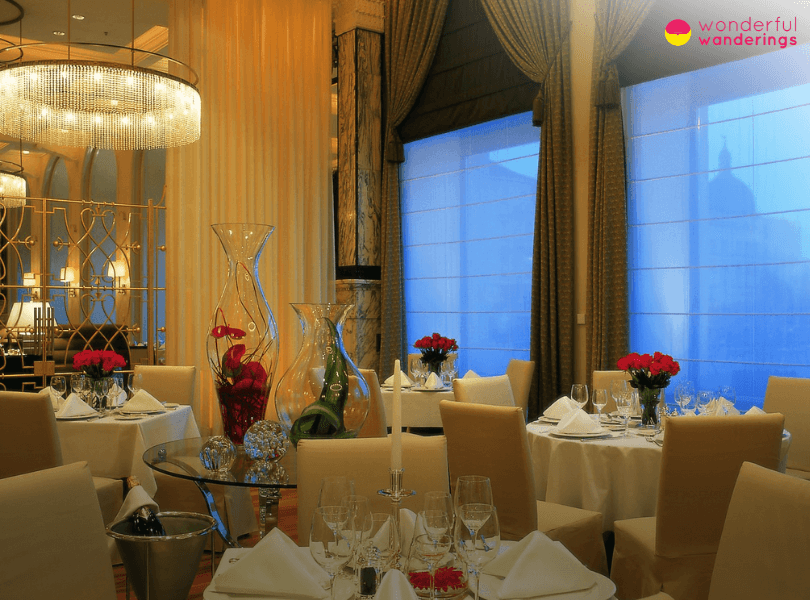
Travelers should avoid the more touristy areas like Dubrovnik's Old Town, where drink prices will be higher. Walking a few blocks from the main tourist zones can lead to finding more local bars with lower prices. Travelers can go to small, family-run restaurants called “konobas” which often serve house wine and other drinks at more affordable prices. Firstly, konobas offer large dishes at low prices, sometimes with family-made wine options. Sticking to drinking local beer is usually the cheapest alcohol option on menus in Croatia for travelers. Secondly, travelers should take advantage of happy hours to get discounts on drinks. It is recommended to watch for happy hours and other specials when going out. Lastly, at a market or store at home before going out is another way travelers can save money, as alcohol-bought retail is significantly cheaper than at bars and restaurants. Alcohol bought at markets can be half the price compared to bars.
Listed below are the best bars in Croatia.
- Charlie's Bar. Charlie's Bar is a lively bar in the center of Split and is known for its cheap drinks, like €4.49 ($5, £3.93) for a draft beer. It has an extensive cocktail menu and a fun party atmosphere with dancing. Charlie's hosts themed events like toga parties and an extended happy hour from noon to 8 pm with discounted beers and mixed drinks keeping the drinks flowing. Doubles cost less than €15 ($16, £13), shots come regularly and specials like cocktail buckets make this hostel bar hybrid a Split institution not to miss for those looking to party on a budget.
- Carpe Diem Bar. Carpe Diem Bar is a luxurious bar in Hvar's old town on the harbor with palm trees and ancient architecture surrounding sea views. Signature cocktails cost €9 ($10, £8). Travelers can relax and enjoy the Adriatic sea views while sipping drinks ranging from the signature “Carpe Diem” mint and lime vodka cocktail to luxurious champagne options. Carpe Diem meets Hvar travelers' needs as it is open during the day for a relaxed vibe and late into the evening features a DJ to hype the dance floor.
- Massimo Cocktail Bar Korčula. Massimo Cocktail Bar Korčula serves drinks via a pulley system to patrons relaxing on the upstairs terrace with views of Korčula. Cocktails cost €12 ($13, £10). Travelers can take panoramic vistas of the Adriatic Sea and islands dotted on the horizon while sipping creative cocktails featuring local ingredients. Travelers must climb the stone steps of the 15th-century Zakerjan Tower and place orders via a wooden pulley system before finding a seat amidst stone columns.
- Buža Bar. Buža Bar is a hole-in-the-wall bar that features sea views and Dubrovnik’s Old Town. Buža welcomes visitors to “follow the signs to heaven” and discover its hidden location overlooking the Adriatic Sea with drinks costing €4.49 ($5, £3.93). Buža's lies in a hole-in-the-wall perched high above the sea, making it a quintessential stop while meandering the fortress city.
- Booze and Blues. Booze and Blues is an alternative music bar in Zagreb that features comic book murals and garage rock music with a good selection of local craft beers for €4.49 ($5, £3.93). It is below Zagreb's National Library. Booze and Blues pays homage to indie culture with comic book murals, vintage movie posters and a soundtrack of garage rock and obscure vinyl records. During the day, students and local bohemians mingle here over macchiatos and craft beers from small Croatian breweries. The vibe shifts at night as DJs take over the turntables. It is best for travelers wanting a chill night.
What are the Things to Do in Croatia?
Listed below are things to do in Croatia.
- Diocletian’s Palace. Diocletian's Palace is a well-preserved ancient Roman complex occupying over 30,000 square meters (11,583 square miles) in the heart of Split, Croatia. The palace walls and structures comprise Split's historic Old Town, built in the 4th century as Emperor Diocletian's retirement abode. Visitors can freely roam the palace grounds, including the medieval streets, alleys, courtyards and ornate gates within the fortress-like walls. Key activities to try and to see are the Peristyle courtyard, Saint Domnius Cathedral, Jupiter's Temple and the four gates with imposing names – Golden, Silver, Iron and Bronze. Walking the palace is free, there are admission fees to enter the cathedral substructures and basement, climb the bell tower and access Jupiter's Temple.
- Split Old Town. Split Old Town is an active town that people still inhabit, work and visit while retaining its ancient Roman ruins and medieval architecture. Key visitor activities and sites include the Peristyle courtyard, Cathedral of St. Domnius, crypts, Temple of Jupiter and the narrow “Let Me Pass” street. The main promenade, the Riva, runs along the seafront, lined with palm trees, cafes and harbor views. Wandering the atmospheric cobblestone streets, alleys and small squares gives a glimpse into centuries of layered history. Split Old Town can be visited anytime for free, though select attractions like the cathedral bell tower require paid admission. It appeals to visitors of all ages interested in history, ancient ruins, medieval architecture and experiencing the lived-in nostalgia of a Roman town.
- Zagreb Funicular. Zagreb Funicular is considered a cultural monument and the oldest form of public transport in Zagreb, Croatia. Zagreb Funicular is the shortest funicular in the world used for public transportation, at only 66 meters (0.04 miles) long. It is one of the steepest, with an inclination of 52%. The funicular connects Zagreb's Lower Town along Tomićeva Street with the Upper Town along Strossmayerovo šetalište. It whisks passengers up to a height of 30.5 meters (0.018 miles) in 64 seconds. Visitors can ride the funicular daily from 6.30 am to 10 pm, departing every 10 minutes. Each car fits 28 people – 16 sitting and 12 standing. The cars still have their original late 19th century look but with a few modern updates like new windows and electric engines instead of steam. The Zagreb Funicular is popular among tourists for offering quick and easy access to the historic upper area of Zagreb. Locals appreciate it even more since there has never been a single accident in its 132 years of operation. This safety record has earned it the title of the “world's safest funicular”. The ride cost €0.52 ($0.57, £0.45). The funicular is also one of the things to do in Zagreb .
- Museum of Broken Relationships. The Museum of Broken Relationships is in Upper Town Zagreb at Ćirilometodska 2. The displays at the museum hit on the full spectrum of human emotions, from humorous to heartbreaking. Visitors can browse the eclectic collection and read the stories behind seemingly mundane objects like teddy bears, ax handles, prosthetic legs and old cell phones, which take on a deeper meaning in the context of an ended relationship. Explanations tell the stories of childhood crushes, longtime marriages, family estrangements and romantic betrayals. Key activities allow visitors to reflect on their experiences with empathy. There is an interactive “confessional” where people can donate objects or stories from their broken relationships to be considered for display.
- Game of Thrones Tour. Game of Thrones Tour in Dubrovnik takes visitors to the key filming locations used in the hit HBO TV series. Key activities include getting the chance to see sites like Lovrijenac Fortress (the Red Keep), Pile Gate (where the riot in King's Landing took place), the Jesuit Staircase (used in Cersei's Walk of Shame scene) and other spots around Dubrovnik's old town that served as the backdrop for the capital of the Seven Kingdoms, King's Landing. An expert local guide will provide commentary about the filming and the history of Dubrovnik itself, making connections between the actual city and the world of Game of Thrones. There are opportunities to take photos with props from the show at sites like a replica of the Iron Throne. Most tours run 2-3 hours as the old town is on a steep hill. The tours are best for older kids and adults who are show fans.
- Golden Cape Park. Golden Cape Park, known as Zlatni Rt Park or Punta Corrente Forest Park, is a protected 71-hectare forest park on a peninsula south of Rovinj in Istria, Croatia. It was established in 1961 within a coastal area landscaped in the late 19th century by Austrian admiral Johann Georg Hütterott. The park contains native and exotic tree species, including Aleppo pine, stone pine, cypress, cedar, olive and others. There are open meadow areas. The park offers stunning views over Rovinj and the nearby islands and coastline. Golden Cape Park is a popular spot for recreation and outdoor activities. Key activities at the park include hiking, running, cycling on miles of trails, rock climbing on the coastal cliffs and quarries or relaxing on the park's beaches and pebble coves. There are restaurants, cafes and beach clubs located throughout the park
The cost of living in Croatia is generally lower than in other European countries. Prices for accommodation, food, transportation and activities tend to be more affordable, especially outside of the peak summer tourist season. Firstly, travelers can stay in hostels with dorm beds for as low as €10 ($11, £8) to €15 ($16, £13) per night instead of hotels or consider booking Airbnb outside main tourist centers with lower prices. Travel in shoulder seasons like spring and fall when accommodation rates drop by 20-40%. Secondly, visitors can eat at small, family-run restaurants and taverns called “konobas” where you can find cheap, authentic cuisine and house wine. Drink local Croatian beer on tap for €1.82 ($2, £1.57) per pint instead of pricier imported drinks. Consider buying alcohol at markets before going out and using affordable public buses and ferries between destinations rather than taxis or tours. Thirdly, rent bikes or walk within cities to avoid transport costs. Consider ride-sharing services like BlaBlaCar. Opt for free activities like walking the historic city walls in Dubrovnik, wandering Diocletian’s Palace in Split and exploring seaside promenades. Lastly, choose more affordable options like self-guided trips to Plitvice Lakes National Park instead of organized excursions. If buying souvenirs, go to local markets rather than tourist shops filled with marked-up goods. Haggle prices at markets whenever possible. By staying in budget accommodation, eating cheap local food, using public transport and choosing more affordable activities, travelers can experience Croatia's beauty and culture while keeping daily costs lower than other European destinations.
Why Would You Consider Visiting Croatia During Low Season?
It is best to visit Croatia during the low or shoulder season for several reasons. Firstly, to avoid the peak summer crowds and high prices. Popular destinations will be far less crowded by traveling in the spring, fall or winter months. Accommodation prices can be 50% lower or more compared to July-August. This allows you to explore sites like Dubrovnik's Old Town at your own pace without fighting swarms of other tourists. Secondly, Croatia has a temperate climate, so even during the low season, daytime temperatures are often still pleasant, averaging 15-18°C along the coast. Travelers can enjoy sightseeing or hiking without heat or humidity. Lastly, visiting in the low season also means experiencing more authentic local culture, seasonal events and traditions. For example, Korčula has traditional Moreška sword dances in the spring, while Zagreb hosts a popular Christmas market each December. Fewer tourists means more opportunities to mingle with Croatians going about daily life.
Booking flights and transportation tickets in advance is highly recommended when planning a trip to Croatia for several reasons. Firstly, it allows travelers to lock in cheaper fares. Flights to Croatia from other European hubs, ferries and buses between Croatian towns and islands tend to increase in price closer to the travel date during the peak summer tourist season. Many specific ferry routes can sell out entirely during July and August if not booked weeks or months in advance. Secondly, booking ahead reduces overall stress when finalizing island-hopping itineraries, driving routes through national parks and multi-city visits. Having tickets in hand means less worrying as the trip dates approach. Accommodation availability becomes limited in Croatia's most popular areas. Lastly, Croatia has plenty to offer visitors spontaneously exploring without strict schedules, booking transportation tickets and staying in advance, which allows travelers to plan a worry-free vacation while taking advantage of lower prices and guaranteed availability.
Why you should be Careful with Alcohol in Croatia?
Travelers should exercise caution with alcohol while visiting Croatia for several important reasons. Firstly, binge drinking culture is prevalent in Croatia, especially among youth and tourists flocking to coastal party destinations. Over 27% of Croatian adults report monthly binge drinking and without moderation, intoxication levels can easily become dangerous. Secondly, Croatia has relatively lax public drinking laws compared to other European nations. Open containers and drinking in public spaces are commonly tolerated. This further encourages over-consumption as drinks are readily available. Lastly, alcohol is linked to acts of violence, accidents and injuries, which spike during the tourist season when drinking is highest. Assaults, falls and alcohol-related car accidents all see summertime increases. Severe intoxication can ruin holidays, lead to robbery or assaults and cause serious legal issues. By moderate alcohol consumption, travelers can better stay safe, avoid disasters and responsibly experience Croatia’s nightlife and bars.
Yes, Croatia can be considered an expensive destination compared to other European countries. Costs can vary greatly depending on the travel style, time of year and the specific regions. For an average mid-range traveler, daily costs in Croatia are €88 ($100, £75) to €88 ($150, £112) per person when accounting for lodging, food, attractions, transportation and other common expenses. Hotel rates average €70 ($78, £60) to €132 ($146, £114) per night, higher in popular areas like Dubrovnik. Apartments, villas and private rooms provide savings over hotels. Peak summer lodging rates are 50-100% higher. Food costs are reasonable, with most restaurant meals under €18 ($20, £15). Groceries from markets average €4 ($5, £3) to €13 ($15, £11) per day. There are ways for budget-conscious travelers to visit affordably. The keys are visiting in shoulder or off-peak seasons, opting for alternative accommodations over higher-priced hotels, using public transportation to get around and limiting expensive tourist activities.
Yes, Croatia features over 1,300 islands along its Adriatic coastline, offering beaches, sailing, swimming and relaxation. Croatia has historic gems like Dubrovnik’s medieval old town and Diocletian’s Palace in Split, which give travelers a window into centuries past. Plitvice Lakes National Park lets travelers explore lakes and waterfalls surrounded by forests. The capital, Zagreb mixes Austrian architecture with trendy cafés and an active nightlife scene. Visitors can island-hop by ferry, eat fresh seafood by the seaside, hike mountainous interior national parks and immerse themselves in a rich culture. Tourism has made some areas more expensive, but there are still ways to visit on a budget. Croatia has diverse landscapes, lots to see and do and a Mediterranean climate, making a holiday full of natural and cultural wonders.
The most expensive city in Croatia to live in is Zadar. Numbeo's index analyzes the relative cost of consumer goods, groceries, dining out, transportation and rent compared. Zadar's high cost of living is driven by its tourism industry and coastal location. Zadar relies heavily on tourism, which inflates prices during the peak summer season. Imported goods also cost more due to transportation fees to the seaside town. Dubrovnik and Croatia's capital, Zagreb ranked just behind Zadar as the next most expensive city in the country. Dubrovnik came in 145th in Europe and 283rd globally due to high tourism demand. Zagreb ranked 150th and 289th due to its position as Croatia's largest and most economically important city.
PIN FOR LATER
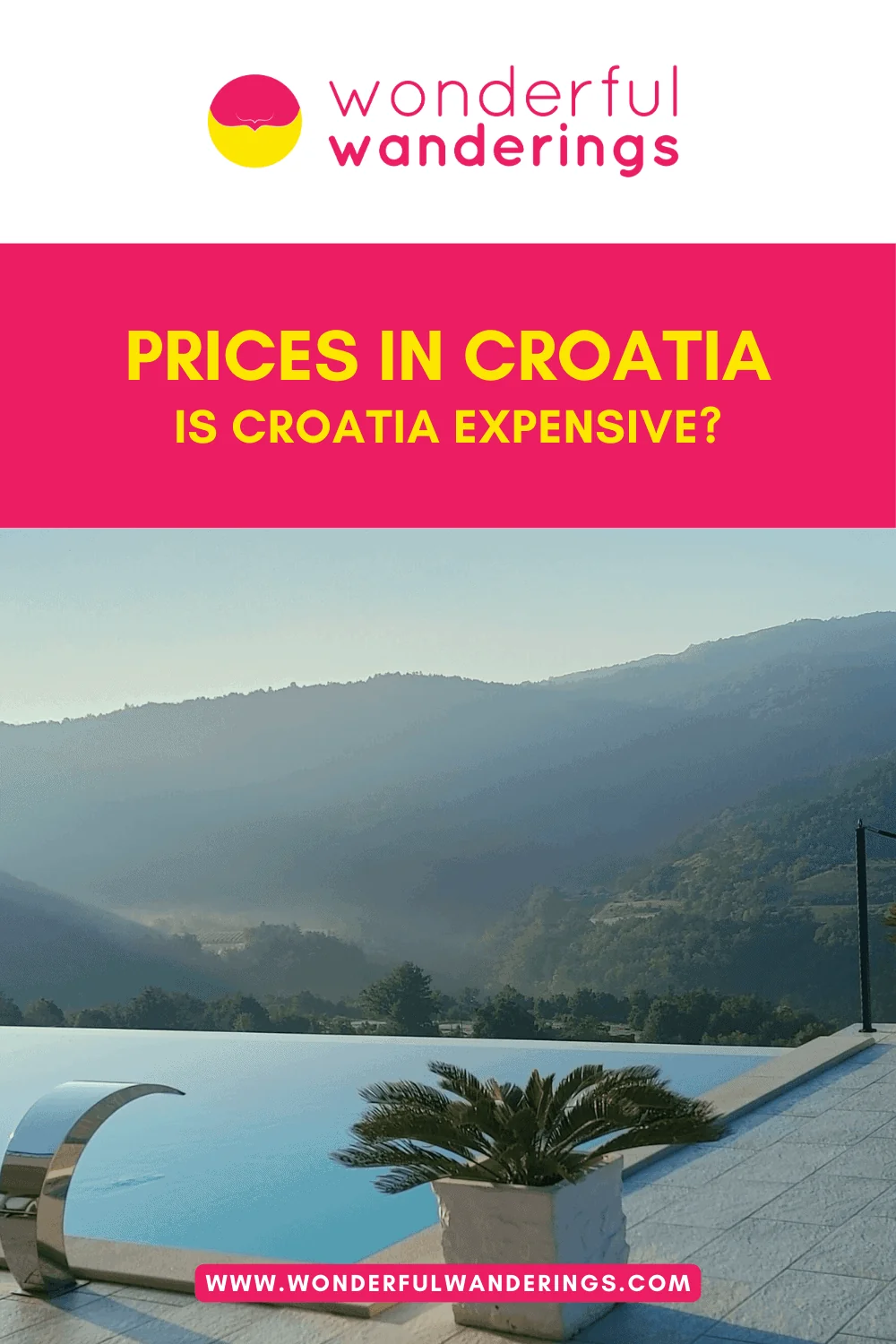
Find below our top guides about Croatia.

24 Traditional Croatian Food and Where to Eat Them in Zagreb

16 Best Castles to Visit in Croatia

18 Best Beaches to Visit in Croatia

Croatia Transportation Guide: Which Transportation Option Is Best for You?

18 Top Festivals to Attend in Croatia for 2024

Driving in Croatia: Road Safety, Driving Etiquette and How to Rent a Car

Renting a Car in Croatia: 34 Important Tips (2024)

20 Interesting Facts About Croatia

32 Most Famous Croatians: Artists, Chefs and Scientists!

Dates of Holidays in Croatia 2024 [Annually updated]

18 Amazing Destinations to visit in Croatia all year round!

Rovinj Travel Guide: 20 Things to do in Rovinj, Museums and History

Zagreb Travel Guide: 20 Things to do in Zagreb, Museums & History

Split Travel Guide: 28 Top Things to do in Split, Museums & History

Dubrovnik Travel Guide: 17 Things to do in Dubrovnik, Museums & History

5 books about Croatia you have to read before your trip

How to go on a fun Blue Cave tour from Split, Croatia
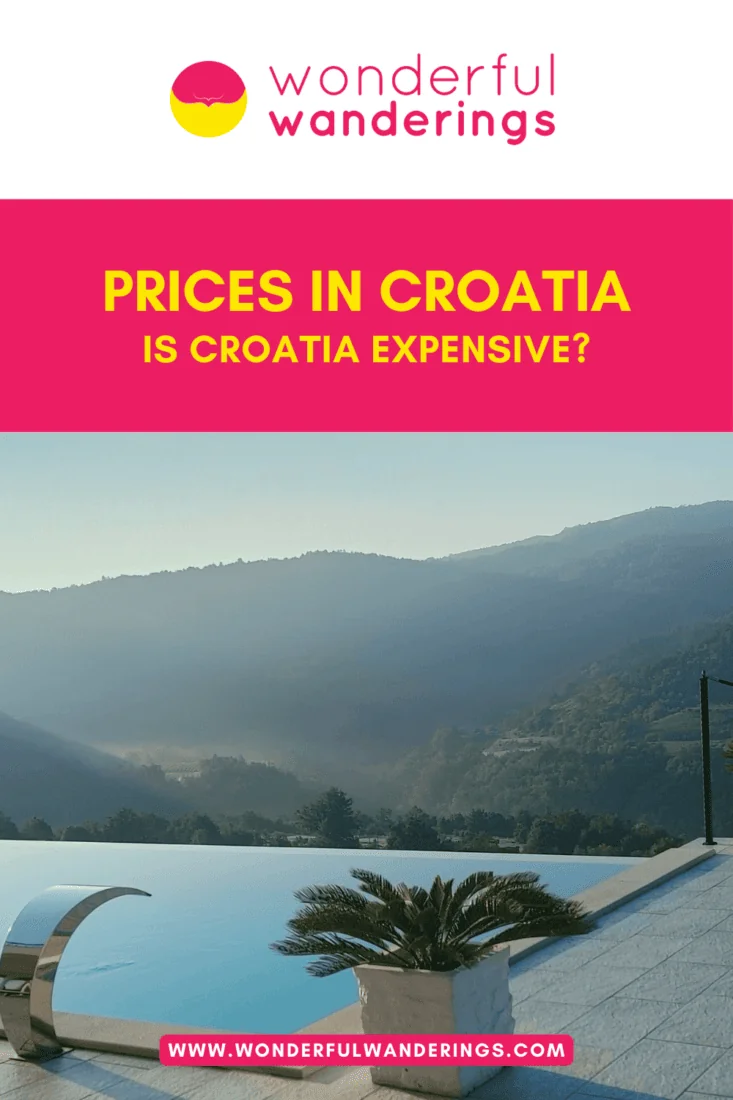
The editorial team at Wonderful Wanderings brings together travel experts with backgrounds in travel writing, web development and digital marketing. The team, through their collaborative effort, provides readers with relevant travel experiences and up-to-date digital content. The vast expertise within the team ensures an informative blend of travel stories and useful online travel guides and trip experiences, built on a foundation of both industry recognition and hands-on global adventures. Learn more about Wonderful Wanderings
Your email address will not be published. Required fields are marked *
Join 58,000+ other Wonderful Wanderers!
As an Amazon Associate I earn from qualifying purchases.

Croatia Travel Guide – Everything You Need To Know About Traveling To Croatia
Planning a trip to Croatia, but not sure where to start? This Croatia travel guide is perfect for you!
Located on the Adriatic Sea, at the crossroads of Central and Southeast Europe, you will find the beautiful country of Croatia. In recent years Croatia has become an increasingly popular tourist destination, and it’s easy to see why.
In Croatia you will find incredibly well preserved medieval towns, pristine beaches and stunning natural landscapes. It’s the perfect destination for anyone looking for a varied and well-rounded holiday.
I visited Croatia three times, and always find myself going back. Whether you’re looking for your next party holiday, for a relaxing beach vacation or an adventurous escape, Croatia won’t disappoint you.
In this Croatia travel guide I have put together all the resources you need to plan the perfect Croatia trip. Here you will find all my blog posts about traveling to Croatia, as well as some additional useful information.
Including sample itineraries, detailed guides about every city, reviews on the best tours and hotels, packing suggestions and much more! I hope all this information will help you travel to Croatia and have the best time there.
So without further ado, let’s dive into my Croatia travel guide, and start planning your dream Croatia trip!
- 1 Croatia at a glance
- 2 My Croatia 10-day itinerary
- 3.1 Dubrovnik
- 4 Travel insurance for your Croatia trip
- 5 Where to stay in Croatia
- 6 Best time to travel to Croatia
- 7 How to travel around Croatia
- 8 Estimated cost of traveling to Croatia
- 9 What to pack for a Croatia trip
- 10 Where to book your Croatia trip
- 11 Croatia guides, books & resources to check out before you travel

The Old Town in Dubrovnik, Croatia
Croatia at a glance
Where is Croatia? Croatia is in Europe on the Adriatic Sea.
Currency: Croatian Kuna (HRK) – see the latest exchange rate here .
Capital City: Zagreb.
Electrical plugs in Croatia: Types C&F (the ones you find throughout most of Europe) – I recommend an international adapter so you can use it on multiple trips.
Visa requirements: Croatia is in the EU but is not part of Schengen. Most passport holders won’t need to apply for visas before travelling to Croatia. Check the visa requirements for your nationality here .

Enjoying Diocletian’s Palace at 6am without the crowds
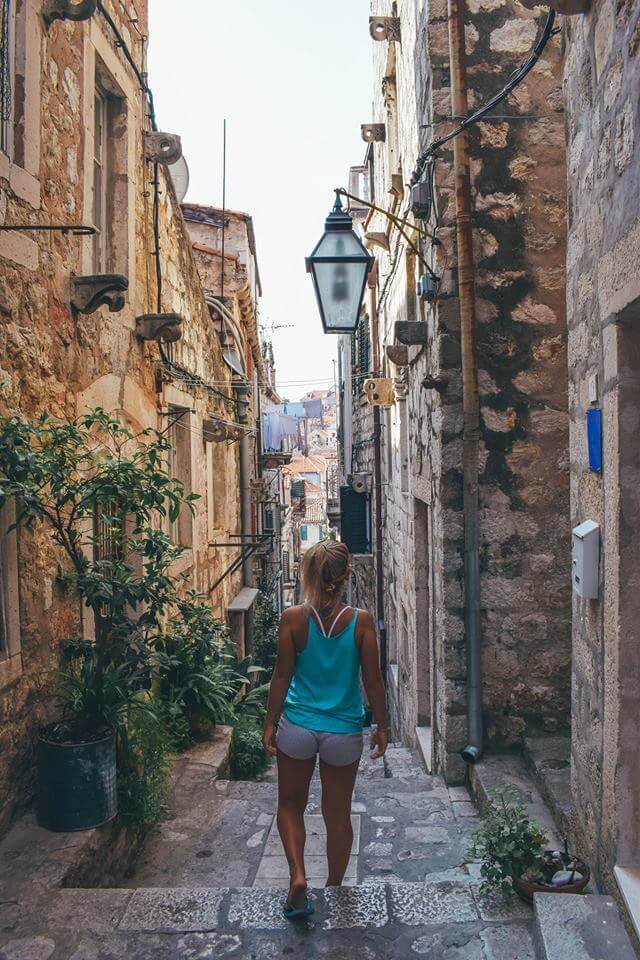
Exploring the side streets of the medieval Old Town of Dubrovnik
My Croatia 10-day itinerary
If you’re looking for suggestions for how to spend 10 days in Croatia, check out my ultimate Croatia itinerary here !
Best places to visit in Croatia
Let’s start with the basics, and discover the must-see places in Croatia that you absolutely cannot miss!

KRKA NATIONAL PARK

PLITVICE LAKES NATIONAL PARK

HVAR ISLAND

ELAPHITI ISLANDS

Dubrovnik is one of my favourite places in Croatia. The Old Town of Dubrovnik is simply stunning, with its white brick walls, red rooftops and towering walls that surround it.
Walking through the streets of Dubrovnik feels like stepping back in time. There are a huge variety of Dubrovnik tours that you can do to make the most of your time in this beautiful city.
From Old Town walking tours to island hopping tours, here are some of the highlights you shouldn’t miss.

GAME OF THRONES FILMING LOCATIONS TOUR

KAYAK SUNSET TOUR

OLD TOWN WALKING TOUR
ELAPHITI ISLANDS BOAT TOUR
After Dubrovnik, Split is without a doubt the next most popular Croatian destination. Split is home to Diocletian’s Palace, beautiful beaches and an old town with timeless streets at every corner.
Split is also a popular destination thanks to its proximity to other must-see Croatian sights. From Split you can go on epic day trips to the famous waterfalls of Krka or Plitvice National Parks, as well as the iconic beaches of Hvar Island.
Simply join one of the tours below to make the most of your time in Split and surroundings!

KRKA NATIONAL PARK FULL-DAY EXPERIENCE

HVAR, VIS & BLUE CAVE FULL-DAY BOAT TRIP

SPLIT CITY WALKING TOUR – DIOCLETIAN’S PALACE & MARJAN HILL
PLITVICE LAKES FULL-DAY TOUR
If you want to discover Croatia off-the-beaten track, then you have to add Omis to your bucket list. This small town is a short drive away from Split, and yet it doesn’t receive anywhere near the attention of its popular neighbour.
Omis has a gorgeous old town centre, a pristine turquoise beach on its doorstep, and a spectacular canyon right next to it. Omis sits on the mouth of the Cetina River, and is surrounded by the scenic mountains of the Cetina canyon.
If you love adventurous activities, you will love visiting Omis. From here you can go hiking, zip-lining, rafting and even canyoning! Simply check out one of the tours below to live these thrilling experiences!

ZIP-LINE OVER THE CETINA CANYON!

RAFTING ADVENTURE IN THE CETINA RIVER

VIA FERRATA HIKING TOUR

CANYONING EXPERIENCE IN THE CETINA RIVER
Zagreb is the capital of Croatia, and a must-see for many travellers. I’ll admit I haven’t been to Zagreb, as I visited Croatia in summer and wanted to discover the Croatian coast.
In Zagreb you will have the opportunity to discover its unique 18 th and 19 th -century Austro-Hungarian architecture, as well as the famous twin spires of the Gothic cathedral.
There are also lots of cute pedestrian streets, lined with cafes, shops and museums. Joining one of these popular tours will give you the opportunity to fully experience this gorgeous city.

The twin spires of the Zagreb Cathedral and Zagreb skyline at sunset – Photo by Nina Varga on Scopio
Travel insurance for your Croatia trip
After ending up hospitalised in a private clinic in Tenerife for two nights and having to pay for it out of pocket (spoiler alert; it wasn’t cheap), I always recommend purchasing travel insurance for your trips.
Since then I always get travel insurance with HeyMondo , and can highly recommend them. HeyMondo has a very comprehensive Covid-19 policy, on top of the usual trip cancellation and medical assistance.
You might not end up using it, but at least you will visit Croatia with a carefree mind, without worrying of having to pay out of pocket for any complications that might arise.
As a Greta’s Travels reader, you also get 5% off your HeyMondo insurance if you purchase it through this link !
Click here to purchase your travel insurance for your trip to Croatia!

Zip-lining in the Cetina Canyon
Where to stay in Croatia
If you’re looking for the best places to stay in each city of your Croatia trip, don’t worry, I’ve got you covered! Discover my top accommodation suggestions for every budget in the detailed guides below!

WHERE TO STAY IN SPLIT

WHERE TO STAY IN DUBROVNIK

BEST PLACES TO STAY IN HVAR ISLAND
WHERE TO STAY IN ZAGREB
Best time to travel to Croatia
The best time to visit Croatia ultimately depends on the experience you’re looking for. Summer is high season in Croatia. From June to September you can find warm and sunny weather, but also quite large crowds and high prices.
In spring (March to May) and autumn (September and October) you will still find fairly nice weather, with considerably less tourists. It won’t quite be beach weather, but you can explore the epic waterfalls and national parks of Croatia without the crowds.
Winter is low season in Croatia. Some travellers prefer it as the prices drop considerably and you might often be the only tourist in a location. However that also means many attractions might be closed.
Personally, I like travelling in shoulder season (late spring and early autumn). That means the crowds won’t be as huge as peak summer, so that you can enjoy the gorgeous sights with fairly good weather and a cheaper price.

Exploring the Old Town walls in Dubrovnik, Croatia

Admiring Skradinski Buk falls in Krka National Park
How to travel around Croatia
There isn’t one single best way to travel around Croatia. It ultimately depends on your itinerary and how long you plan to spend on the road.
For example, if you’re planning to base yourself in Split and just go on day trips from there, you won’t need to rent a car. You’ll easily be able to get everywhere with public transport or organised tours.
If you want to road trip across the whole country then renting a car will give you the most flexibility, both over your itinerary and timings.
Personally we only rented a car once we reached Hvar, so that we could freely drive around the island and explore all the hidden beaches. To travel from Dubrovnik to Split we took a FlixBus, which is a very fast and cheap bus service.

The car we rented in the brief afternoon we had it, with the beautiful coastline of Hvar behind
Estimated cost of traveling to Croatia
I have to admit that on my last trip to Croatia I was surprised at how much more expensive it had become compared to my first visit. The first time I visited I found it fairly cheap, whilst on my last trip it was much more expensive.
While it’s definitely not as expensive as some luxury destinations around the world, it still sits on the average price range for a European holiday.
On a trip to Croatia you can expect to spend anywhere between 30 to 150 EUR a day, depending on your travel style and interests.
Last time I was there (September 2017) we spent on average anywhere between 100 to 250 HRK for a nice sit down meal with alcohol, and between 20 and 50 HRK for a more on-the-go sandwich, wrap or pizza.
Accommodation ranges from 20 – 30 EUR per night for a bed in a hostel dorm, or between 50 and 100 EUR for an apartment, and can go over 100 EUR for a nice hotel.
When it comes to activities it will vary massively depending on what you choose to do. Some activities (eg. a city walking tour) you can do alone and save a bit of money, whilst others (eg. zipline or island hopping) are worth paying for to ensure you have a relaxing time.
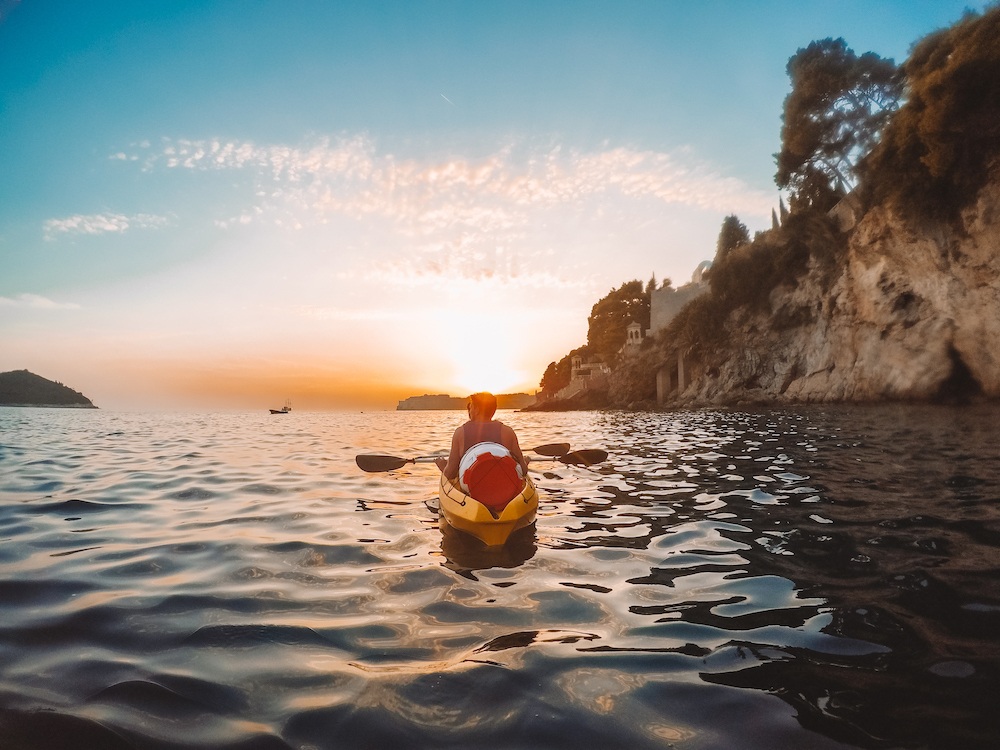
Kayak sunset tour in Dubrovnik, Croatia

We went on a sunset stand up paddling tour while in Split
What to pack for a Croatia trip
Besides your usual clothes and travel essentials , here are some items you don’t want to forget for your trip to Croatia, regardless of the season!
Swimsuit & sun block – I’m putting these two together as you would only need them if you’re visiting Croatia in summer. The sun can be pretty strong in the summer months, so make sure you’re prepared.
Water bottle – I love steel water bottles because they keep your water cold, reduce plastic consumption and save you money in the long run, it’s a win-win all round!
Money belt – I always travel with a money belt, and while I never personally felt unsafe in Croatia, petty theft is common in tourist areas all over the world. Better to be safe than sorry!
Comfortable walking shoes – Regardless of the season, make sure to pack comfortable shoes so you can walk all around the beautiful old towns of Croatia without hurting your feet!
Packing cubes – You’ll need these especially if you’re planning an on the road Croatia trip. That way you can easily pack all your things and keep them tidy every time you change destination.

View over Hear from the top of the fort
Where to book your Croatia trip
If you’re not sure what websites are best to book your Croatia trip, here are my top suggestions. These are the online platforms and travel resources I personally use for every trip I plan.
Skyscanner is my favourite flight search engine. They collate lots of different airlines and will show you the cheapest flight combinations. You then have the option to buy on different platforms or from the airline’s own website.
Booking.com is the first place I check when searching for accommodation. They have a wide selection of accommodation types, so whether you’re looking for a fancy resort, a bed & breakfast, or an apartment, they have the functionality of filtering by all these choices and many more (eg. price, star rating etc) so that you can find exactly the type of property you want.
If I want to stay in a hostel, I head straight for Hostelworld . I prefer it for hostel bookings as their reviews tend to be more detailed and it has more of a community feel.
GetYourGuide is the first tour booking platform I check. They sell a huge variety of tours everywhere in the world and have a very flexible cancellation policy (up to 24 hours before the tour). You can compare prices between similar tours and see the reviews left by previous tour participants.
Viator is another great place to book your tours. Similarly to GYG you can filter by ratings, prices and types of tours.
HeyMondo sell tailor made travel insurance, and they are committed to offering the best value for money and support for your specific trip. Besides the usual cancellation, medical expenses, luggage coverage and general travel insurance services, Heymondo also has a 24/7 doctor chat and instant assistance through their app.
Amazon sell pretty much everything. They also offer very competitive delivery prices and windows. If you realise the day before a flight that you’re missing something, Amazon can probably get it delivered to you on time.
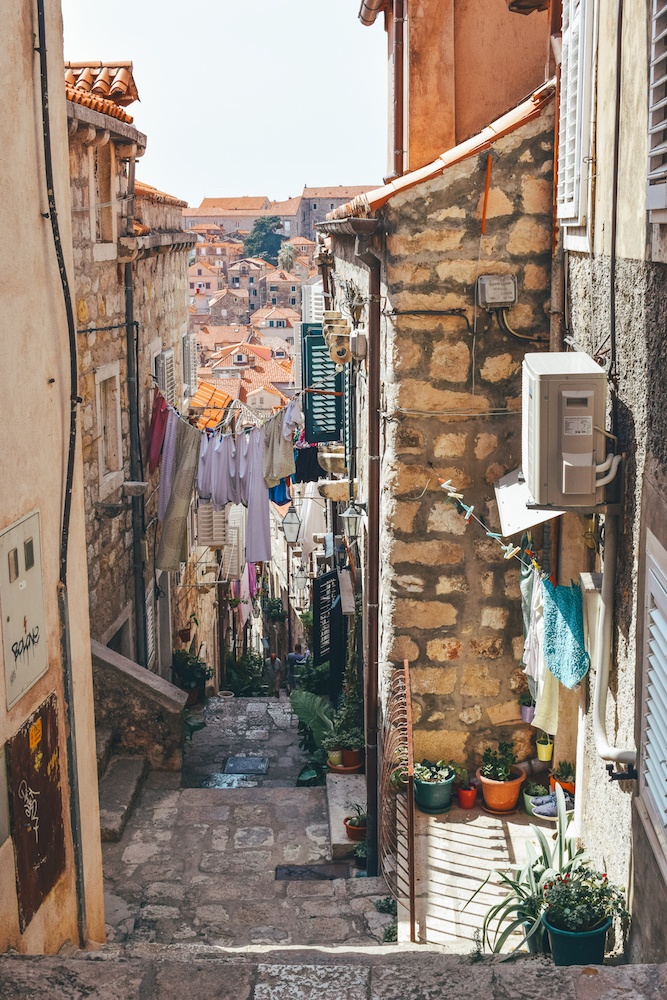
Wandering the streets of the Old Town of Dubrovnik, Croatia
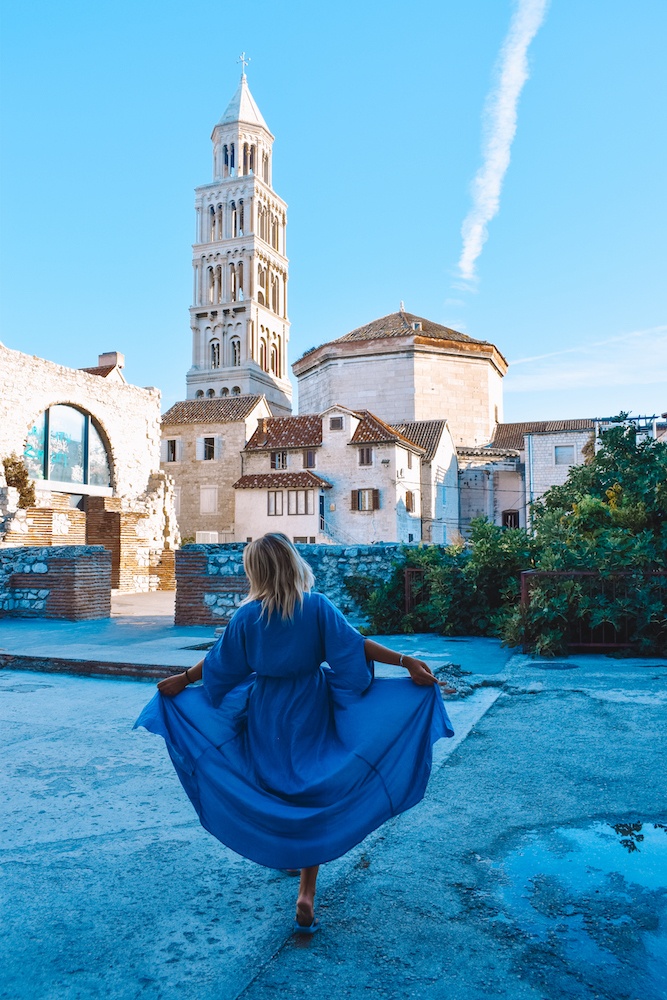
Exploring the Old Town of Split, Croatia
Croatia guides, books & resources to check out before you travel
Last thing before you go! Before heading off to Croatia, you might want to grab one of these interesting reads. Some are to help you learn more about the country’s history, others to help with your travel planning!
Lonely Planet Croatia (Travel Guide) – A classic guidebook for anyone who wants lots of information and details about Croatia.
A Traveller’s History of Croatia – If you want a guide that goes beyond the classic restaurants, hotels and tourist highlights, this is a great option.
“Running Away To Home: Our Family’s Journey to Croatia in Search of Who We Are, Where We Came From, and What Really Matters” by Jennifer Wilson – If you’re like me and prefer reading stories to guidebooks, you will enjoy this book. This award winning book is a great read for anyone who is searching for a more personal and engaging story about Croatia

View over the rooftops of Dubrovnik from the Old Town walls
Final thoughts on traveling to Croatia
There you have it, the ultimate Croatia travel guide! Have you been to Croatia before? How did you find it? I hope you find my detailed travel guide to Croatia useful in planning your trip!
I tried to include answers to every possible question that you might have when planning your Croatia trip. I know these are some of the questions I had myself before first travelling there.
If you want more information on a specific city or tour, simply click through to my detailed Croatia guides! If you have any questions about traveling to Croatia just let me know in the comments below, I’m always happy to help!
Enjoyed reading my Croatia travel guide? Pin it!

- Share on Facebook
- Share on Twitter
- Share on LinkedIn
- E-mail to a Friend
- Send to WhatsApp
- +385 (0) 21 332 332
Your perfect holiday is only few clicks away!
Select your preferences
Would you prefer a span of days other than Saturday-Saturday? Contact us!
boats found
Is Croatia Expensive to Visit? 2024 Prices in Croatia
10. February, 2024

Prices in Croatia have changed frequently in recent years, reflecting both internal and global economic and political developments. Croatia's 2013 membership to the European Union (EU) was expected to result in gradual alignment with European norms, including price stabilization. However, the path to harmonization proved challenging, with factors like inflation, tax policy changes, and fluctuations in markets all having a substantial impact on the country's cost of living.
Although the euro provides numerous benefits to Croatia, many individuals are worried about price increases during the currency transition. While higher standards were predicted, numerous market sectors faced rising expenses, requesting changes for citizens. Furthermore, switching to the euro raised concerns about potential price oscillations. All of these factors together made it difficult for both individuals and corporations since they had to deal with changes and daily financial troubles.
Travelling to Croatia
Before we dive deeper into the Adriatic Sea and prices in Croatia, the first thing everyone wants to know is how and for what price they can get to their destination. Croatia is connected to European countries in many ways, and you can reach it by various means of transport, such as cars, buses, trains, ships, and most importantly, aeroplanes.
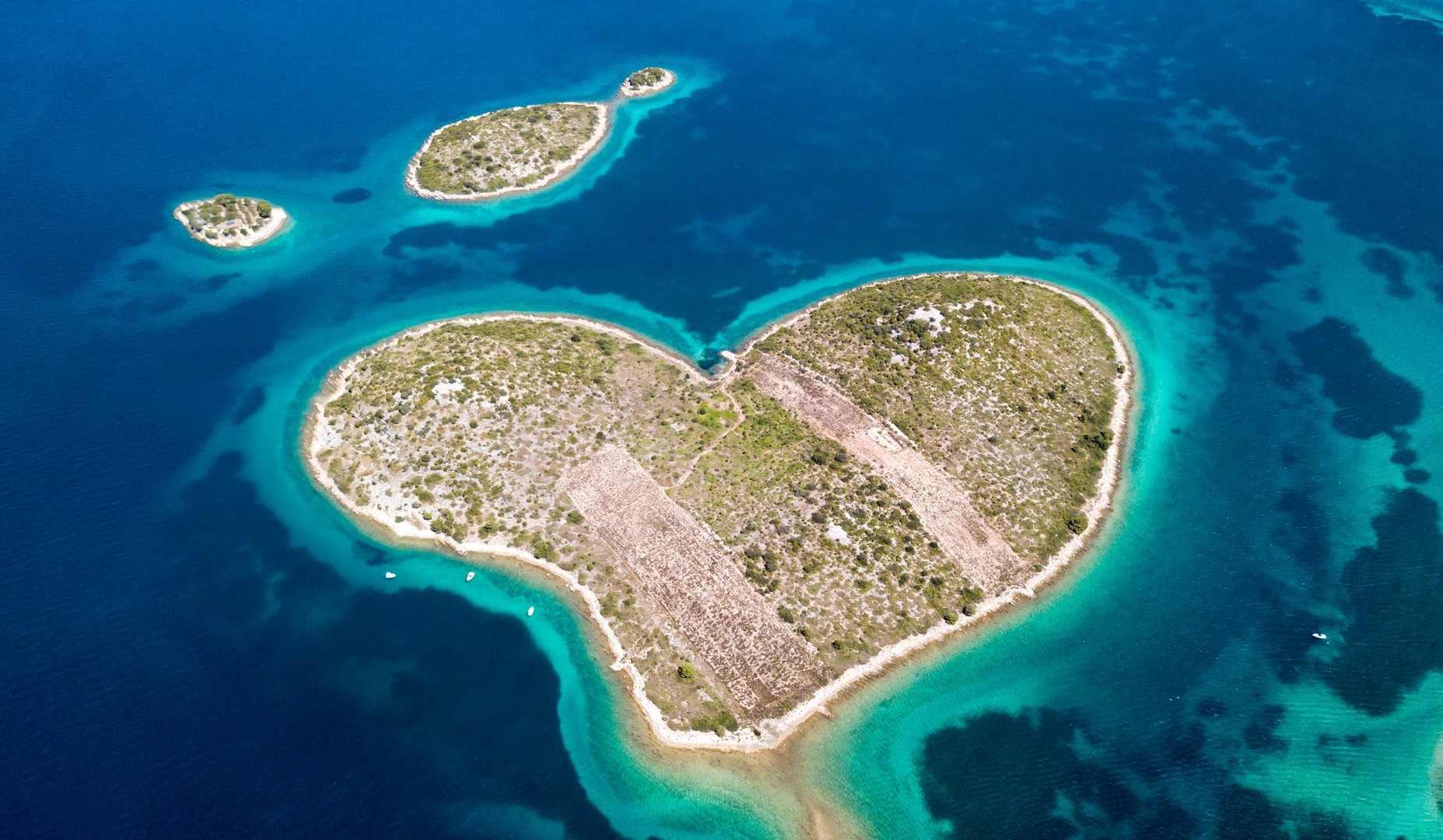
Flights between Croatia and European countries vary in price based on the airline and the point of departure but generally cost between €50 and €130 for a one-way flight. Flights from the United States might cost up to €500 or more .
Croatia's most important and busiest airports are in Zagreb , Split , Dubrovnik , Zadar , and Pula . Each of these airports offers very good connections with different countries, and you can choose the one that best meets your needs.
Accommodation costs in Croatia
If you're wondering if accommodation in Croatia is expensive, don't worry; there are plenty of options for every budget size. Budget-friendly hotels might cost between €30 to €80 per night , depending on location and desired level of comfort. If you want to stay in a luxury hotel in Croatia, expect to pay between €150 and 300 per nigh t, depending on the season and location. Another great option for saving money while visiting Croatia without sacrificing privacy is to get private accommodation through Airbnb. Prices for Airbnb accommodations can range from €20 to €200 per night , depending on the type of property, location, and amenities offered.
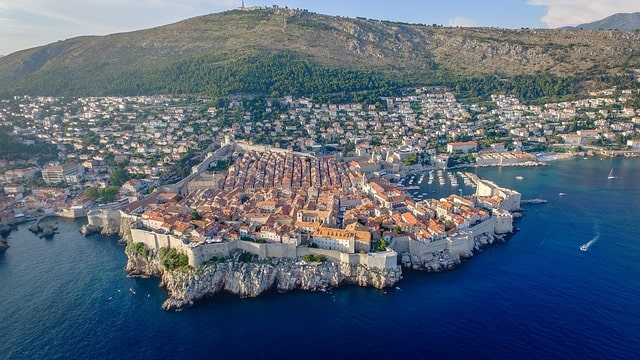
Dubrovnik, Croatia's southernmost city, is known for its gorgeous coastline landscapes, rich history, and well-preserved medieval architecture. However, it is also considered one of the most costly cities in the country, especially when it comes to the cost of living in Croatia.
Accommodation prices in Dubrovnik can be somewhat pricey when compared to other Croatian cities, owing to its popularity as a tourist attraction and limited availability, particularly in the historic Old Town region.
Hotel & Hostel
Dubrovnik has several luxury hotels that offer first-class service and comfort. Prices in these hotels can be quite high depending on the hotel category and the season.
Finding affordable mid-range hotels in Dubrovnik can be difficult due to the city's reputation for extremely high prices. Some alternatives are still available for those hoping to save money on accommodation.
Hostels are the most affordable accommodation choice in Dubrovnik, however there you won't be able to have the same level of comfort and privacy compared to the more expensive accommodation options. A dorm bed in a hostel costs between €30 and €100 per night, depending on location and facilities.
Again, the answer to the question " Is Croatia cheap? " can vary depending on whatever city you visit; generally, you can expect to spend around €40-50 each night, which can save you a lot of money, especially if you're splitting the costs between two people. A one-bedroom apartment on Airbnb or Booking.com costs between €60 and €100 per night, depending on the season and location of the property. Overall, costs are expected to rise during the peak season, particularly in July and August.
Locations with good price-quality ratio in Dubrovnik
If you want a more residential and relaxing setting, Lapad is a fantastic option for apartment rentals. This neighbourhood, located northwest of Old Town, provides stunning beaches, seaside walkways, and a variety of food and retail opportunities. Lapad is well-connected to the city centre via bus, giving it an ideal base for visiting Dubrovnik.
Whether you're seeking budget-friendly rooms ( €50-100 per night ), mid-range accommodation with additional features ( €100-200 per night ), or a high-end escape ( €200-300+ per night ), Lapad has a wide range of apartments to meet any traveller's demands and budget. Lapad is an excellent choice for a wonderful stay in Dubrovnik because of its peaceful surroundings, stunning landscapes, and proximity to attractions.
The best overall Dubrovnik experience
Staying in the historic Old Town offers a distinct and immersive experience, with narrow streets, antique architecture, and charming squares just outside your door. Apartments in the Old Town are close to key attractions like the City Walls, Stradun (main street), and historical sites.
Suppose you choose a budget-friendly hideaway (€130-250 per night), a mid-range room (€250-400 per night), or premium accommodation (€400+ per night). In that case, visitors to Dubrovnik's Old Town are guaranteed an unforgettable and enchanting experience.
Croatia's second-largest city is well-known for its fascinating blend of ancient history, vibrant culture, and breathtaking seaside views. Is Split, Croatia expensive ? Split, as a major tourist destination, has a variety of accommodation options to suit different budgets and preferences.
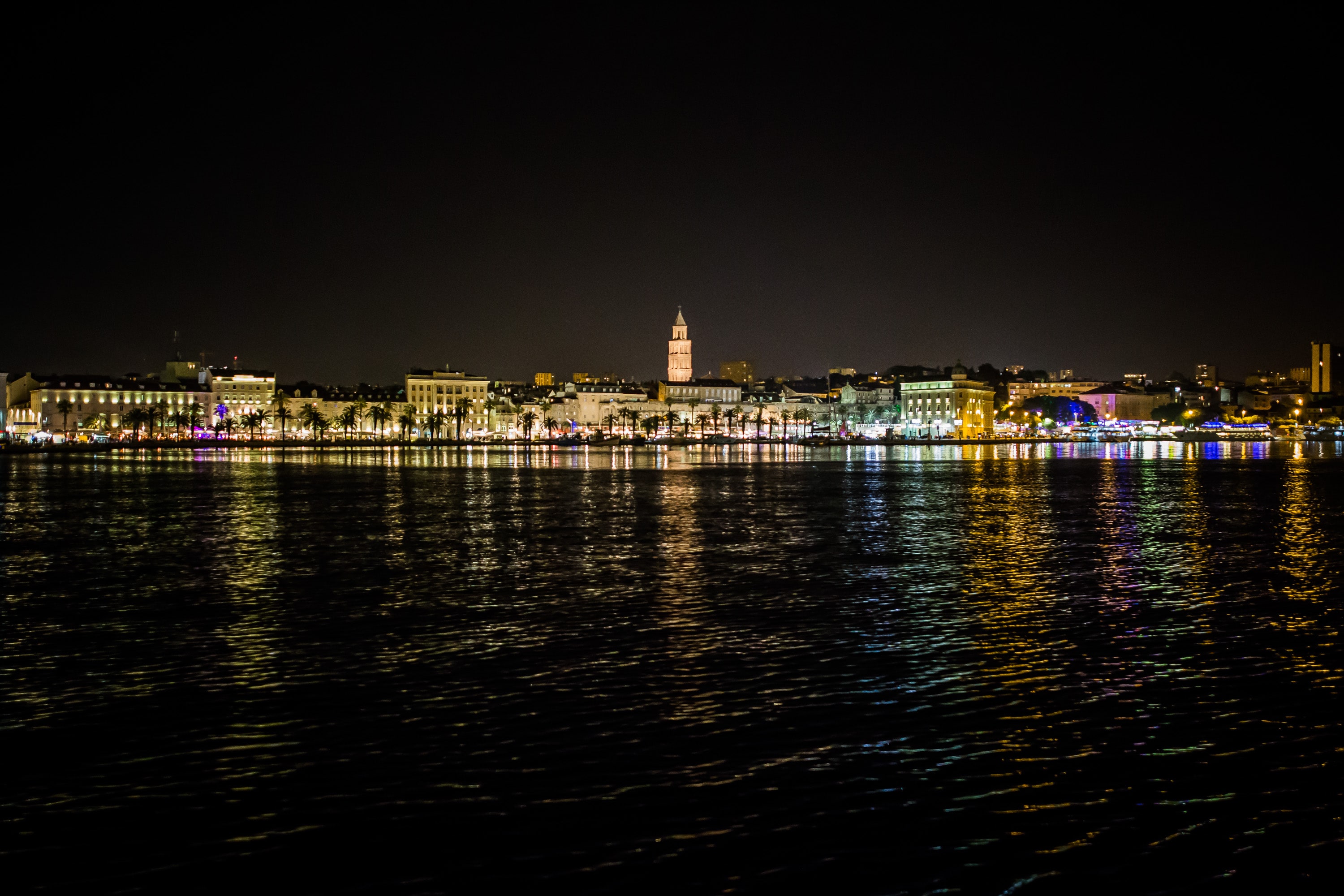
Accommodation prices in Split vary according to location, season, and facilities. To get the greatest prices and availability, book your accommodations ahead of time, especially during the high tourist season (summer). Additionally, travellers might look into alternate communities outside of the city centre for perhaps less expensive options.
Split has a wide selection of hotels, from mid-cost options to luxurious establishments. Standard double rooms at a mid-range hotel normally cost between €60 and €150 per night .
Luxury hotels and resorts can cost €150 to €500 or more per night , depending on the season, location, and amenities available.
Hostels offer budget-friendly accommodation options for solo travellers, backpackers, and groups. A dorm bed in a hostel typically costs between €15 and €90 per night .
Renting an apartment in Split is a popular option for those who want more space and flexibility. Prices for a one-bedroom apartment in the city centre or along the waterfront normally range between €50 and €200 per night, depending on location, size, sites, and season.
Locations with good price-quality ratio in Split
Žnjan offers many options for apartments to meet all budgets and preferences. It is located along the gorgeous Dalmatian coast and offers breathtaking sea views, pristine beaches, and easy access to the city core.
Whether you're looking for budget-friendly options ranging from €50 to €100 per night, mid-range accommodations with boosted facilities priced between €100 and €200 per night , or deluxe retreats costing more than €200 to €300 per night , there's something for everyone.
The best overall Split experience
Exploring accommodation options within Diocletian's Palace in Split reveals a remarkable diversity of apartments, each providing a distinct experience within this UNESCO World Heritage Site. Of course, this housing option is the most expensive, but as the saying goes, the more money, the more music, implying that investing in luxury experiences can lead to greater enjoyment and satisfaction.
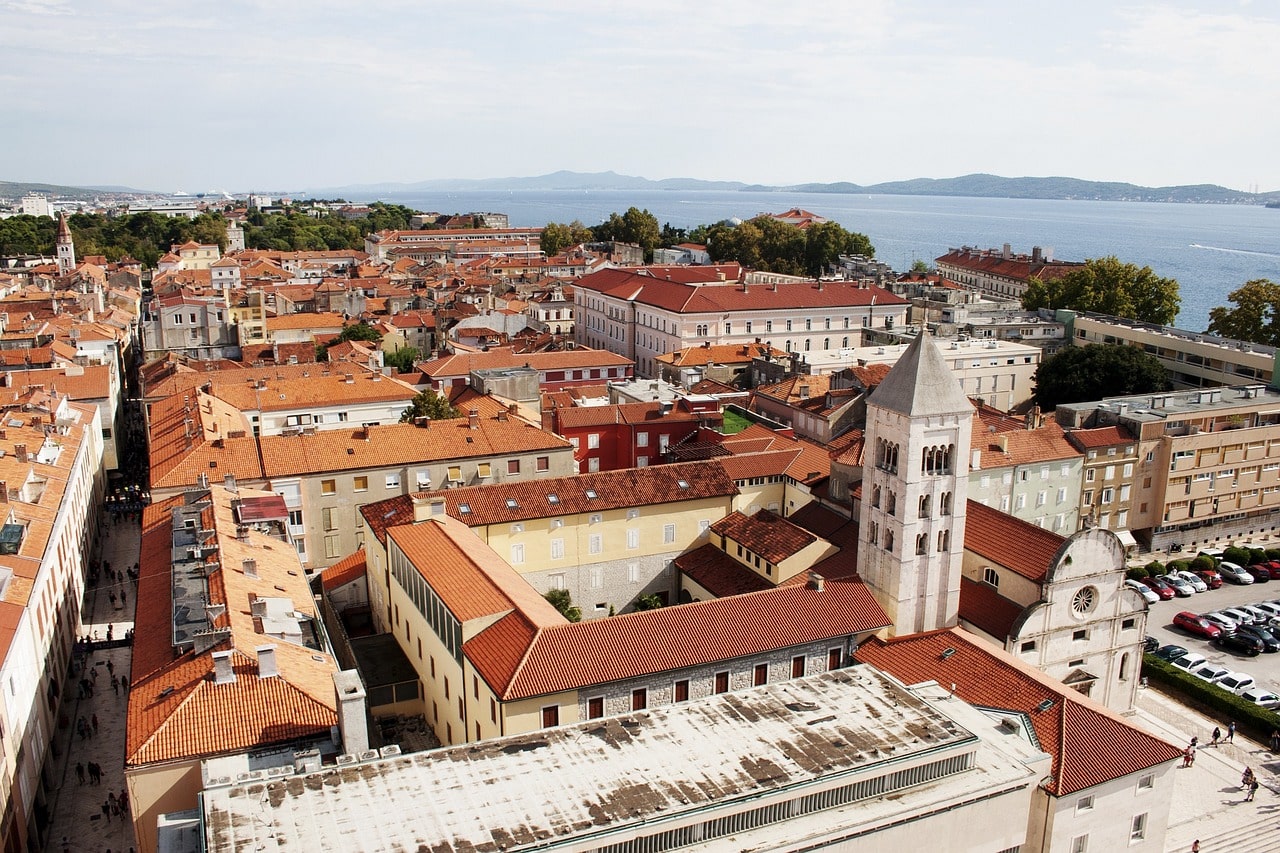
It is important to note that Zadar is not commonly thought of as Croatia's most costly town, such as Dubrovnik and Hvar, well-known tourist hotspots for having higher pricing due to high tourist demand and cost of living in Croatia. However, Zadar still has a variety of hotel alternatives at different price points.
It is recommended to book accommodations in advance , especially if you are planning your visit during busy tourist seasons, to ensure the greatest prices and availability. Additionally, researching different areas or choosing hotels outside the city centre may provide more economical options.
Zadar offers its visitors a varied range of hotels to suit different budgets and preferences. Standard twin rooms at a mid-range hotel normally cost between €70 and €220 per night.
Luxury hotels and resorts can cost €250 to €500 or more per night , depending on the season, location, and facilities.
A dorm bed in a hostel normally costs €15 to €80 per night , whereas private rooms can cost €40 to €100 or more per night , depending on location and amenities.
Renting an apartment is a popular option in Zadar, particularly for those who want more space and flexibility. Prices for a one-bedroom apartment in the city centre or near the shore typically run from €50 t o €150 per night , again, depending on the location, size, facilities, and season.
Locations with good price-quality ratio in Zadar
Arbanasi is a nice neighbourhood in Zadar that provides a more residential ambience while remaining close to the city centre and attractions. In this neighbourhood, you can find the best price-quality ratio when reserving an apartment to ensure a pleasant and pleasurable stay while stretching your budget in Zadar, Croatia.
The best overall Zadar experience
Zadar's Old Town is located on the peninsula. This is the finest neighbourhood to stay in Zadar for tourists on a short visit because it is centrally located and easy to navigate.
Why Stay in Zadar Old Town: The convenience of location comes at a cost, as there are fewer affordable hotels in the area. Younger travellers, on the other hand, will enjoy the nightlife in Old Town Zadar.
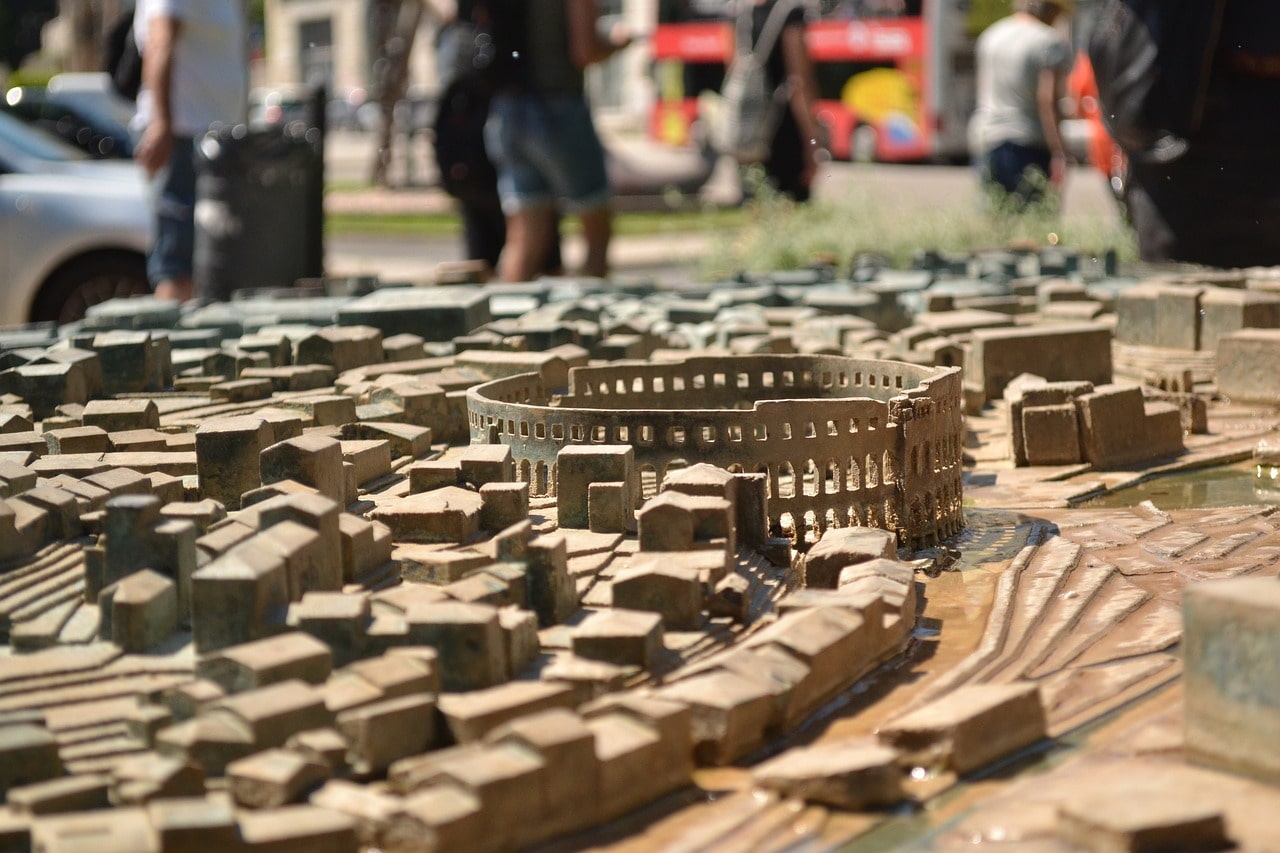
If you're planning your vacation in Pula, it's good to know that compared to the rest of Istria, Pula offers the most affordable accommodation. In Pula, you can find a diverse range of apartments, hostels, and luxury hotels.
Hotel & Hostels
Hotels in Pula are mostly located near its most famous attractions, as well as along the coast. This offers guests better and easier connectivity to the city itself. Nightly rates range for mid-tier hotels from 70 to €250 per person , and in luxury hotels , they often exceed €420 per night .
Hostels in Pula provide reasonable accommodation alternatives, making them ideal for tourists looking for a social atmosphere while still saving money. Dormitory beds normally cost between €10 and €90 per night , depending on the season and the hostel amenities.
Apartments in Pula are one of the most popular options among tourists because they offer flexibility, privacy, and greater affordability compared to most hotels in Pula. You can find a decent apartment starting at €70 per night .
If you want anything more deluxe , you should be prepared to spend more than €110 every night .
Locations with good price-quality ratio in Pula
One neighbourhood that offers a good balance of affordability and quality is Verudela . Situated just outside the city center it is still close to Pula's main attractions. Verudela is also recognized for its gorgeous coastline, which includes beaches and promenades, making it an enjoyable spot to reside while remaining close to the city's attractions.
The best overall Pula experience
Stoja is often regarded as Pula's greatest district for premium accommodations . It is located southwest of the city centre and is home to upscale apartments that offer luxurious amenities, breathtaking sea views, and unique facilities. This neighbourhood is noted for its serene ambience and stunning coastline, making it an excellent choice for those looking for a luxurious hideaway in Pula. Stoja is also conveniently located near major sights such as the Roman amphitheatre and the city centre , allowing guests to enjoy both leisure and exploration throughout their stay.
Transportation costs in Croatia
Travelling between towns is incredibly easy in Croatia, thanks to its great road connectivity and an extensive system of bus lines. Typically, bus fares for intercity travel are affordable, ranging from €5 to €60 depending on the distance travelled, while renting a car offers flexibility at prices starting at €20 per day . When planning for a rental, keep in mind other costs such as insurance, fuel, and taxes. Insurance prices range from €5 to €10 per day for basic coverage.
For easy transit inside Croatian cities , such as Split, Dubrovnik, Zadar, or Pula , both residents and tourists can take advantage of buses, taxis, and some alternatives. Transportation costs might differ from town to town because of things like demand and distance
Buses run throughout most Croatian cities from early morning to midnight, departing every 10 to 30 minutes and providing easy city transportation. In bigger cities, such as Dubrovnik and Split, bus fares range from €1,73 to €4 per one-way ticket , while in Pula and Zadar one way ticket costs can be from €1,30 to €2,70. Bus companies are also providing daily, three-day, and seven-day tickets for additional convenience and time savings, with discounts available.
Taxi prices in Croatia typically start at around €3 for a short ride, with an additional charge of approximately €0,60 to €3 per kilometre . Waiting fees may also apply, and are normally assessed per minute of waiting time. Late-night rides, weekends, holidays, and luggage may all incur additional fees. You can order a taxi by phone or find one at taxi stations all around the Croatian cities.
Alternative transportation
Alternative transportation includes Trams in Zagreb, with prices ranging from €0,53 to €1,33 for a one-way ticket , and options such as daily ticket, 3-day, 7-day, 15-day, and 30-day tickets going from €3,98 to €53,09 . Renting a scooter , mynt, in Dubrovnik with rates going from €0,30 per minute or different bundle options going from €20 . Another great alternative in Split, Zagreb, Pula, and Zadar is Nextbike , an eco-friendly bike-sharing program that provides both classical, going from €1 for a 30-minute ride , and electric bikes, €1,5 for a 30-minute ride . They also offer different subscription options that can go up to €30 .
Food and drinks prices in Croatia
Croatia has a wide range of culinary delights at differing price ranges, appealing to a variety of budgets and preferences. Croatia food prices might vary depending on the region, the type of place, and whether you're eating at a tourist attraction or a local restaurant.
In general, eating out in Croatia is reasonably priced, with meals costing between €15 and €35 , as opposed to dining costs in other Western European countries, where a main meal alone can easily cost €30 . Especially if you choose traditional foods such as ' Komiška pogača ', ' pašticada ', ' peka ', ' soparnik ' or ' Dubrovački šporki makaruli '. Local markets also sell fresh vegetables at moderate prices, allowing you to prepare your meals on a budget.
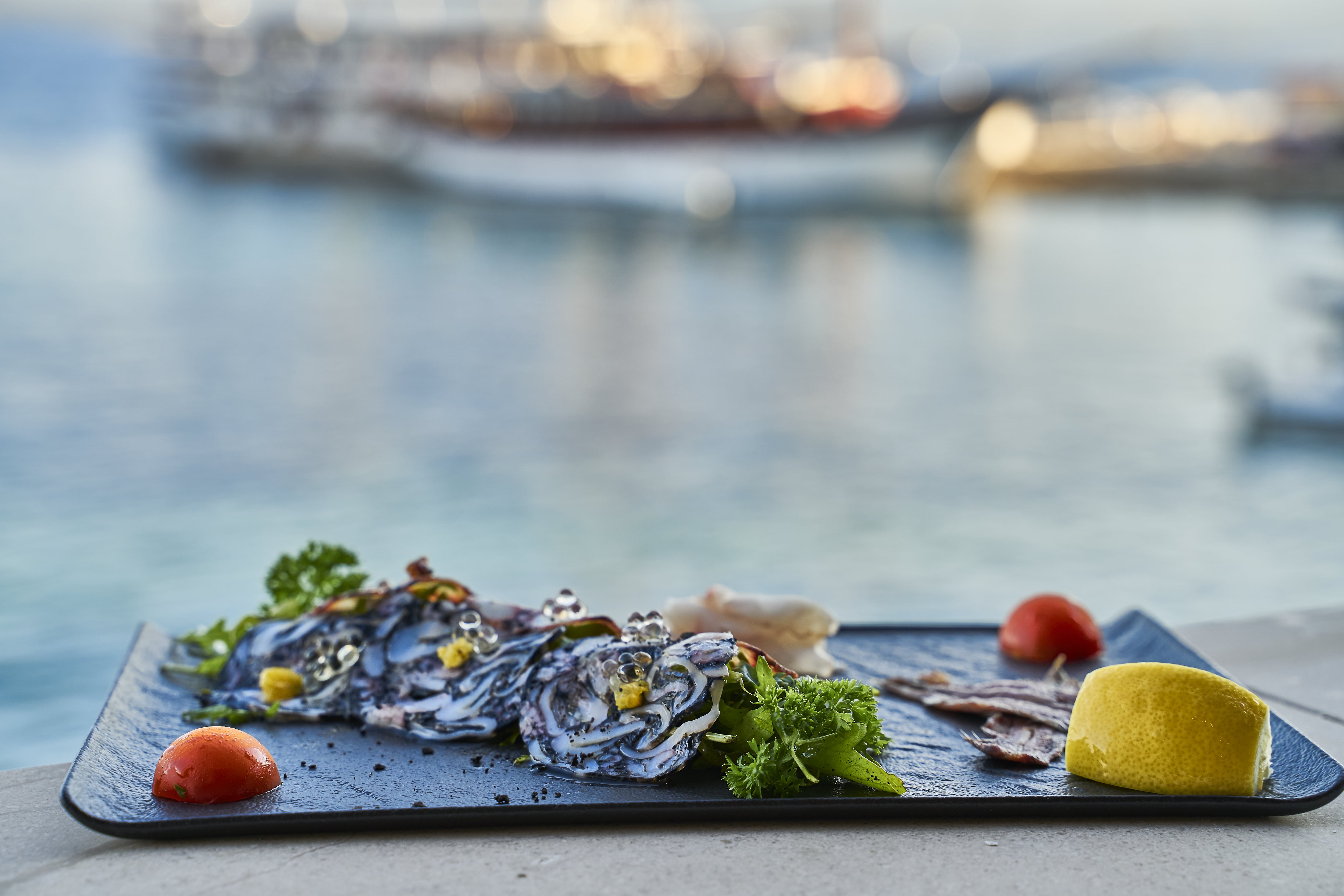
However, dining in luxurious restaurants or popular places may be more expensive. To prevent surprises, make sure to verify menus and prices ahead of time. Croatian food prices are generally fair and provide good value for money, especially when considering the quality and freshness of the products used in local cuisine.

Black Risotto - Black Risotto, also known as Crni rižot, is named for the colour of squid ink, which is dark and creamy. Some restaurants may integrate oysters, clams, and other shellfish into the meal, resulting in a true Adriatic harvest. One portion will cost you about €18,50 .
Rožata - This pudding's texture is similar to crème brûlée, yet it has a secret ingredient: handmade rose liqueur. Rum is commonly used to kick it. Enjoy this delicacy for approximately €5,80 per portion.
The best spot to try Black Risotto and Rožata in Dubrovnik is at Gverovic Orsan restaurant .
Pošip Wine - This white wine, manufactured on the nearby island of Korčula, pairs perfectly with seafood. Light but powerful, with a honey-like flavour, it pairs well with soft crumbly cheeses like feta. You can get 0.75 l for around €48 .
Restaurant Dalmatino Dubrovnik offers a selection of high-quality vintage Pošip wines.
Šporki Makaruli - This meal combines macaroni with a rich tomato and beef sauce reminiscent of Ragu or Bolognese, and it's excellent. Napkins are certainly essential while eating this dish.
In Dubrovnik, try Šporki Makaruli at Kopun , a classic Croatian restaurant. Another excellent option is Konoba Veranda .
Craft Beer - Fortunal is a beer named after a stormy wind. It belongs to the pale ale beer category. As the name implies, this beer provides a clear sky and much-needed refreshment, so it is full of summer fruit smells and a silky texture. Grab a 750ml bottle for €5 .
Gruž is home to a thriving little craft beer factory called Dubrovnik Beer Company that goes beyond standard offerings.
Wherever your excursions take you during your tourist or work days in Split, look for a decent tavern or seafood restaurant, where the fruits of the sea and marine specialities will delight all of your senses. In Split, meal prices range from €5 to €40 . Casual lunches and mid-range dinners cost between €10 and €20 . Pizza or street food can cost between €5 and €10 , while traditional food is more expensive. Here are some of the must-try meals and drinks in Split:
Dalmatian herbal brandy ( Travarica ) - For a good start, don't overlook the real Dalmatian herbal brandy or grape brandy. Enjoy a 750ml bottle for €5 .
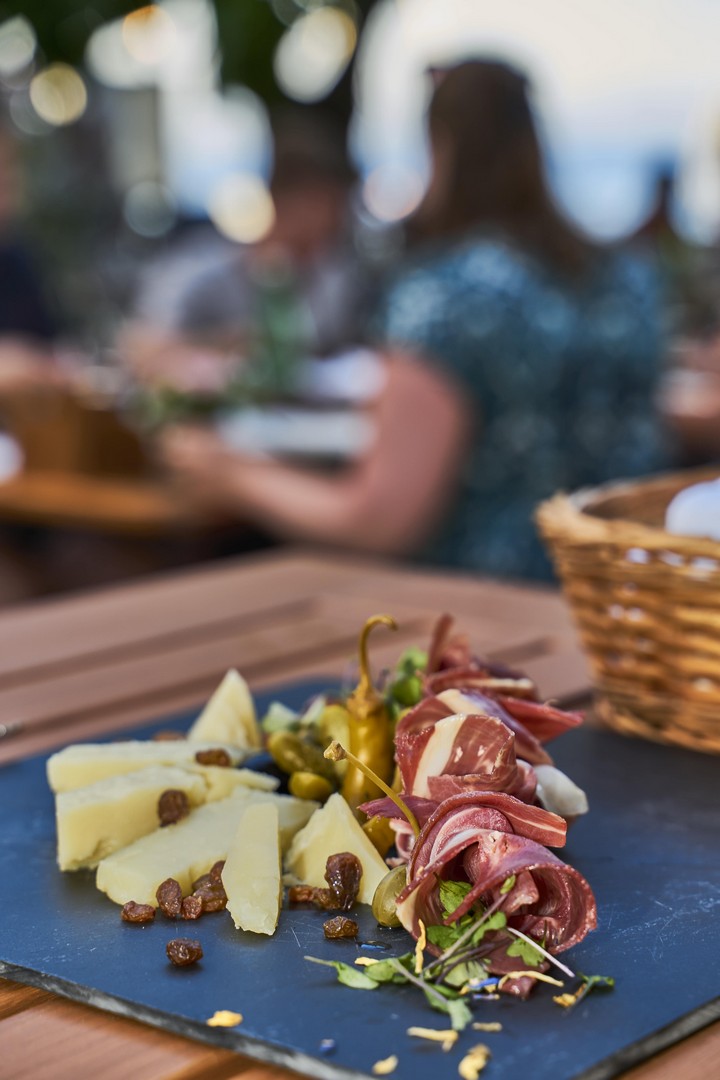
Dalmatian prosciutto - Dalmatinski pršut, a cured, smoked, and dried ham, is typically served thinly sliced with bread, cheese, or fruit like melon. The Dalmatian pršut differs from its Italian and Istrian versions in that it is wood-smoked and dried for at least 12 months. Enjoy this delectable delicacy, with around 1kg of prosciutto costing around €30 .
Salted sardines are the perfect appetizer served in olive oil with homemade bread and local cheese. The best place to try this traditional food is at restaurant Artičok, a fun little restaurant located just on the edge of Varoš historical neighbourhood, right down the lane from Matošića Street.
Pašticada - This meal takes a long time to prepare; beef is stuffed with herbs and marinated in vinegar overnight, then roasted and stewed for hours before being served over pasta or gnocchi. Expect to pay around €20 per portion for this hearty and flavorful meal.
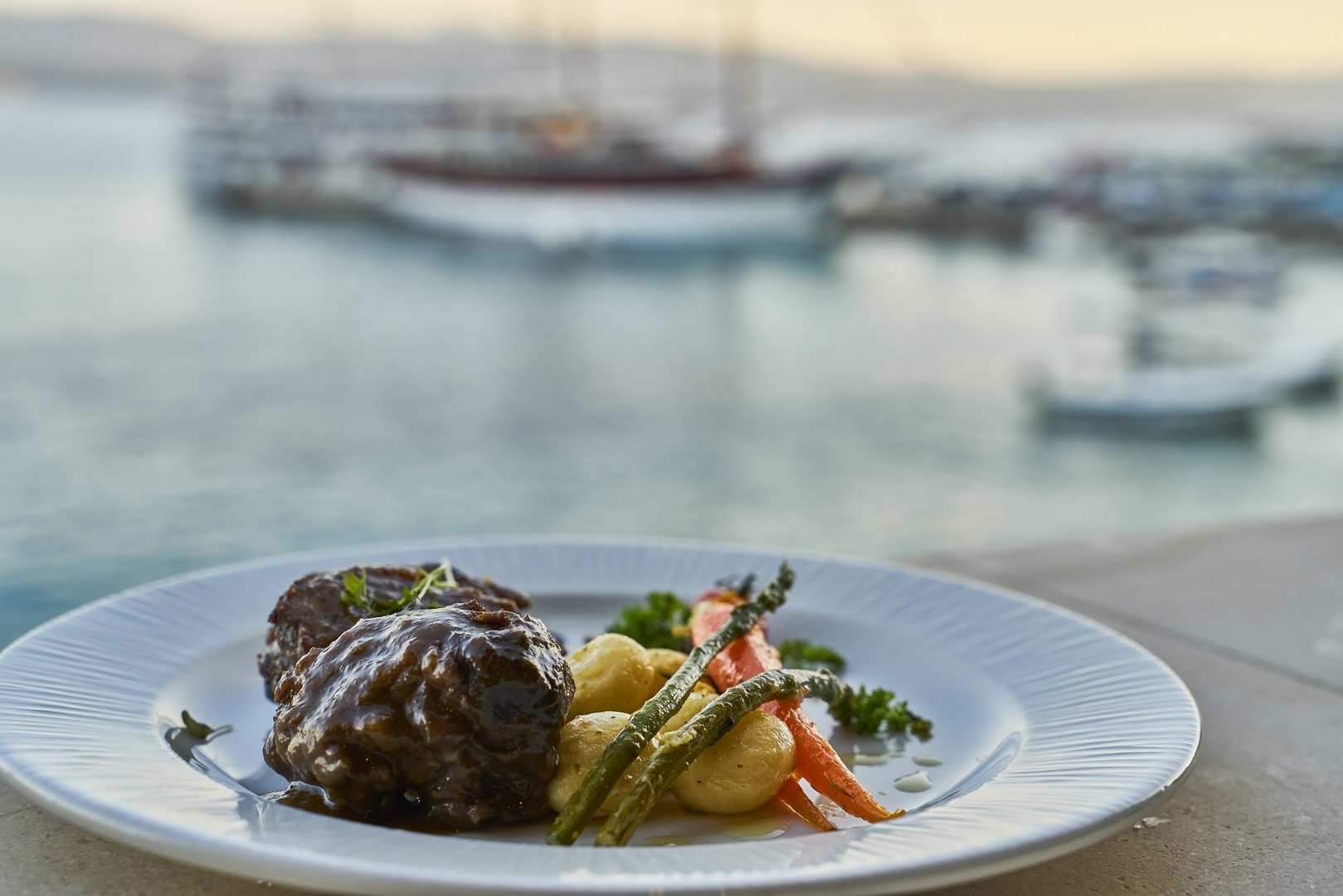
Away from Split's crowded tourist centre, this informal, pleasant, and quiet restaurant Šug , where the young, cheerful staff greets tourists with politeness and smiles, serves a nice assortment of traditional Dalmatian meat and fish dishes. A modest lovely outdoor space in the inner courtyard and exceptional value for money round out the image.
Wines - The dinner pairs well with notable red wines and white wines, such as Putalj Rose . To complement the meal, try Dalmatinske kroštule and toast with prošek , a sweet dessert wine.
Bakra Pizza & Steak Bar is one of Split's oldest restaurants, dating back to 1947. They are located on a little street in the old neighbourhood of Toć, a few hundred meters to the southeast of the Old Town and near the train station. They provide delicious pizzas from a wood-fired oven, outstanding premium steaks, a choice of BBQ options, and traditional Dalmatian cuisine with a modern twist.
Zadar's traditional cuisine is a unique representation of Mediterranean cuisine. It combines certain Mediterranean cooking techniques, as well as Dalmatian goods and traditional cooking methods. It is built on simplicity and authenticity, as well as sea and agricultural items produced on farms in the countryside.
Lunch prices in Zadar vary significantly, with a special emphasis on traditional Croatian dishes. Main courses in mid-range restaurants serving traditional cuisine often cost between €11 and €20 and feature local specialities like seafood, grilled meats, or robust stews. At higher-end restaurants , main dishes can range from €20 to €50 or more, depending on the ingredients and presentation.
Cheese from the island Pag - Pag cheese is created from 100% sheep milk and is regarded as one of the top ten cheeses in the world. Pag cheese varies from others in that it has a delicate spicy taste and scent from medicinal Mediterranean herbs that sheep consume in the meadows before being turned into milk. This cheese is listed under the EU's Designation of Origin. An entire wheel weighing 2.7kg can be purchased for €207,36 by individuals wanting to experience its majesty.
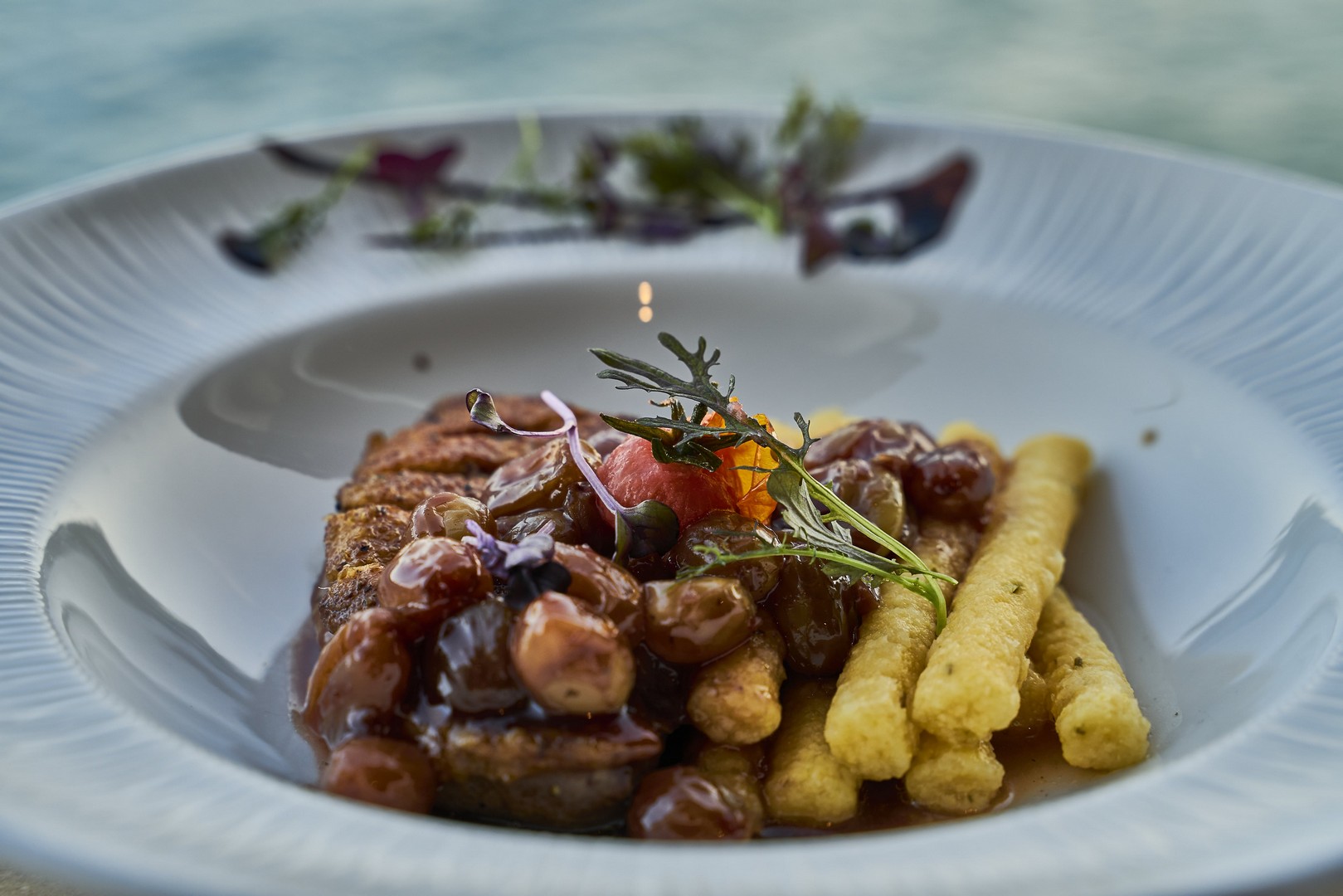
Bruschetta is known for its creative cuisine and fresh, locally sourced ingredients. Look for appetizers or cheese boards featuring Pag cheese, paired with artisanal bread and local honey.
Salted or marinated anchovies - Anchovies are little fish, smaller and narrower than sardines. Their bones are removed and marinated in a simple mixture of oil, lemon juice, vinegar, and customary Mediterranean flavour for many hours. Marinated anchovies are presented with extra virgin olive oil as a wonderful culinary treat. This delicacy costs €5 per serve .
Asparagus - During the spring, wild asparagus grows in central Dalmatia, and residents frequently go for nature walks in search of these difficult-to-find crops. They are typically served with risotto, soup, or with hard-boiled eggs. Embrace the flavours of the season with this versatile ingredient, priced at €3,82 per kilogram .
Konoba Skoblar is a beautiful bar on the seaside that serves traditional Dalmatian meals. Look for appetizers or antipasti that include salted or marinated anchovies as part of the seafood option.
Peka with octopus or meat and potatoes - Dalmatian Peka is a baked meal that frequently includes octopus or veal with potatoes, placed on a tray, covered with a unique bell-shaped cover, and cooked over embers in a fireplace. Many families have a dedicated oven outside for cooking and preparing meals over an open fire. This is undoubtedly Dalmatia's hallmark dish and the basic notion of the Peka dates back at least 3000 years to the late Bronze Age, when the bell or lid was constructed of clay. Indulge in this timeless delight, priced at €17,25 per person .
Restaurant Kornat specializes in seafood and Mediterranean cuisine, but may also provide Peka. It's a good idea to ask about their Peka selections when dining there.
Istria is one of Croatia's most gastronomically intriguing locations. Its geographical location, climatic conditions, and closeness to cultural and regional borders have all contributed to the developing of a rich culinary history in this very small area. Family-run taverns and agricultural farms continue to uphold this practice today. Mid-range restaurants serve classic Istrian cuisine for €10 to €20 , while higher-end restaurants offer innovative versions of Istrian food for €30 and above .
Istria is renowned for its truffle mushrooms , which grow in the grey soil of the Mirna River valley and Motovun woodland. White truffles ripen in the autumn, whilst black truffles ripen in the summer and winter. Truffles add a distinct aroma and flavour to foods such as pasta, eggs, and cheese. A White Alba Truffle weighing 8-20 grams may fetch up to €1815 , demonstrating its rarity and culinary worth.
Veritas Food&Wine is a modest family-run restaurant in the centre of Pula, Croatia. The restaurant, located near the ancient Basilica Maria Formosa, provides a one-of-a-kind dining experience thanks to its attractive environment and wonderful food.
The Boskarin is a traditional Istrian cow breed. These cattle were used as working animals in the fields, but due to modern agricultural techniques, their numbers began to decline by the end of the 20th century. Because of conservation efforts, their population has returned, and their flesh is now highly regarded by gourmets. Embrace the rich culinary heritage of Istria with a serving of Boskarin meat, priced at €7,70 per serving , and savour the distinctive taste of this revered breed.
Epulon is a wine and cuisine bar where you can unwind and enjoy Istrian wines, food, coffee, tapas, and more... PET-FRIENDLY! Your animal companions are also welcome and will be treated as our guests!
Novigrad scallops are known as " Kapešanta " in the region. Scallops from the Novigrad Sea are regarded as the best in the world due to the combination of sweet and saltwater waters. Novigrad scallops are so highly valued that a festival is organized in their honour in Novigrad.
Batelina's reputation reaches well beyond Istria, and with good reason: the fish served here is freshly caught and of the greatest quality. In this basic and inviting restaurant, you'll find a superb selection of fish, which is announced at your table and varies according to the catch of the day.
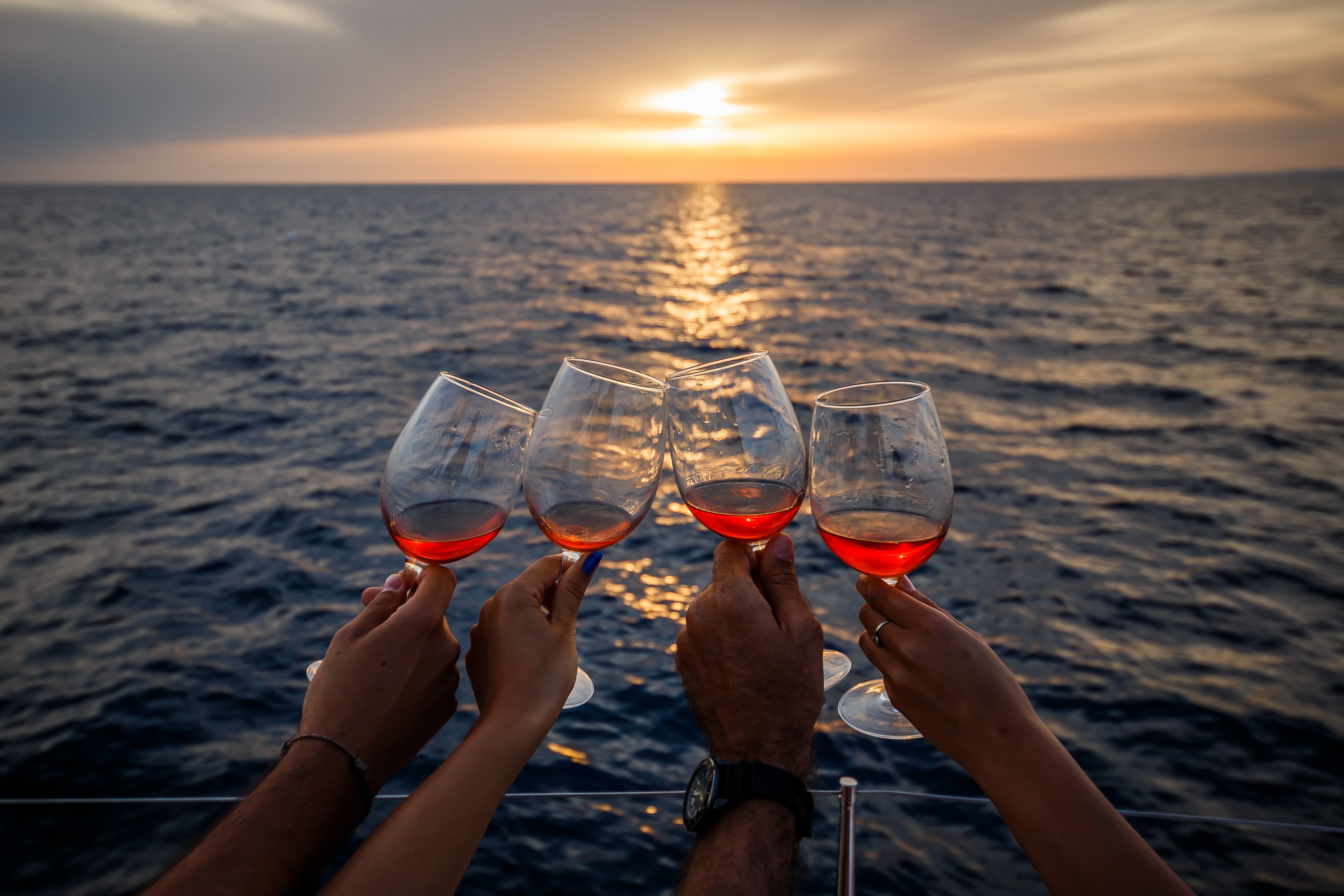
Because of its pleasant environment, Istria is also regarded as a wine region. The most well-known type is Istrian Malvasia . It is considered one of Croatia's greatest white wines , with fruity aromas and a golden tint. Muscat Momjan , an indigenous white varietal, is consumed as an aperitif or dessert wine. The traditional Teran is the most renowned of the red grape types, reaching its peak quality on Istrian red soil. Wine prices in Istria typically start at €20 , reflecting the region's commitment to producing high-quality wines that capture the essence of its terroir and centuries-old winemaking traditions.
The overall cost of cooking dinner in every town in Croatia could range from €30 to €60 , depending on your menu choices and where you purchase goods. Keep in mind that these are just estimates, and actual expenses may differ. Furthermore, dining in can frequently be less expensive than eating out in restaurants, particularly in a tourist destination like Dubrovnik, Split or Zadar.
Price of Activities in Croatia
Let's now endure Croatia's treasures! There are lots of attractions that are free to visit or only charge a small fee. Popular free or low-cost sights include Split's beautiful old town , the magnificent Pula Amphitheater , and Dubrovnik's ancient city walls . If you're willing to splash out, other attractions can cost a little more per person, including a day excursion to the gorgeous islands of Hvar or Brač . Therefore, depending on your options, you should budget between € 30 to € 150 for sightseeing and activities.
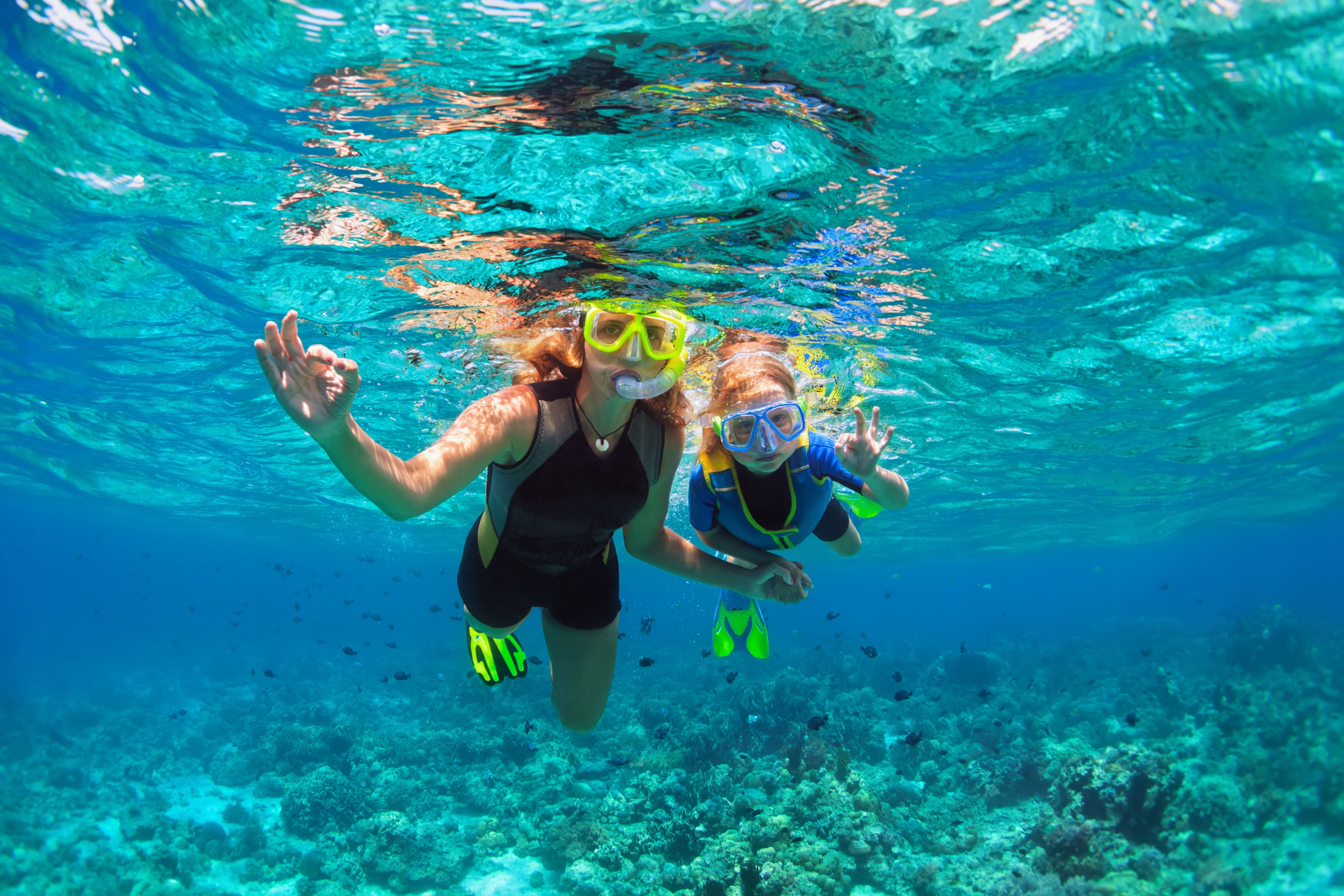
Dubrovnik
From ancient sites like the Old Town and Rector's Palace to spectacular natural beauties like Mount Srd and the Elaphite Islands , Dubrovnik has something for everyone. Historical attractions range in price from free to 30€ , whereas tours to natural beauties might cost from € 10 to € 110 or more.
Museums offer enriching experiences and can cost anything from € 5 to € 30 .
Historic Sites
Entry to the historic Old Town is free , allowing you to explore at your own pace.
A trip along the amazing city walls is a must for panoramic views of the city and the beautiful Adriatic Sea. Tickets cost you € 15 per person or € 5 for a children's ticket. In those tickets, entry to the Lovrjenac Fort right next to the Old Town is included .
Visit notable locations such as the Rector's Palace, Dubrovnik Cathedral and St. Blaise Church to learn more about Dubrovnik's history.
The admission fee for the Rector's Palace is € 15 per person , while children and students pay € 8 .
Dubrovnik Cathedral and St. Blaise Church are free to visit .
Museums
In the Maritime Museum, visitors can learn about the city's maritime legacy through exhibitions of ship models, navigational tools, and shipwreck artefacts. Admission normally costs € 10 per person and € 7 for students .
The Dulčić Masle Pulitika Gallery, located in a restored 16th-century palace, is a must-see for art fans. Admission to the gallery costs € 20 per person and € 8 for students .
You can also learn about Dubrovnik's past at the Museum Rupe , housed in 16th-century granaries built into the cliffs, showcasing Dubrovnik's trading past. Entrance will cost you € 10 .
Another amazing place for Art lovers is the Museum of Modern Art Dubrovnik , where regular exhibitions highlight works by modern Croatian artists, with an entrance fee of € 20 per person.
Sailing From Dubrovnik
The Elaphiti Islands, a lovely archipelago northwest of Dubrovnik, attract visitors with their unspoiled beauty and peaceful sruroundings. These idyllic sanctuaries, which consist of 13 islands, just three of which are inhabited, provide a peaceful break from the daily grind of city life.
Explore the islands' hidden coves, secluded beaches, and charming fishing villages with the help of companies like Croatia Yachting . You can book a boat at Komolac, ACI Marina Dubrovnik.
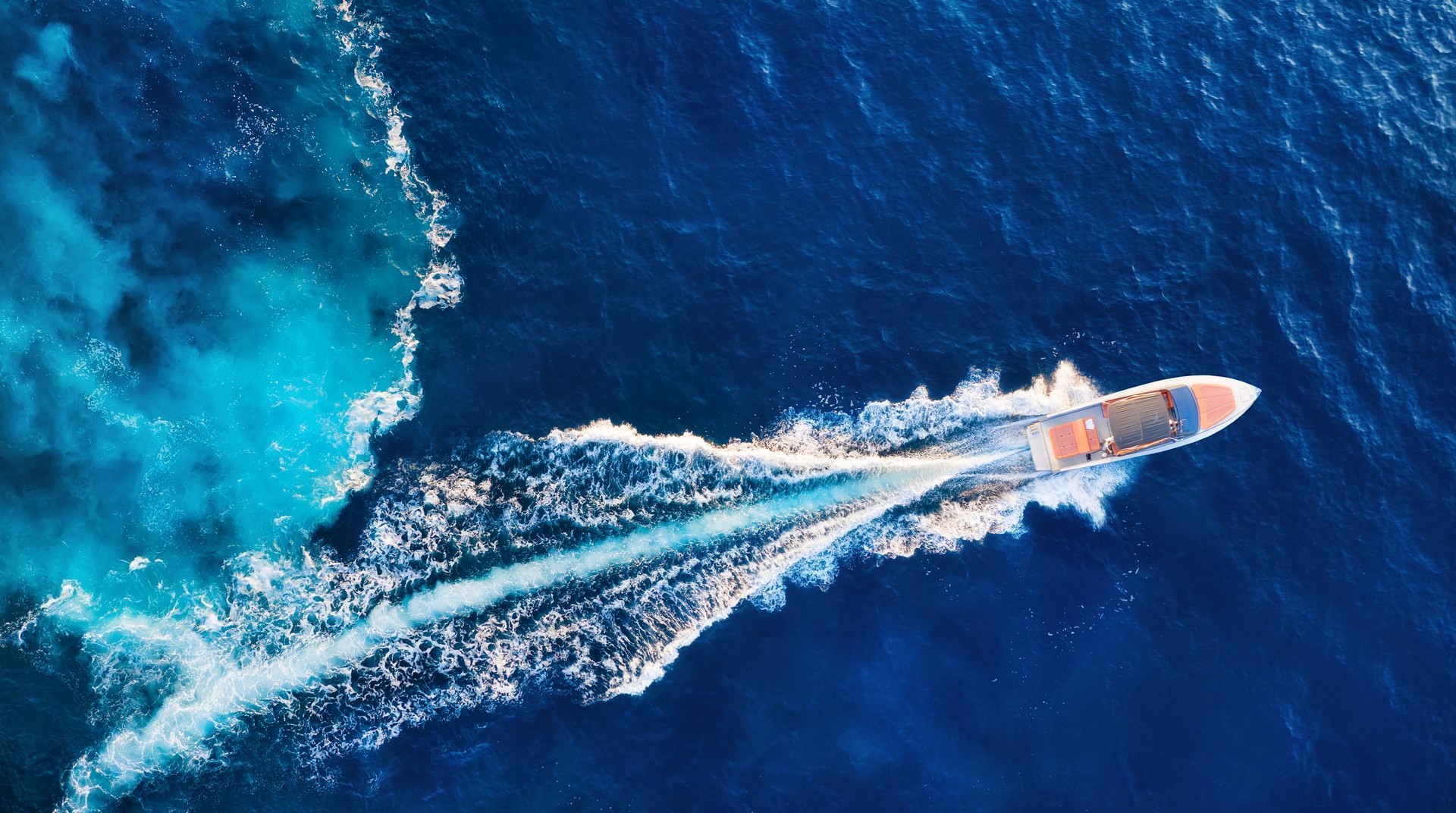
In Split, activity prices vary significantly. Historical places such as Diocletian's Palace might be free or up to €20 , while guided excursions cost between €20 and €50 . Outdoor activities such as boat cruises range in price from €5 to €100 , while adventure and cultural experiences normally cost between €30 and €70 per person. Prices are subject to change depending on various factors such as season.
Historical Sites
In Split, every corner of the city reveals a unique chapter from the past. The focal point is the 4th-century Diocletian's Palace , a UNESCO World Heritage Site.
Diocletian's Palace is free to enter , however, there can be charges to enter some of the complex's museums or other sections .
For example, the entry fee for Diocletian's Palace Basement is €7.
The Cathedral of Saint Domnius is another historical treasure. Climbing the bell tower offers you stunning views of the city and the nearby islands. The entrance price ranges from €5 to €10.
Museums and Galleries
The Archaeological Museum is a must-see attraction, housing exhibits of antique jewellery, sculptures, and ceramics that will give you insight into the historical civilizations of the area. Admission rates to the Archaeological Museum are €10 per person.
For art lovers, experience Croatian contemporary art at the Gallery of Fine Arts, or Galerija Umjetnina , where alternating shows showcase pieces by regional and foreign artists for a fair price of €5 per person.
The Mestrovic Gallery is also a must-see in Split, it showcases the works of renowned Croatian sculptor Ivan Mestrovic. Ticket for one person is €12 , but if you're visiting with your family you can get the family package for €20 .
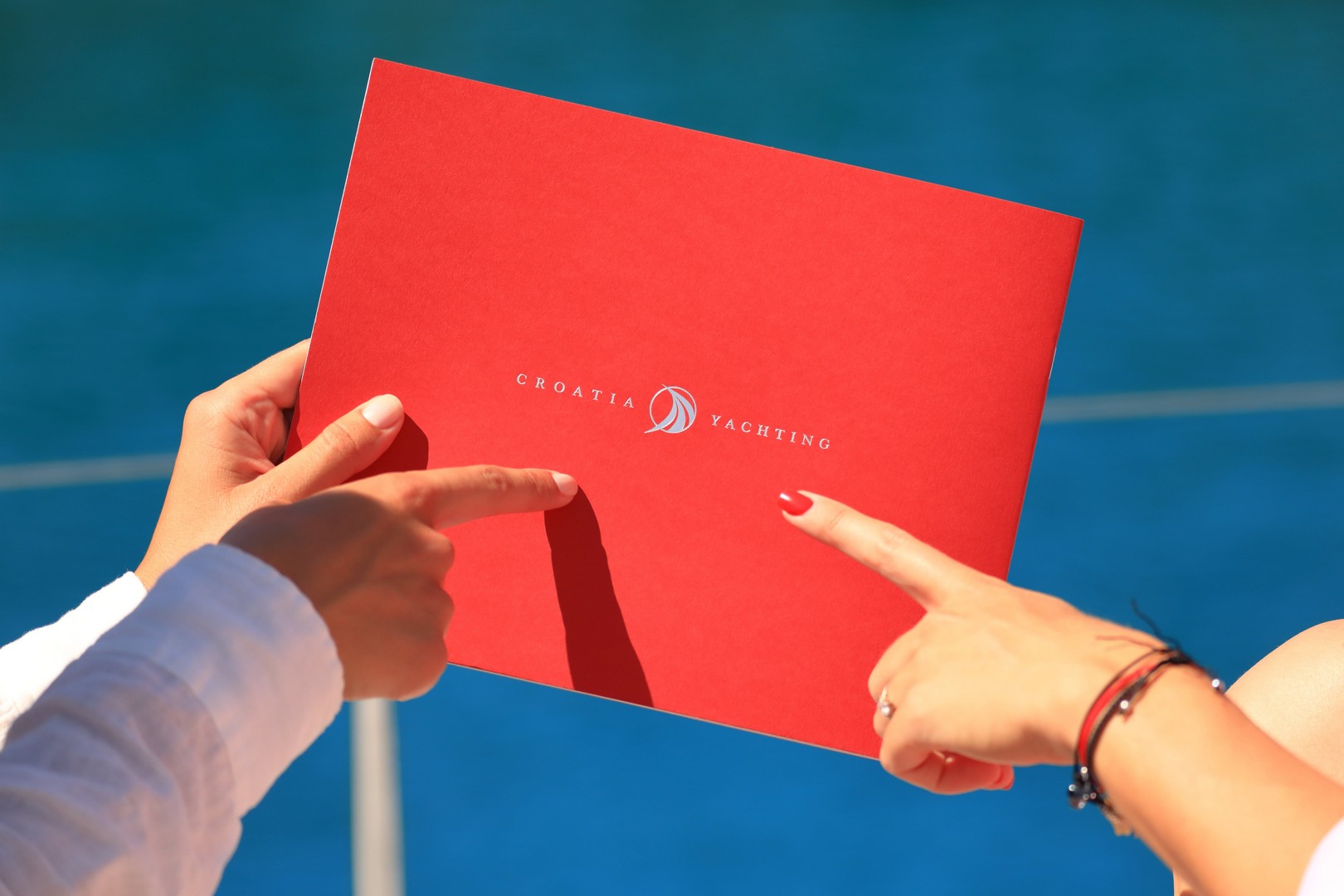
Sailing From Split
The picturesque island of Hvar, with its historic architecture, gorgeous swimming locations, and dynamic nightlife, is one of Croatia's most popular attractions. For a full Hvar experience, it's worth staying for a couple of nights.
If you are short on time, take a fast Catamaran from Splits Port to Hvar Town for € 5,71 per person in one direction. With the help of companies like Croatian Yachting , you can take the fastest motor yacht directly to Hvar Town , the island's largest town, and explore surrounding locations such as Jelsa .
Croatia Yachting provides a wide range of boat charter possibilities. Make sure to visit their website for additional details. Book a boat at Marina Kaštela
When in Zadar soak yourself in history by seeing the ancient Old Town, which blends Roman ruins with medieval cathedrals. Enjoy the unique Sea Organ , powered by Adriatic Sea waves, and soak in the warm Dalmatian sun. Admission to museums normally ranges between € 3 and € 10 , while most of the historical sites are free to visit . Nature lovers can escape to the nearby Kornati Islands , which are known for their pristine beaches and crystal-clear waters.
Visit Zadar's Episcopal Complex , a UNESCO site, that includes the majestic Cathedral of St. Anastasia , the largest in Dalmatia.
Admire the Roman Forum , formerly the busy centre of ancient Zadar, and explore the relics of Roman architecture dispersed around the city.
Continue your expedition with a visit to the Church of St. Donatus, a Byzantine architectural masterpiece from the ninth century, one of Zadar's most recognizable landmarks.
Entrance to the Old Town of Zadar, including the Roman Forum is free, enter the Church of St. Donatus for € 2,65 and experience the view from St. Anastasia Cathedral for € 2.
Zadar's museums knit a complex cultural tapestry.
The Archaeological Museum displays items from millennia, with a 6€ for single ticket price.
For art lovers, the Museum of Ancient Glass displays a stunning collection of Roman glassware, with an entrance fee of € 6 per person .
Meanwhile, the Museum of Illusions charges around € 8 per person for interactive exhibits and mind-bending illusions.
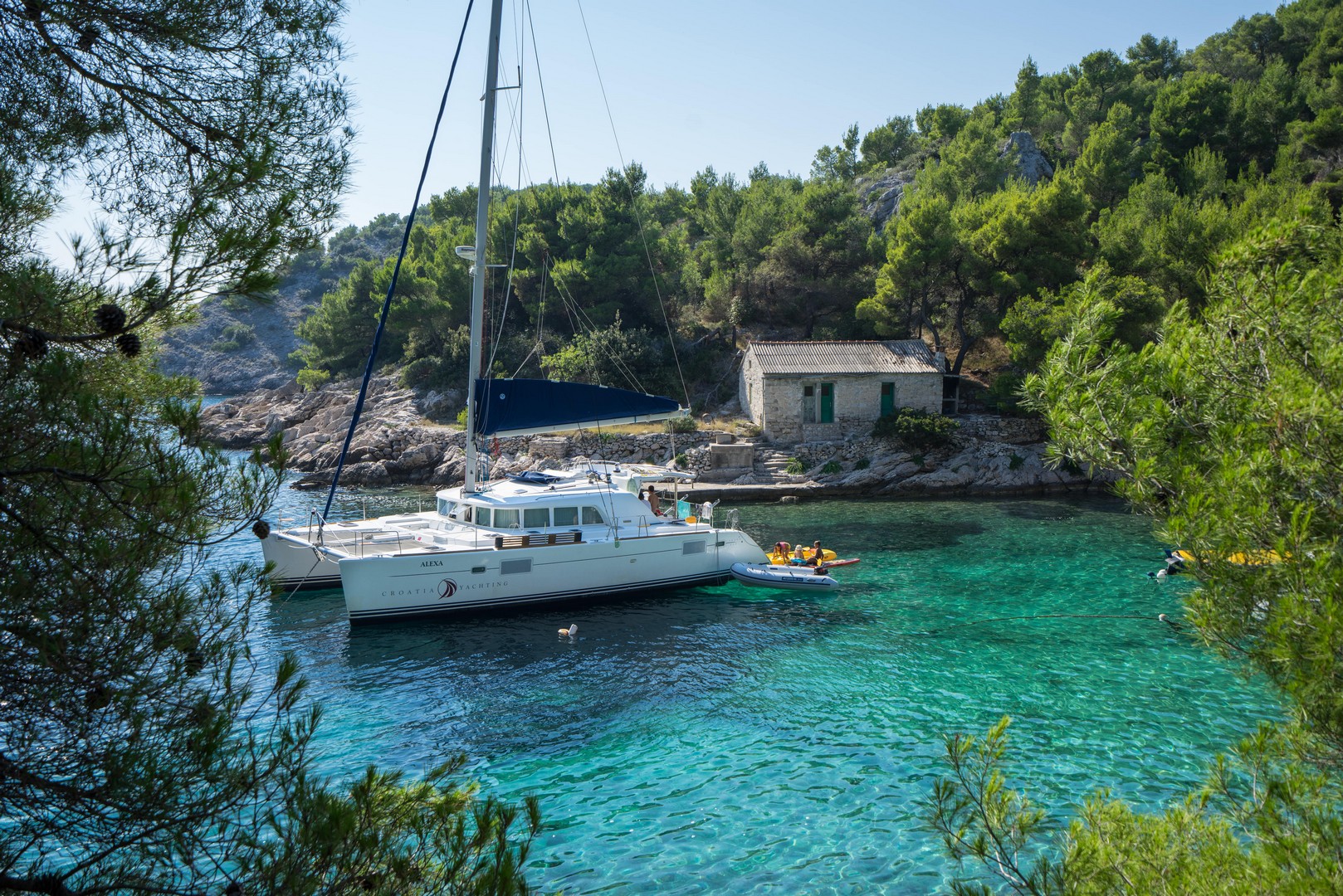
Sailing from Zadar
The boat voyage from Zadar to the Kornati Islands promises to be a memorable journey through the Adriatic Sea's sparkling waters. Setting off from Zadar's harbour, you will be greeted by a pleasant breeze and incredible panoramas of the coastline. As the boat travels across the blue sea, passengers are treated to stunning views of secluded coves, and uninhabited islands dotting the horizon. The Kornati Islands are the most dense island cluster in the Mediterranean, consisting of 150 islands and islets. Pack your swimsuit and towels, and sail away with the Croatia Yachting team from the everyday rush. If you are interested in booking, try here .
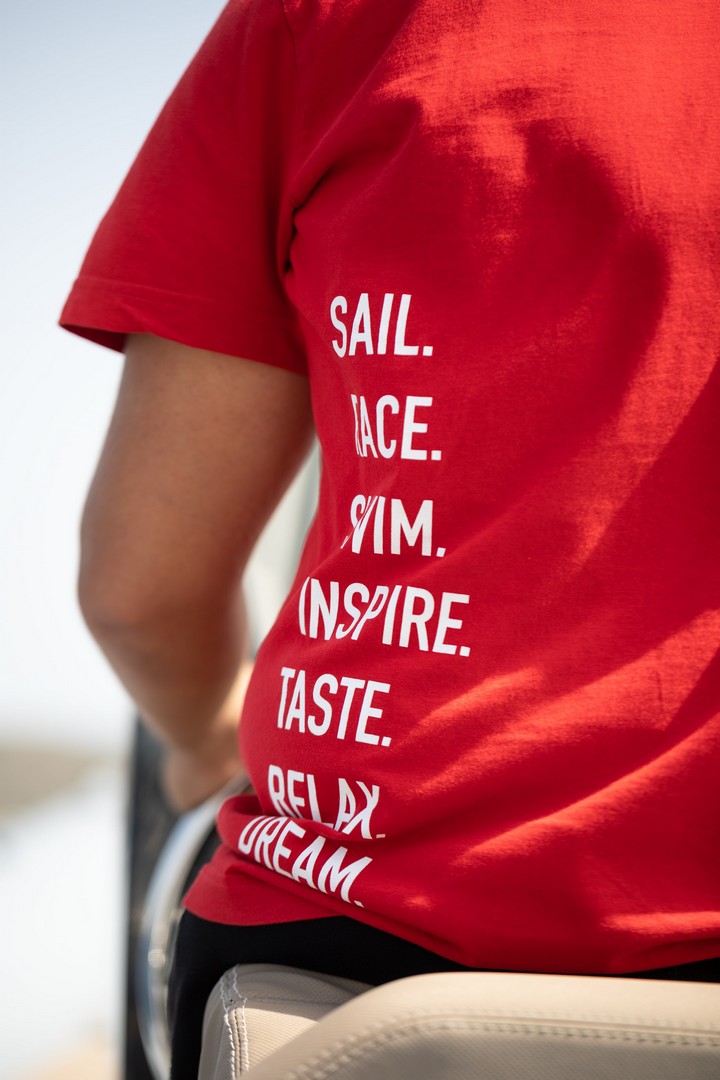
From exploring ancient Roman ruins or discovering hidden gems in the Old Town, to adventurous trips to neighbouring natural beauties, Pula provides a memorable experience for everyone's taste and budget. Entrance fees for historic sites typically range from €2 to €20 . Additionally, visiting museums may have an admission fee of approximately €5 .
The iconic Pula Arena , a magnificently preserved Roman amphitheatre allows you to experience gladiatorial contests in a way you cannot find anywhere else. Entry to this architectural masterpiece will cost you €14,49 .
Furthermore, the Temple of Augustus , a Roman temple dedicated to Emperor Augustus, is located in the main square of the city which is called the Forum. Entrance to the temple is free.
Make sure to visit some of Pula's fortresses for a jump from the Roman period to Austro-Hungarian times for €3 per person.
In The Archaeological Museum of Istria, you will find Roman and medieval jewellery, coins, and weaponry, as well as prehistoric ceramics and fossils, mosaics, and sarcophagi. This museum charges €5 per person.
Furthermore, the Nautical and Historical Museum of Istria offers an interesting look at the city's nautical past, with exhibits ranging from the High Middle Ages until recent history. Admission to this museum is €3 per person.
For art connoisseurs, the Museum of Contemporary Art of Istria contains works of art developed during the second half of the twentieth century and the most recent works of contemporary artists, with an entry rate of €2,65 per person.
Sailing From Pula
Setting off from Pula begins a maritime experience full of coastal gems. As the boat glides effortlessly across the clean waters of the Adriatic Sea, relax on deck and enjoy your lunch with unlimited drinks.
Discover Brijuni National Park's treasures and enjoy its mix of peacefulness with lively nature. Immerse yourself in the pure beauty of 14 intriguing islands, each with its lush scenery, historic ruins, and unique fauna to discover. Explore calm beaches, visit Roman villas, and see abundant marine life beneath the crystal-clear seas. Pula is the centre of Croatia's yachting charter in the Istrian region. Book yourself a boat.
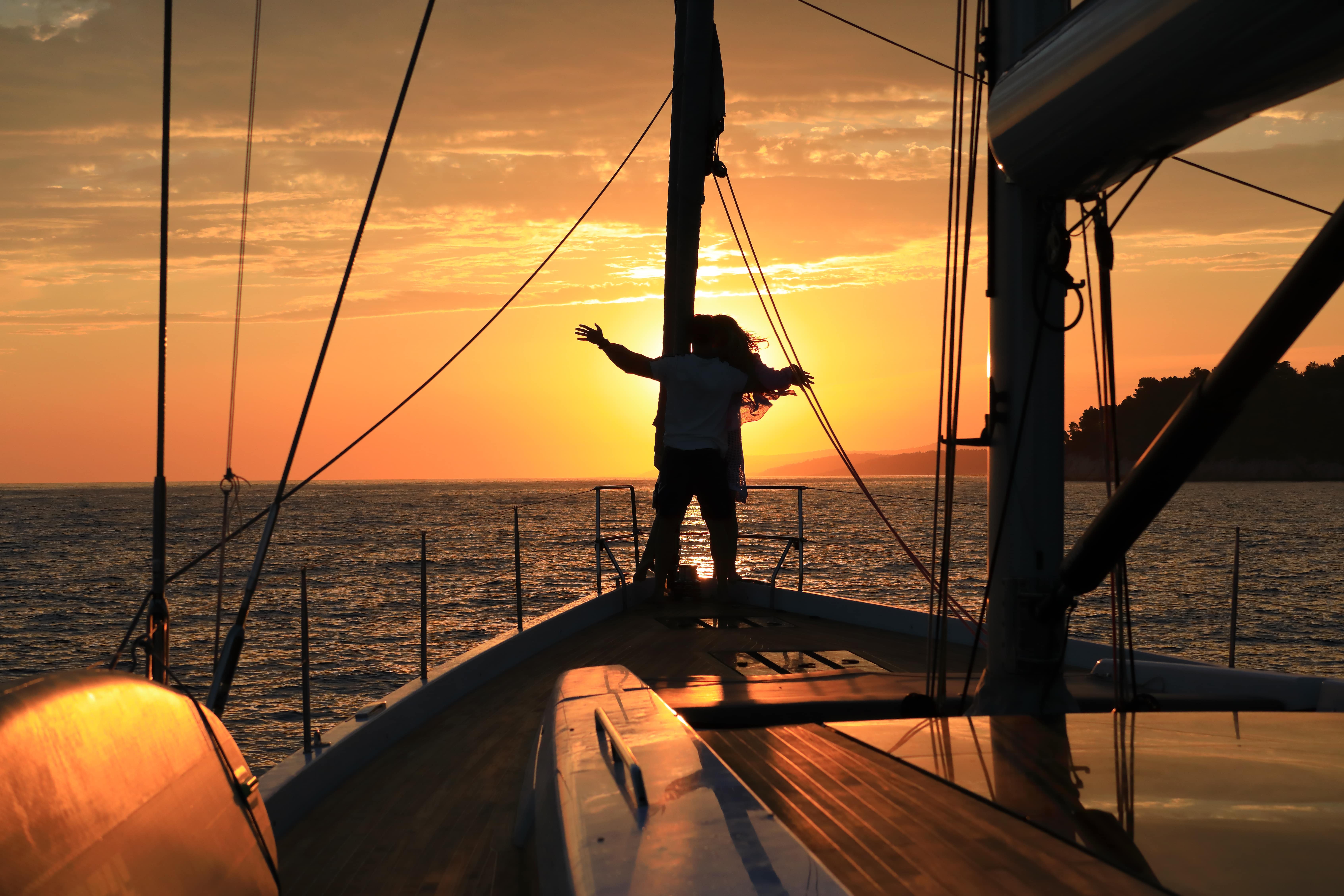
Is Croatia, in our opinion, expensive or affordable to visit in the year 2024?
When comparing prices in Croatia to other Mediterranean locations like Italy, Spain, and Greece, Croatia tends to be a more reasonable option. While luxury dining and hotels in tourist locations may be comparable to those in Italy or Spain, Croatia has more affordable options for dining and accommodation. Croatia often has lower transportation expenses including public transportation and rental cars, compared to other Mediterranean destinations. Even though grocery and essentials prices may be comparable to Italy or Greece, Croatia is still seen as a more affordable option.
To conclude, Croatia achieves a balance between affordability and Mediterranean charm, making it an appealing destination for those looking for amazing coastlines, wonderful cuisine, and cultural experiences without breaking the bank.
Now that you know all about prices in Croatia, are you ready to begin your sailing adventure?
Click here to look at charter choices and book a boat for a memorable sailing adventure. Our team is available to answer any questions you may have, ensuring that your nautical dreams come true.
For any charter questions during business hours, please contact our Split office at +385 21 332 332 or email [email protected] .
Is Croatia expensive?
Croatia's cost of living and travel expenses vary significantly depending on the region and season. Coastal cities like Dubrovnik and Split are generally more expensive, particularly during the peak tourist season, with higher costs for accommodation, dining, and activities. In contrast, inland areas and lesser-known destinations offer more affordable options. However, with careful planning and booking in advance, travelers can find reasonably priced accommodations and services even in popular tourist areas. Comparing prices and avoiding peak times can help manage your budget effectively.
Is Croatia Cheap?
While Croatia offers a spectrum of prices, affordability depends largely on location and timing. Smaller towns and inland regions often have lower prices for accommodation and dining compared to popular coastal cities. Traveling outside the peak summer months can also lead to significant savings. Additionally, Croatia's local markets, casual eateries, and public transportation offer budget-friendly alternatives to more tourist-centric options. For those willing to explore off the beaten path, Croatia can be an affordable destination with plenty of value for money.
How much is a bottle of wine in Croatia?
The price of a bottle of wine in Croatia varies based on the brand, quality, and region. On average, a decent bottle of local wine costs between €5 and €15 in a supermarket, while more premium wines can range from €20 to €30 or more. In restaurants, expect to pay a markup, with prices typically starting around €15-35 for a bottle. Croatia is known for its quality wines, and visiting local wineries can provide both an authentic experience and the chance to purchase bottles directly from producers at competitive prices.
How much is beer in Croatia?
Beer prices in Croatia can differ depending on where you buy it. In supermarkets, a bottle of local beer typically costs between €1 and €2.5. If you are dining out, a pint of draft beer in a pub or restaurant generally ranges from €3 to €5, with craft beers costing slightly more. In tourist hotspots, you may find prices slightly higher. Croatia has a growing craft beer scene, with many bars and restaurants offering a wide selection of local brews.
How much does a meal cost in Croatia?
Dining costs in Croatia can range widely based on the type of restaurant and location. A meal at a mid-range restaurant typically costs between €15 and €35 per person. In tourist-heavy areas, prices can be on the higher end, while local taverns and eateries offer more affordable options. Street food and casual dining spots provide budget-friendly meals, often for under €10. For a splurge, high-end restaurants in cities like Dubrovnik and Split can charge upwards of €50 per person for a multi-course meal.
Is Split in Croatia expensive?
Split is generally more affordable than Dubrovnik, though it can still be expensive, especially during the summer months when tourism is at its peak. Accommodation prices, especially near the Old Town, can be high, but there are budget options available further from the center or in neighboring areas. Dining and entertainment also range in price, with both luxury and more economical choices available. By visiting outside the peak season or staying in local guesthouses, you can enjoy Split without breaking the bank.
How much money to take to Croatia for 7 days?
Budget between €700 and €1500 per person for a comfortable 7-day trip to Croatia, which includes accommodation, meals, transportation, activities, and additional expenses. However, actual expenses will vary depending on your vacation style, accommodation choices, dining preferences, and activities.
Share with Friends
Pick one of hottest offers we prepared for you or go and see all boats
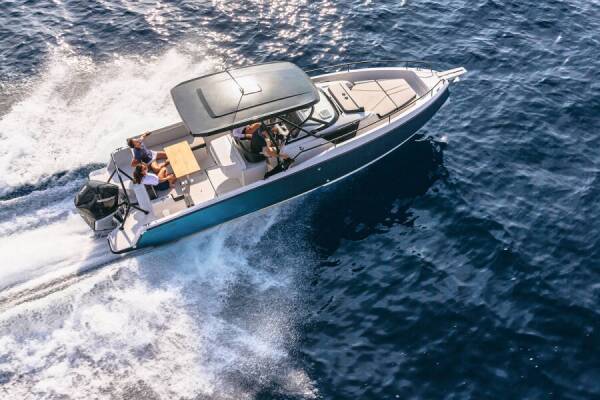
Ryck 280 | Trick
Marina Kornati, Biograd, Croatia
Length 9.16 m
Engine x 1 300 hp
24 Aug - 31 Aug 2024
€ 3.660 € 2.477
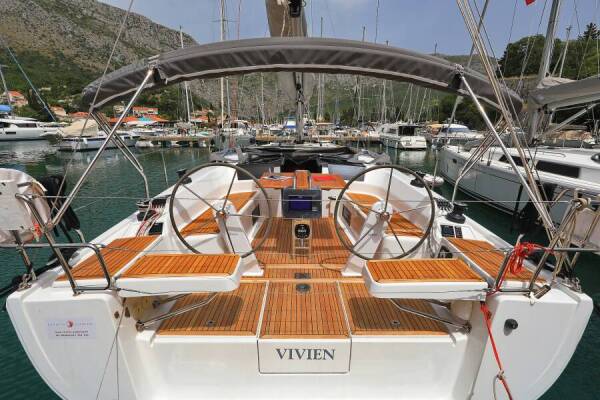
Hanse 418 | Vivien
Komolac, ACI Marina Dubrovnik, Croatia
Berths 6 + 2
Length 12.40 m
Engine x 1 39 hp
€ 3.750 € 1.861
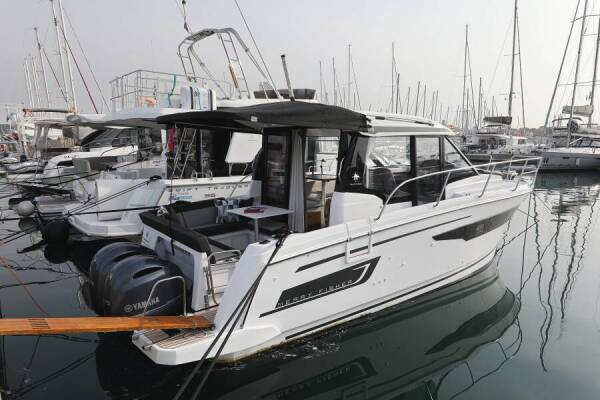
Merry fisher 895 | Aquaduck
Berths 4 + 1
Length 8.90 m
Engine x 2 175 hp
€ 3.520 € 2.224
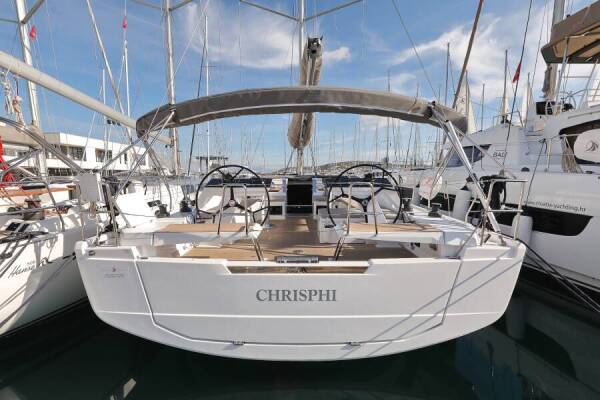
Hanse 460 | Chrisphi
Yachtclub Seget (Marina Baotić), Seget Donji, Croatia
Length 14.60 m
Engine x 1 80 hp
€ 6.250 € 2.538
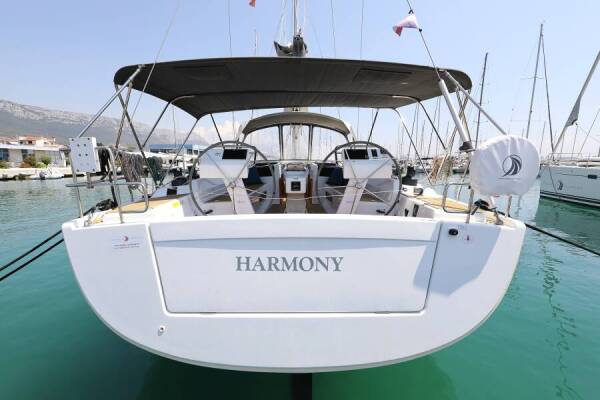
Hanse 505 | Harmony – OW
Marina Kastela, Croatia
Berths 8 + 2 + 1
Cabins 4 + 1
Length 15.40 m
Engine x 1 75 hp
€ 5.850 € 3.168
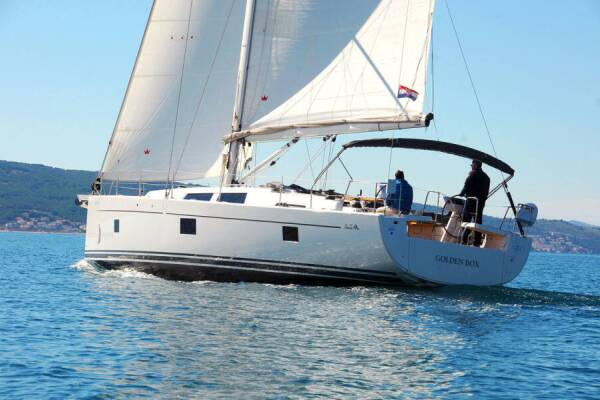
Hanse 508 | Golden Box
Berths 10 + 2 + 1
Cabins 5 + 1
Length 15.55 m
€ 6.550 € 2.660
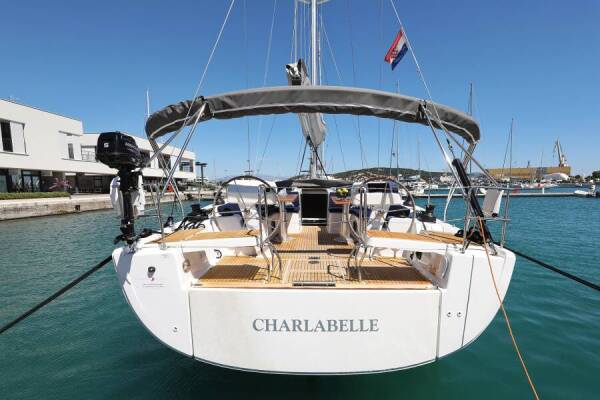
Hanse 508 | Charlabelle - OW
€ 7.750 € 3.147
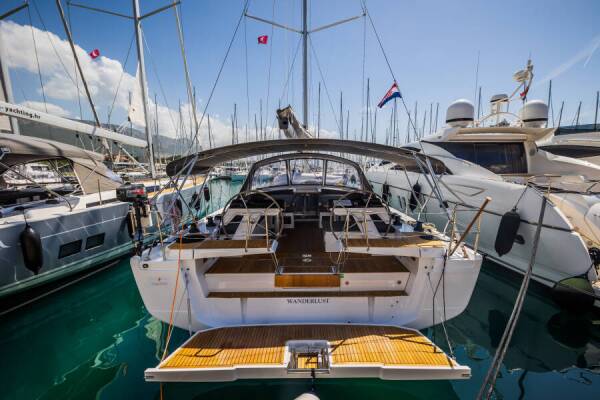
Hanse 460 | Wanderlust
Berths 10 + 2
Engine x 1 57 hp
€ 6.850 € 2.782
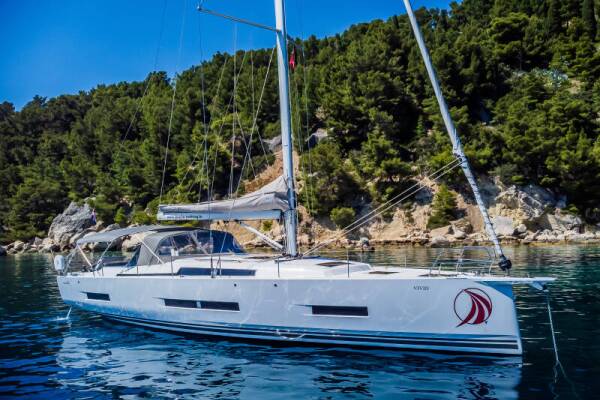
Hanse 510 | Vivid
Length 15.97 m
€ 8.950 € 3.635
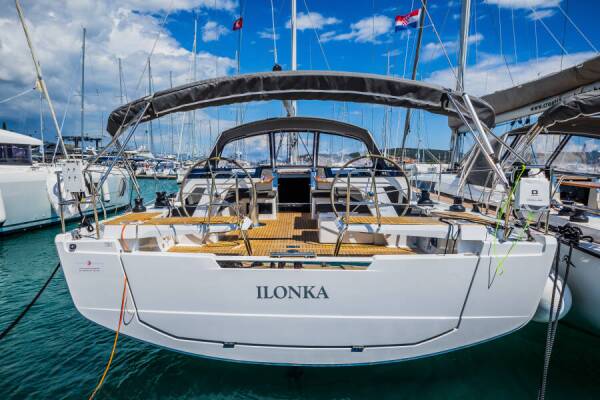
Hanse 460 | Ilonka - OW
Berths 8 + 2
€ 6.650 € 2.701
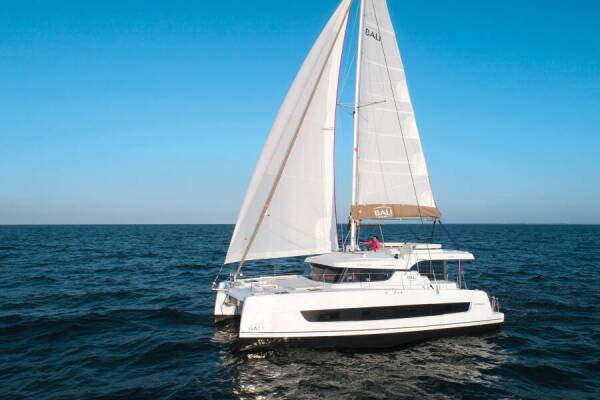
Bali catspace ow | Warm Breeze
D-Marin Mandalina, Croatia
Length 12.31 m
Engine x 2 40 hp
€ 8.350 € 3.768
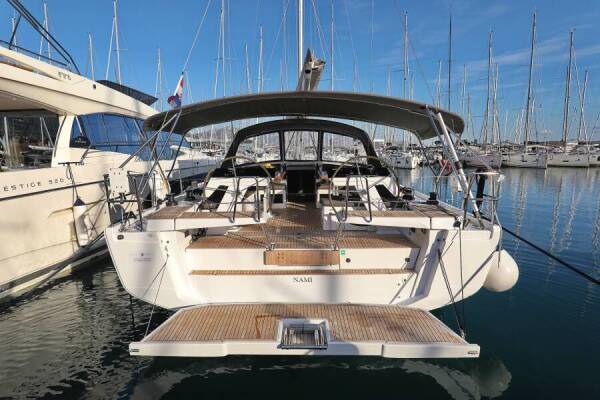
Hanse 460 | Nami
€ 6.450 € 2.445
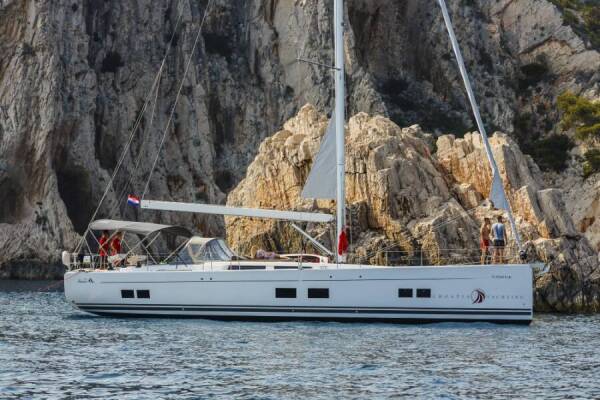
Hanse 588 | Superstar
Length 17.20 m
Engine x 1 110 hp
€ 9.150 € 4.129
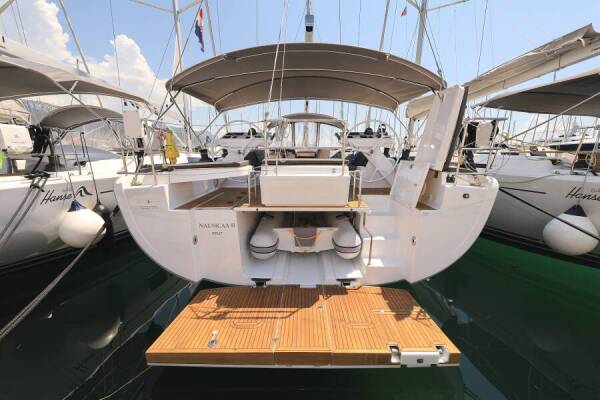
Hanse 588 | Nausicaa II
€ 10.650 € 4.806
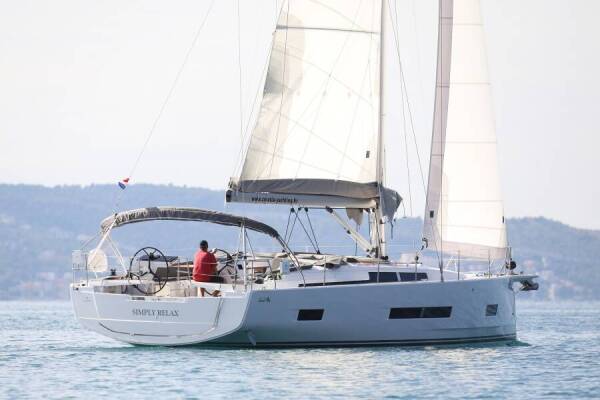
Hanse 460 | Simply Relax
€ 6.990 € 2.839

Hanse 460 | Whistler
Croatia yachting - headquarters.
Address: Dražanac 2/a , 21 000 Split, CROATIA
Booking Office: +385 21 332 332
E-mail: [email protected]
Office working hours: 8:00 – 16:00 CET
Follow us on Social Networks
Feel free to ask us anything – our team is on your side!
For any yacht charter questions during the office hours please call our booking team in our Split headquarters on +385 21 332 332 or send us an e-mail on the address croatia-yachting.hr .
For urgent inquiries after working hours, you can contact our booking agents individually on their mobile phones or send an e-mail and you will get a response as soon as possible:
Ms. Ružica Jozipović (English and German speaking clients) Tel: +385 91 331 3341
Ms. Monika Trumbić (English and German speaking clients) Tel: +385 91 332 3362
Mr. Roko Kovač (English speaking clients) Tel: +385 91 332 3370
Ms. Martina Barač (English, Italian speaking clients) Tel: +385 21 332 332
Ms. Aleksandra Borjan (Italian, French, English speaking clients) Tel: +385 91 331 3343
Ms. Jelena Matkovic (English speaking clients) E-mail: croatia-yachting.hr
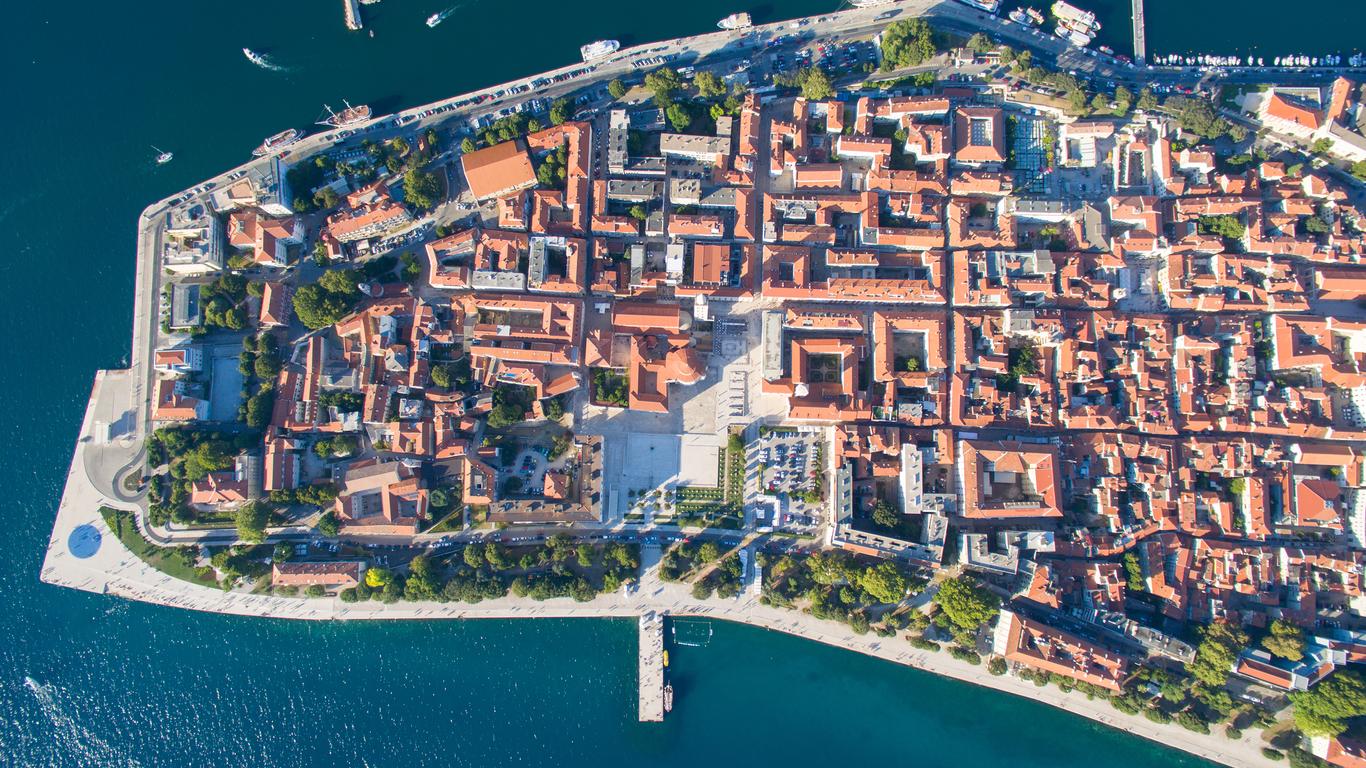
Vacations in Croatia
Search hundreds of travel sites at once for vacation package deals in croatia.
Free to use There are no hidden charges or fees.
Filter your deals Filter by free cancellation, free breakfast and more.
Millions of reviews Check ratings based on millions of real guest reviews.
Bundle and save Save money when you bundle your flight + hotel.
Cheap Croatia package deals
Most popular croatia flight and hotel deals, all inclusive vacation packages to croatia, last minute vacation packages to croatia, search by stars, search by review score, search by board, search by price, search by freebies, when to book a vacation in croatia, tips for finding croatia package deals.
- There are loads of types of vacations in Croatia and the cost will depend on what type of trip you’re taking and for how long you’d like to stay. Here are the latest prices for a 3 night trip for 2 travelers: Top vacation $500; Family vacation $458; Romantic vacation $480; Luxury vacation $527; Budget vacation $487.
Why should you book a vacation package to Croatia?
When you add everything up, Croatia can be expensive, but there's a ready made solution. With Croatia vacation packages, you can purchase accommodation, vehicle hire and flights in one transaction, saving money and liberating a few cents here and there to make your trip unforgettable.
When should you book a vacation package to Croatia?
Beach vacations to Croatia are most appealing from May to June and in September and early October. During both periods, the weather will be warm and the crowds won't be as bustling as they can be during high season. Hotel prices should dip dramatically as well.
Where should you stay in Croatia during your vacation?
For any vacation type in croatia:.
Situated in Split, Dalmatia's largest city, the Le Meridien Lav mixes access to a lively city with closeness to some stunning beaches. Blessed with 800 meters of private beach, a tennis academy and water sports center, it has something for everyone. It's also only around 15 miles from Split Airport.
Dubrovnik's Hotel Uvala is suited to families, business travelers and couples, with a central location in one of Europe's most beautiful cities and an enticing aromatherapy and beauty spa on the grounds. Taxis from Dubrovnik Airport take 25 mins.
For family vacations in Croatia:
Split's Hotel Globo is made for families. Close to the ruins of Diocletian's Palace, it occupies a semi-rural spot where outdoor activities abound, so taking the kids out cycling is definitely an option. Airport taxis take 25-30 mins, while the 37 bus takes around an hour.
The Residence in Podstrana is set up to cater for families and larger groups. Located in pine woods on the outskirts of a historic port town, this Dalmatian gem offers family-friendly add-ons like free baby cots and laundry. It's around 30 mins from Split Airport.
For romantic vacations in Croatia:
If you're seeking a boutique hotel for a romantic break in Croatia, the Hotel Adriatic in Rovinj is unbeatable. The setting is gorgeous, while the hotel offers spa treatments and free bike rentals, too. Expect taxis from Pula Airport to take 40 mins or so.
The Valamar Lacroma Dubrovnik is a romantic refuge in a magical city. You can be close to the city's ancient and medieval sights, head to idyllic beaches, and chill out at the on-site spa and restaurants in the evening. And it's only 25 mins from Dubrovnik Airport.
For luxury vacations in Croatia:
Specializing in wellness treatments and all-round pampering, the Hotel Lone in Rovinj should keep luxury travelers happy and totally relaxed. The refined exterior is matched by gorgeous interior design, adding up to a first-rate premium hotel some 35 mins from Pula Airport.
The Hotel Fanat is a fine spot for a luxury beach break in Dalmatia. Located around 25 mins from Split Airport, its rooms feature huge balconies as standard, and the restaurant and spa offer a package of luxury services that elevate it above other Dalmatian options.
For budget vacations in Croatia:
See Dubrovnik for less by booking a room at the Hotel Komodor. Not far from the Old Town, the Komodor has lovingly furnished rooms, reliable internet for all guests to enjoy, an outdoor pool and an excellent restaurant. Taxis from the airport take 25 mins.
Budget travelers will adore the Hotel As in Split. Focusing on getting the all-important basics right, this dependable hotel has a good location, plenty of parking, and a high-quality restaurant. It's also only around 20 mins by car from Split Airport.
Where to stay in Croatia
Croatia vacation information, popular package vacation destinations in croatia.
18 things you need to know before visiting Croatia

Mar 17, 2024 • 7 min read

Plan the perfect Croatia trip with these top tips © TerryPrince / Getty Images
With its glittering coastline, 1244 islands, endlessly fascinating cities and extraordinarily dramatic landscapes, Croatia has been steadily making its way up people’s must-go lists.
Naturally, tourists are drawn to those beautiful Adriatic beaches that easily hold their own against their Mediterranean rivals. But inland Croatia is just as captivating, from the hilltop villages of Istria to the elegantly buzzing capital, Zagreb .
Don't book your flights just yet though – first, make the most of our planning tips covering everything you need to know about health, safety and etiquette before you go.

1. Don’t overstretch yourself when planning an itinerary
It might be tempting to squeeze in as many destinations as possible into one trip, but you won’t be doing yourself any favors unless you’re staying for at least two weeks. If you’re planning to visit more than one Adriatic island, think realistically about how much time you can spend in each place and how you will be getting around .
Check the schedule of the national ferry operator, Jadrolinija , if you intend to do some island-hopping. Croatia has an extensive bus network, but factor in some long journey times if you’re traveling along the Adriatic coast.
2. Croatia's currency is the euro
Although Croatia joined the EU in 2013, the euro was only introduced as the national currency on the January 1, 2023. The Croatian kuna is no longer in use, and if you happen to have any of the old currency, you'll need to go to the Croatian National Bank to exchange them.
3. Expect to tip at least 10% in restaurants
Croatia’s tipping culture is more laid-back than in other countries. Having said that, it’s customary to leave at least 10% in restaurants and for beauty and spa treatments. In bars and cafes, just round up the bill. Tour guides appreciate a few euros at the end of a tour, and taxi drivers don’t expect a tip, but, again, if you want to round up a fare to the next euro, it’s appreciated. If you’re filling up your car and notice a few students cleaning car windscreens, consider giving them a couple of euros as they’re working for tips only.

4. Croatia is generally considered a safe place to travel
Croatia is a safe country with low levels of violent crime. The most prevalent issue for tourists is pickpocketing, but even that’s on a much lower scale than in other European countries. Solo women travelers should be safe on their own, although it’s wise to ask your accommodation provider if there are any areas in the vicinity that are best avoided. When using taxis, all travelers should make certain they’re using a licensed car either from an official taxi rank or ordered from your hotel. Uber operates in most major towns and cities, including Zagreb, Dubrovnik and Split .
5. Some caution is recommended for LGBTIQ+ travelers
In this relatively conservative country, homosexuality is tolerated, but LGBTIQ+ travelers should be discreet. Public displays of affection could raise a few eyebrows, and some travelers have experienced hostile reactions. Zagreb’s gay scene is growing, however, and both Zagreb and Split hold Gay Pride festivals every June.
6. Bring some swimming shoes
Most of Croatia’s beaches are pebbly or rocky and can be hard to enjoy in bare feet. Just pick up a pair of those neoprene or plastic swimming shoes you see in all the resorts, and you’ll also be protecting your feet from sea urchins that lurk under rocks and pebbles.
7. Nudity at the beach is pretty standard
Naturist beaches are popular in Croatia, and sometimes you won’t know you’re on one until people start stripping off. Most are marked with FKK – the German phrase “Frei-Körper-Kultur,” meaning free body culture – which isn't surprising as Germans make up some of the biggest numbers of tourists in Croatia. Away from the FKK beaches, topless bathing is quite common.
8. Dodge the crowds in Dubrovnik by timing your visit carefully
There could be times when up to 8000 cruise ship passengers might descend on Dubrovnik in one day. That’s the cue to stay away from the Old Town within the city walls until they leave in the late afternoon. Keep an eye on the Dubrovnik Port Authority’s website for cruise arrivals and the online crowd monitoring system that predicts the numbers of visitors.
9. Wi-fi is readily available
Croatia is part of EU roaming, which is handy if you have a contract that allows you to use your data abroad. It’s easy to find wi-fi in cafes and bars – just ask the server for the password ( šifra ).

10. Swimwear is for the beach, not the town
If you’re visiting churches and other sacred sites, keep your shoulders covered and avoid bare thighs. If you’re wearing a hat, take it off when you’re in a church. Even though dress codes are relaxed on the coast, Split, Dubrovnik and Hvar have passed laws against walking around the city in swimwear or bare-chested. Croatians like to dress smartly and take great pride in their appearance, so do as they do and avoid looking scruffy.
11. Don’t get drunk in public
Croatia has developed a reputation as a place to party, which has led to some areas being inundated with badly behaved drunken tourists. After years of enduring this, the mayor of Hvar Town had enough. In 2017, the destination started to issue fines of up to €700 for public drunkenness and things like taking a drunken nap in a public place, such as on a park bench. Split introduced fines of up to €300 in 2023, placing signs in the city center reminding people that public drinking is not allowed, and that no one should be urinating on the walls of Diocletian's Palace .
12. Get to know the Croatian character
Croatians can be quite reserved people, sometimes appearing brusque. It’s nothing personal, which you'll realize when you get to know them better, and the initial reserve melts to reveal a warm and friendly side.
13. Be tactful when talking about Croatia’s war of independence
The 1990s war that splintered the former Yugoslavia is a topic that needs careful handling. If people show a willingness to talk about it, then by all means ask sensible questions. But don’t be intrusive, and bear in mind that Croatians won’t take too kindly to being called either Yugoslav or Balkan. Similarly, in this predominantly Catholic country, be mindful of making loud statements against religion.
14. You can drink the tap water
Tap water in Croatia is perfectly safe and very drinkable, and you can refill your reusable water bottles at public drinking fountains.

15. Keep your lights on if driving during winter months
If you’re driving in Croatia from November to April, it’s compulsory to have your lights on during daylight hours as well as at night.
16. Croatia has occasional earthquakes
Croatia has a history of earthquakes going back centuries, but two recent ones in 2020 caused significant damage. The quake that shook Zagreb damaged thousands of buildings, many of which are in the old town, including the cathedral. Soon after, the city of Petrinja, about an hour’s drive south of Zagreb, was severely damaged in a quake, and aftershocks rippled throughout the region. If an earthquake happens while you're there, follow local guidance.
17. There are still some landmines
There are still parts of the country in the hinterlands of Northern Dalmatia and Lika where landmines remain from the war of independence, but these will be signposted with a skull and crossbones symbol. Don’t go anywhere near them.
18. Take out travel insurance
Dial 112 for general emergencies, 192 for police, and 194 for an ambulance. If you fall ill in Croatia and you're an EU citizen with a European Health Insurance Card (EHIC) or a UK citizen with a Global Health Insurance Card, you’re entitled to a vastly reduced price for health care . But even with this cover, you should still take out travel insurance.
This article was first published May 17, 2022 and updated Mar 17, 2024.
Explore related stories

Tips & Advice
Jul 25, 2024 • 5 min read
Here's how to explore Croatia's Dalmatian Coast, along with tips on fun, local experiences.

Jun 18, 2024 • 5 min read

Jun 13, 2024 • 8 min read

Jun 12, 2024 • 12 min read

May 28, 2024 • 8 min read

Apr 27, 2024 • 4 min read

Apr 19, 2024 • 10 min read
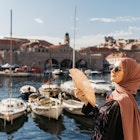
Mar 20, 2024 • 11 min read

Mar 15, 2024 • 10 min read
Croatia Travel Guide: Things To Know Before Traveling To Croatia
Welcome to our Croatia Travel Guide where you will find all the information you need for planning a trip to Croatia.
When I think of Croatia, I associate it with small, safe, sublime, pebbles, islands, sea, and countryside. The country has over a thousand islands , 8 national parks , 11 nature parks, over 6.000 km of coastline, and ten World Heritage sites .

From Paklenica climbing sites , beautiful beaches of central Dalmatia , the great food of Istria , Croatia’s fabulous wines, partying on the islands, and sailing the Adriatic , Croatia has much to offer its visitors.
We’ve dedicated this entire website to this wonderful country. Vera was born and raised in Croatia, and I moved here in 2005. We’ve been traveling around Croatia extensively. And here at our blog, we share the best of Croatia just as we discover it.
Visitors to Croatia can find useful travel tips , in-depth destination guides, things to do , places to stay , and lots of information on Croatian food and restaurants. I also sometimes share my musings on ex-pat life in Croatia .
Table of Contents
Where is Croatia located?
Before moving forward, let’s get the basic facts sorted out. Croatia is located in Europe! It is a Central European and Mediterranean country, bordered by the Adriatic Sea to the west. Croatia shares borders with Italy, Slovenia, Hungary, Serbia, Bosnia & Herzegovina, and Montenegro. It shares The longest land border with Bosnia and the longest sea border with Italy.
Below you will find the location of Croatia on the map.

Do you need a visa?
Most foreign visitors don’t need a visa to enter Croatia, including, but not limited to, EU countries, the UK, the USA, Australia, Canada, and New Zealand.
Foreign citizens of those countries can enter Croatia and stay here for 90 days within 180 days.
Citizens of EU countries can enter Croatia using only their ID cards; all others need to travel with a valid passport to enter Croatia.
If you require a visa to enter Croatia but hold a valid Schengen visa, as well as visas for Cyprus, Romania, and Bulgaria, you don’t need a separate visa for Croatia. You are free to travel to Croatia under the condition of your current visa from the above-mentioned countries.
If you require a visa for Croatia, you can print and fill out the application forms here and submit them along with the requested documents to the Croatian Embassy, Consulate, or an accredited tourist agency.
To apply for a Croatian visa, you’ll need a valid passport issued less than 10 years ago with an expiry date at least three months after the intended departure date from Croatia.
All questions regarding visa you can send via [email protected].
Weather in Croatia

Croatia has three distinct climates: the continental climate in its interior, the Mediterranean along the coast, and the mountain above 1200 m.
Along the coast, you can expect dry, hot, and sunny summers and mild, although sometimes wet, winters. Weather along the south Adriatic region of Dalmatia is generally drier and sunnier than in the northern Adriatic region of Istria. Daily temperatures can differ up to 5°C (40°F).
Although the average summer temperatures are around 22°C (72°F), in July and August, you can expect over 40 days with daily temperatures of over 30°C (86°F). Average winter temperatures are around 10°C, with January being the coldest month with daily average temperatures of less than 10°C (50°F). The average sea temperature varies from 12°C (54°F) in winter to 25°C (77°F) in summer.
Croatia’s interior has a moderate continental climate. Winters are cold and wet, with lots of fog, while summers get hot and dry. Average winter temperatures are around 4°C (40°F), while the average summer temperature is around 22°C (72°F).
Money in Croatia
Croatian currency.
The Croatian currency is Euro, a common European currency, as of January 1, 2023. At the time of writing this article, for 1 $, you get almost 1 € (0,94 to be exact), for 1 £ you get 1,13 €, for 1 CAD, you get 0,70 €, and 1 AUD will get you 0,64 €.
Exchanging the money in Croatia
The majority of the exchange offices advertise a “no commission policy”. While it is true that they don’t charge the typical commission, they do set their own exchange rates. These rates can vary significantly. Beware of these discrepancies, and shop around for the best rate.
ATM machines in Croatia
When withdrawing money from an ATM, try to use official banks’ ATM machines (they should have a sign of one of the Croatian banks like Zagrebacka, Privredna OTP, Erste, or Adikko Bank). These ATM machines are usually near the bank’s branch offices.
In resorts and hotels, you’ll often find Euronet (blue and yellow), Auro Domus ATM machines (yellow and black), or any other non-bank ATM machine. While they are often located at more prominent spots in towns, hotels, and resorts and are thus more convenient to use, they are also more expensive. However, if convenience is more important to you than a few euros here and there, go ahead and use these machines as well. I personally never use them.
Credit cards in Croatia
Although credit cards are widely accepted in Croatia, they aren’t accepted everywhere. One of the first things you will notice in Croatia is the abundance of ATM machines wherever you go. Smaller businesses, as well as some restaurants and bars, prefer cash. A general rule of thumb is that if you see a credit card sticker at the door or near the cashier, you should be able to pay by credit card. But the only safe way to know is to actually ask.
Another thing regarding money that you need to be aware of is the so-called dynamic currency conversion . This basically means that the amount of your credit card transaction is converted to your home currency at the point of sale (rather than by the card issuer).
In hotels or restaurants, or just about anywhere you intend to pay by credit card, the staff will ask you if you prefer the charge in local currency (Euro) or your own currency. While theoretically, you might sometimes profit from being charged in your own currency by a merchant on the spot, it rarely happens in reality. You will just end up paying more than you otherwise would. So, always choose to pay in local currency . Or ask for the exchange rate and compare it with the one you find that day on the internet.
When is the high season in Croatia?
The high season in Croatia is from mid-June to mid-September. The peak travel time includes the last week of July and the first two weeks of August.
However, the busiest time is not always the best time to visit Croatia.
Best time to visit Croatia
The best time of the year to visit Croatia is in June and September . There are far fewer people around (definitely no queues, traffic jams, or crowded beaches), the weather is still warm and sunny, prices are more affordable, and the sea is warm enough to swim in. Another tip: The Sea is usually warmer in September than in June.
Also, remember that Croatia is extremely popular among Germans and Austrians, especially the northern Adriatic regions of Istria and Kvarner. So, crowds (and accommodation prices) tend to increase around German school holidays (like Corpus Christi – it’s either in mid-May to early June or late May to mid-June; it changes from year to year). Ha, but this also means that in the year when German school holidays are in May, hotels often offer special discounts for June. And vice versa.
What to bring to Croatia
We all have our own rules and tricks when it comes to packing. However, we’ll give you a few ideas on what to bring and what to wear in Croatia.
Croatia has four seasons and three distinctive climates: a Mediterranean climate along the coast, a mountain climate on its rugged mountains, and a continental climate inland.
This means that if you are visiting Croatia during the summer, most of your clothes should be light. Nevertheless, a windbreaker jacket, a pair of long pants, and leggings always come in handy. For the rest, take a couple of shorts and tops that you can mix and match or a few casual summer dresses. Don’t forget your beachwear, including swimsuits and cover-ups, water shoes, sunglasses, and a microfiber towel. A pair of sandals and a pair of walking shoes are also a must, as well as a travel money belt .
Also, with luggage restrictions and weight limits, it’s worth investing in lightweight luggage to travel to Croatia.
As for the rest, don’t forget your photo equipment (with plenty of extra batteries), waterproof phone bag, adapters, converters, and other small things you will find indispensable in Croatia. Croatia uses 220V, 50 Hz frequency, and type C & F plugs. Both are similar plugs with two round prongs with 19 mm between them.
Here is our full post on what to bring and what to wear in Croatia.
Getting to Croatia
Traveling to Croatia from anywhere in Europe is quite easy. From April through September, many airlines have direct flights from all over Europe to all major Croatian towns. Besides, Split and Zagreb are connected by plane with the rest of Europe throughout the year. For detailed information on flights scheduled to Croatia, consult the CheapOair website.
We’ve also recently found out about Scott’s cheap flights program . They basically search for airline mistakes or intentionally great deals and email them to you. We haven’t used it, but it seems worth a try (they have a free plan too).
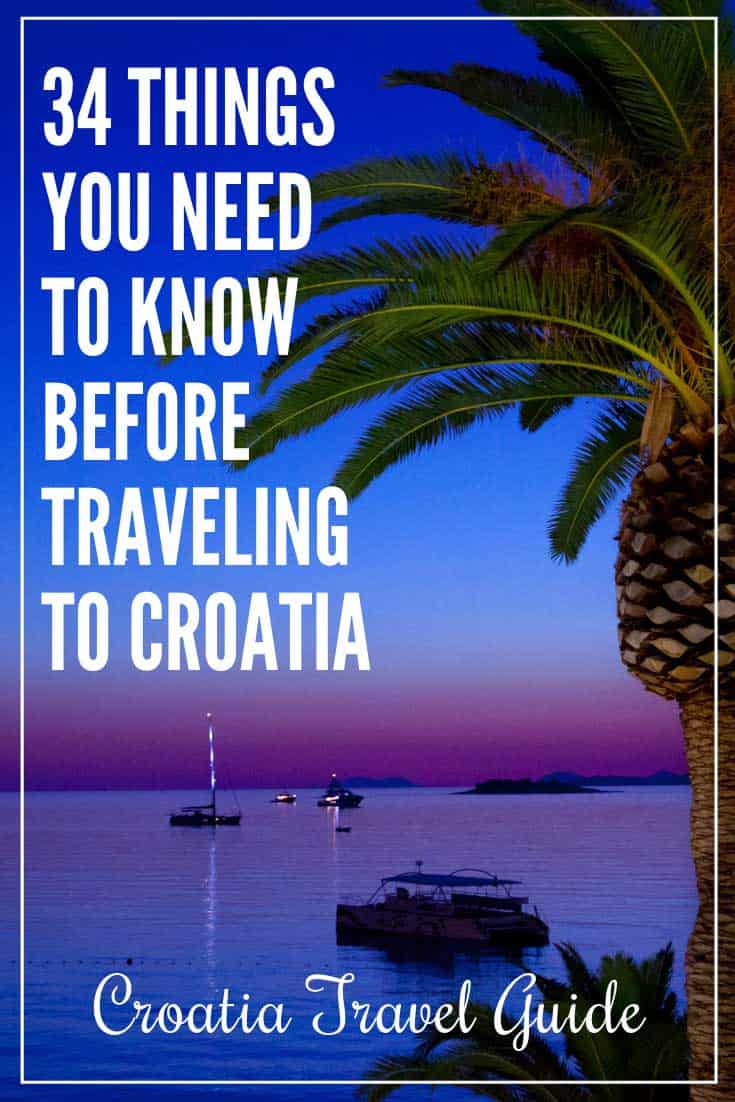
You can also travel to Croatia from other European towns by bus . Bus schedules are a bit harder to search for as many bus companies run the service. However, if you want to travel by bus, we highly recommend using the GetByBus website to check and book intercity buses in Croatia and beyond.
You can also check with a local bus station once you are at your destination and can physically walk there. Getting information over the phone or email can be impractical and expensive (yes, they still use automated phone machines that make you wait forever and charge you a fortune for waiting!).
Find out more here:
- Zagreb Bus Station
- Split Bus Station
- Zadar Bus Station
Train connections to and around Croatia are quite limited, and we generally don’t recommend traveling by train to Croatia. However, if you really have to, you can find more information on the Croatian Railways website .
International ferries connect Croatia and Italy. Directferries’ website is the best place to check ferries schedules and book tickets online. Jadrolinija operates Bari to Dubrovnik, Split to Ancona, Split to Bari, and Zadar to Ancona car ferry lines, while Venezialines passenger ferry connects Porec, Rovinj, and Pula with Venice.
Our favorite way to travel around Europe, and to Croatia as well, is by car . Whether it’s your own car or a rental car , it’s the most convenient way to move around Europe.
Getting around Croatia
The best way to travel around Croatia is by car . Croatia is a small country with great roads and nice little villages , totally worth a detour. The only way to really discover the country is to travel by car. We’ve written a full post about driving in Croatia and car rental in Croatia .
Another excellent way to travel around Croatia is by bus . Buses are modern, fast, affordable, and frequent. The islands and Istria are the only places we wouldn’t recommend bus traveling . For the rest, if you can’t travel by car for whatever reason, hop on the bus and enjoy the ride. Use BookAway to check lines and schedules and to book your bus ticket online.
Ferries are still the most popular and sometimes the only way to get to the islands. The main ferry ports include Rijeka, Zadar, and Split, but ferries also depart from smaller coastal towns like Brsecine, Makarska, Drvenik, Orebic, Ploce, and Prapratno. Jadrolinija is the largest ferry operator in Croatia, and its ferries cover most of the routes. You can also book your ferry tickets for some routes online through the Bookaway website .
Public transportation in bigger towns is reliable and efficient. Split, Rijeka, Zadar, Pula, and Dubrovnik use city buses, while Zagreb has an extensive network of electric trams and city buses. Public transport costs around 2€ per ride.
Taxis are generally pricey (except in Zagreb and Rijeka), but since Uber entered the market in 2015, cab rides have become more affordable. UberX is available in most popular tourist towns like Zagreb, Split, Rovinj, Dubrovnik, Zadar, etc… Uber and Cammeo Taxi are the cheapest taxi options in Croatia. However, both companies also adjust their rates to demand dynamically, and rates generally increase during the main tourist season.
Croatia holiday destinations
One of the most common questions is where to go in Croatia . Many visitors who travel to Croatia for the first time tend to visit the main tourist towns and attractions, like Zagreb, Split, Plitvice, Hvar, and Dubrovnik. However, Croatia has many hidden gems , charming villages , wonderful natural sites , and beautiful beaches .
Where to go depends heavily on the type of traveler you are, the things you want to do , the time you plan to spend in Croatia, and your budget .
We have written extensive travel guides on the following holiday destinations in Croatia:
- Split Travel Guide
- Dubrovnik Travel Guide
- Zagreb Travel Guide
- Plitvice Lakes Travel Guide
- Hvar Island Travel Guide
- Rovinj Travel Guide
- Porec Travel Guide
- Rabac Travel Guide
- Pula Travel Guide
- Brac Island Travel Guide
- Peljesac Peninsula Travel Guide
- Dalmatia Region Travel Guide
- Dubrovnik Region Travel Guide
- Istria Travel Guide
National parks
Croatia is a small country with a surface of just over 56.000 m2. However, due to its geographical location, geomorphological and ecological conditions, and climate, in terms of biodiversity, Croatia is one of the richest countries in Europe.
The nature here is divine: from the Adriatic sea and high-rising mountains to the plains of Slavonia and the rolling hills of Istria and Zagorje.
The country has eight national parks, ten nature parks, and two strict reserves. Almost 10% of the country’s territory is protected. The national parks of Kornati, Brijuni, and Mljet are located on the islands and are characterized by rich marine life. The Risnjak, Northern Velebit, and Paklenica national parks cover mountainous areas. They all feature interesting limestone rocks, meadows, and vast forests.
Plitvice Lakes, Croatia’s most visited national park, and Krka national park are famed for their lakes, streams, rapids, and waterfalls.
Unesco World Heritage Sites
Croatia doesn’t lack cultural and historical sites. Even ten of them made it to the Unesco World Heritage Sites list.
These sites include The Euphrasian Basilica in Porec, St. James Cathedral in Sibenik, the old town of Trogir, Diocletian Palace in Split, Dubrovnik old town , Stari grad planes on the island of Hvar, Plitvice Lakes, the Venetian Works of Defence from the 16th and 17th centuries in Zadar and Sibenik, Stećci Medieval Tombstone Graveyards in Cista Provo and Konavle, and Ancient and Primeval Beech Forests in national parks Paklenica and Northern Velebit.
With the exception of the Plitvice Lakes, all other sights are located along the coast. Here is our list of 10 Unesco World Heritage Sites in Croatia not to be missed.
Accommodation
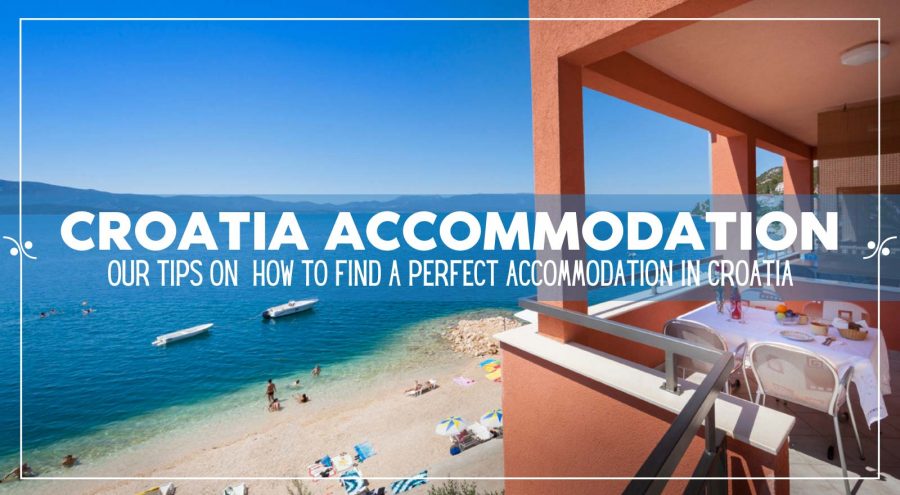
We often get asked about the best type of accommodation in Croatia. For this reason, we’ve written a full post on different types of accommodation in Croatia , with their pros and cons.
Croatia offers a variety of accommodations to choose from: hotels, hostels, apartments, villa rentals, and campsites. Which is right for you depends heavily on your travel style and budget.
Croatia is mostly seen as a 4-star family destination . However, some destinations are fancier than others. This is particularly true for Dubrovnik, Hvar Town, and partially Rovinj.
We’ve written extensive guides on accommodation in the following destinations in Croatia:
- Where to stay in Split
- Where to stay in Dubrovnik
- Accommodation in Zagreb
- Where to stay in Rovinj
- The Best Hotels in Rovinj
- Where to stay in Porec
- Plitvice Lakes Accommodation
- Where to stay in Pula
- The 12 Best Makarska Hotels
Hotels in Croatia
A good choice of 5-star hotels you’ll find in Zagreb, Dubrovnik, Rovinj, and Losinj Island. Although some hotels offer an all-inclusive formula, all-inclusive resorts aren’t popular in Croatia. All-inclusive Croatia mostly refers to a full board meal plan with unlimited selected drinks at mealtimes. Many hotels in Croatia offer a half-board meal plan , and dinner often comes cheap when purchased as a part of a room rate.
Booking.com is by far the most popular website for browsing and booking hotels in Croatia. They offer the most flexible booking policy and offer the most choice of properties. You can also check the hotel’s official website. Sometimes hotels offer special deals available only through their website.
Apartments in Croatia
Many Croatians rent apartments to tourists. Apartments are a good alternative to hotels. They are cheaper, offer more space, and come with a fully-equipped kitchen.
Apartment rentals, just like hotels, need to be licensed and get an official star rating. The most popular websites for apartment rentals in Croatia are Booking.com and Airbnb.
Villas in Croatia
Another popular and emerging type of accommodation is villa rentals . Mostly located off the big tourist resorts, these villas offer peace and quiet, and lots of privacy. Besides, villas come with a pool where you can chill all day long.
Croatia is also a very popular camping destination . There are lots of campsites all along the coast, and just a few of them are in continental Croatia.
Popular campsites in Croatia include Lanterna in Porec , Valkanela in Vrsar, Polari in Rovinj, Park Umag, and Zaton near Zadar. The best place to make yourself familiar with Croatian campsites is the Camping.hr website, an official website of the Croatian Camping Association.
Many of our readers reach out to us with a question about driving in Croatia, road condition, and safety on Croatian roads. Croatian roads are in very good condition. A fairly new multi-lane motorway connects Zagreb to the north and Rijeka to the northwest with Ploce in the south.
Tolls apply on all multi-lane motorways named with the letter A, as well as on some tunnels (eg. Ucka tunnel between Rijeka & Istria), etc. A one-way fee from Zagreb to Split (approx. 400 km) costs 24 € (25 $)*.
Besides motorways, you can also travel on toll-free state roads. These roads are also in good condition, but a single carriageway road, with a single lane for each direction, and some of them, particularly a coastal road D1, are winding.
*prices checked in January 2023
Renting a car
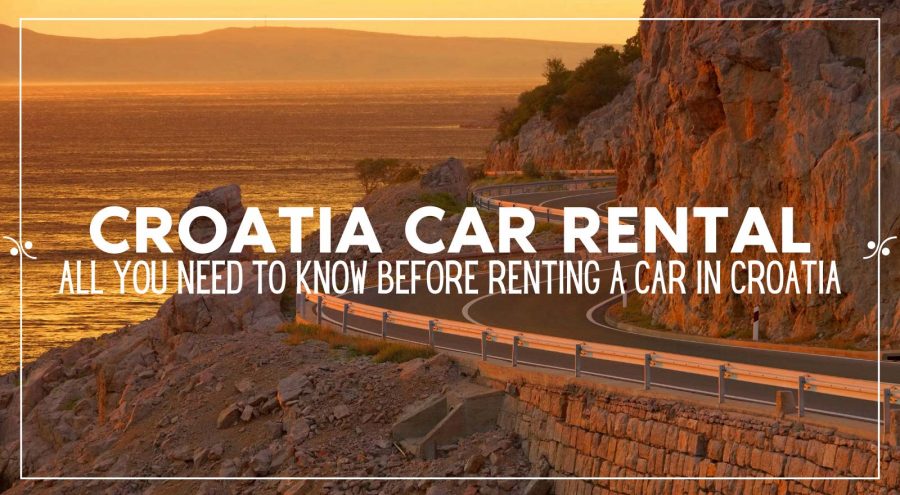
The best way to explore Croatia is by car. And if you don’t travel in your own car, don’t shy away from renting a car in Croatia. You’ll be able to take in the sights; travel off the beaten path; see more in less time, and have the freedom to stop wherever and whenever you feel.
Car rental in Croatia is very seasonal . This simply means that you’ll need to secure your car rental well in advance if you plan on visiting Croatia in July and August. This also means that rental prices increase dramatically in these two summer months. We recommend using Rentalcars.com for your car rental in Croatia.
Tourist registration
All tourists staying in Croatia need to be registered at a local tourist office. And non-EU citizens will also be automatically registered with the police.
This is the reason why during the check-in process at any hotel, private accommodation, or campsite, you’ll be requested to show (and often leave until the next morning) your passport or an ID card.

We love food in Croatia. It’s varied, fresh, local, and tasty. In continental Croatia, people eat lots of meat, while a diet in coastal regions is heavily based on fish, other seafood, and green veggies.
As a traveler, you might also make some false assumptions based on food offered in touristy restaurants along the coast. These restaurants often offer what tourists ask for, and not necessarily typical Croatian dishes.
One of the most popular posts on our blog is our post on must-try Croatian dishes . Make sure to read it so you don’t miss some of the local specialties.
We also give a couple of tips on where to find local, delicious, and cheap eats in Croatia .
And don’t miss our ultimate list of the best places to eat in Croatia . Istrian restaurants rank the highest on this list.
Tap water is safe to drink in Croatia. However, if you still prefer to drink bottled water, bear in mind that bottled water is extremely expensive here. For instance, a 1.5 L bottle of natural water costs around 0.9 € in a supermarket, three times more expensive than in Italy. You can find cheaper bottled water in Lidl, and Eurospin supermarkets.
The legal drinking age in Croatia is 18. Among alcoholic drinks, wines, beer, and spirits are very popular in Croatia.
Drinking usually takes place at cafe bars, serving any kind of drinks, from coffee, and tea, to wine, beer, and any alcoholic drinks. Cafes work all day, opening as early as 6 am, and closing usually around midnight. Nightclubs, pubs, and some bars work until 4 am.
Local wines are good. In the last two decades, many small, family-run wineries have set high standards in the production of quality wines made of indigenous grape varieties, like Malvazija, a dry white wine produced in Istria , or Plavac Mali, a red variety dominating vineyards of the southern Dalmatia .
Croatians also drink lots of beer , but you’ll hardly find an exciting choice of beers here in Croatia (not the case any longer, the craft beer scene in Croatia is now super exciting! ). The most popular mass-produced local beers are Karlovacko and Ozujsko, both light-lager types. In recent years many microbreweries started putting on the market a more appealing craft beer, like San Servolo , LAB, or Zmajska Pivovara .
Spirits are very popular in Croatia, and they come in a variety of flavors. Here they are called rakija . The basic one is most often produced from grapes (called Loza), but then they are flavored with different ingredients. The most popular are travarica (herb brandy), medica (honey brandy), orahovaca (walnut brandy), visnja (cherry brandy), mirta (myrtle brandy), and rogac (carob brandy).
Travel Insurance
Travel insurance covers all kinds of situations if things go wrong: from luggage loss, to trip cancellation, to medical assistance.
If you are an EU citizen then your European Medical Insurance Card covers your basic medical needs and emergency medical care. However, it doesn’t cover emergency transport to your home country.
Non-EU citizens are advised to check with their embassies for what level of medical care they are covered in Croatia, as it heavily depends on the bilateral and reciprocal agreement between the countries.
For other damages like document and baggage loss, loss of belongings, and trip cancellation, you’ll definitely need to purchase travel insurance. There are many travel insurance companies offering different insurance options and packages. You can compare all your options using a website like Travel Insurance Review .
We recommend buying travel insurance from Safety Wing . Available to people from the majority of countries (only sanctioned countries are exempt) it’s designed for all kinds of travelers. And it covers overseas medical, evacuation, baggage, and a range of travel misadventures and delays. And, one child up to 10 years of age is included in an adult’s policy free of charge. You can buy it and claim it online , even after you’ve left home.
Tours and activities
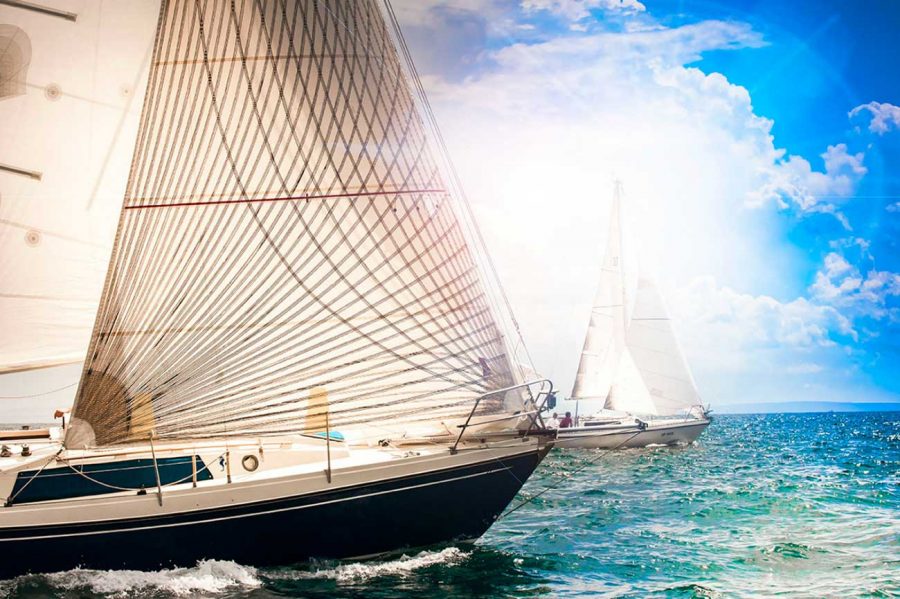
Croatia offers a lot of activities to do for all ages and all year round. The country is rich in history, natural beauty, ancient towns, wonderful architecture, pristine beaches, and rugged mountains.
Foodies will enjoy exploring restaurants in Croatia, especially in Istria, Zagreb, Dubrovnik , and Split . Croatia produces some of the world’s best extra virgin olive oils (if you wonder why you should care, read Tom Mueller’s book Extra Virginity: the sublime and scandalous world of olive oil ). There are lots of places where you can go for an olive oil tasting , and learn how to distinguish the real stuff from the crap. A visit to a winery is a must in Croatia, particularly in Istria.
Tisno on the island of Murter, Novalja on the island of Pag, and the town of Hvar offer 24 h partying for the young and restless.
Outdoor enthusiasts will love Omis, Paklenica, and Cicarija. They all offer an endless choice of adventures to enjoy.
We’ve written a full post on things to do in Croatia . You can also check the Get Your Guide website for a full list of tours and activities in Croatia.
Itineraries
We are often asked to suggest or revise a proposed itinerary for Croatia. So here are a few things to bear in mind when planning your Croatian itinerary.
Although the country is relatively small, it’s long (from Umag in the northwest to Dubrovnik in the south there is over 700 km), and it’s not that quick to travel from north or west to the south.
If you plan to visit Croatia for less than a week , we highly recommend you pick up one destination and stick to it. Do day trips from there , but don’t pretend to visit the entire country in less than a week. Also, in July and August, you need to take into account possible traffic jams, and congestion on the roads, as well as queues for ferries.
If you stay a week or ten days , you can include a few highlights in your itinerary, like Zagreb, Plitvice, Split, and Dubrovnik.
Suggested week itineraries
a | Zagreb – Plitvice Lakes – Split – Hvar – Dubrovnik
b | Dubrovnik – Peljesac Peninsula – Korcula – Split – Zagreb
c | Zagreb – Plitvice Lakes – Istria
Suggested two-week itineraries
a | Zagreb – Opatija – Istria – Plitvice Lakes – Zadar – Krka Waterfalls – Split – Brac Island – Korcula – Peljesac – Dubrovnik
If you prefer to join a group tour, we highly recommend checking tours proposed via Tour Radar. They have a classical coach and boat tours, but they also have a great choice of adventure, cycling, and various themed tours.
Here are a few suggested group tours found on Tour Radar:
Croatia & Adriatic Cruise
This 11-day tour gives you the best of continental Croatia and the Adriatic. The tour starts in Zagreb, and ends in Split, with a visit to 10 other destinations in between. We like that this tour takes you to the Peljesac Peninsula, one of our favorite regions in Croatia. You also get to see Korcula, Hvar, Elafiti Islands and Mljet islands. The small cruise ship can fit 30 passengers in air-conditioned cabins.
Check availability and prices!
Best of Croatia and Slovenia
This 11-day discovery coach tour starts in Zagreb and ends in Dubrovnik. However, it’s packed full of exciting destinations in Croatia, and neighboring Slovenia including Ljubljana, Bled, Rovinj, Opatija, Plitvice, Trogir, Split, and Peljesac peninsula. You will get to see many great destinations in a short period of time, while still having ample time on your own. The tour also includes one special “Be my guest” dinner where you get a chance to experience a traditional meal with a local family.
Croatia Island Hopper from Split
This 8-day island hopping tour operated by G Adventures is one of the most popular tours in Croatia on Tour Radar. The boat tour starts and ends in Dubrovnik with stops in Hvar, Mljet, Korcula, Brac, and Solta.
Cycling the Dalmatian Coast
A small group tour takes you from Split to Dubrovnik in 8 days on your bicycle. The tour provides accommodation, meals, and transportation. You’ll get a chance to test your cycling abilities in Hvar and Korcula Island, along the Peljesac peninsula and Dubrovnik. The tour is intended for all levels of cyclists. The scenery along the route is lovely.

When you think of shopping, Croatia doesn’t necessarily come to mind. However, there are a couple of awesome things to buy in Croatia.
Croatian artisan olive oils are some of the best in the world. Croatian design and concept stores are also making momentum; check the Take Me Home store in Zagreb or Prostoria in Rovinj for some original souvenirs, accessories, unique clothes, bags, and jewelry.
We’ve written a full post on the subject: Croatian souvenirs: fun, cool, and authentic . Don’t forget a high-end tie store – Kravata Croata .
Open markets , where you can buy fresh produce, are popular in Croatia. The largest national supermarket chain is Konzum. Other popular supermarkets in Croatia include Lidl, Kaufland, Plodine, and Spar.
Supermarkets are open throughout the day, Monday to Saturday. On Sunday some shops are open all day, particularly in shopping centers, while downtown shops often close at 1 pm or 3 pm. In summer, along the coast, shops are open seven days a week, and often as late as midnight.
Is Croatia a safe place?
Croatia is a very safe country with very little street crime and almost no violence. However, as everywhere, take care of your belongings, especially when using public transport.
Land mines are still present but in remote areas where tourists rarely visit anyway.
Croatia travel guide: Internet
The Internet in Croatia is widely available. WiFi coverage is pretty good, with many towns offering free wifi hot spots at prominent places in a town. Most of the private accommodations, as well as hotels, and even campsites, offer a free WiFi internet connection.
However, the broadband internet in Croatia isn’t as fast as you are perhaps used to. At least it’s not as fast everywhere in Croatia. In bigger towns, the internet is fast, easily available, and reliable. According to Speedtest.net , Croatia has the 22nd fastest download speed for mobile internet in the whole world. But, the fixed broadband is pretty slow (Croatia takes 89th place on the global scale).
The average internet download speed in Croatia in March 2023 was 71,16 Mbps for mobile, and 45,61 Mbps for fixed broadband.
Roaming charges
Since the summer of 2017, roaming surcharges within EU countries don’t exist longer. This means that, if you are with any EU mobile provider, you will pay the same prices for data, calls, and SMS as you would pay back home.
How free is free? You need to check with your provider what’s the amount of roaming data within the EU. For example, we have a flat rate for internet data in our mobile phone rate package. But, when we spent two months in Spain in the winter of 2022, we realized that we have only 10 GB of data free of charge in other EU countries.
So while the roaming data is free in the EU, the free data isn’t unlimited. Anyways, 10 GB is pretty enough, unless you are binge-watching Netflix shows for hours at times. I hope you don’t do that on vacation!
However, roaming charges for other countries are still pretty high. You can purchase some of the mobile operators’ packages either in your home country or in Croatia.
In Croatia, Telemach sells 10-days unlimited surfing for less than 11 € while T-com sells 7-days unlimited surfing for 11€ . It includes nano, micro, or SMS card. You can buy these packages at gas stations, newsstands, T-com or Telemach centers, and Croatian post offices.
The Airalo eSim packages are a good alternative to local SIM providers. We always use Airalo when traveling abroad.
Is Croatia part of the EU & Schengen visa regiment
As of January 1, 2023, Croatia is a member of Schengen, and thus it is a part of the Schengen visa regiment. This means that there aren’t border or customs controls between Croatia and other Schengen member countries for people crossing the borders by road, rail, or water. However, border and customs controls at the airports will stay in place until March 2023.
If you have a valid Schengen visa, you don’t need a separate visa to visit Croatia and vice versa. This also means that visiting Croatia and the days spent here will count toward 90 days maximum stay within 180 days for your Schengen visa.
When crossing into and out of the non-EU, and non-Schengen countries, you’ll still need to show your documents at the border, and vice versa. These include Bosnia and Herzegovina, Serbia, and Montenegro.
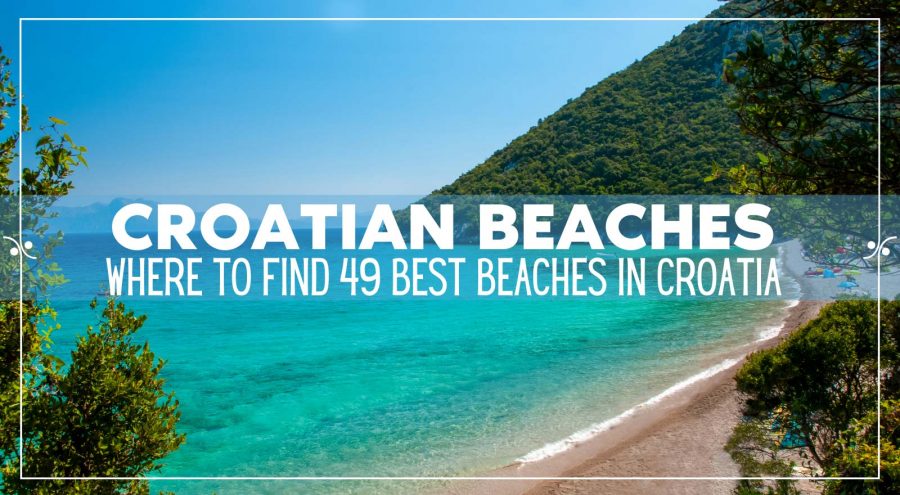
The sea and sun are still two main reasons for so many people to visit Croatia. Croatia has over 6.000 km of coastline and over 1.000 islands. The two most popular coastal regions are Istria to the north and Dalmatia to the south.
The Croatian coast is mostly rocky with pebble beaches mostly formed in coves and bays. Makarska Riviera, located in central Dalmatia, offers the most beautiful beaches in all of Croatia . Perfectly round and small pebbles that feel almost like sand but that don’t stick on you forever.
The sea is limpid and clear, you can often see the seabed from far away. My in-laws have a seafront property in Komarna , in southern Dalmatia, and I can see the fish swim in the sea from the third floor of their house.
So, if you search for that perfect sandy beach, you might get disappointed with the beaches in Croatia. Although there are some sandy beaches here too, they are simply not a Croatian thing.
In Istria, the coast is a bit rougher than in Dalmatia, and pebbles are rare to find. However, the beaches here feel less crowded, due to the well-preserved coastline.
Parking in Croatia
If you travel to and around Croatia by car, you might wonder about the parking situation in Croatia. Generally speaking the majority of hotels and private accommodations offer a parking spot free of charge.
However, bear in mind that city centers are usually car-free zones or have limited car traffic. If your accommodation is within the city center enquire about parking before booking.
There are three types of parking: garage parking, open-air parking lots, and street parking. Expect to pay around 1.1 € to 1.6 € per hour in town centers. However, some parking is more expensive, like parking at Riva in Split which cost 4 € an hour; then, in Dubrovnik, where you will pay for an hour of parking in Zone 0 as much as 10 €.
We talk more in-depth about parking in our destination guides . Don’t forget to check them once you decide on your destination .
Do people speak English in Croatia?
You don’t speak Croatian? No worries, most Croatians speak at least some English, and many speak at least another foreign language. Besides English, German and Italian are the most widely spoken languages in Croatia.
Is Croatia expensive to travel to?
Croatia isn’t a cheap place to visit. It’s more expensive than the neighboring countries, like Bosnia & Herzegovina, Serbia, or Hungary.
Generally speaking, continental Croatia and Zagreb, in particular, keep prices moderate to, I would dare to say, even cheap. However, the coast is mostly expensive, and the prices tend to increase year after year.
That said, if you travel on a tight budget, you can still keep it under control. Stay away from top destinations (visit them but sleep somewhere else), come in the off-season, explore places off-the-beaten-path, forget hotels, choose instead an apartment with a fully-equipped kitchen and prepare your own meals, ask locals for good value restaurants, etc.
Check our budget tips for traveling in Croatia , and also a post on the total Croatia trip cost .
Tipping in Croatia
People often ask us what’s tipping etiquette in Croatia. In short, tipping isn’t necessary but it is widely appreciated and accepted.
The majority of Croatians, in bars and restaurants, simply round up the bill. We on the other hand, out of habit, always leave around 10%, and only if we are satisfied with the service.
If you are taking a group bus tour, someone will usually collect the tips for the driver and the guide at the end of the tour. Here, usually, people chip in on what they feel is appropriate.
What time zone Croatia is in?
Croatia belongs to the Central European Time Zone, meaning it is one hour ahead of GMT (Greenwich Mean Time), and two hours ahead of GMT when daylight saving time is observed.
Daylight saving time makes us move our watches one hour ahead. It takes place from the last Sunday in March until the last Sunday in October.
Find here the time differences between some major towns when compared to Croatia:
- Barcelona: 0
- London: – 1 hour
- Montreal: – 6 hours
- New York City: -6 hours
- L.A.: -9 hours
- Chicago: -7 hours
- Tokyo: +7 hours
- Sydney: +8 hours
If you are traveling from overseas, you will certainly experience jet lag when visiting Croatia. You can check this no-jet lag homeopathic remedy to ease your symptoms.
How much is VAT in Croatia and is it refundable?
At the moment, VAT in Croatia is 25% for the majority of products. If you are a foreigner without permanent or temporary residence in Croatia, you can ask for a tax refund for all purchases above 100 €.
Ask the salesperson for the tax-free form at the moment of purchase. Fill it up, get it stamped right there, and then again at the airport, or at the border by a customs officer. You have six months from the purchase date to claim your VAT return by mailing it back to the shop where you originally bought the item.
Another way to achieve a VAT tax refund is to look for shops that are part of the Global Blue Tax-Free service . They all have a sign displayed in the window along with the working hours, and credit cards that they accept. The procedure is similar (fill up the tax-free form and get it stamped at the shop, and at the airport), but the refund is quicker and can be obtained already at the airport, in Global Blue’s office.
Croatia plugs, adapters, and converters
Croatia uses 220V, 50 Hz frequency, and standard European type C & F plugs. Both are similar plugs with two round prongs with 19 mm between the two.
If the plugs of your devices are different, you will certainly need an adapter in order to charge them. You can find one here.
While adapters will help you use your plugs in Croatia, converters will help transform voltages from higher to smaller or vice versa. If you need a converter you can easily buy one on Amazon .
Recommended travel guides
- Fodor’s Croatia Travel Guide (we are co-authors!).
- Lonely Planet Croatia Travel Guide
- Rick Steves Croatia & Slovenia
Further reading from our Croatia travel guide
- Croatia Travel Guide: Things To Do In Croatia
- Ultimate Guide To Accommodation In Croatia
- Packing List For Vacation In Croatia
- How To Choose Your Destination In Croatia
- Where to go in Croatia: best places to visit in Croatia
- Car Rental In Croatia
- Driving In Croatia
- Cost of Travel To Croatia
- Croatia On Budget: Money-saving Tips
- Outdoor Activities in Croatia
- 49 Awesome Beaches In Croatia
- Snorkeling In Croatia
- White Water Rafting In Croatia
- 20 Must-Try Foods In Croatia
We hope you’ve found our Croatia Travel Guide useful. Is there anything else you’d like to know? Let us know in the comments below.
Frankaboutcroatia.com is a participant in the Amazon Services LLC Associates Program, an affiliate advertising program designed to provide a means for sites to earn advertising fees by advertising and linking to Amazon.com and affiliated sites. This post might also contain affiliate links to other sites, like accommodation or activities. And if you purchase anything using these links, we earn a little commission with no extra costs for you. Thank you for supporting our blog! Read full disclaimer here.
Home / Croatia Travel Tips / Croatia Travel Guide: Things To Know Before Traveling To Croatia
48 thoughts on “Croatia Travel Guide: Things To Know Before Traveling To Croatia”
Love your blog. A lot of useful info.
We’re thinking of coming in mid-October to November 4. Will tourist sites still be open in that first week of November?
Thanks for your input.
I am Croatian and I must say, epic post!
Hi we plan to travel to Croatia in July 2020. I am trying to convince my husband to rent a car but he is worried about driving in a foreign country. Can you give any opinion on this topic? I am more worried about the inconsistency of travelling by train and having to wait and plan with the transportation schedules, as well as carrying luggage everywhere.
Hi Marcia, this is the exact reason why we suggest that you take your charges in Kuna. Because your credit card doesn’t charge you a transaction fee. If you take it in your home country, then Croatian bank will charge the transaction fee, or rather they will use the less favorable exchange rate, so they make money. Just keep it in the local currency, even more so if your credit card doesn’t charge these fees. Hope this helps.
You stated that it is probably best to request credit charges be made in kuna, rather than US currency. If my credit card does not charge a foreign transaction fee, would that still be true?
Firstly, congratulations on your brilliant web site, so helpful to first time visitors to Croatia. We are staying on Korcula at the end of September, would you recommend booking the ferry, and if so which is the best web site to use?
It all depends. Zagreb is ok for a day or two, Split for two or three, the same goes for Dubrovnik, or Rovinj.
Thanks for all the info. We are coming from Canada for a 10 day stay beginning of July. We fly in & out of Zagreb but want to see Split & go up north for a bit too to see some family birthplaces. How much time do you recommend for each city stay & absolute must sees while we are there?
Epic post Frank! I’ve spent the last couple of summers sailing around Croatia and think it’s incredible. Favorite island is most probably Kos. Have some great memories of playing cricket with some of the locals. Cant wait to get back!
What is the best option to travel from Zagreb to Venice
This was amazing and super helpful! For first timers going to Croatia (about a week) where do you recommend going? Was planning for a July trip, but your post sort of scared me to be mentally prepared ha!
Do you ever work with readers to come up with an itinerary?
This was super helpful! Thanks!
Great info…thank you very much. My Bride and I will be in Croatia from Sep 11 to Sep 20. We will arriving in Dubrovnik and leaving from Zagreb. We are planing to stay 3 days in Dubrovnik, 3 in Split and 2 in Zagreb. Would you recommend any changes to this and what places around those three cities are a must? We will have a car. We love waterfronts, small (Mom & Pop) licensed restaurants, some beach time and sightseeing. Any suggestions would be appreciated. Mário & Fatima Sousa…….Mississauga, Canada
Hi Frank! Thank you for all of the info. I am a bit overwhelmed. My husband, 2 adult daughters and I are planning our trip to Croatia in late May/early June 2019 for a week to 10 days. We love adventures! What itinerary would you suggest?
Great info, thank you. We are planning our trip for Sept/Oct 2019, touring around Croatia and neighboring countries for 2 weeks. Planning on staying just outside of Zagreb, Split and Dubrovnik. We are travelling from Canada, renting a car and booking Apartments and BnB’s. Wondering if there would be any significant differences between September and October for weather, costs, tourism, crowds, etc. Thanks in advance.
Your blog is really helpful.
We are from India and we are planning to visit croatia in the last week of february, 2019. And we are majorly looking to cover North (Alps, Gorski Kotar) and South (the beaches and other popular places).
Since we are not fully aware of the weather conditions in Feb, I wanted to ask whether it is decent enough to travel in feb? without any complications brought in by weather?
I am planning a week-long trip to Croatia in September with 8 young adult family members. Is it best to go from city to city staying in a hotel, rent a villa one place and do day trips or rent a boat and go down the coast? Amy
In Septemeber everything should still be open. No worries.
I always go with 10% when in restaurants. As for the rest, you give what you feel. Normally, you collect from the entire group and you give it at the end of trip if you were happy with the service. I am not aware that there is a tipping rule for drivers and guides as for how much should you tip. You basically tip what you feel they deserve.
There is plenty things for kids to do. If I knew where exactly you go, I could have provided more info
Porec, Rovinj, Bol, Brela
thanks for sharing, Lynn! Great clip, it shows well what to expect. However, most of the video is made in the northern part of the road, between Rijeka and Zadar.
Thanks for reading, May! Hope you had a great time in Croatia.
Haven’t been there, Kass. Sorry!
great! let us know if we can help with anything
Have fun, and drop us a line if you have a question
You can stay in Zagreb for a day, Plitvice either for a day or in transit from Zagreb to Split, Hvar for 2-3 days if you want to visit the entire island; otherwise book an island tour from Split. So if you only want to stay in two or three of these towns, make it Zagreb, SPlit and Dubrovnik, because they are best located to do day trips elsewhere.
Thanks for all the great advice. For a two week holiday, can you suggest which towns to stay in? I’d love to visit Zagreb, Plitvice, KrKra, Split, Hvar and Dubrovnik. I’d like to stay in two or three places and do the rest from there.
Great blog. Thanks for the info. We – fellow Canadians – plan to spend Jan to Mar 2019 in Croatia, basically in the Trogir area. We’d appreciate any further thoughts you’d wish to pass on.
I would like to know about tipping in Croatia for bus drivers and tour guides. Our travel club is bring a group to Croatia in May 2019.
Hi..We are planning to visit next year..Have children who will be agedelivered 11 and 13..are there things for them to do?
Hi there. Thanks for all the information. So useful! Question re timing. I would head over in the September holidays to beat the crowds but want to check most of the bars etc are still open all year round. Sometimes in countries like Japan where we lived for 8 years they are very strict on seasons and so going outside (even slightly) means u go to a great beach bar only to find it closed. Thanks
Thank you for your blog and the very valuable information you provide. My family (a total of 16 of us) are visiting Croatia at the end of this month. 3 of us are from BC Canada so it has been even more exciting to hear what you have to share.
Hello Just found your blog and its just what i,m after, so much information. I am visiting Croatia next month with my son, we are staying near Trogir. I was going to take kuna but you say most places take Euros? I have rented a car and plan to travel around a bit. Thanks Karl
I am watching the World Cup finaland cheering for the team! I decided to visit the beautiful country in 2019 with my family. Look forward to it!
We’re going in September to visit Lokve, where my husband’s people are from. Have you been there? Can you tell us anything about it? Thanks!
We are currently in Croatia and it is just beautiful. The water shades from turquoise to deep blue and the rocky hills provide a beautiful contrast in the landscape.
We stayed rather in the south and we took the E65 coastal road. If you have time to spare and you are not in a hurry, I recommend this road compared to the highway. I wish I could describe it but I will never be able to narrate the full picture, so I made a short clip on our journey that I wish to share.
It is on YouTube — https://www.youtube.com/watch?v=AKEiQI4NOos&t=60s
Hello, very nice blog of yours! I was wondering what area you would suggest a family of four to stay in. A place that is child friendly and filled with entertainment is something I had in mind, but would like to know what places wold exactly fit my needs. Thank you!
Hi there, me and my husband have been trawling the internet looking for ideas of where to visit with our two children (2 & 9 years) and we’ve stumbled upon your AMAZING site. It’s literally a godsend!! Please could i pick your brains and ask where you would best recommend? We love the beach, history and lovely food!! Any advice would be so gratefully recived!
Hi, loving the information on your website. We are coming to Croatia for 2 weeks from the 6th of September, and are wondering if you think we need to pre-book accommodation or should we be able to book a few days in advance? Cheers, Karen
Hi Frank, just found your website and love it. My husband and I will be vacationing from US to Croatia from Sept. 5 to 19. First time. Don’t plan on seeing the entire country on this visit but would like a few highlights. We will land in Split and leave from Dubrovnik. Are there any and can you recommend a private tour guide company?
Hi – so glad I stumbled upon your wonderful post ! We are thinking of travelling to valamar island in July . I am concerned it will be very busy and hugely commercial ? X
Hi Colleen, if you would like to receive our newsletter, please sign up for it through the website. Let us know if we can help with anything regarding your upcoming trip to Croatia.
Frank, Please add me to your list. I plan to visit this wonderful country in 2019. Colleen
Hi. Will be in Croatia July 17-31. We’d love to book a 3-5 day sailing or yacht trip around the islands. Possibly start and end in Split. Do you have any recommendations?
I have been to Croatia with my mum last year and this charming country won our hearts, Frank! I still haven’t crossed Dubrovnik off my bucket list, but your post was truly inspiring. I guess now I have plenty of more reasons to explore magnificent Croatia!
Really enjoy your detailed travel guide! My gf and I (early/mid 20’s) are traveling to Dubrovnik, Croatia next week and we plan to rent a car for about 10-11 days. Our plan is do explore the coast of Croatia, spend some time in several cities and eventually make our way to Slovenia where we’ll return the car.
Do you have any advice with regard to having the “luggage” of the car, and doing trips to islands and etc.? We want the car to have the flexibility, but we may not use it EVERY day. We also don’t want to try and pack too much into the week and a half we are in Croatia. There is the potential we stay longer, but we thought it may be neat to make our way up to Slovenia, spend a few days there then make our way to Austria for a week.
Any thoughts would be greatly appreciated.
Hi guys, we love your blog and passion for Croatia. We are a family run business, that runs 3 adventure bases in Croatia. We only employ local staff and follow green responsible policies. We would love to talk about working with you. Whats your best mobile number?
Leave a Comment
Flight search
- Adults Remove adult 1 Add adult
- Children Aged 2-11 Aged 2 to 11 Remove child 0 Add child
- Infants In seat Remove infant in seat 0 Add infant in seat
- Infants On lap Remove infant on lap 0 Add infant on lap
- Premium economy
Cheap flights from Dubrovnik to Toronto
Good to know, popular airports near dubrovnik.
- Dubrovnik Airport (DBV) Dubrovnik 30 min 16 km
- Split Airport (SPU) Split 3 hr 11 min 176 km
- Zadar Airport (ZAD) Zadar 3 hr 41 min 273 km
Popular airports near Toronto
- Toronto Pearson International Airport (YYZ) Toronto 38 min 20 km
- Billy Bishop Toronto City Airport (YTZ) Toronto 35 min 3 km
- John C. Munro Hamilton International Airport (YHM) Hamilton 1 hr 6 min 69 km
- London International Airport (YXU) London 2 hr 4 min 158 km
Frequently asked questions about flying from Dubrovnik to Toronto
Search more flights, popular trips from dubrovnik.
These suggestions are based on the cheapest fares to popular destinations in the next six months.
Prices include required taxes + fees for 1 adult. Optional charges and bag fees may apply.
- Athens RUB 22,837 Aug 24 — Sep 6 1 stop 8 hr 35 min Volotea
- London RUB 41,235 Aug 24 — Sep 6 Nonstop 2 hr 55 min easyJet
- Vienna RUB 15,354 Aug 24 — Sep 6 Nonstop 1 hr 20 min Ryanair
- Madrid RUB 54,170 Aug 24 — Sep 6 1 stop 19 hr 40 min Transavia
Find flights from Dubrovnik to anywhere
More places to fly.

IMAGES
COMMENTS
Activities: €5-25 / day. Entertainment: €5-20 / day. All in all, you can easily visit Croatia with a budget of about €55-275 per day if you find some ways to cut costs on some days. Make sure you also factor in the cost of a travel insurance policy from a provider like Heymondo which offers flexible insurance policies.
A week in Croatia costs around $2,400 for two people: Average Accommodations cost: $50 a night. Average Flight Cost: $700 per person. Food, Drink & Activities: $75 per person, per day. Transportation: $20 a day. Total Cost: $2,400. Of course, there are a bunch of factors that will affect your individual costs.
All of these Croatia travel prices are calculated from the budgets of real travelers. Category Cost Accommodation 1 (Double Occupancy) € 98 ($ 107) ... While meal prices in Croatia can vary, the average cost of food in Croatia is $32 (€29) per day. Based on the spending habits of previous travelers, when dining out an average meal in ...
Here are some of the typical transportation costs you can expect to run into while in Croatia: Bus from Dubrovnik to Split: €22,10. Bus from Zagreb to Zadar: €11,90. Bus from Zagreb to Plitvice Lakes: €14,90. Bus from Zagreb to Pula: €26,20. Ferry from Dubrovnik to Hvar: €45. Ferry from Dubrovnik to Brac: €45.
Money in Croatia. Before we get into the details of Croatia prices, you should know that Croatia joined the Euro on January 1, 2023. This means that the official currency of Croatia is the Euro.. Croatia has long been a cash based society, but since I moved here in 2014, the country has made great progress toward accepting cards at many locations.
The amount of money you'll need in Croatia largely depends on your travel style and the locations you choose to visit. During the high season, solo travelers can expect to spend around €1.480 ($1.630, £1.260) for a 7-day stay in Croatia, while couples should plan for approximately €2.330 ($2.560, £2.000).
The high-end price for 4 people to visit Croatia for a week is $8,096-$23,642 ($1,157-$3,377 per day) Food, Travel, and Sightseeing: $275 to $564 per day for four people's daily expenses. Flights: $4,977 to $12,752 for first class. Lodging: $199 to $399 per night for two 4 or 5-star hotel rooms. or $584 to $1,157 per night for a preferred ...
Costs of Traveling in Croatia. Travel on a budget in Croatia, from $580 − $730 USD weekly per person, mid-range $1390 − $2740 USD, and high-end from $2660 − $4160 USD. However, costs depend on factors like accommodation, transportation, and activities. We did not include flights. Check flight prices here
Croatia boasts an extensive public transportation network that includes buses, trains and ferries - all offering reasonable fares. Buses are often the quickest way to get around due their frequency and extensive routes covering even remote areas; single tickets usually range from $1.5- $7 Euros.
Hostel dorm bed: €35 per night. Basic room for two: €75 per nigh. Self-catering apartment for two: €95 per nigh. Ticket on a city bus: €0.50-2.90. Coffee: €1.60-3. Sandwich: €4. Dinner for two: €68 for two courses. Beer at the bar: €4 for a half-liter of Croatian draft beer. Breakfast slice of burek: €3.30.
Day trips: Expect to pay around €40 per person for a round-trip ticket. Local transportation: Croatia's cities and towns are generally very walkable, otherwise public transportation such as trams and buses are an economical choice, with a one-way ticket typically costing around €1.50.
Take a look at these average Croatia prices for typical everyday food items compared to restaurant eating. Markets: 1 liter milk: $1 USD; 12 eggs: $2.75- $3 US; 2 lbs apples: $1.50 USD; ... If you're able to visit in the low season, you'll find Croatia travel costs affordable in terms of accommodation, food, and entertainment. Balance your ...
Use Croatia Ferries for routes and prices. For the 4.5-hour ferry between Dubrovnik and Split, expect to pay at least 38-50 EUR. Flying - Croatia Airlines is the domestic carrier and offers flights between Zagreb and other airports within the country, including Dubrovnik, Split, Pula, and Zadar. Prices are relatively comparable between all ...
The balance worked out well: our travel budget for Croatia ended up being right on target. We spent 13 full days in the country, averaging a total Croatia trip cost of $107.12/day, or $53.56 per person, per day. This added up to a total cost of $1392.61. All expenses are listed in USD unless otherwise noted, and, as usual for our travel budget ...
Prices fluctuate frequently, but fuel costs have been trending upward in recent years. Driving in Croatia can become quite expensive due to the high petrol prices. Fuel costs are even higher on some islands and remote areas. Diesel fuel averages €6.30 ($6.92, £5.43) per gallon.
Travelling in April (low season) will allow you to book a 4-star hotel for between €40 and €80 per night, whereas the same hotel in July or August (high season) can cost you between €200 and €400 per night. Those looking for luxurious hotel stays can pay €500+ per night for high-end hotel accommodation. Whatever your accommodation ...
3 Best places to visit in Croatia. 3.1 Dubrovnik. 3.2 Split. 3.3 Omis. 3.4 Zagreb. 4 Travel insurance for your Croatia trip. 5 Where to stay in Croatia. 6 Best time to travel to Croatia. 7 How to travel around Croatia.
Typical costs for Croatia. Prices in Croatia fluctuate depending on the area you're traveling and the season, with summer being the most expensive time to travel. Accommodation. Dorm bed: €10 - €20 ; Private room: €20 - €30 ; Mid-range hotel: €50 - €80 ; Luxury hotel: €150+ Food. Street food: €5 - €10
Prices in Croatia have changed frequently in recent years, reflecting both internal and global economic and political developments. Croatia's 2013 membership to the European Union (EU) was expected to result in gradual alignment with European norms, including price stabilization. ... Typically, bus fares for intercity travel are affordable ...
Find Croatia flight + hotel deals. Latest prices for 2 travelers/3 nights: 3-star $249; 4-star $372; 5-star $419 | KAYAK. ... KAYAK is a travel tool that searches Croatia trips on hundreds of travel sites to help you find the Croatia package that suits you best. Discover Croatia deals now and book your Croatia flight and hotel today.
More information on our market-leading Croatia Cruises can be found here. Contact our dedicated Croatian specialists today to begin your journey: email [email protected], or call on +1 844 637 9747 in the USA or +44 203 950 9613 in UK and Australia, to start planning your getaway now!
18. Take out travel insurance. Dial 112 for general emergencies, 192 for police, and 194 for an ambulance. If you fall ill in Croatia and you're an EU citizen with a European Health Insurance Card (EHIC) or a UK citizen with a Global Health Insurance Card, you're entitled to a vastly reduced price for health care. But even with this cover ...
Average winter temperatures are around 10°C, with January being the coldest month with daily average temperatures of less than 10°C (50°F). The average sea temperature varies from 12°C (54°F) in winter to 25°C (77°F) in summer. Croatia's interior has a moderate continental climate.
Croatia Travel Tips, Guides and Accommodations. Croatia Travel Tips, Guides and Accommodations. Travel Pockets. Blog; ASIA Bali Hong Kong Japan Thailand; EUROPE Andorra Austria Belgium Croatia Czech Republic England France Hungary Iceland Netherlands Portugal Serbia Slovakia Spain Turkey Ukraine;
Flights from Dubrovnik to Toronto. Use Google Flights to plan your next trip and find cheap one way or round trip flights from Dubrovnik to Toronto.